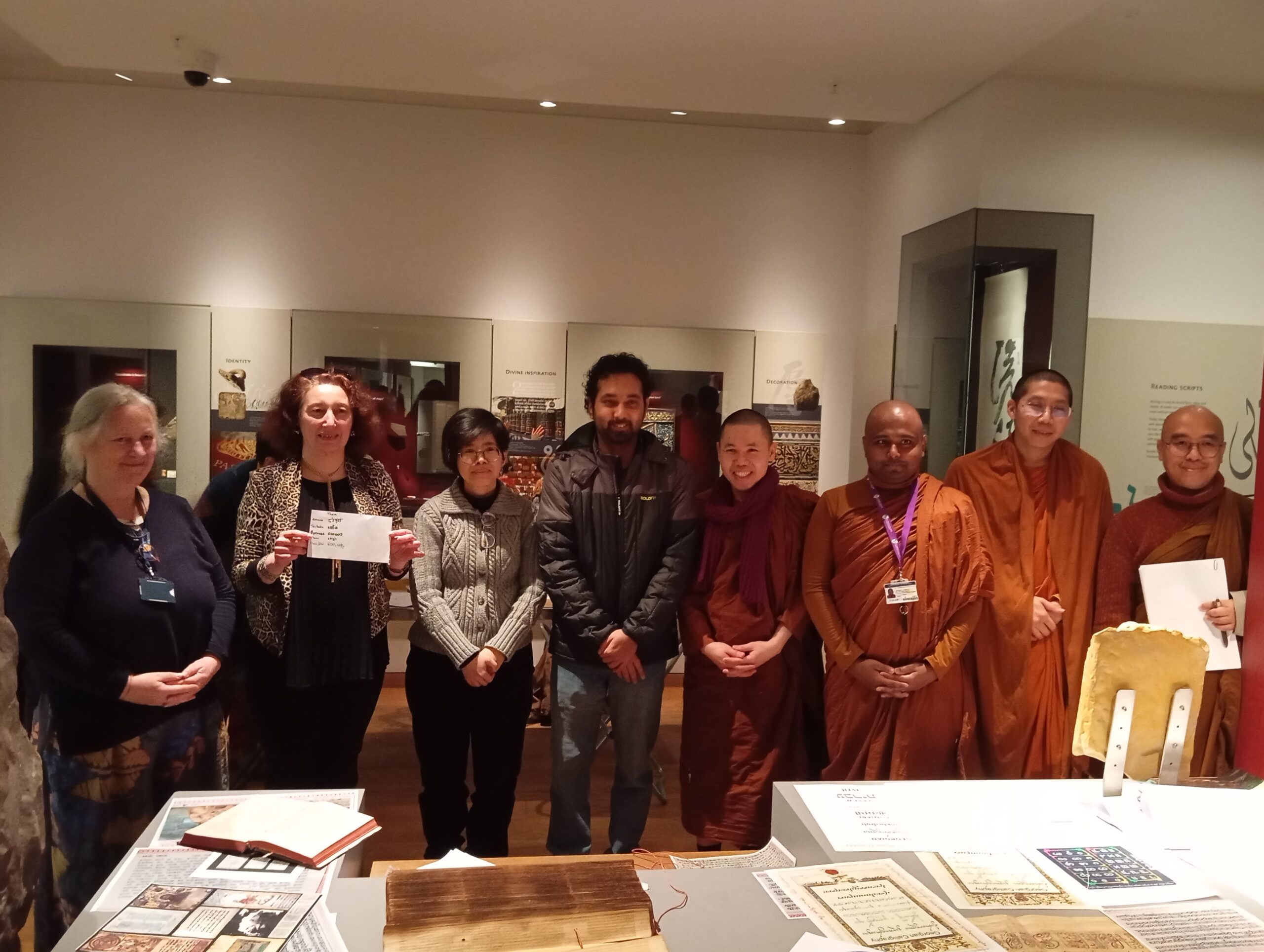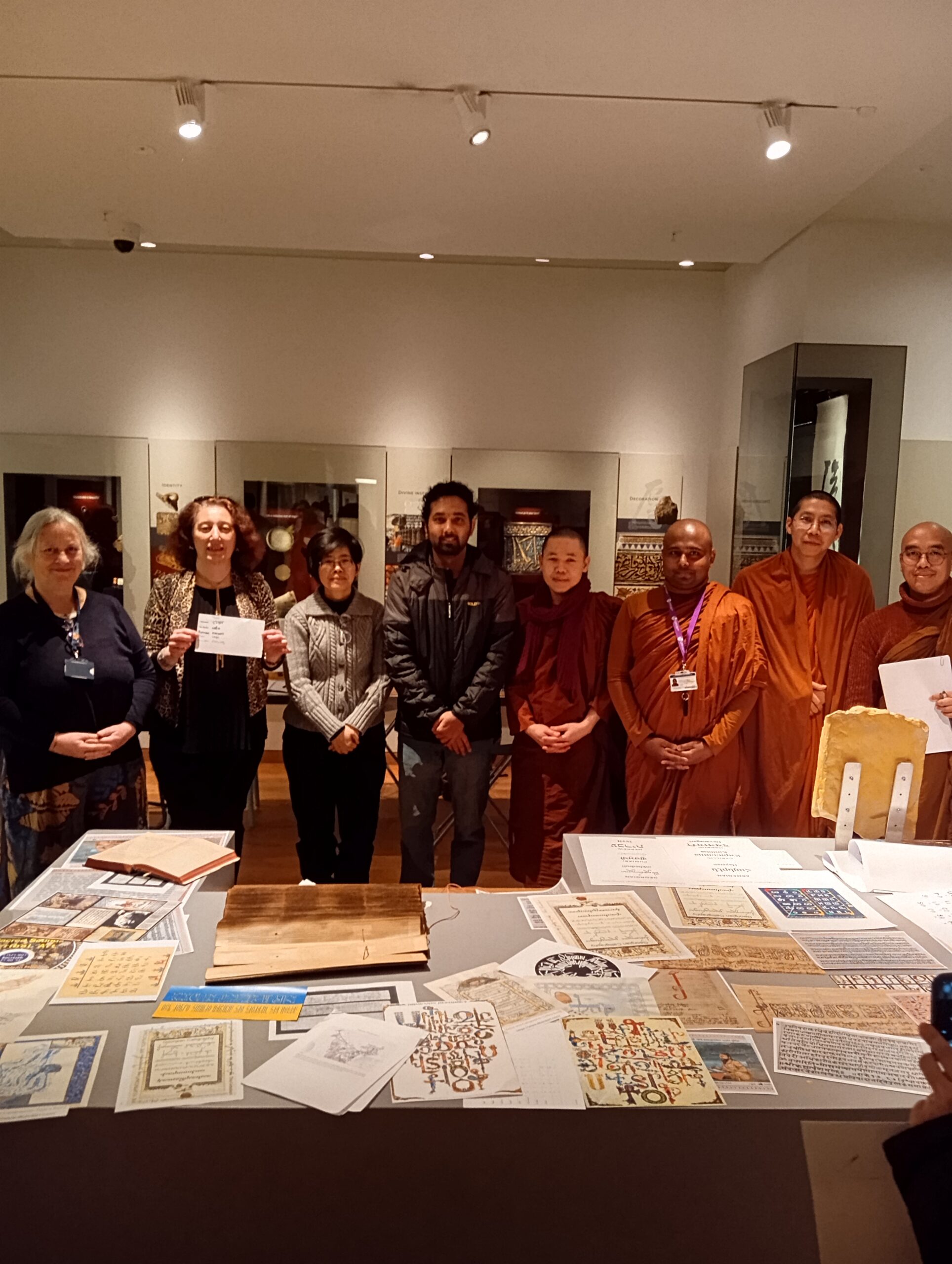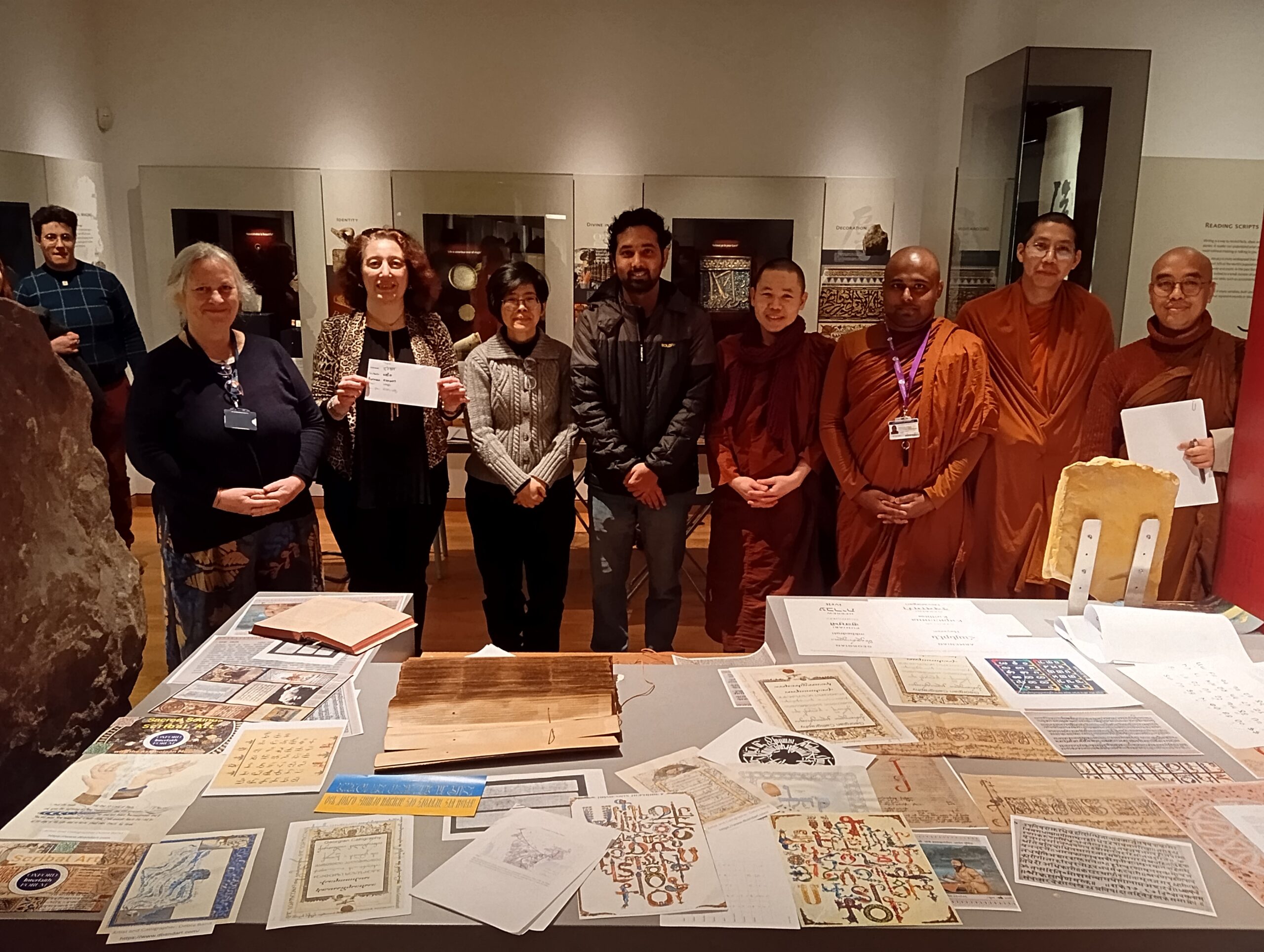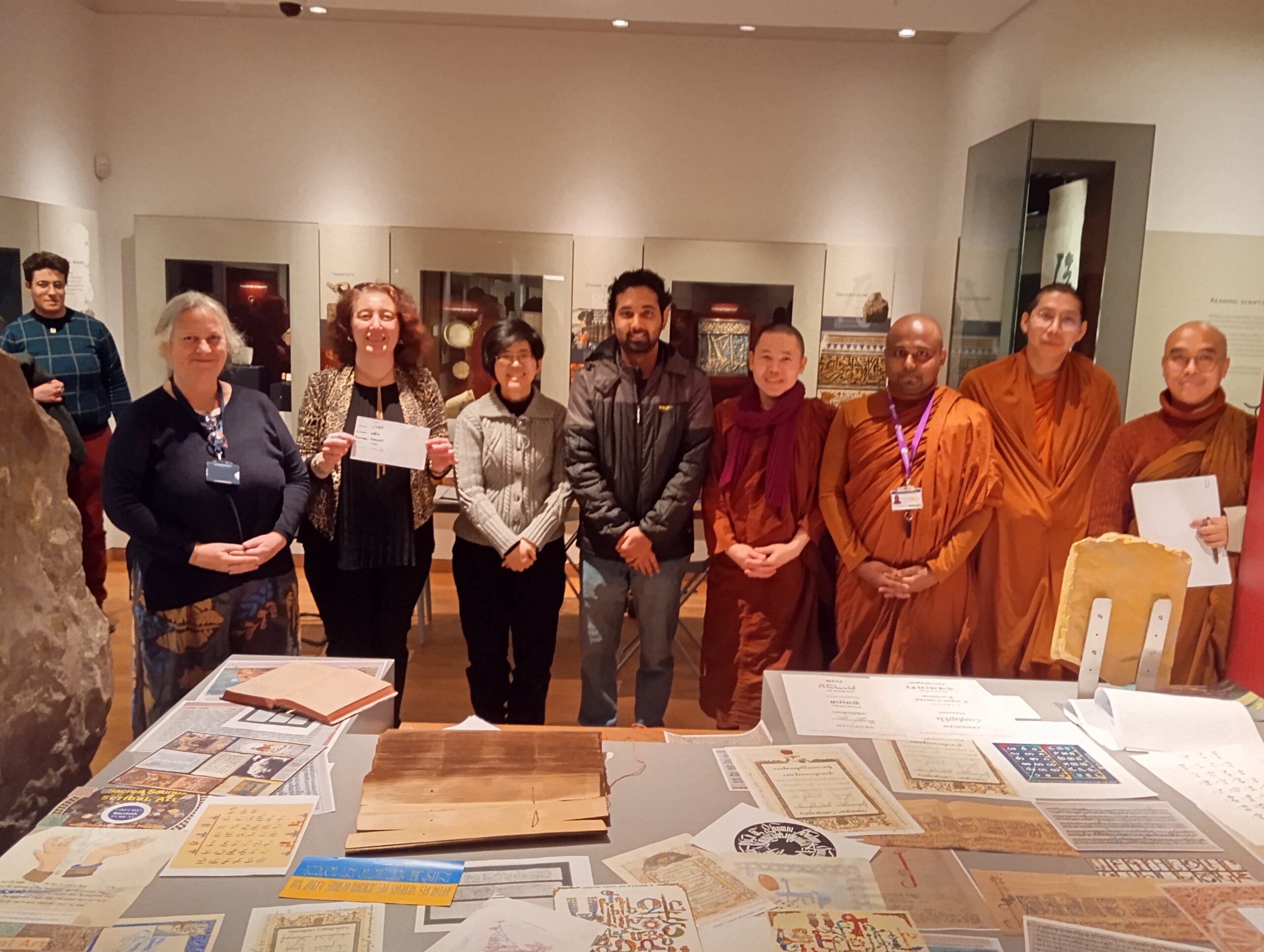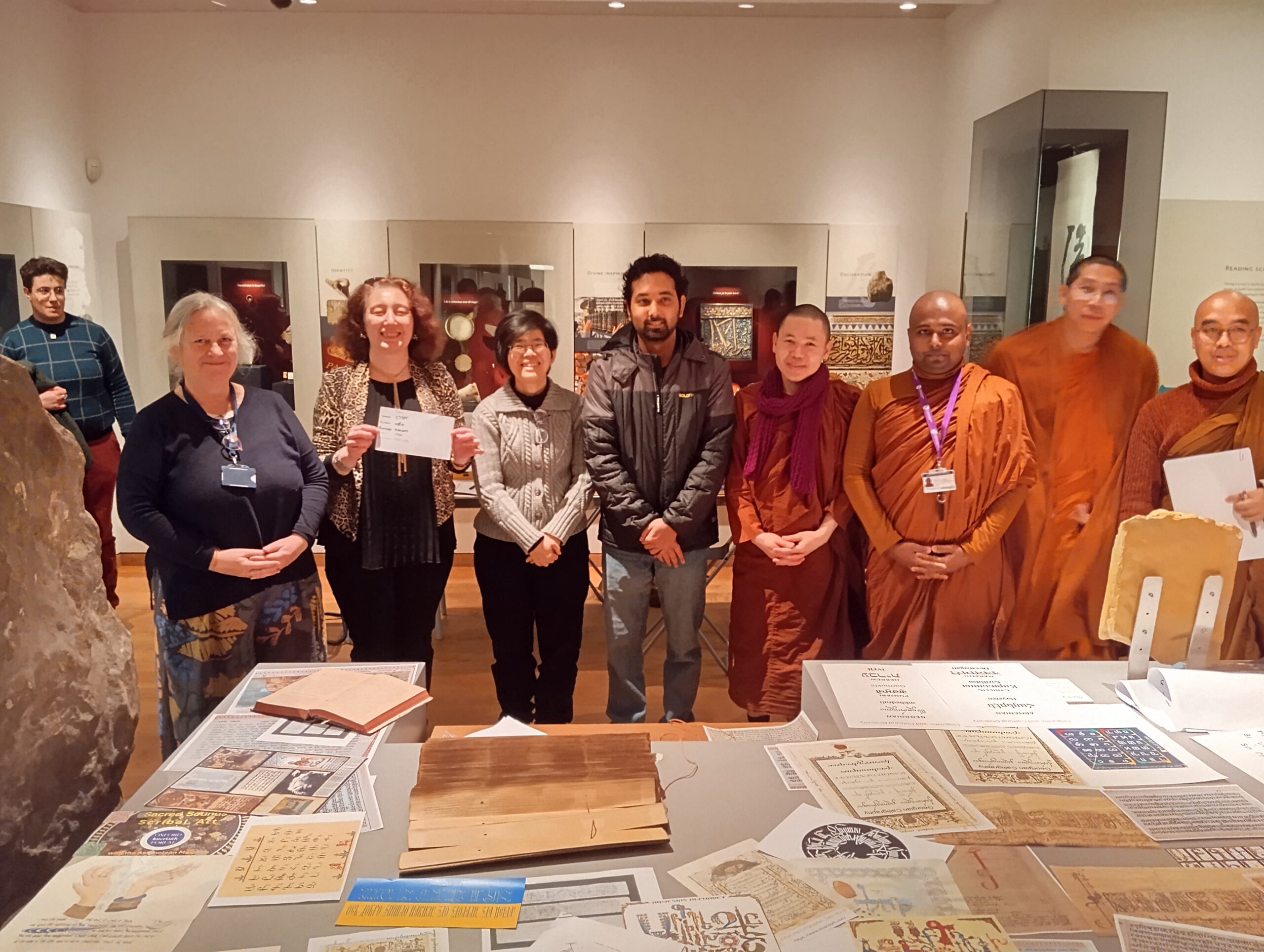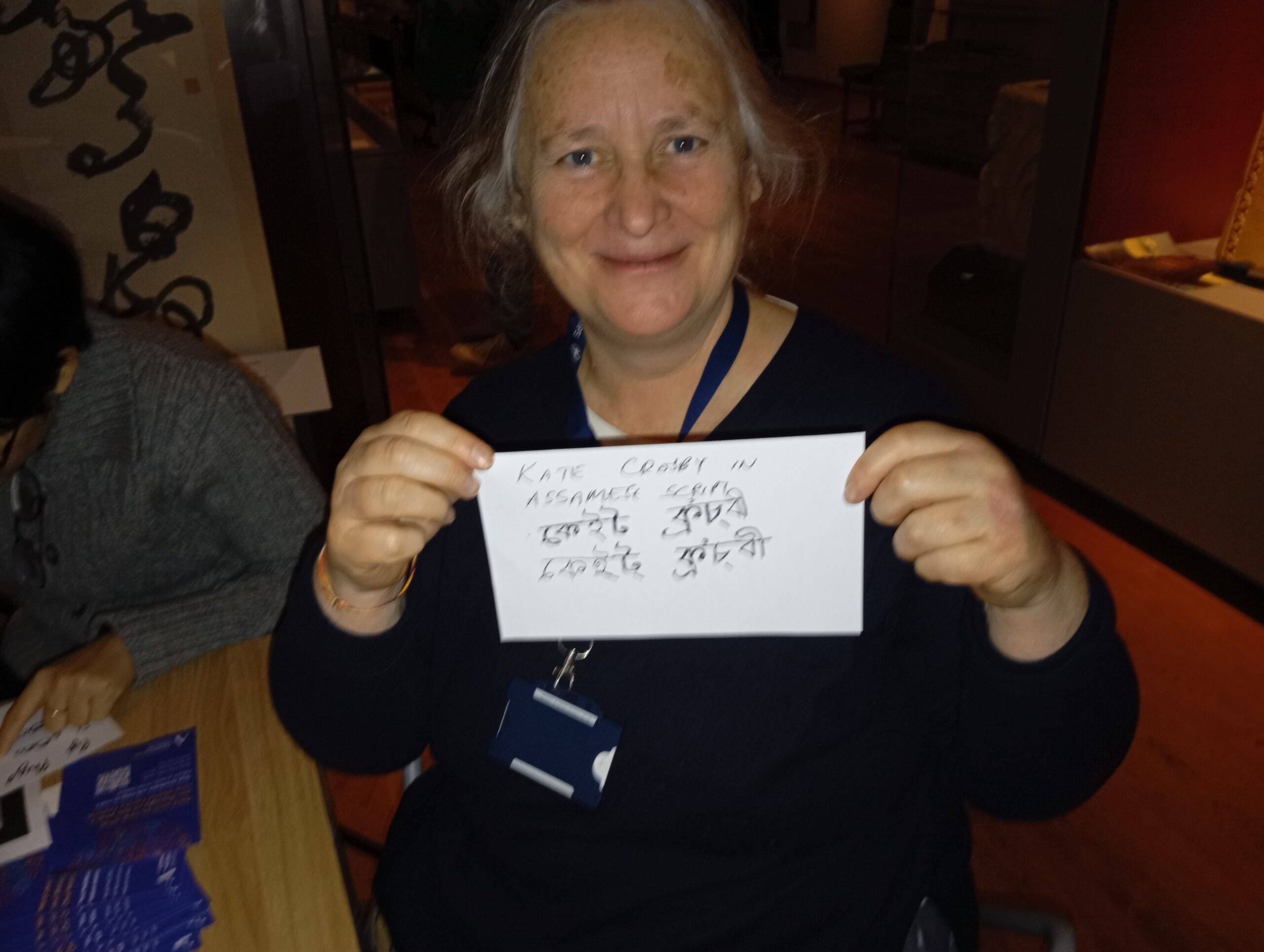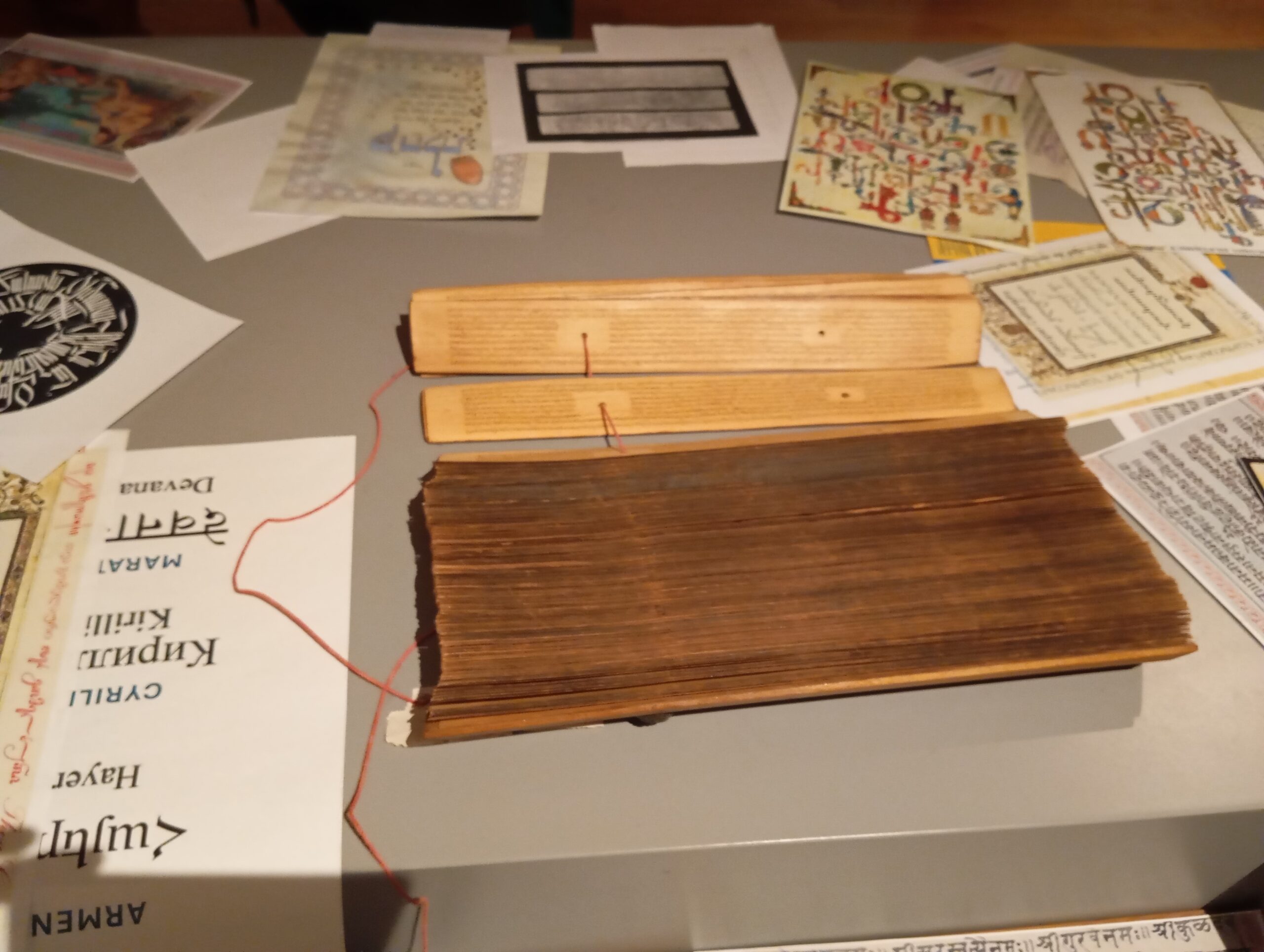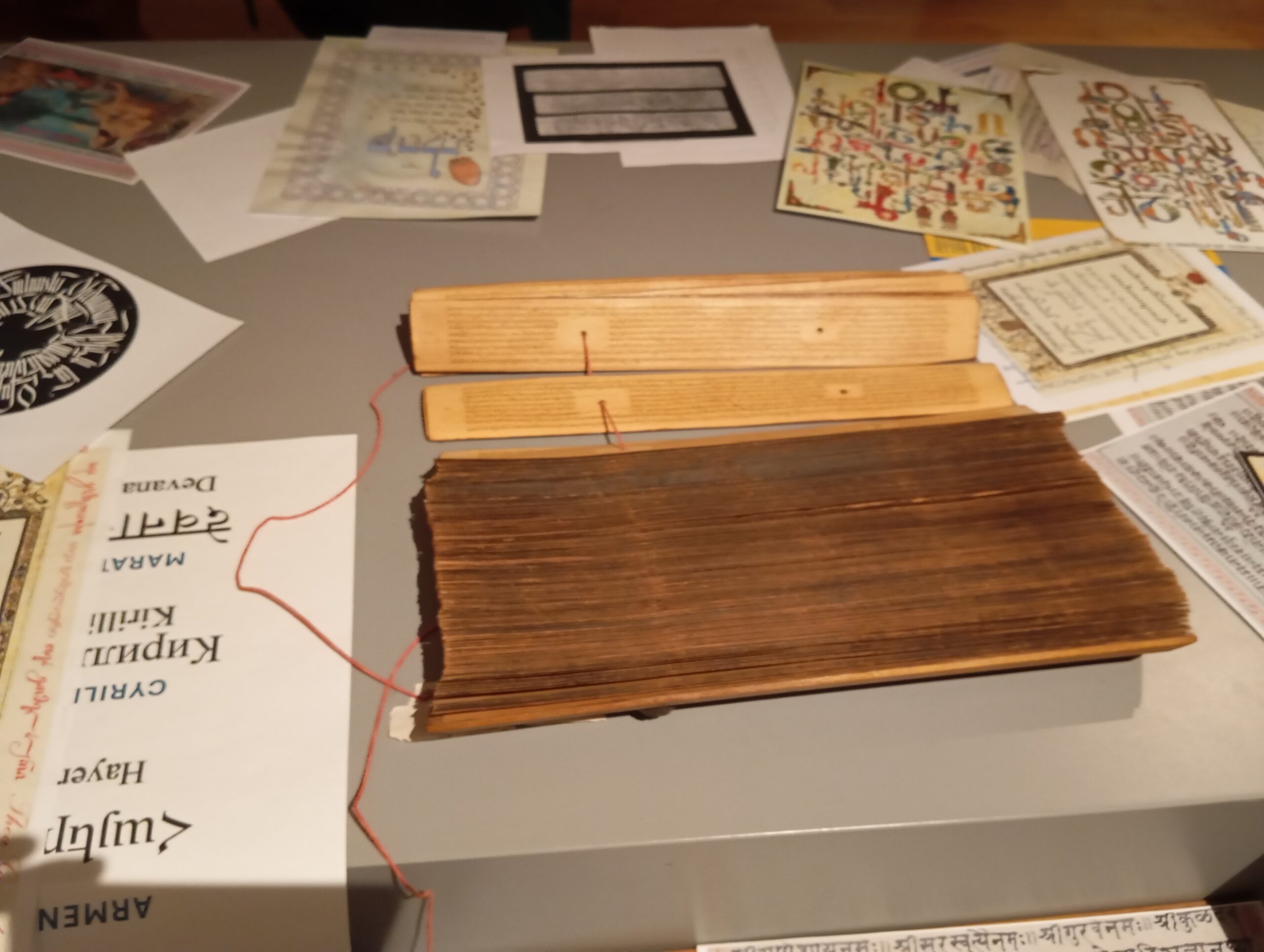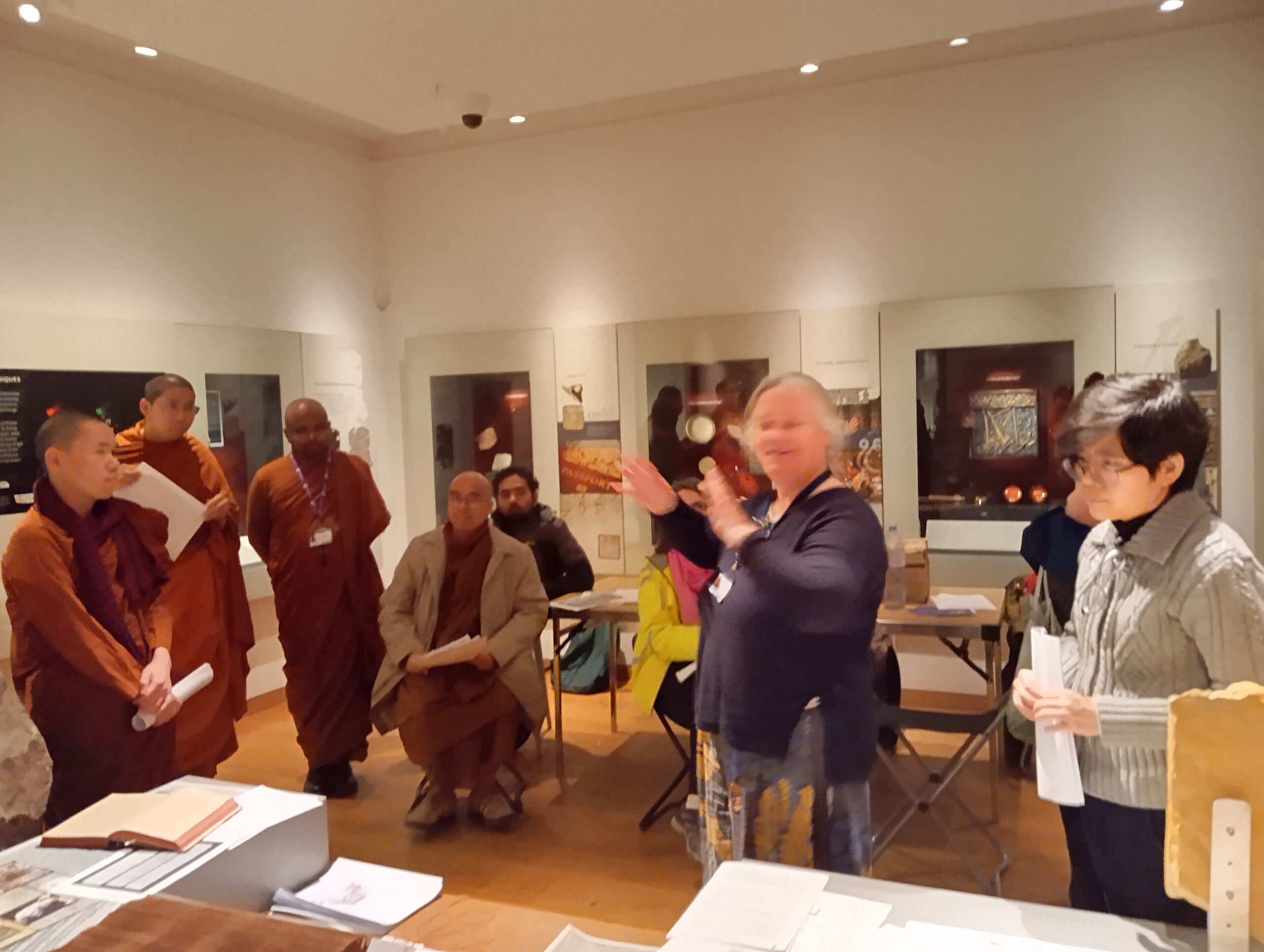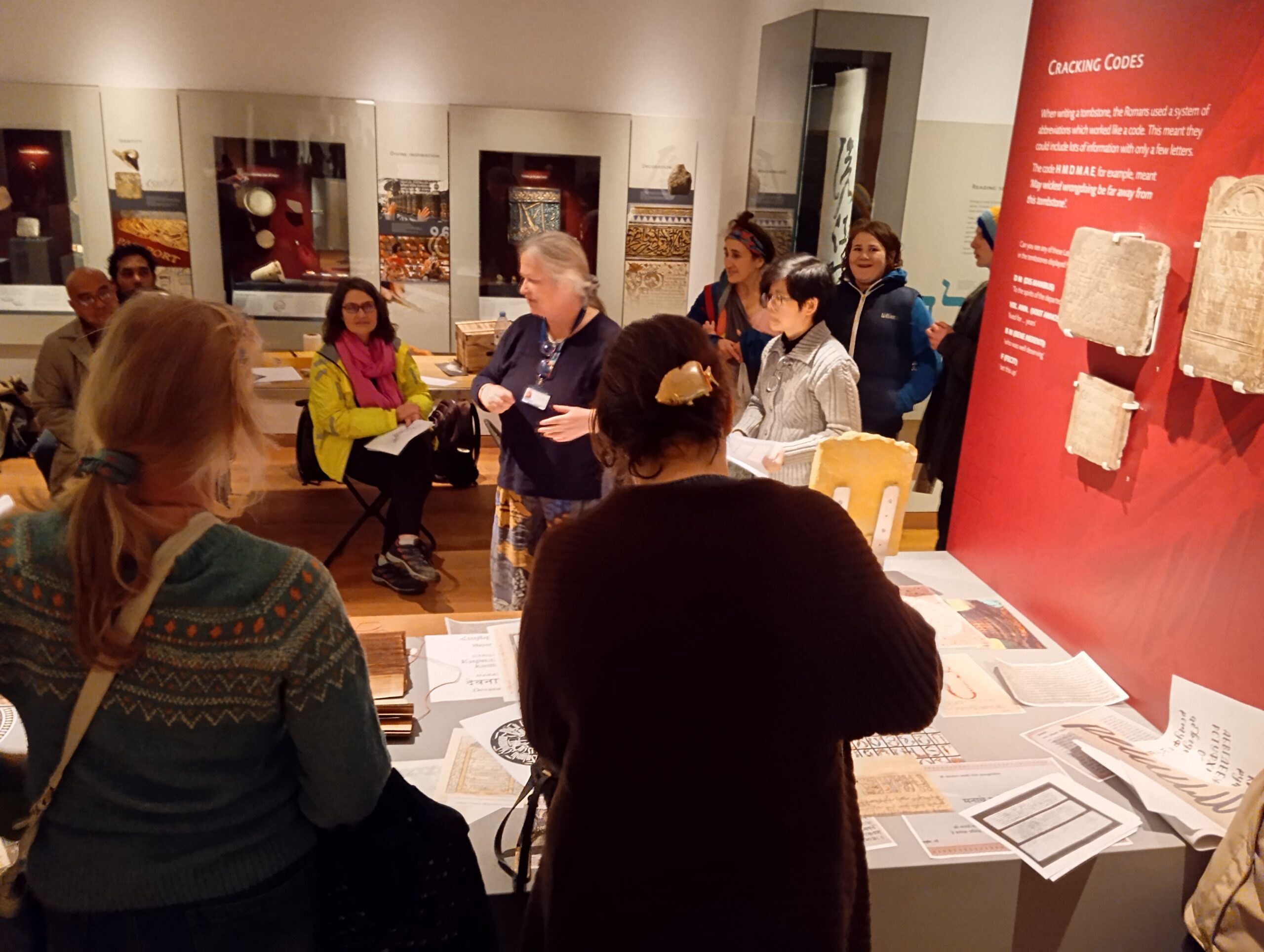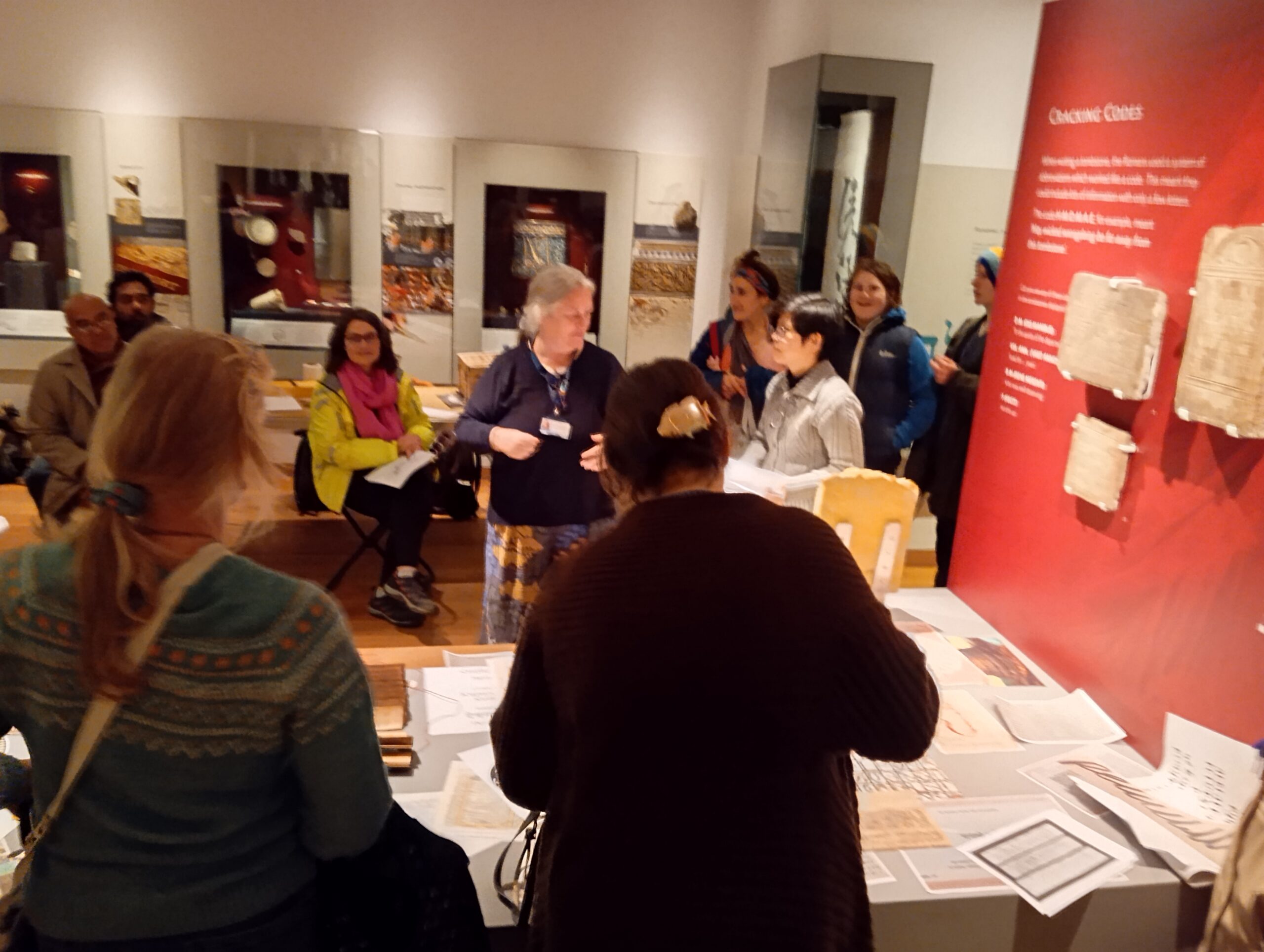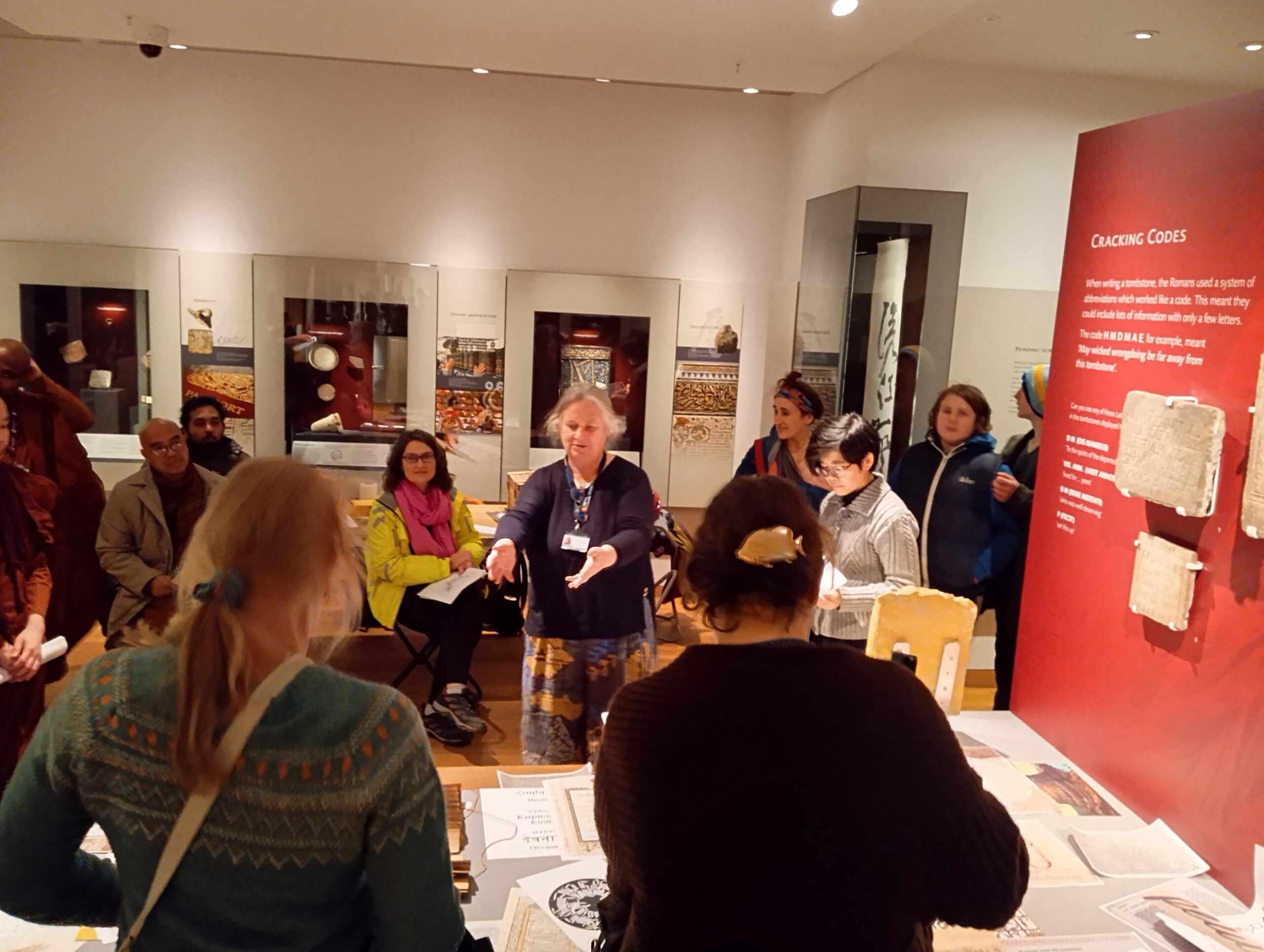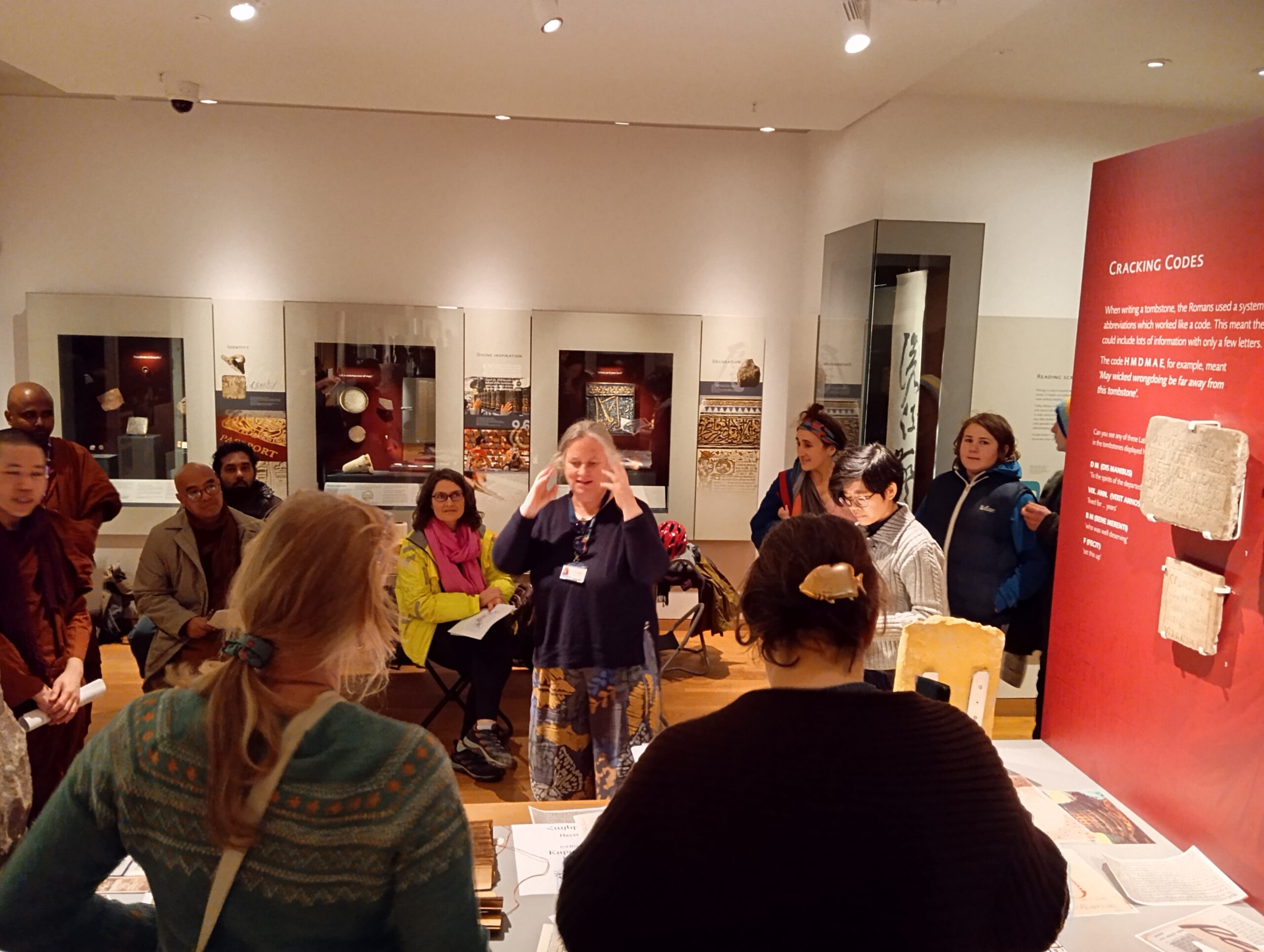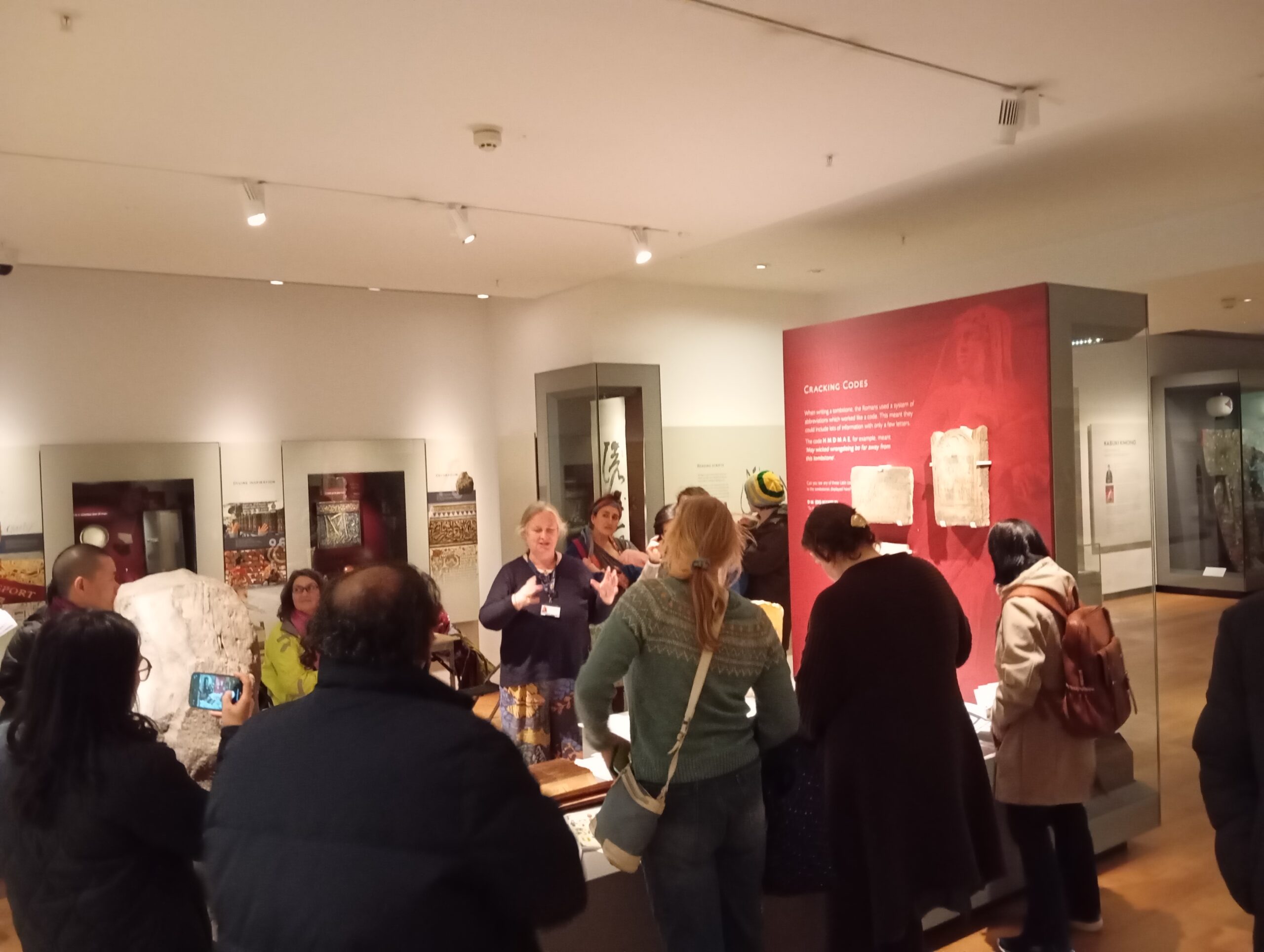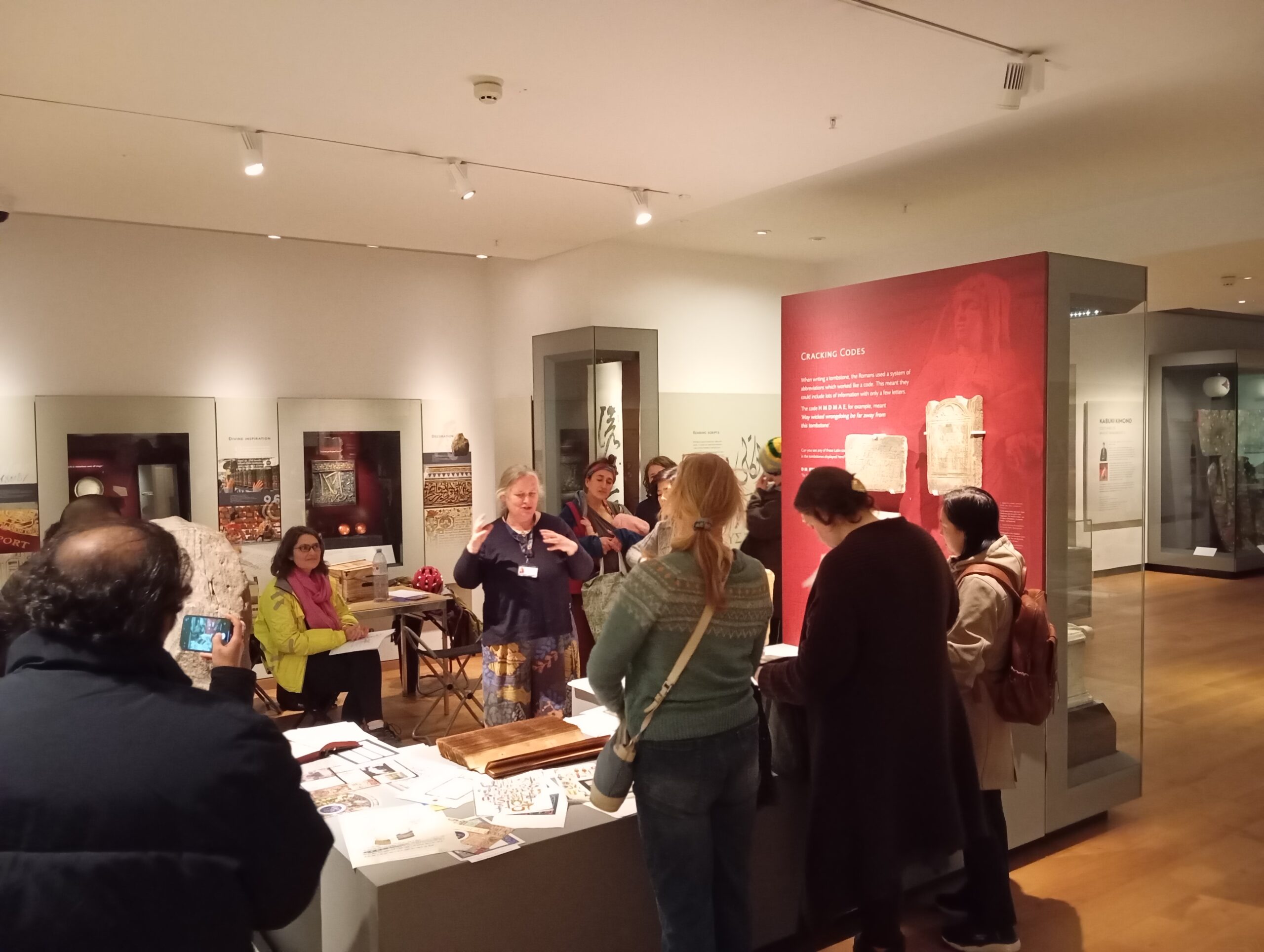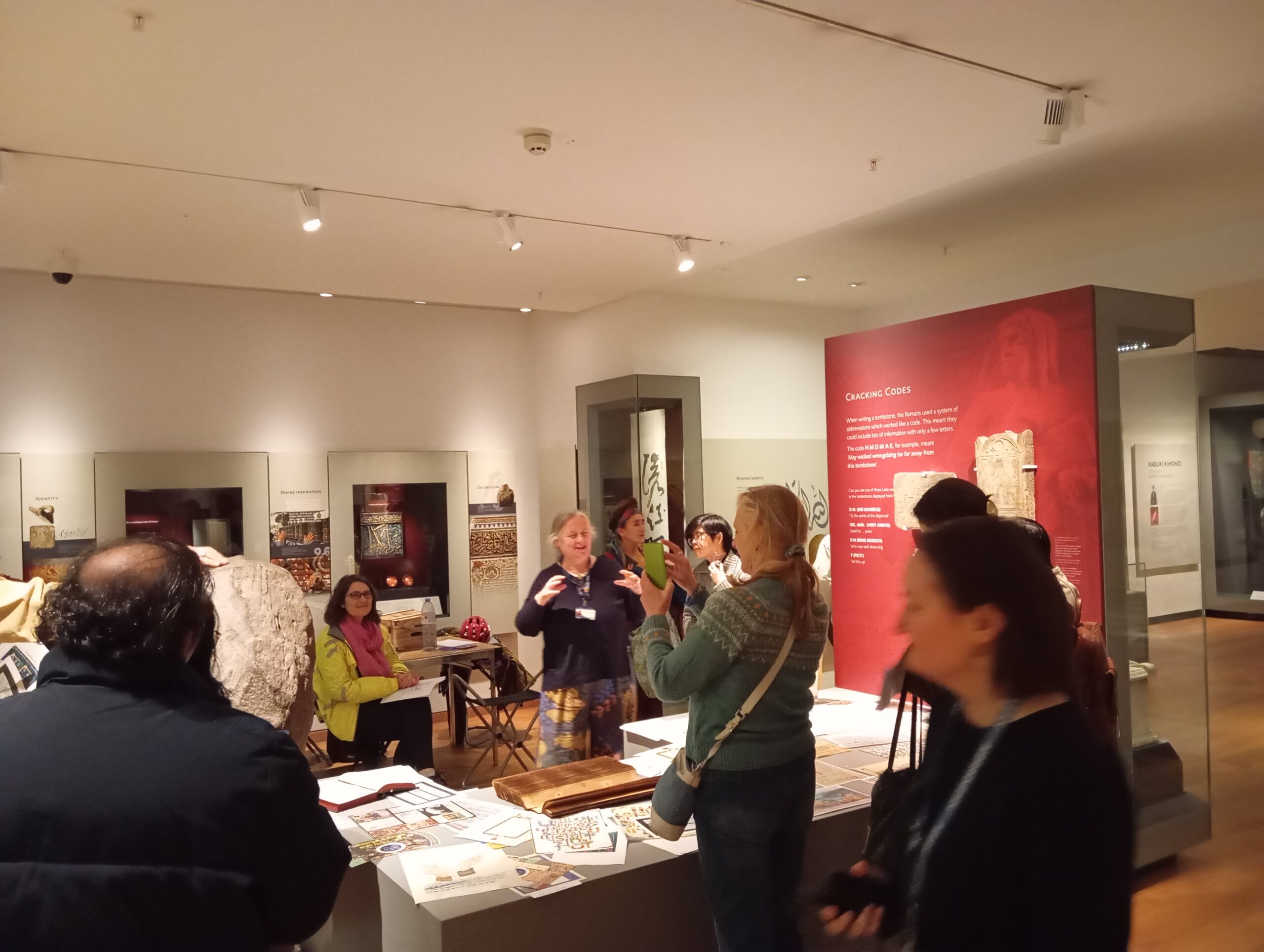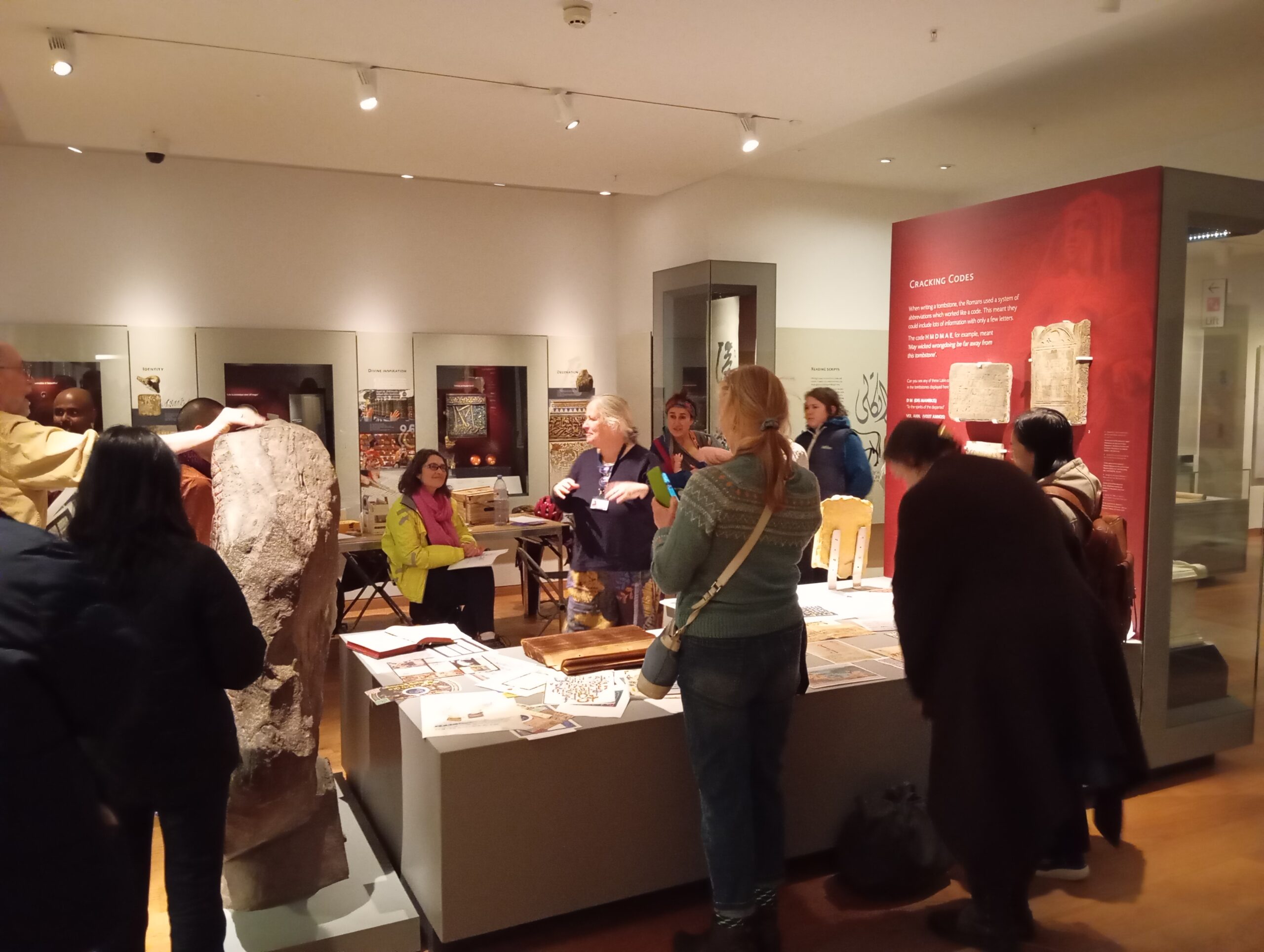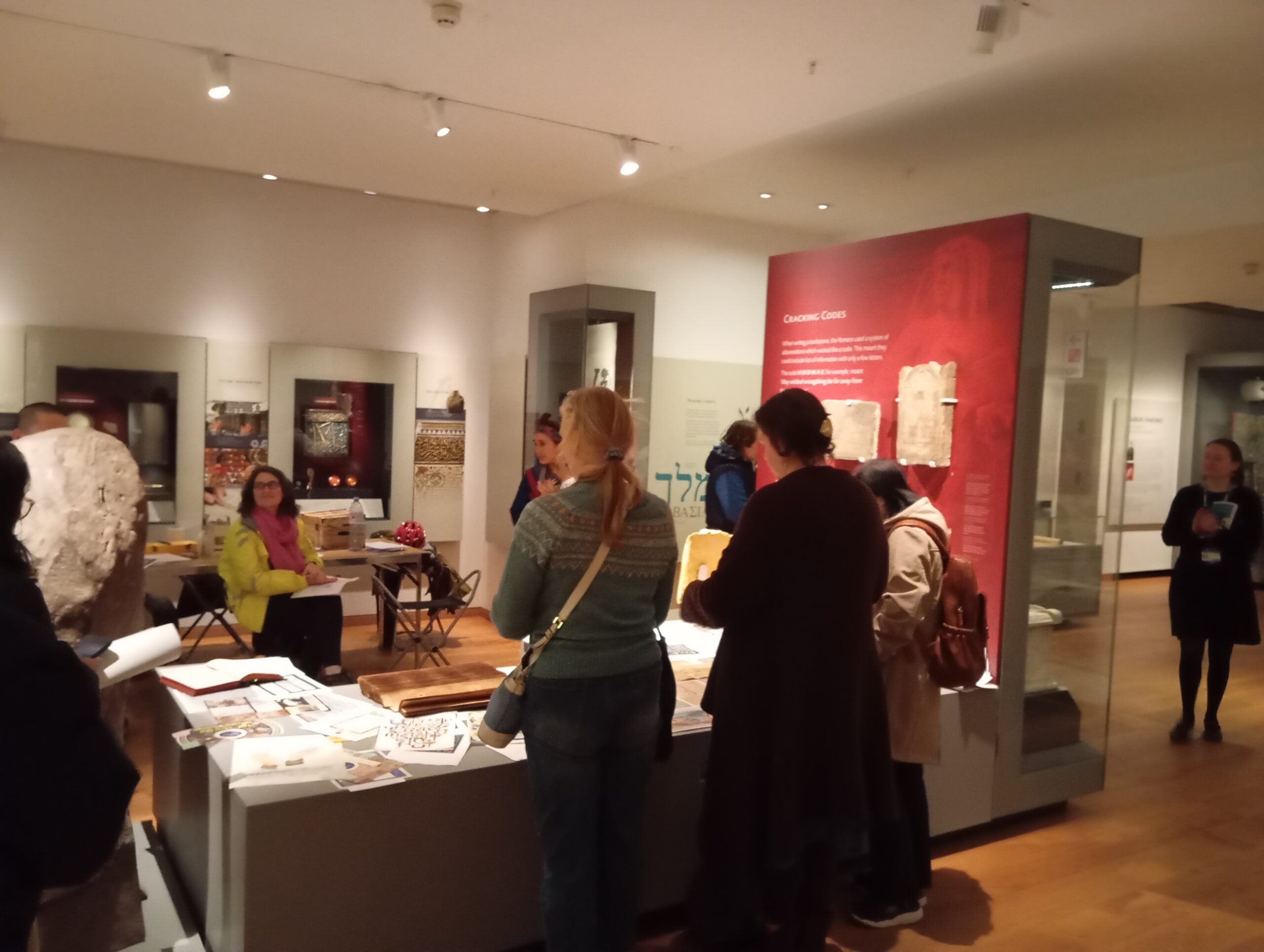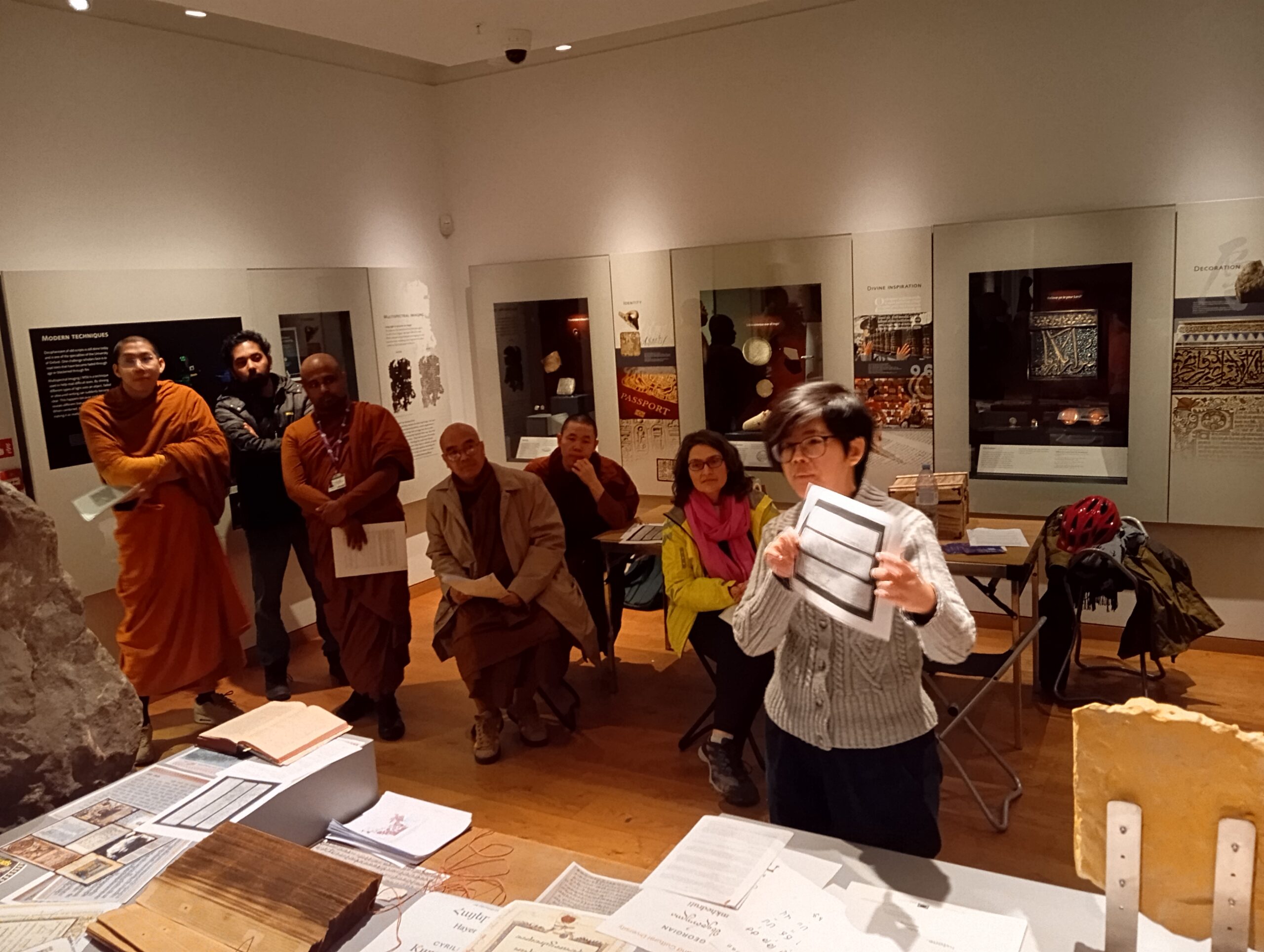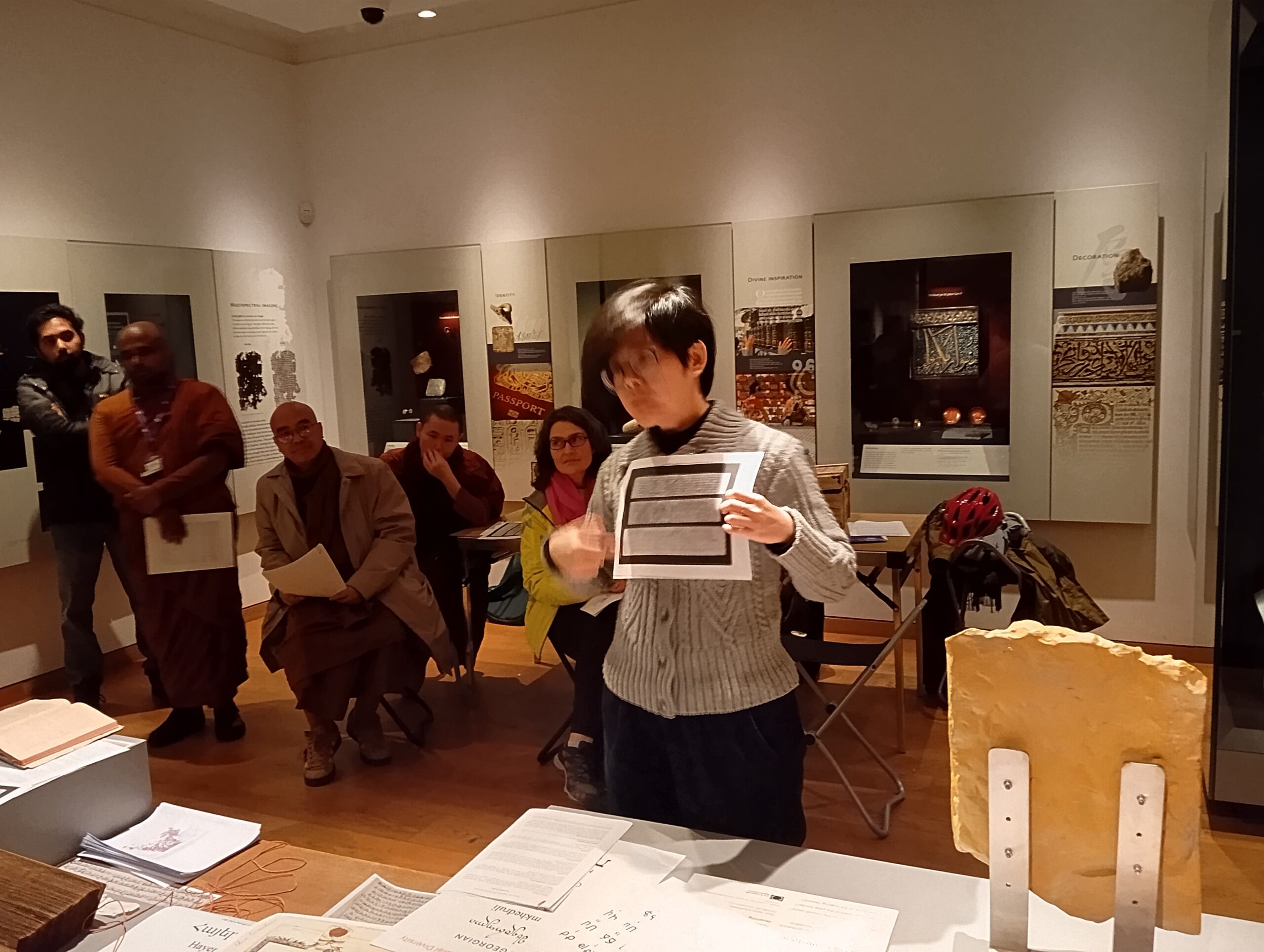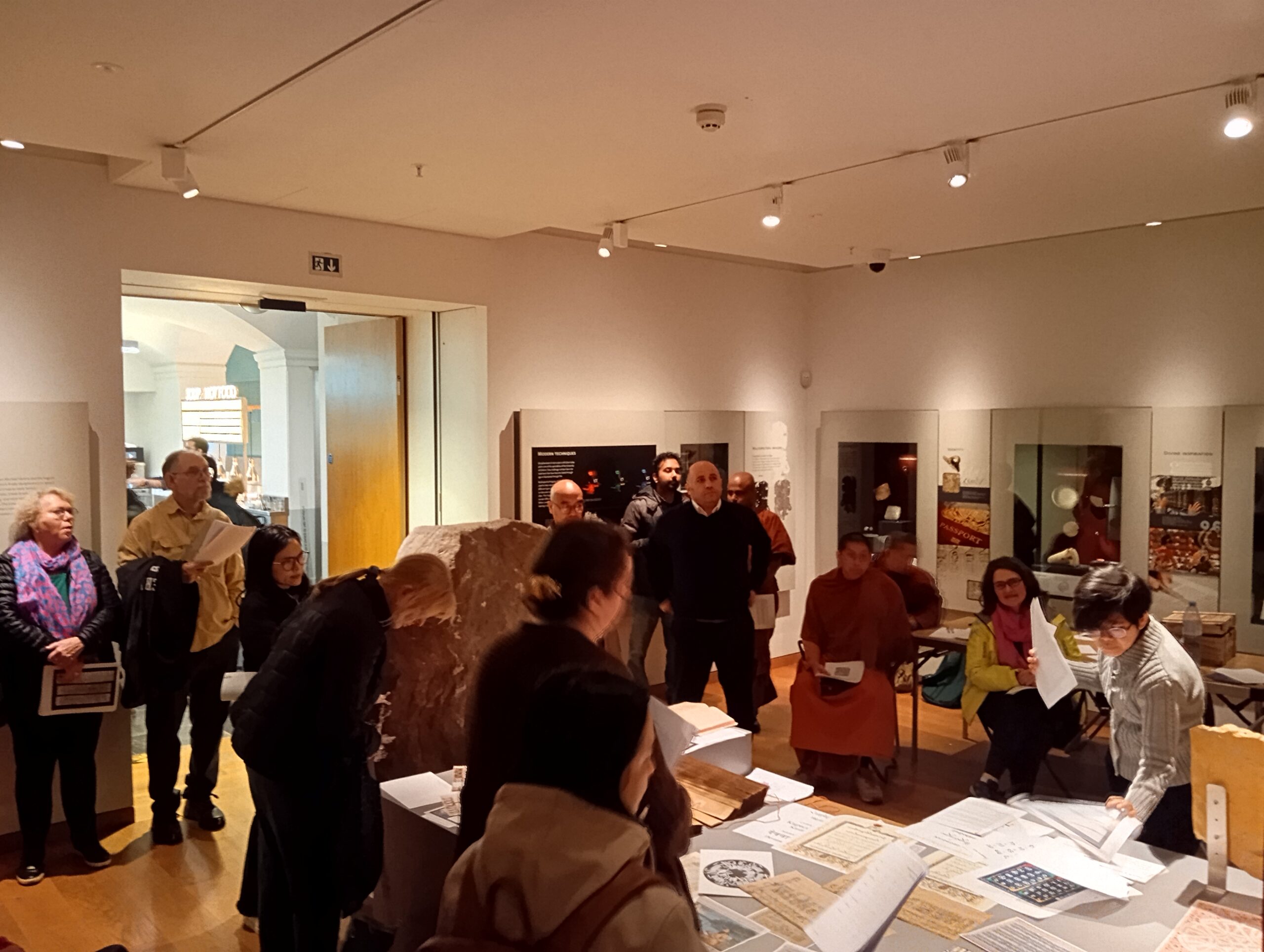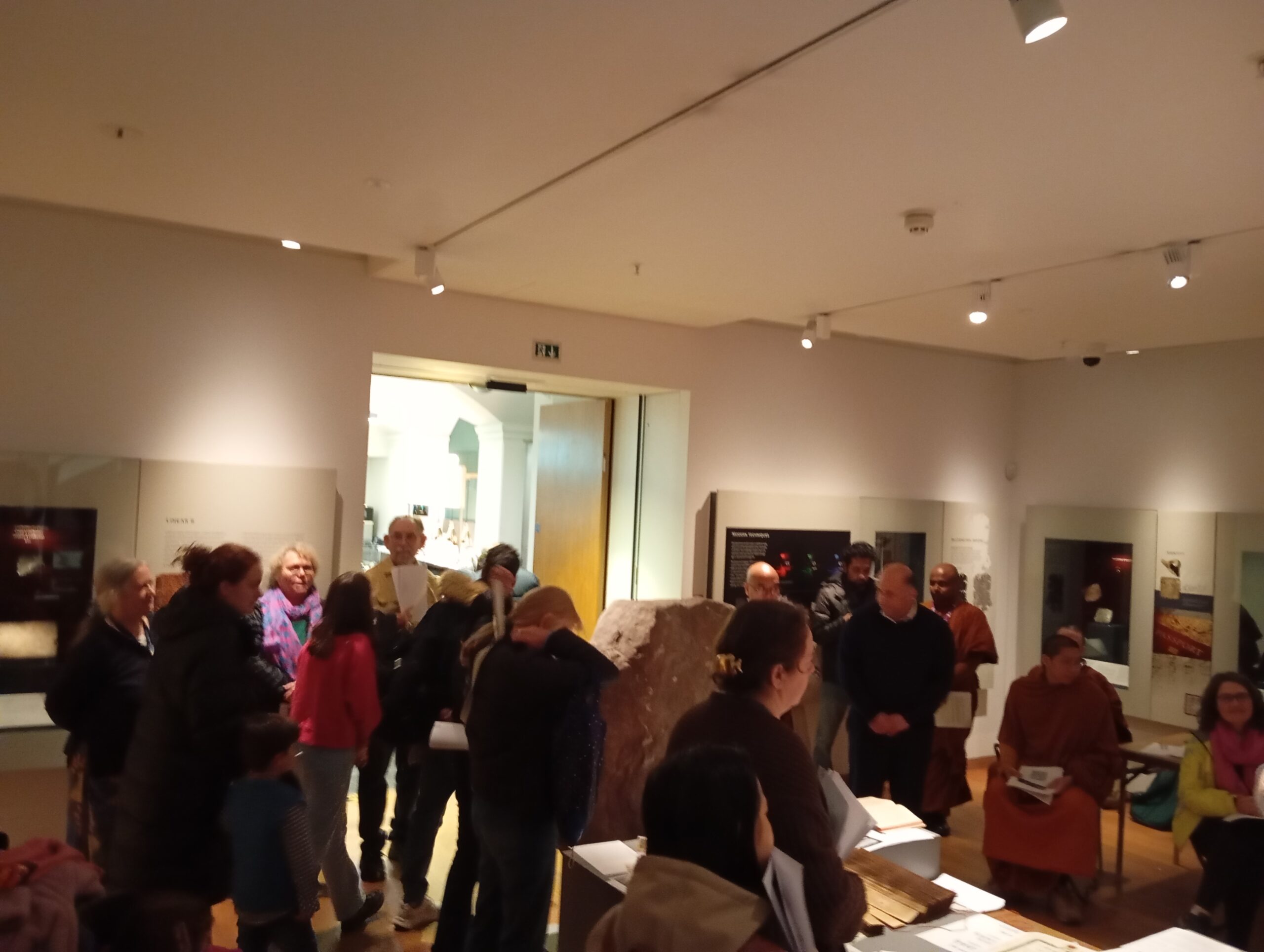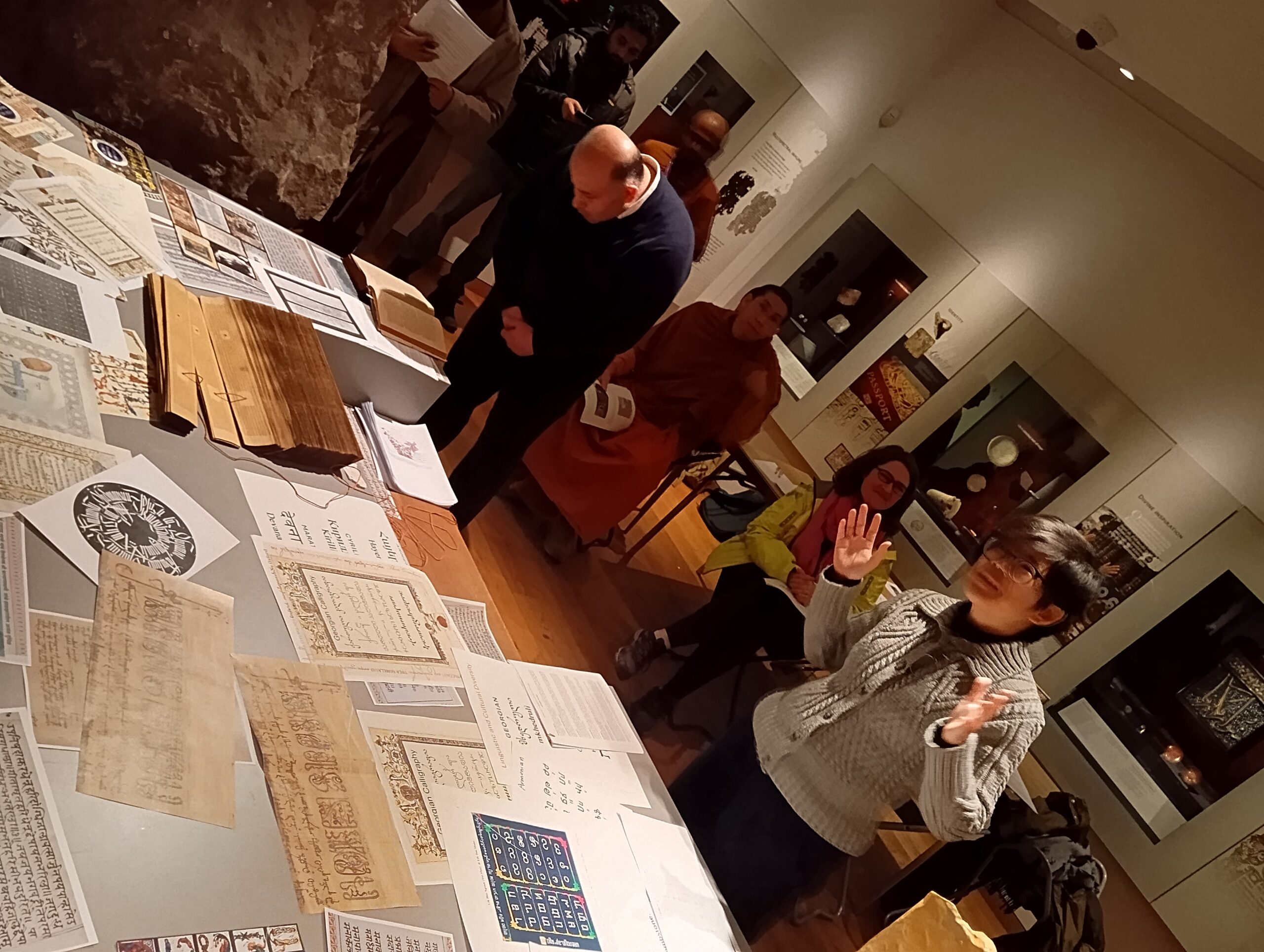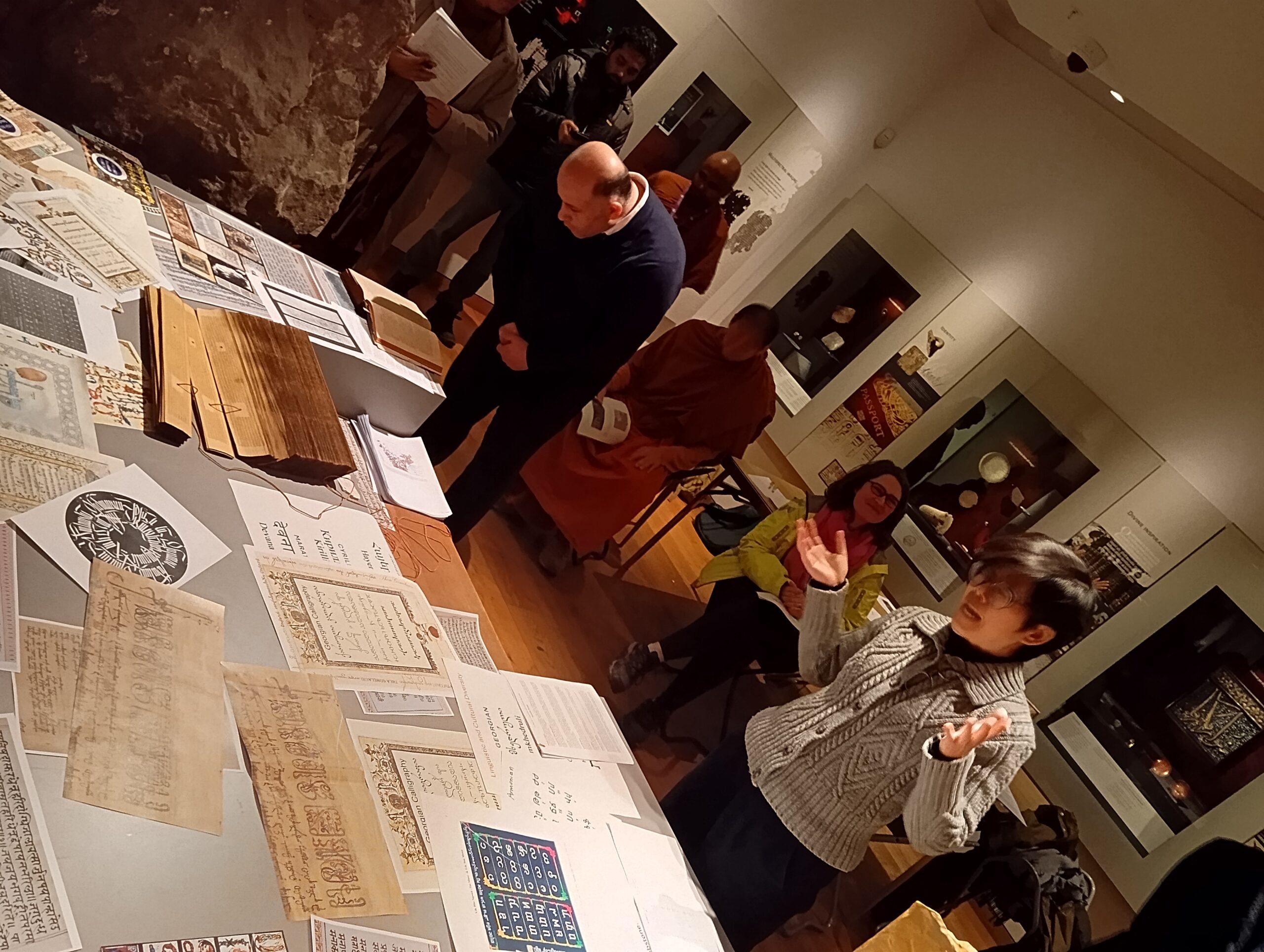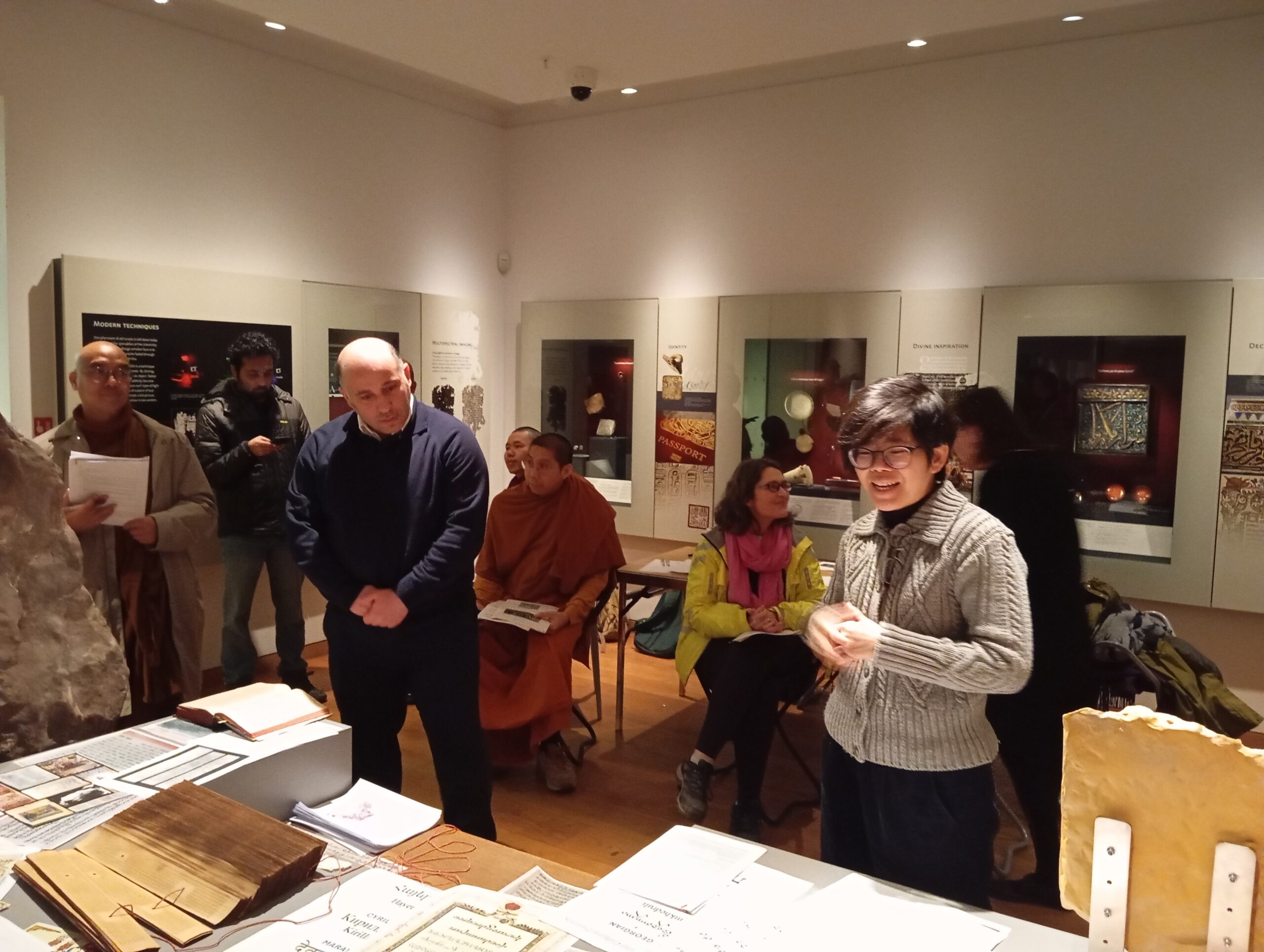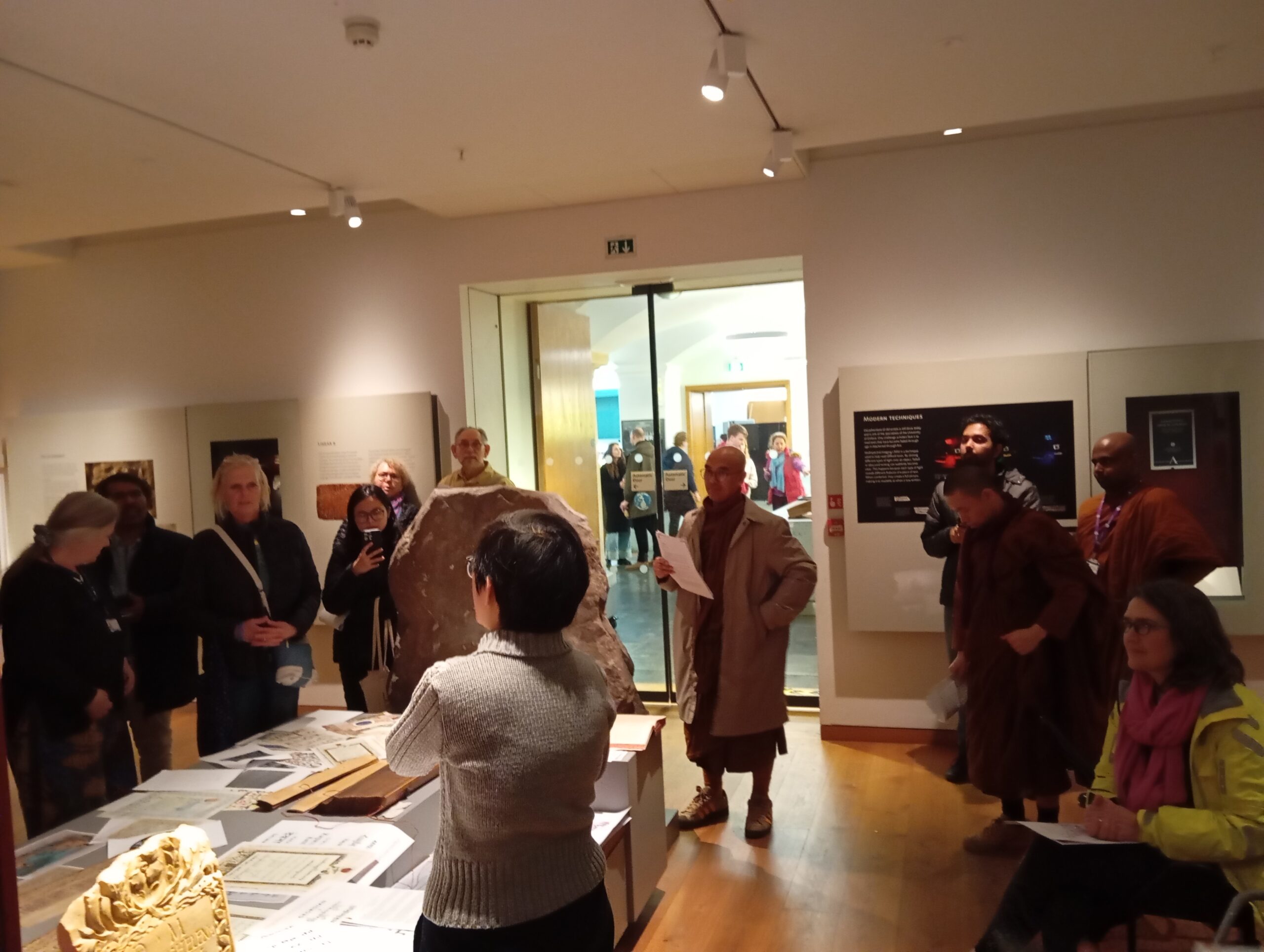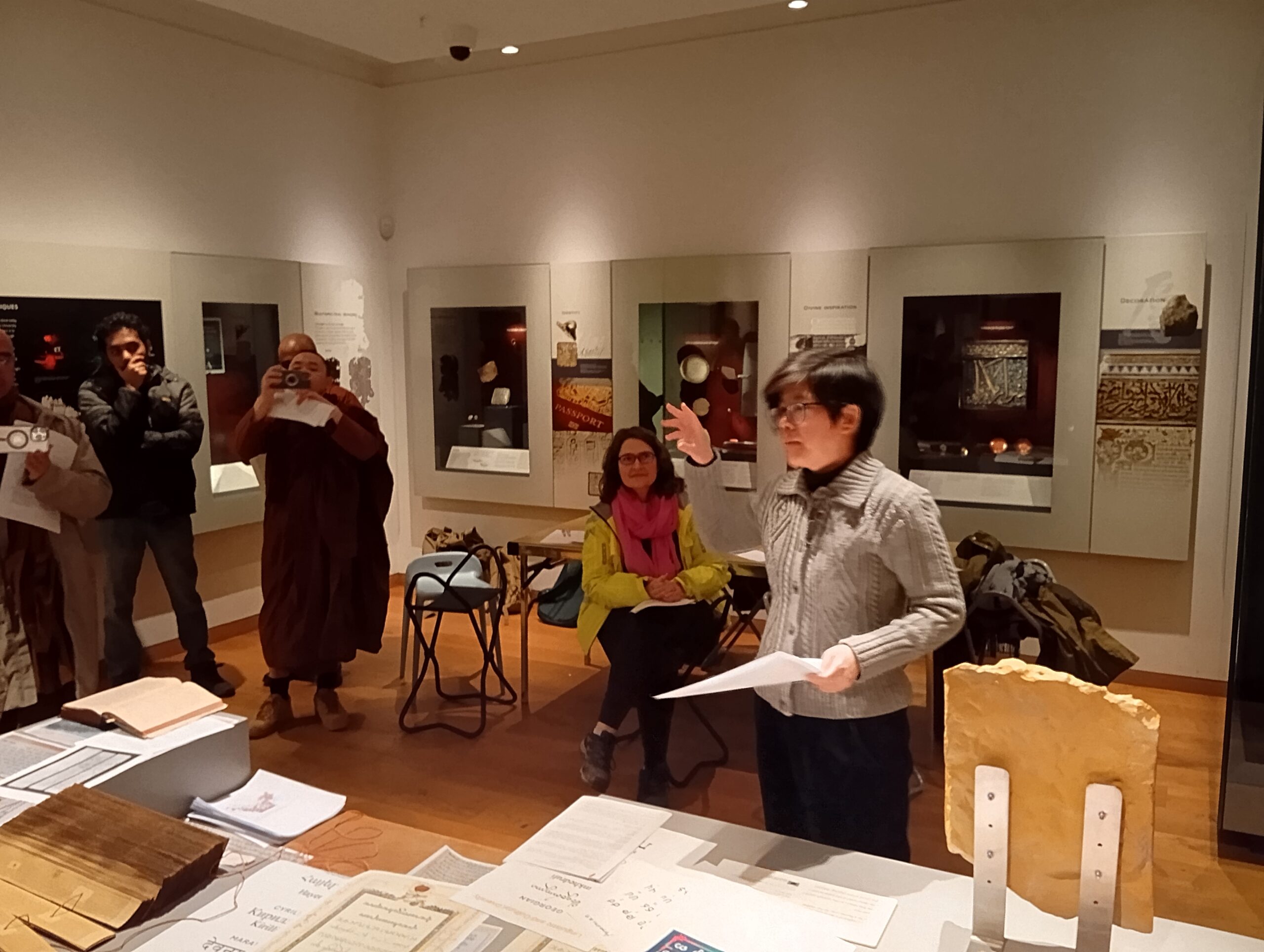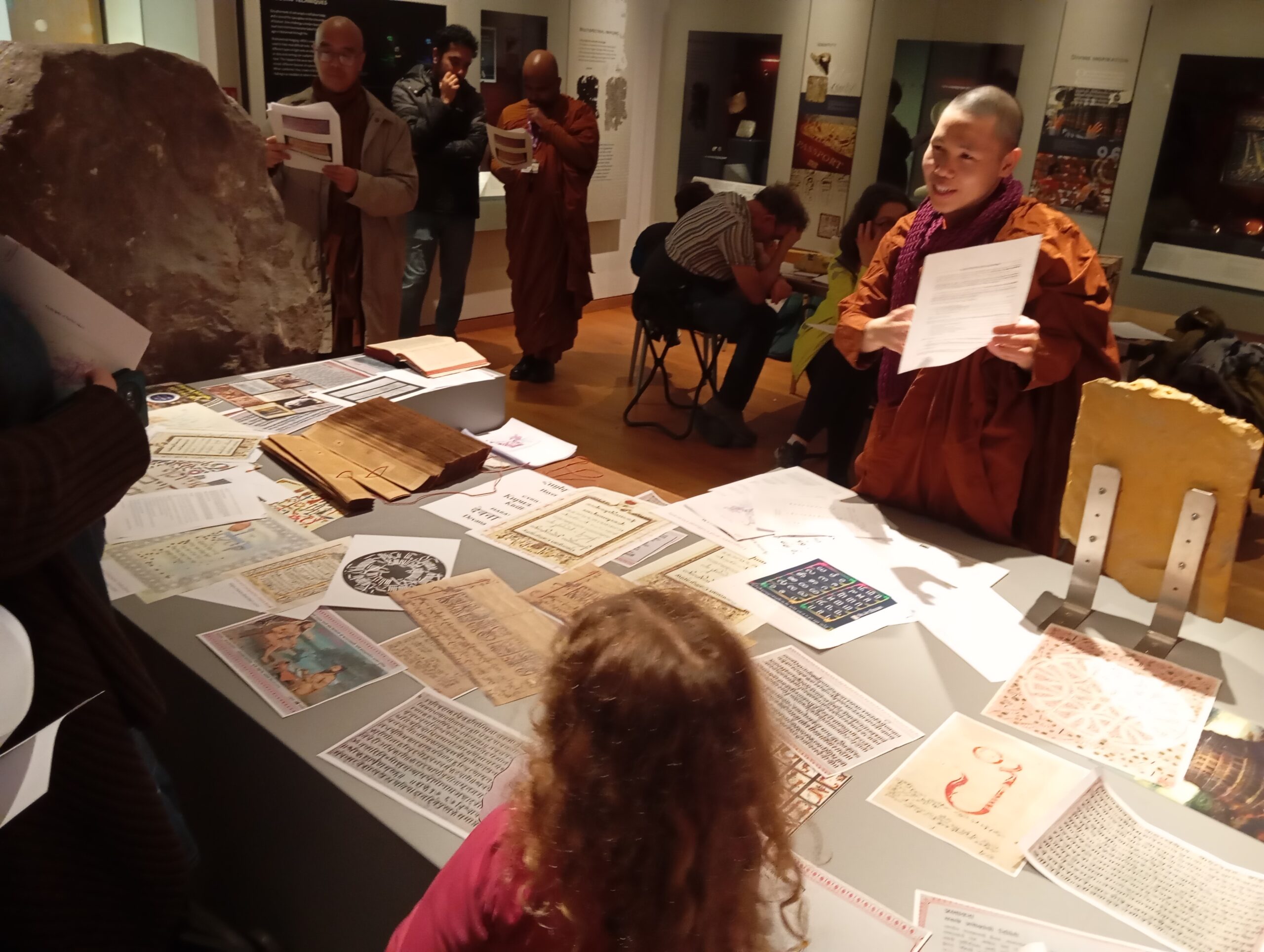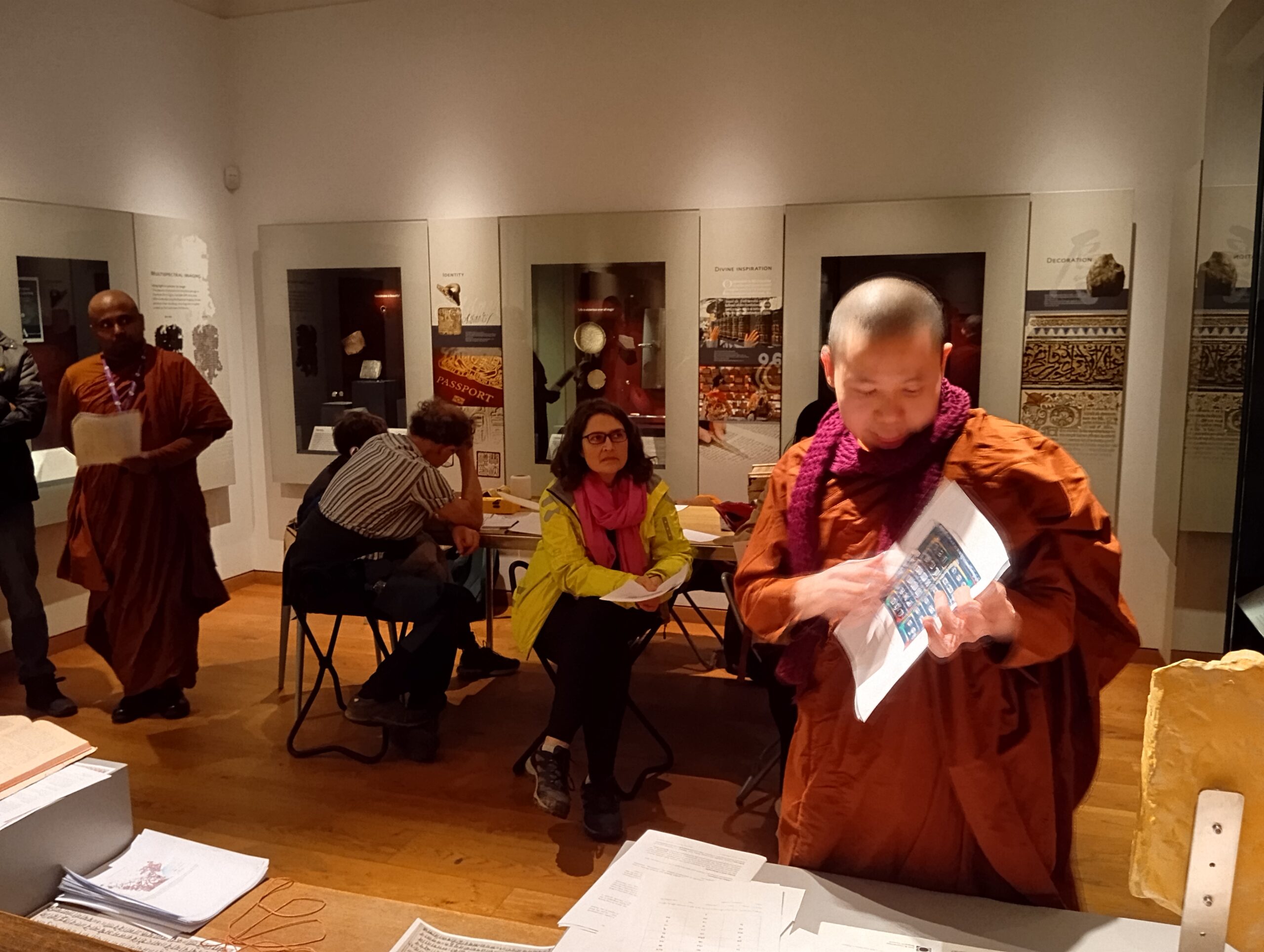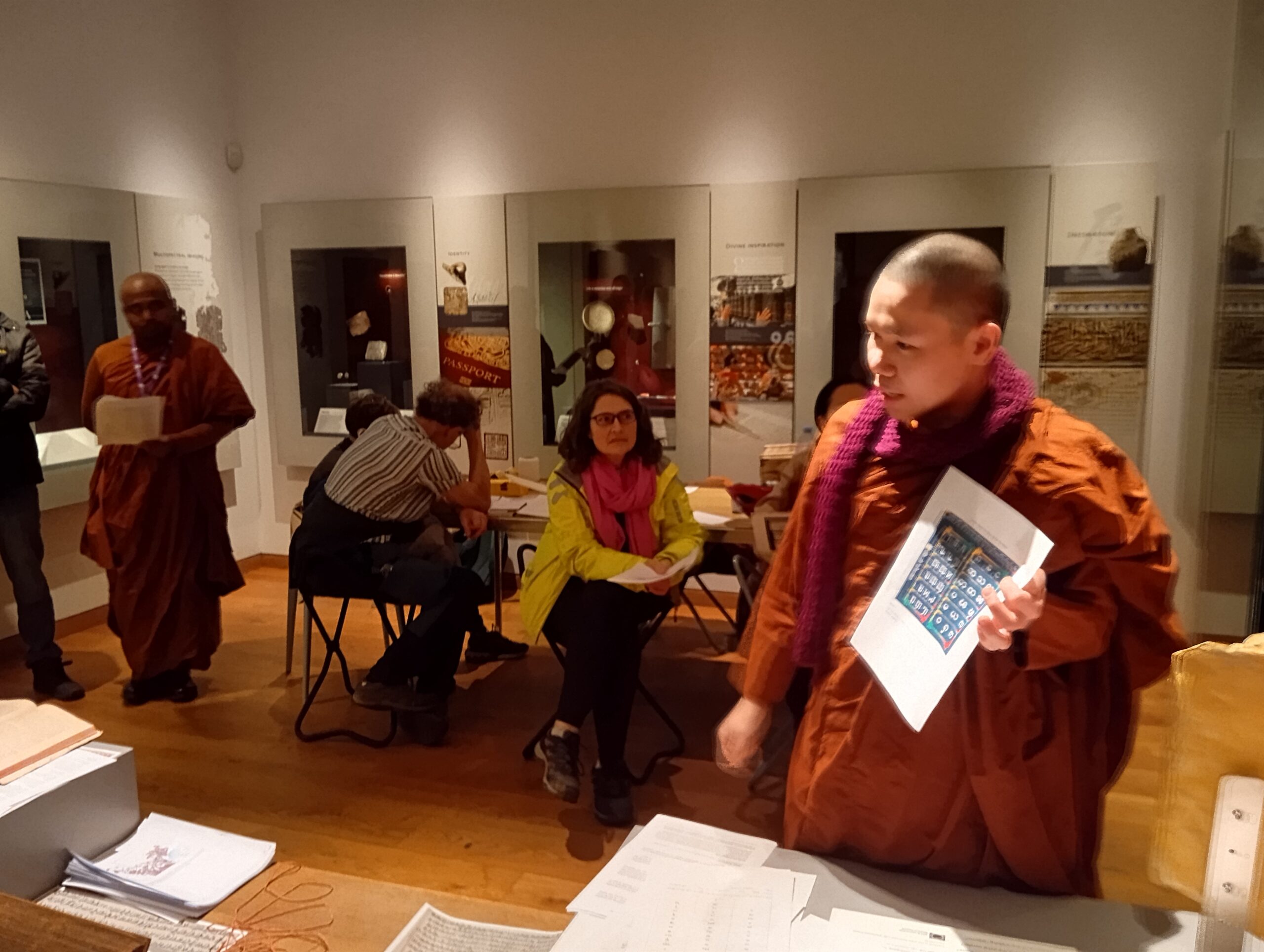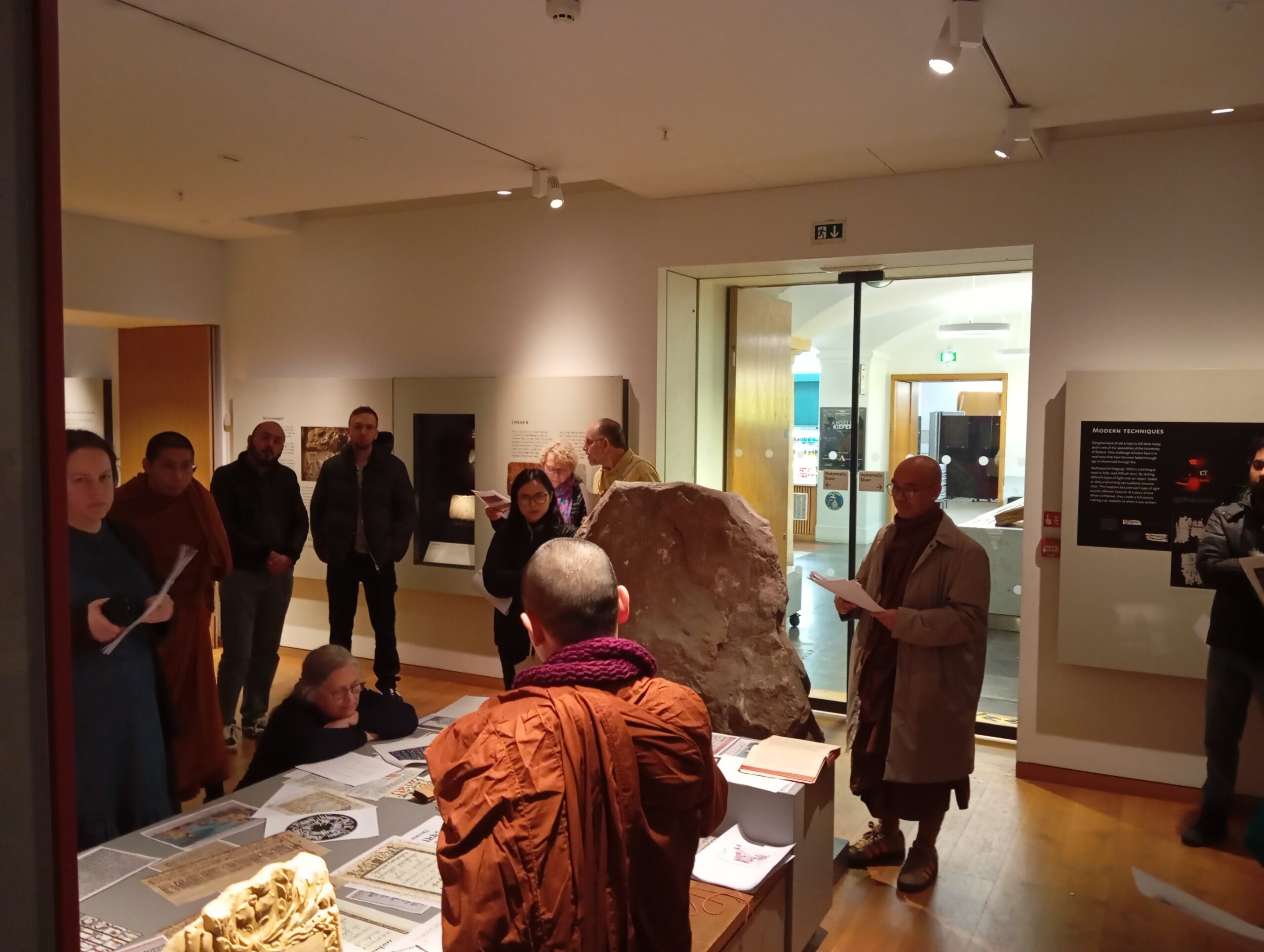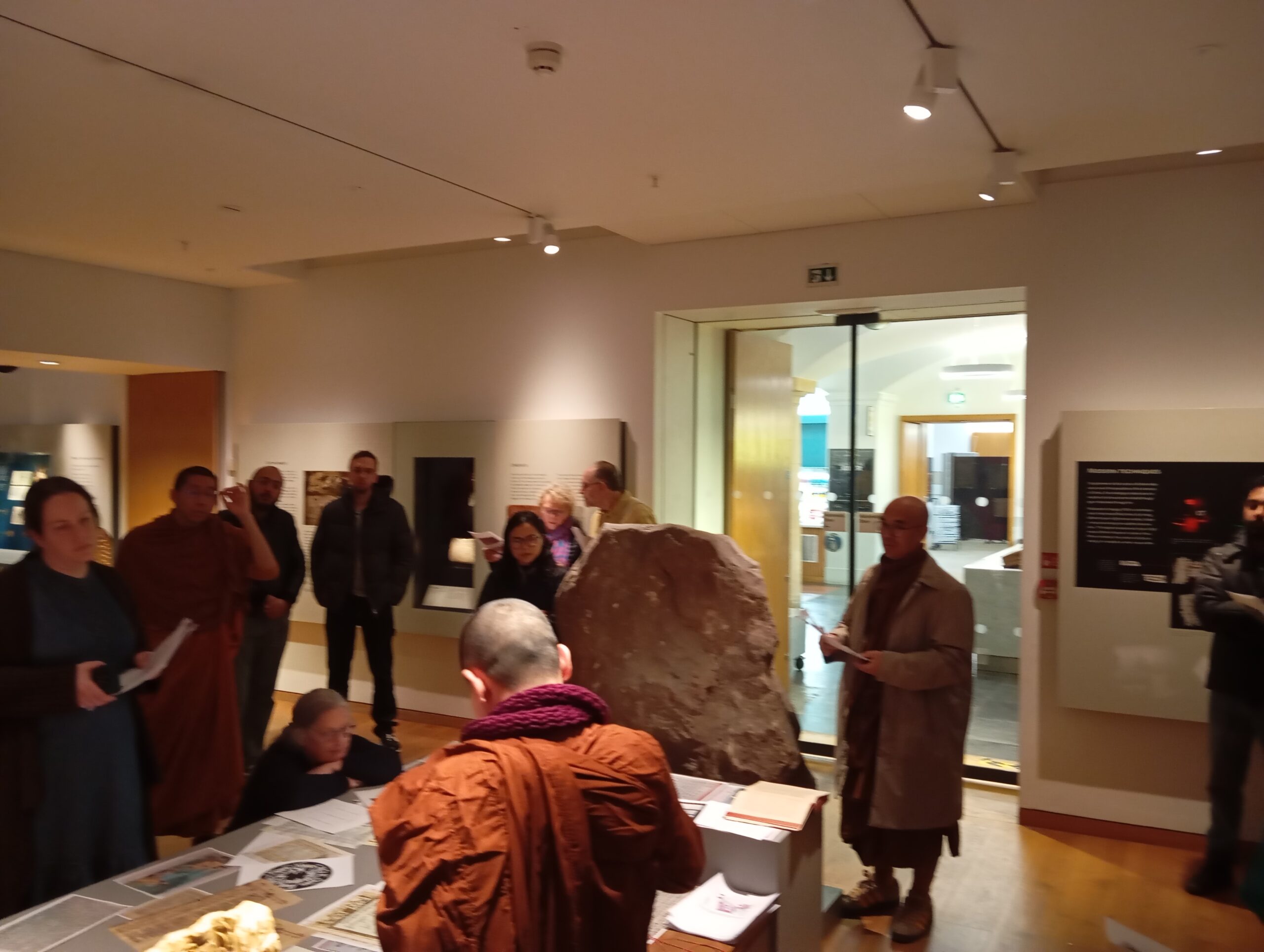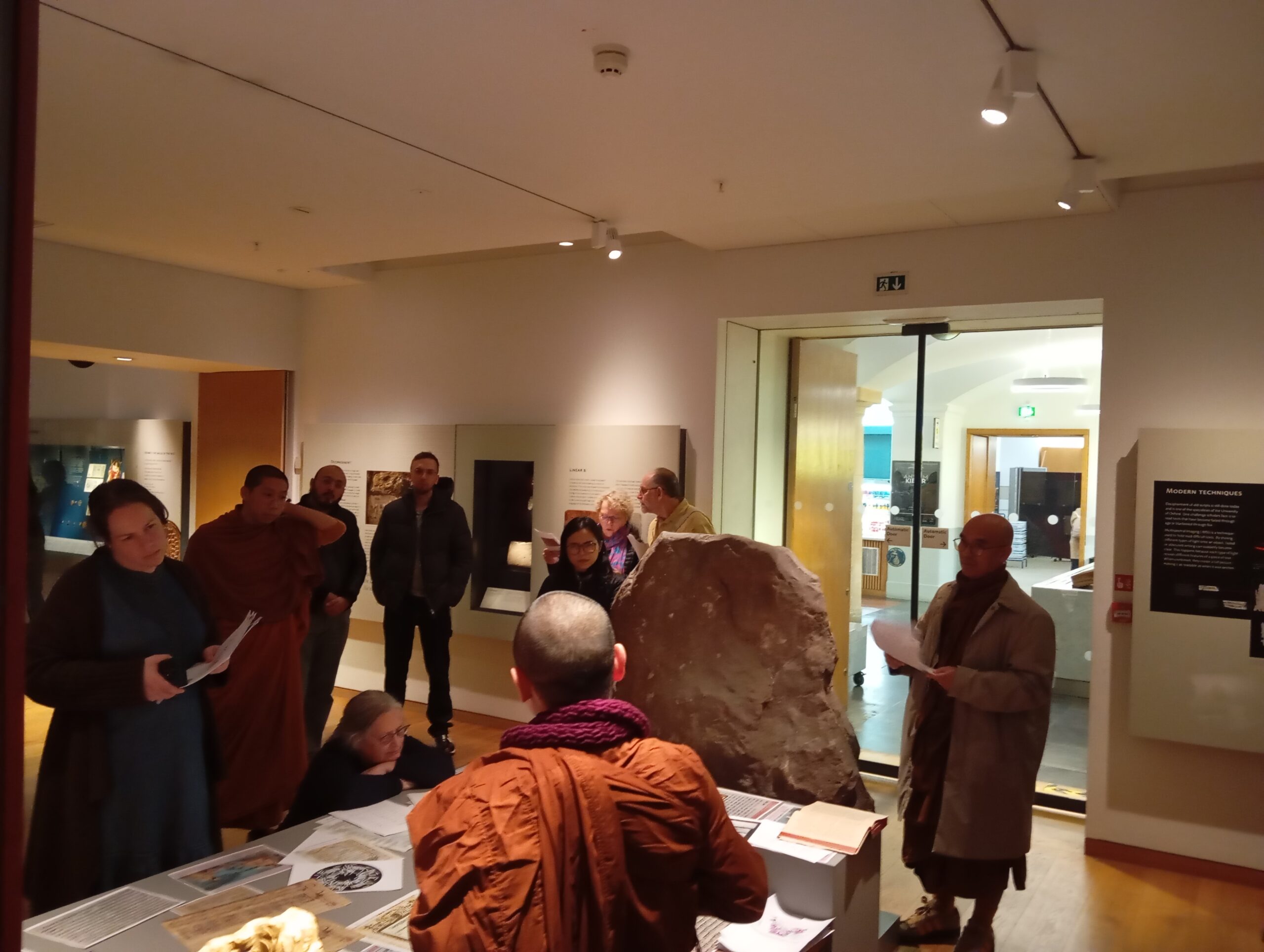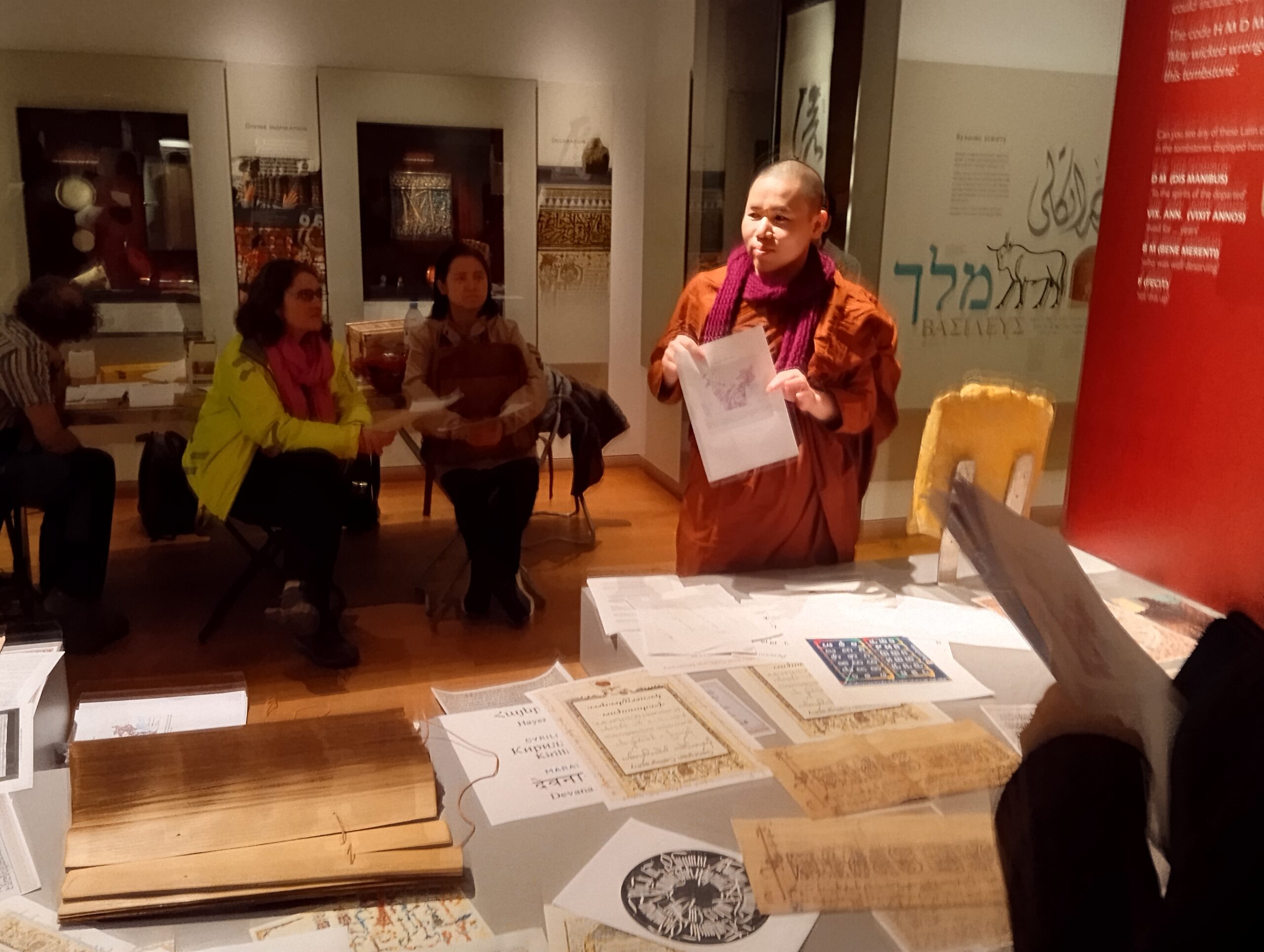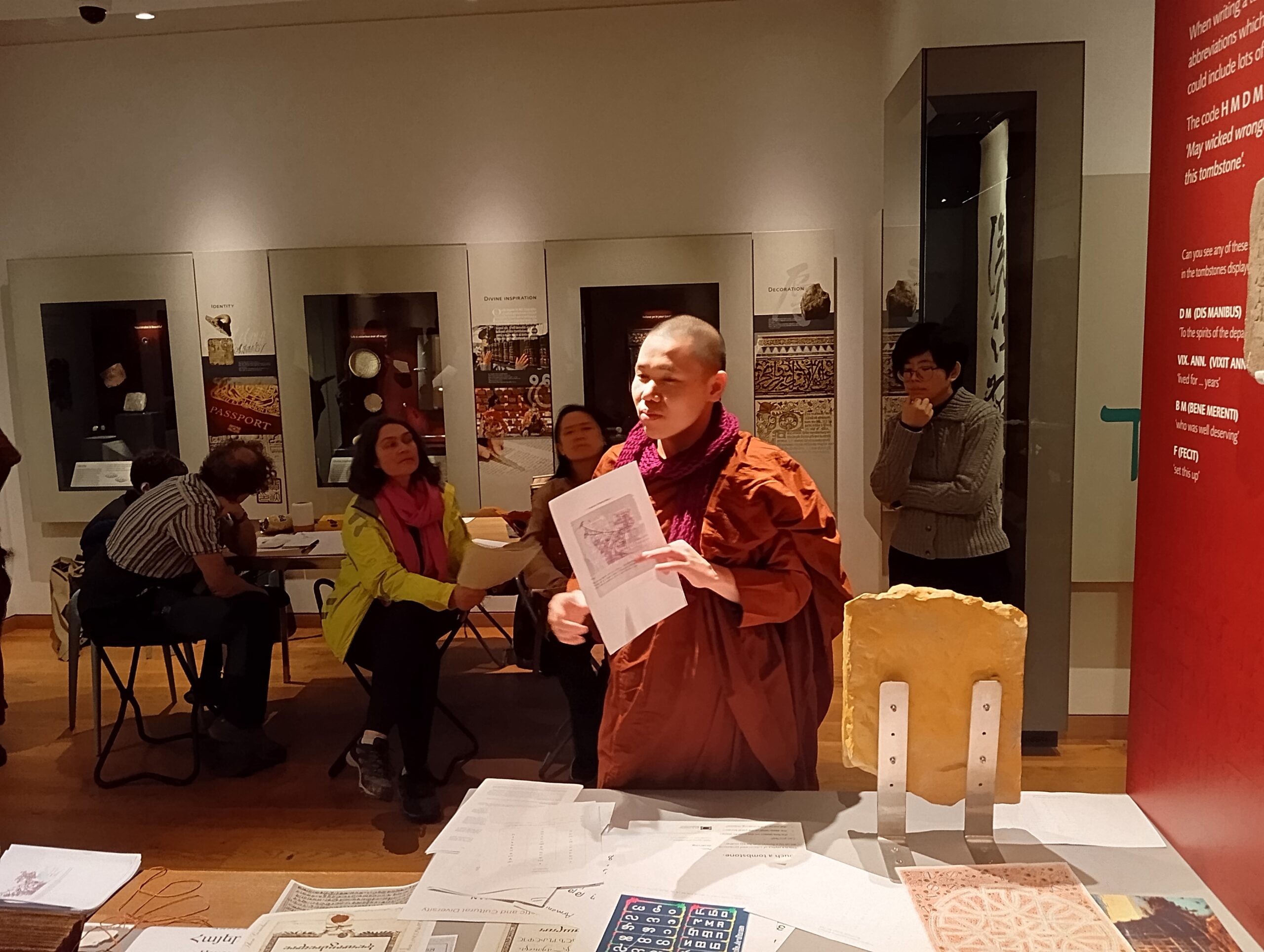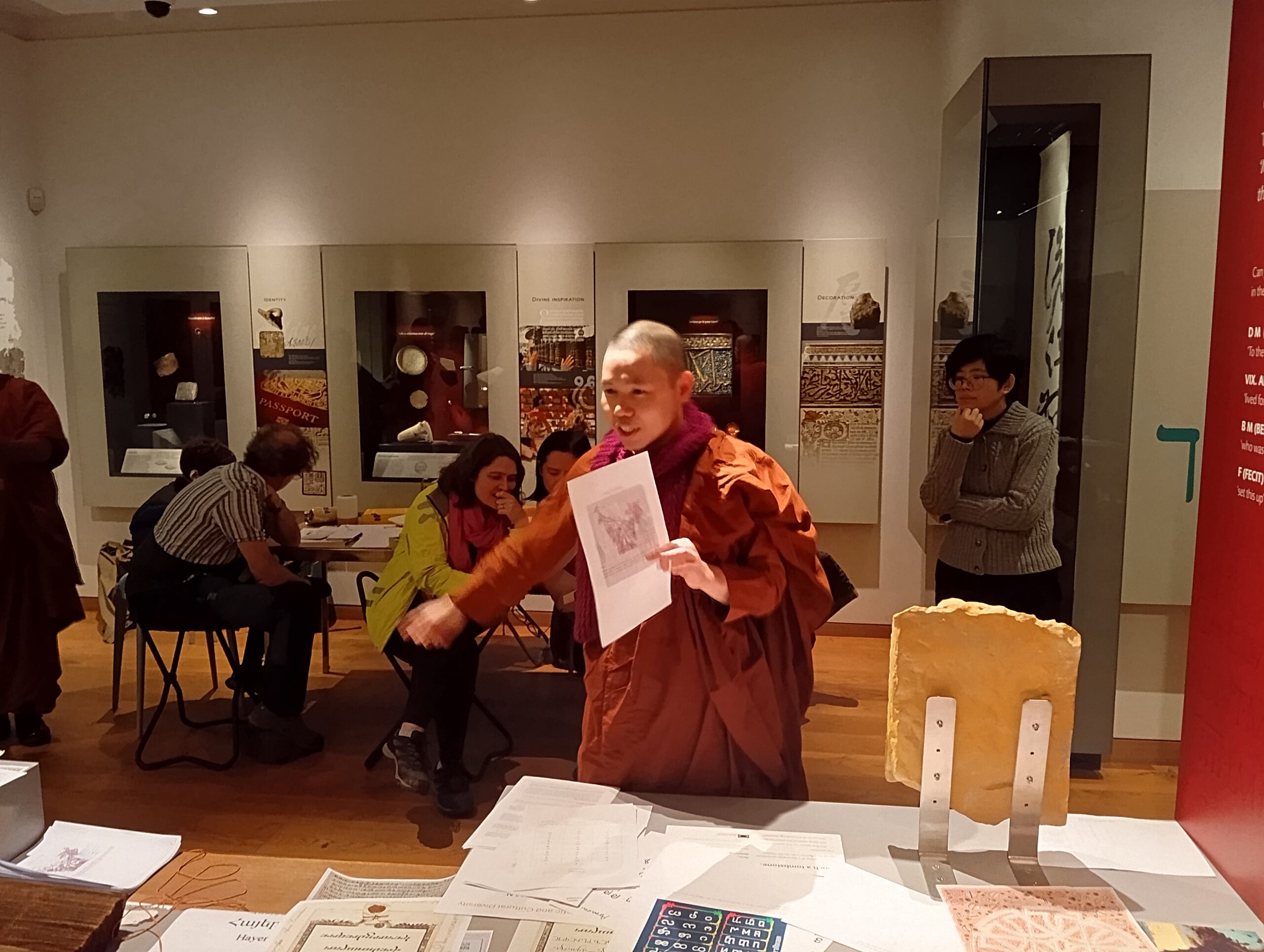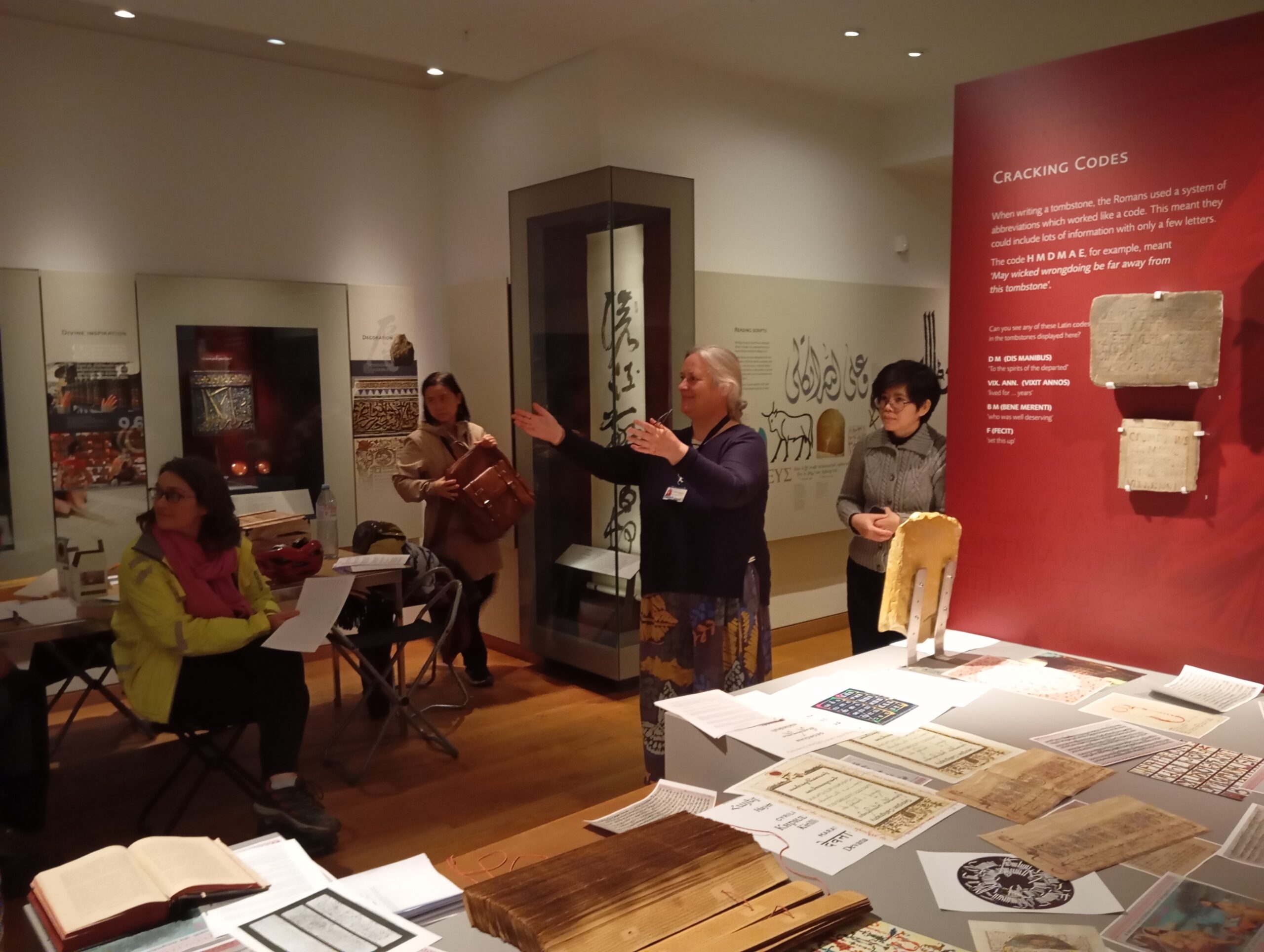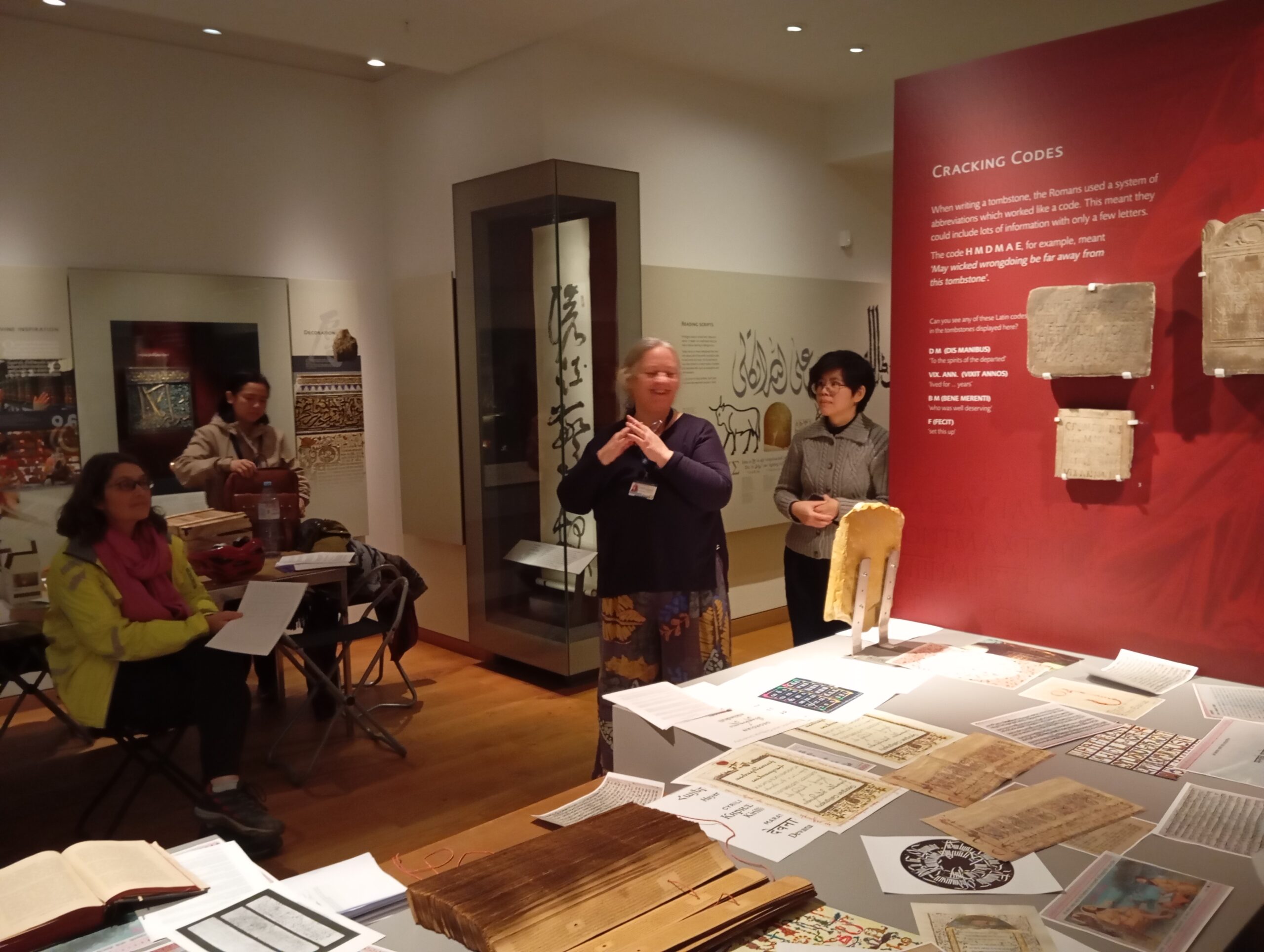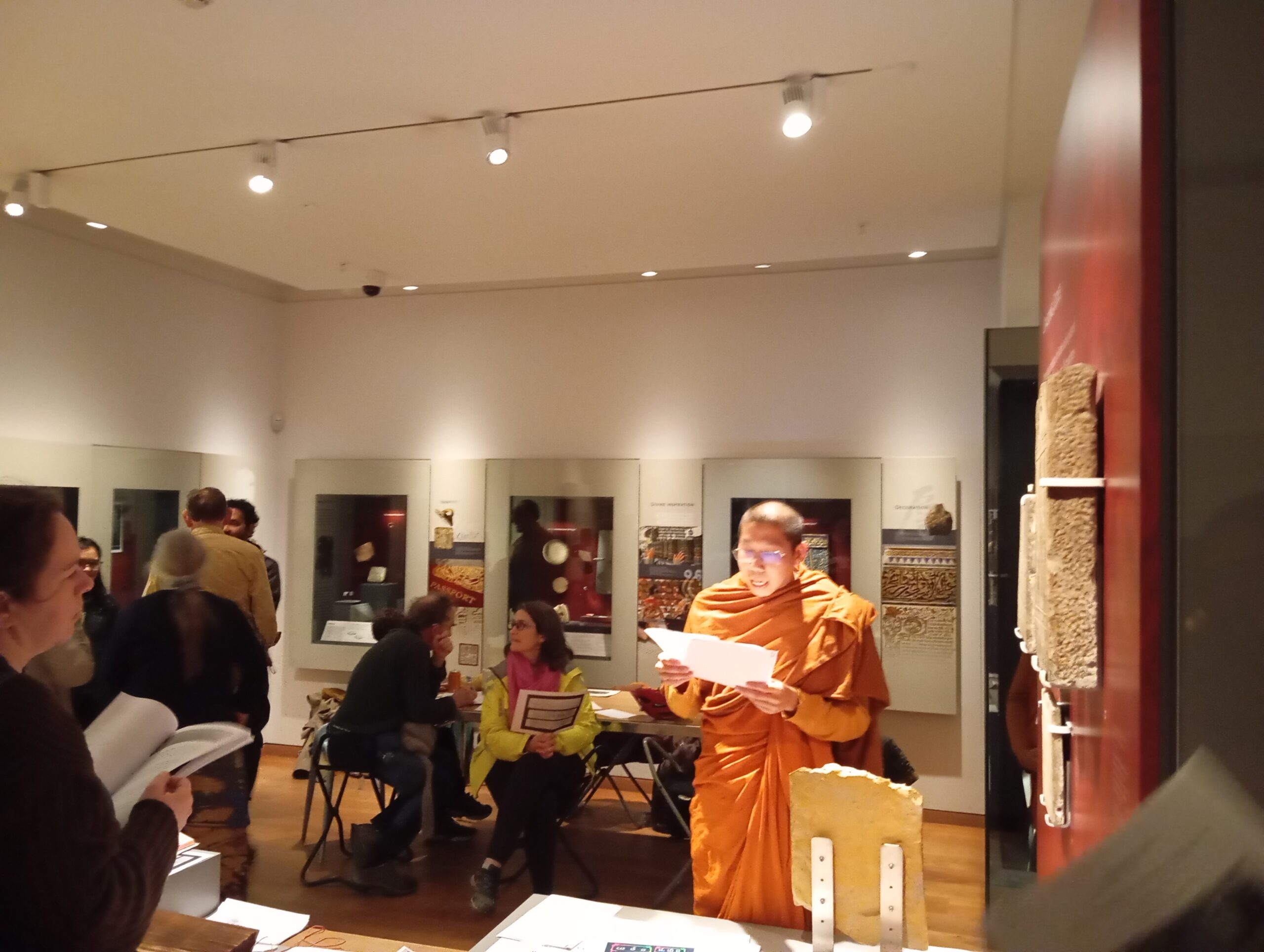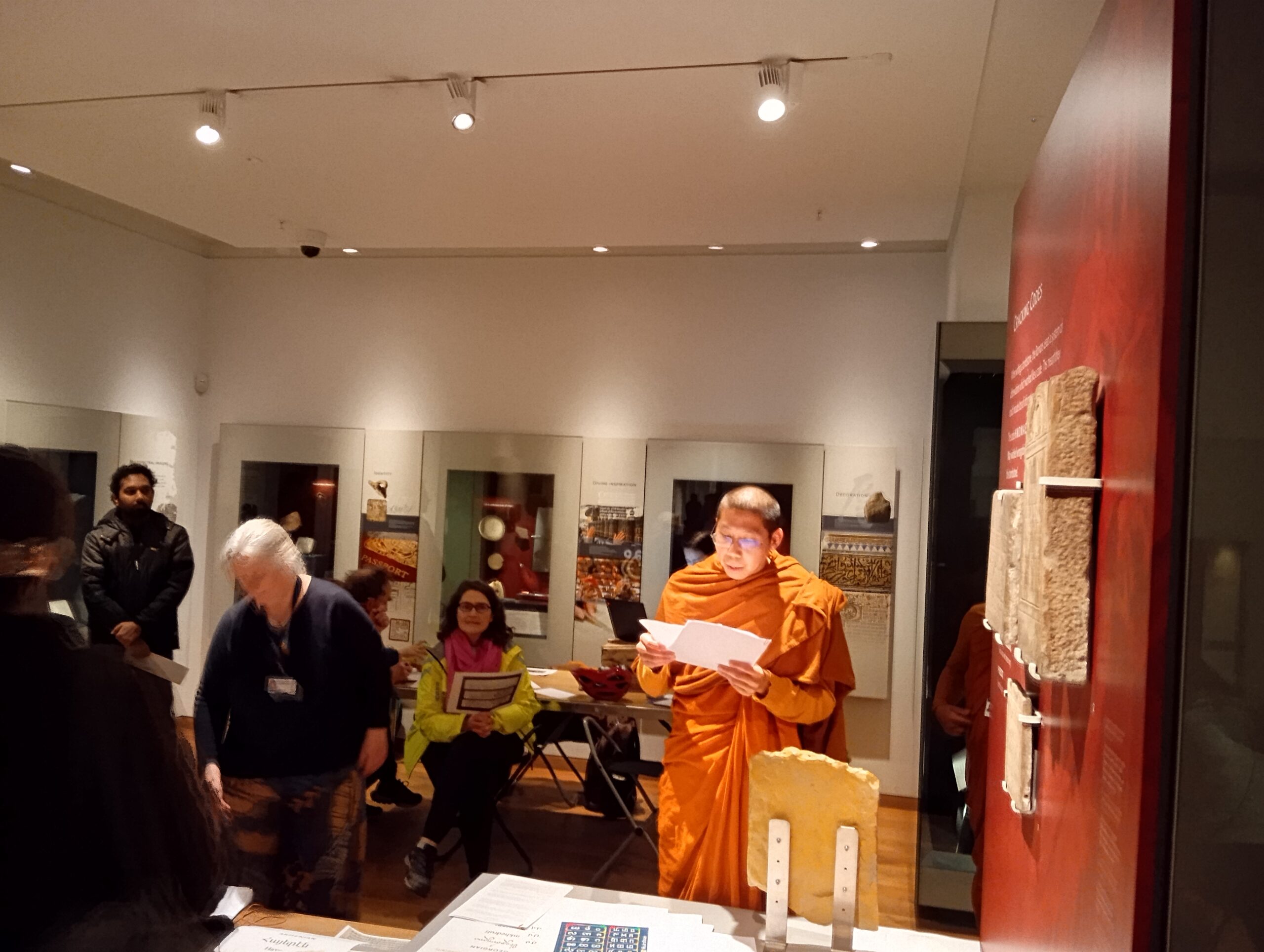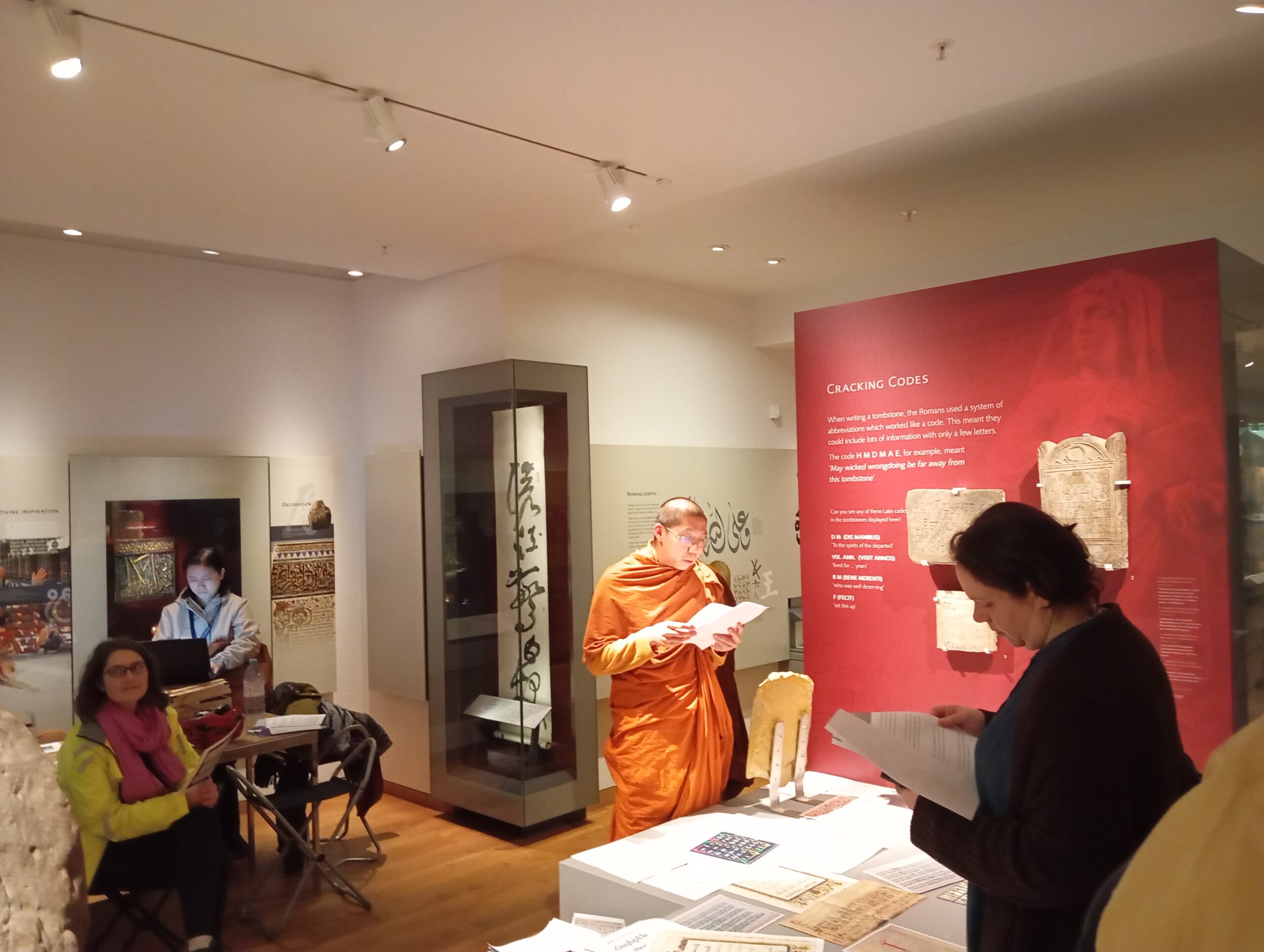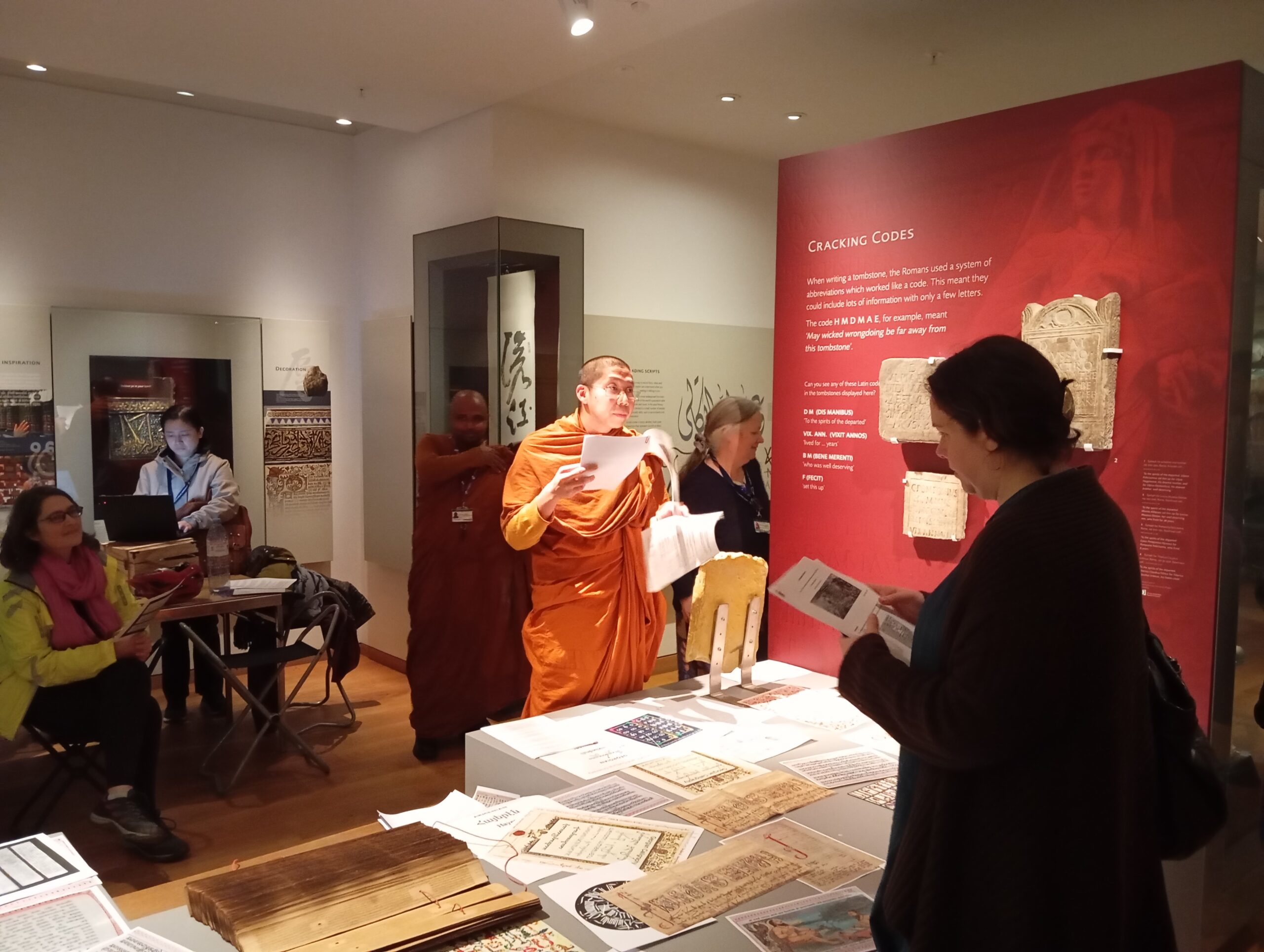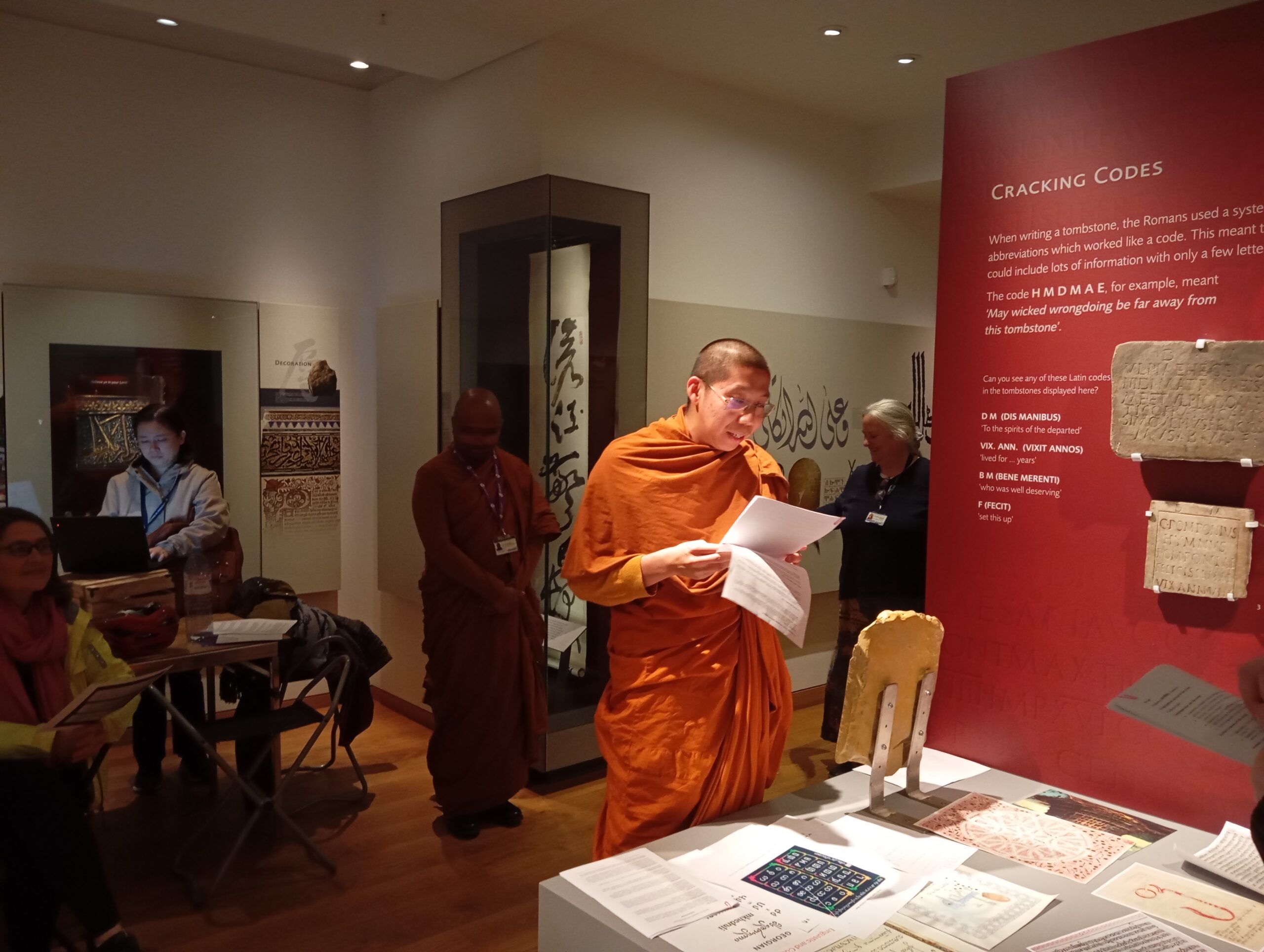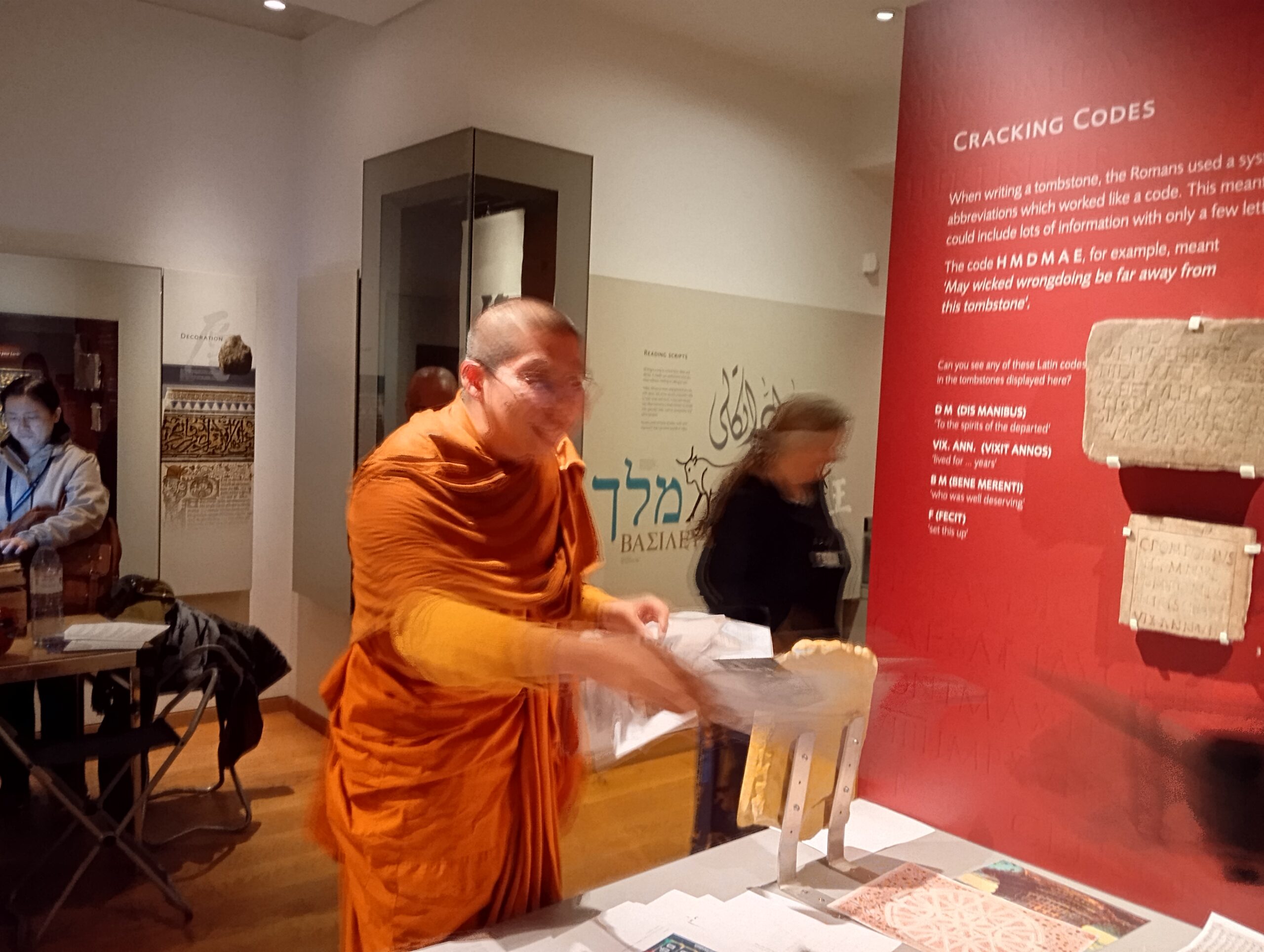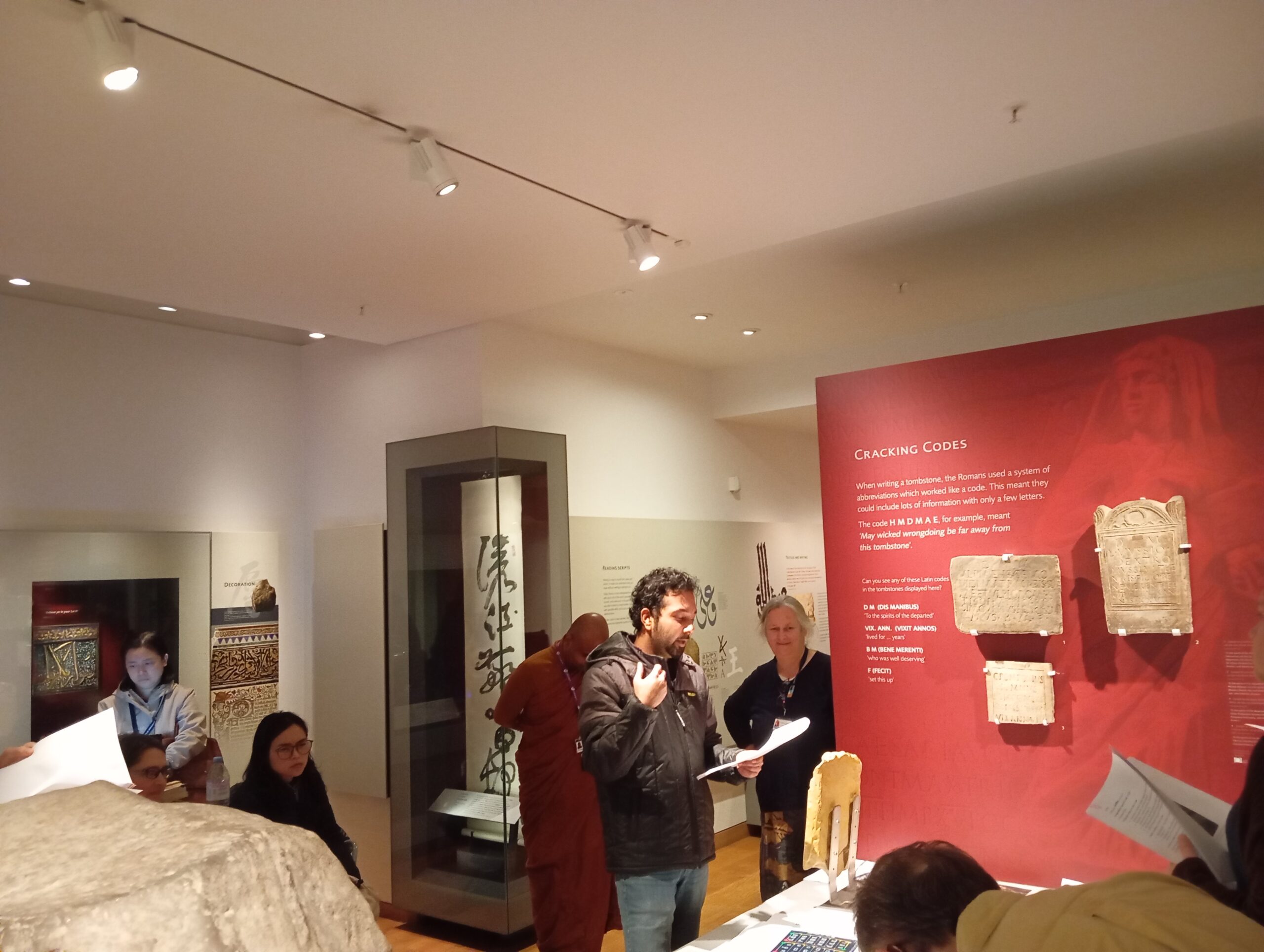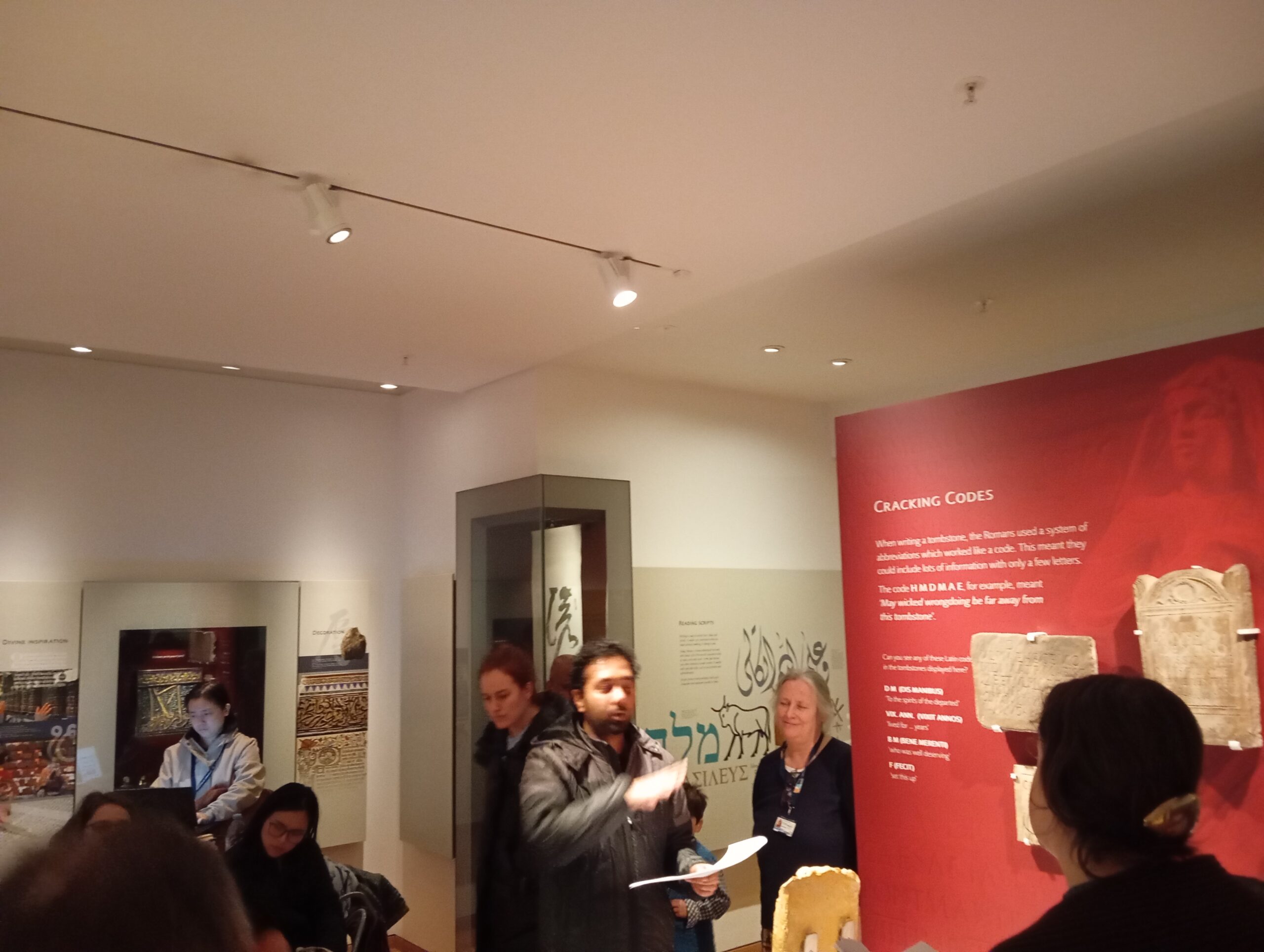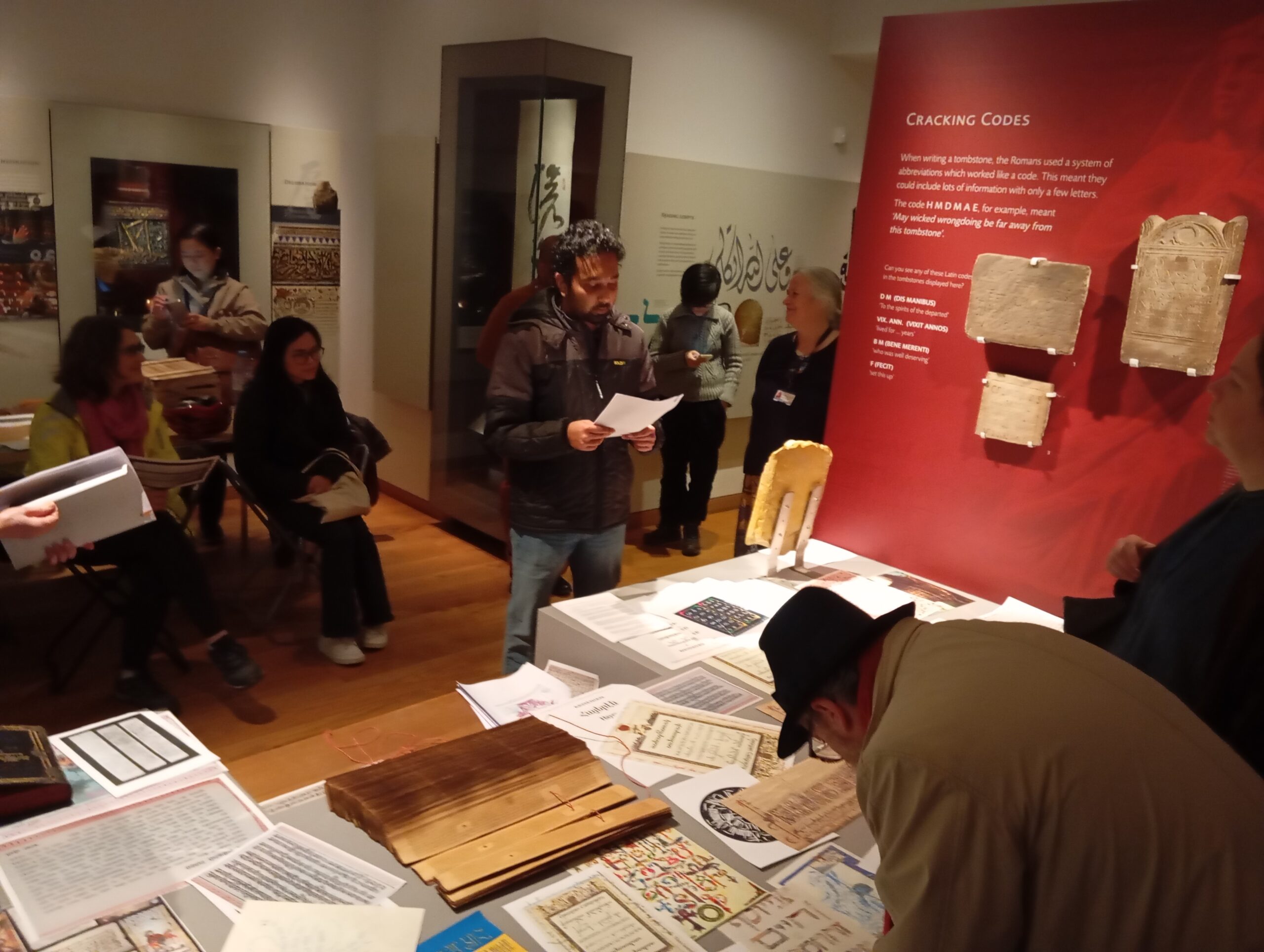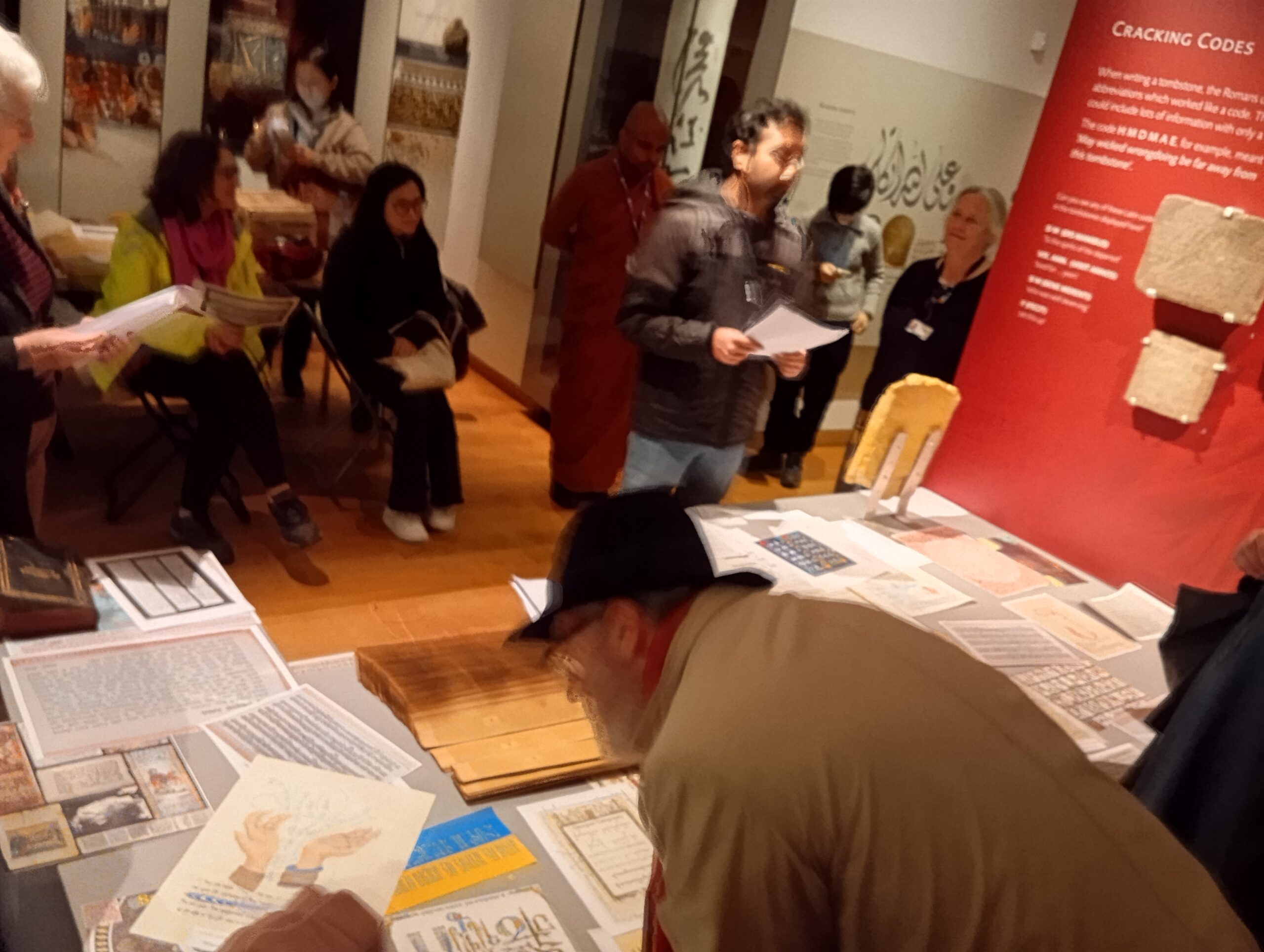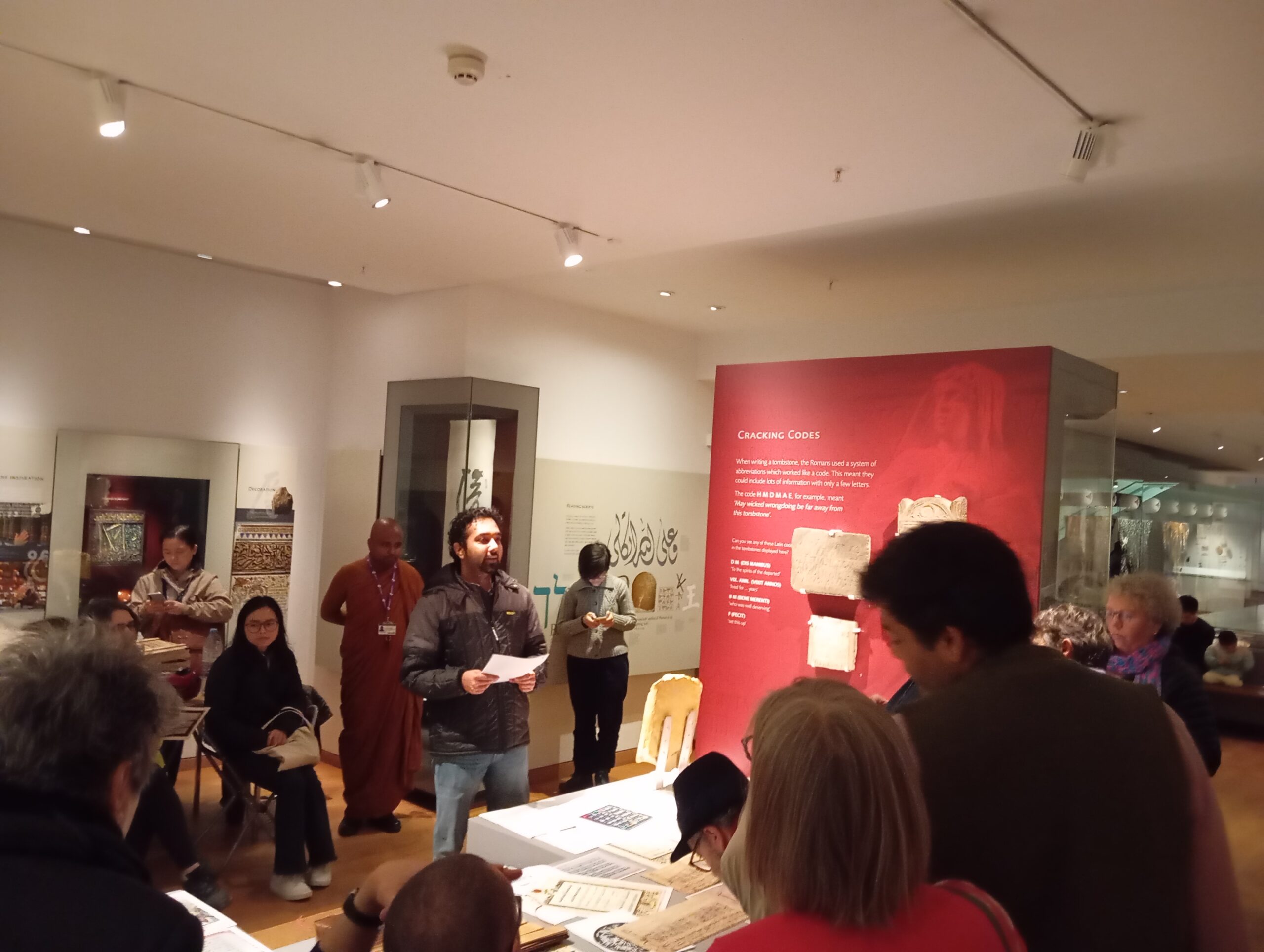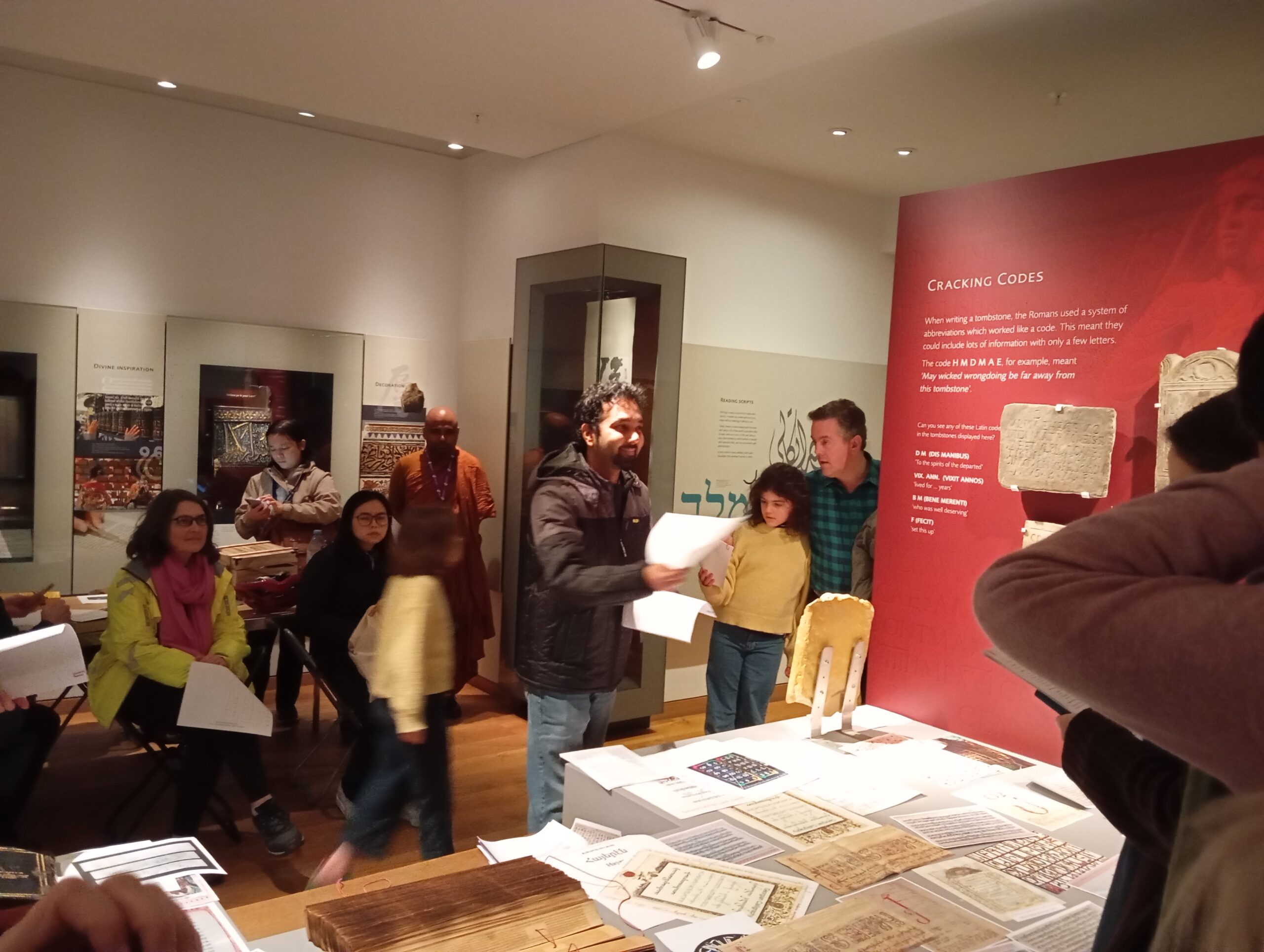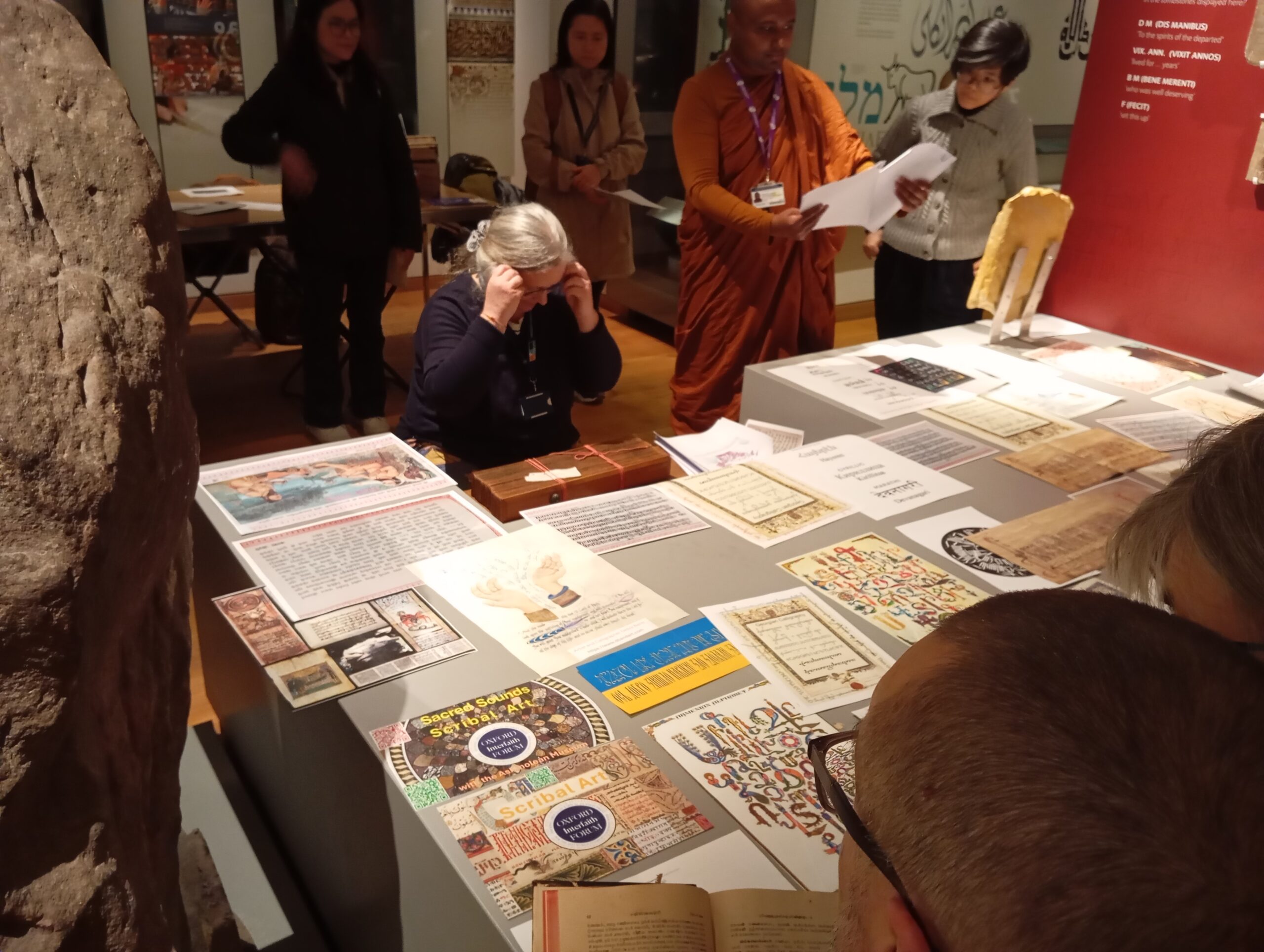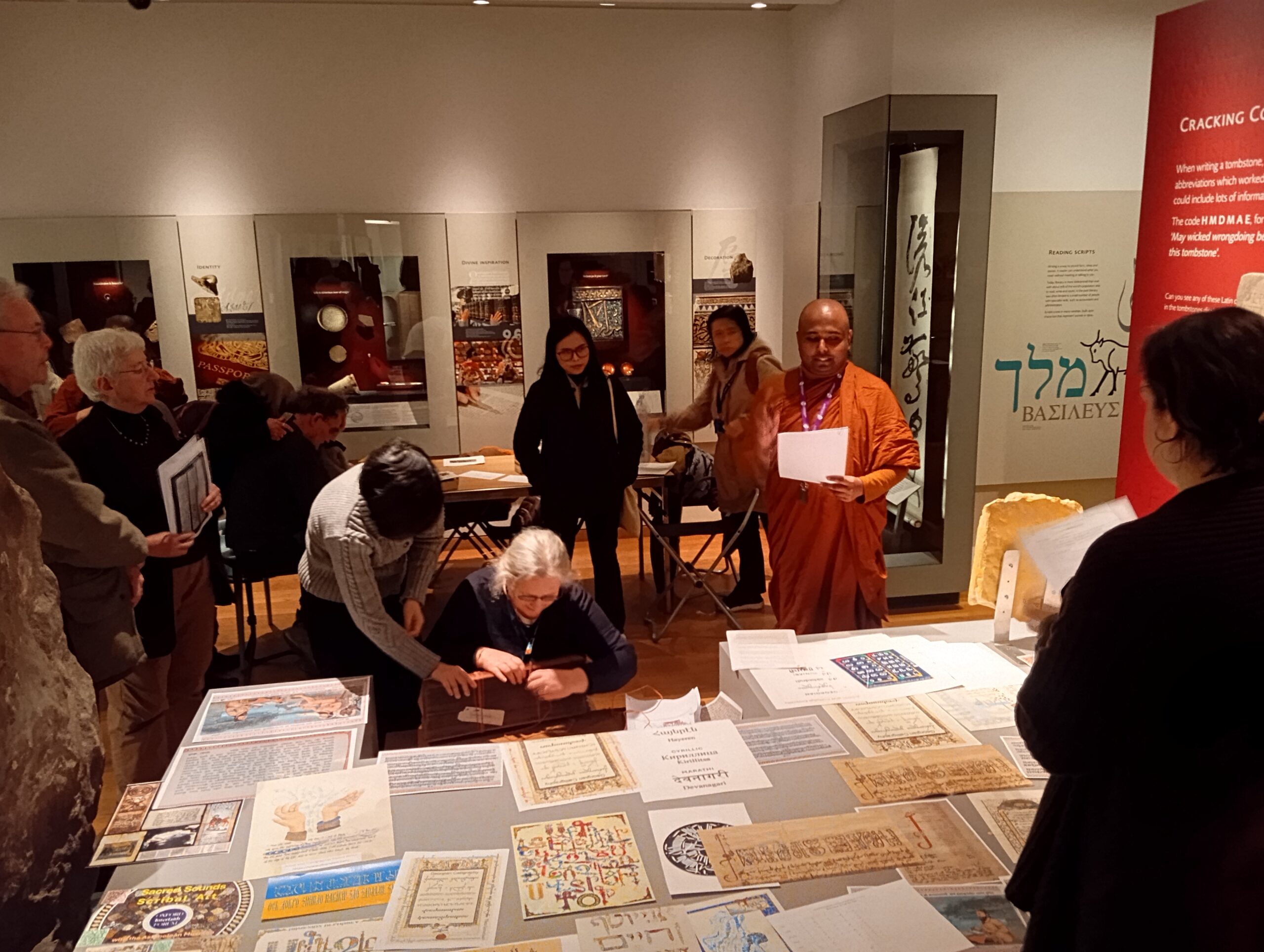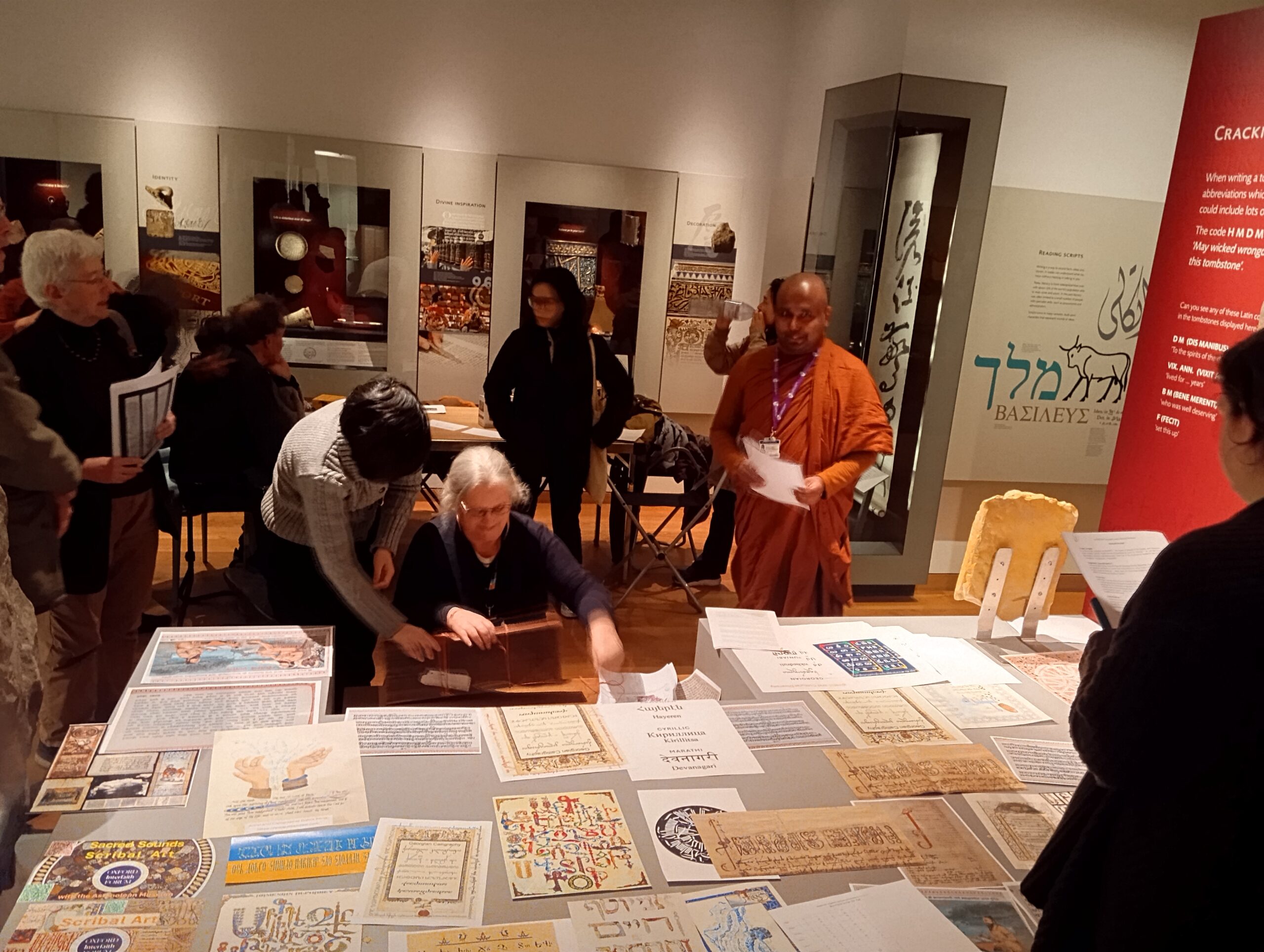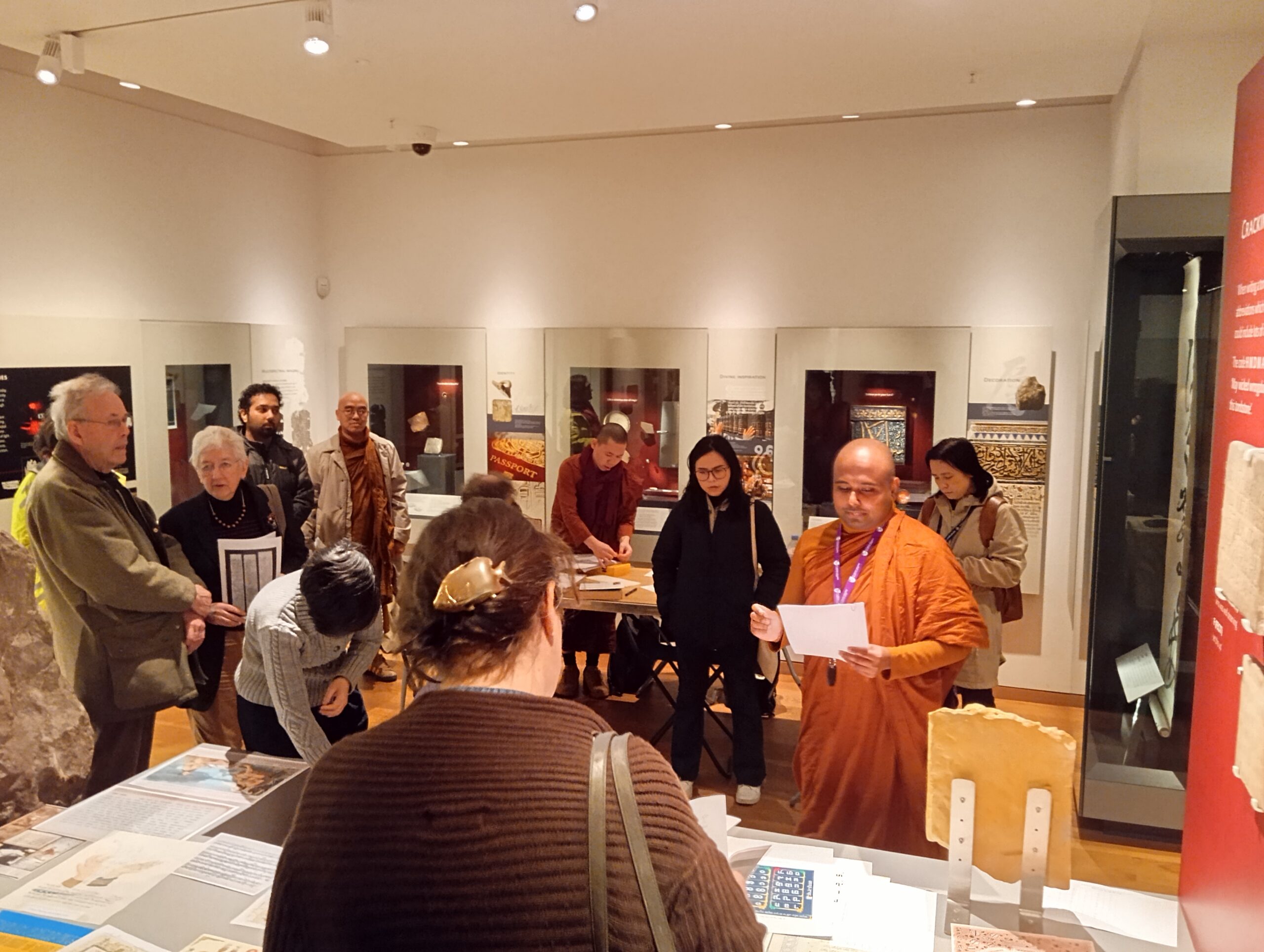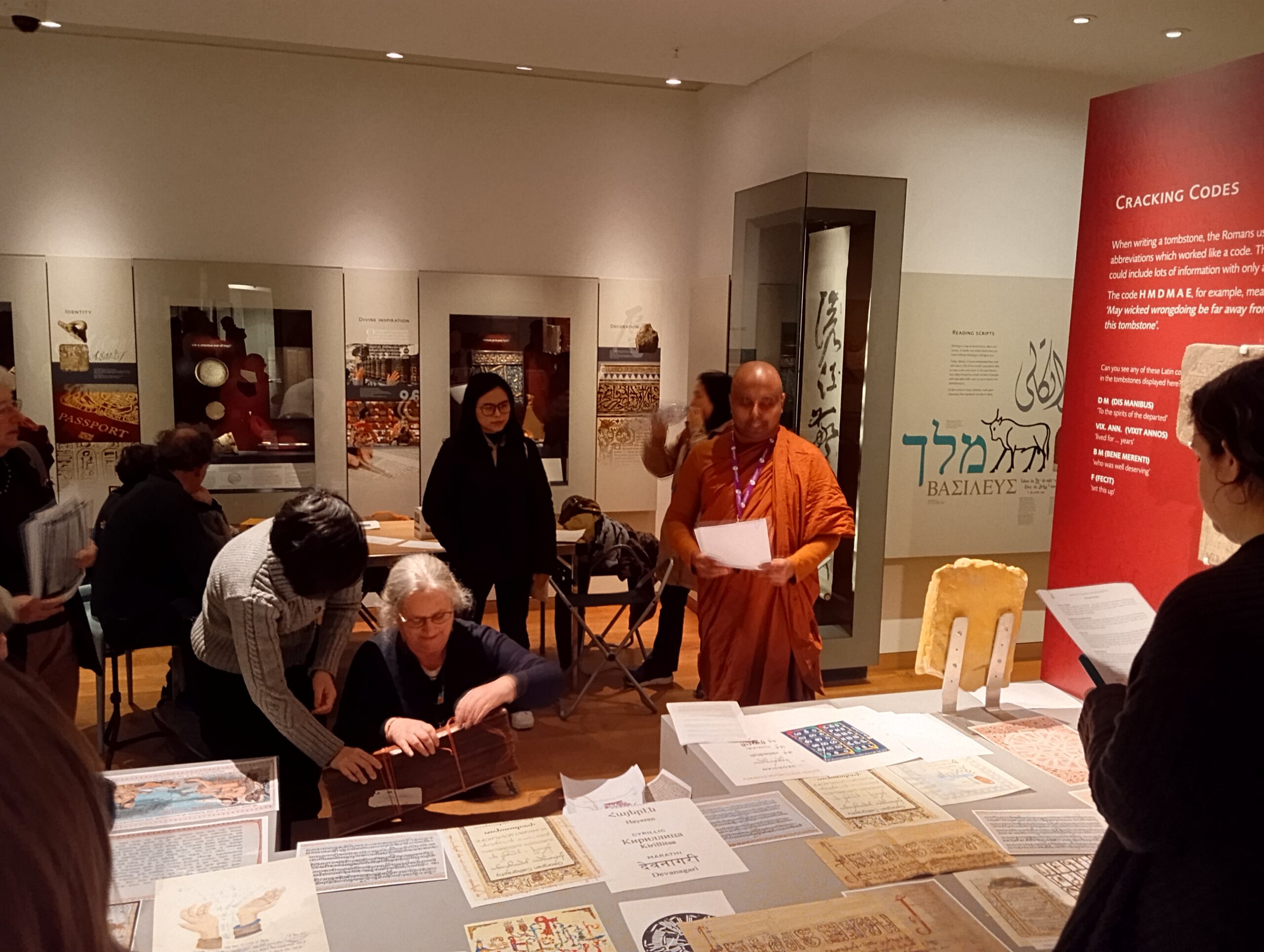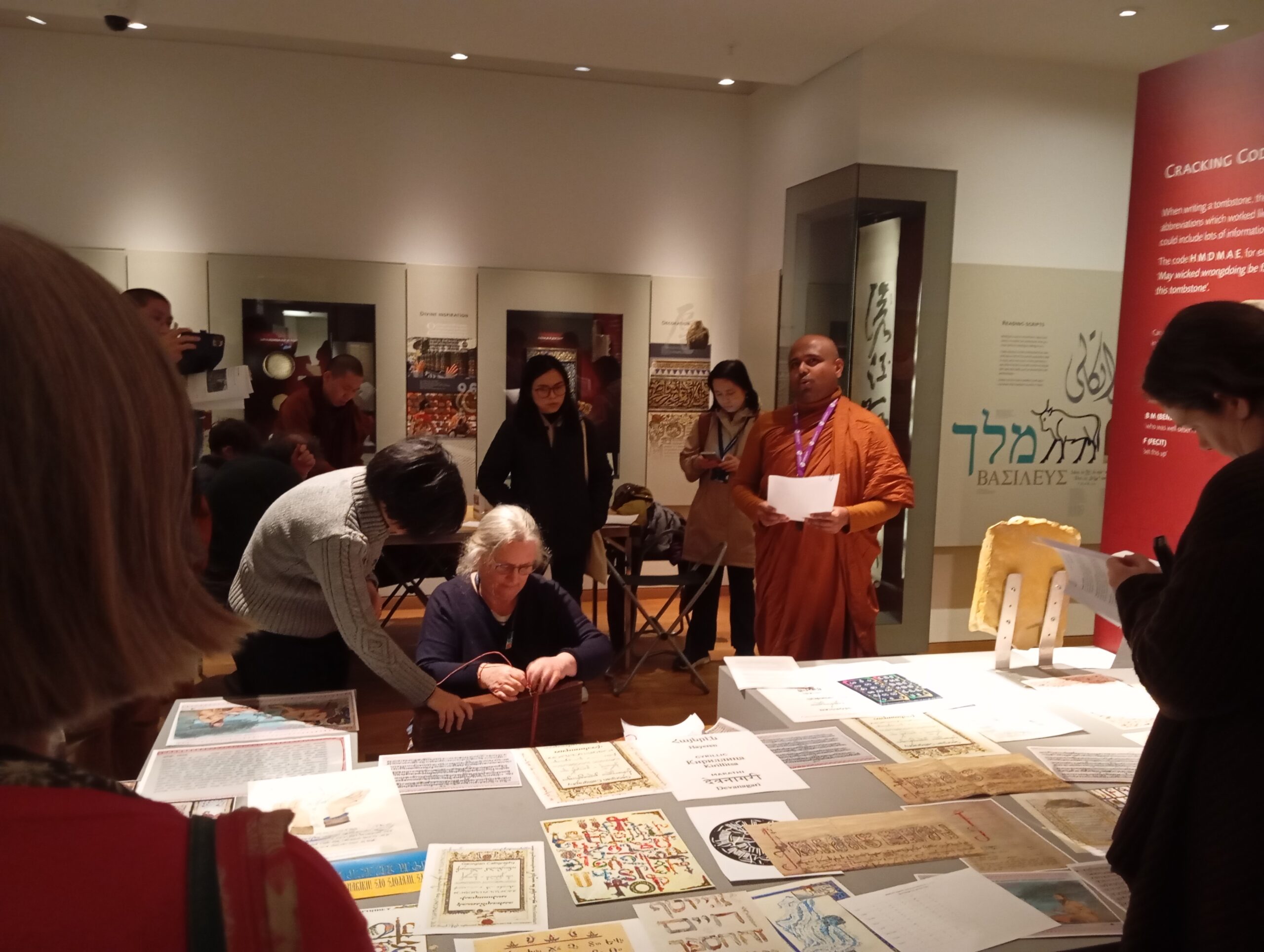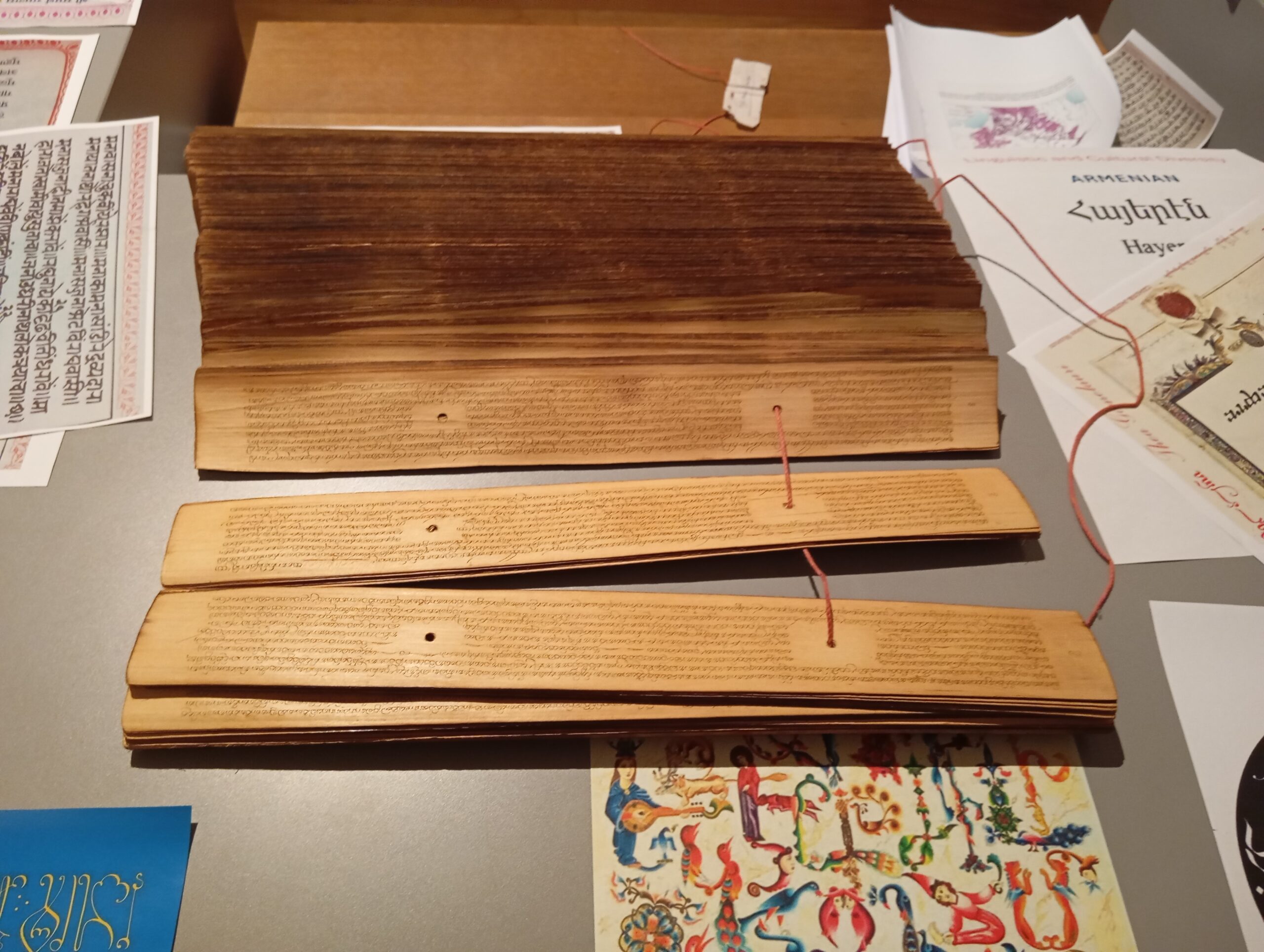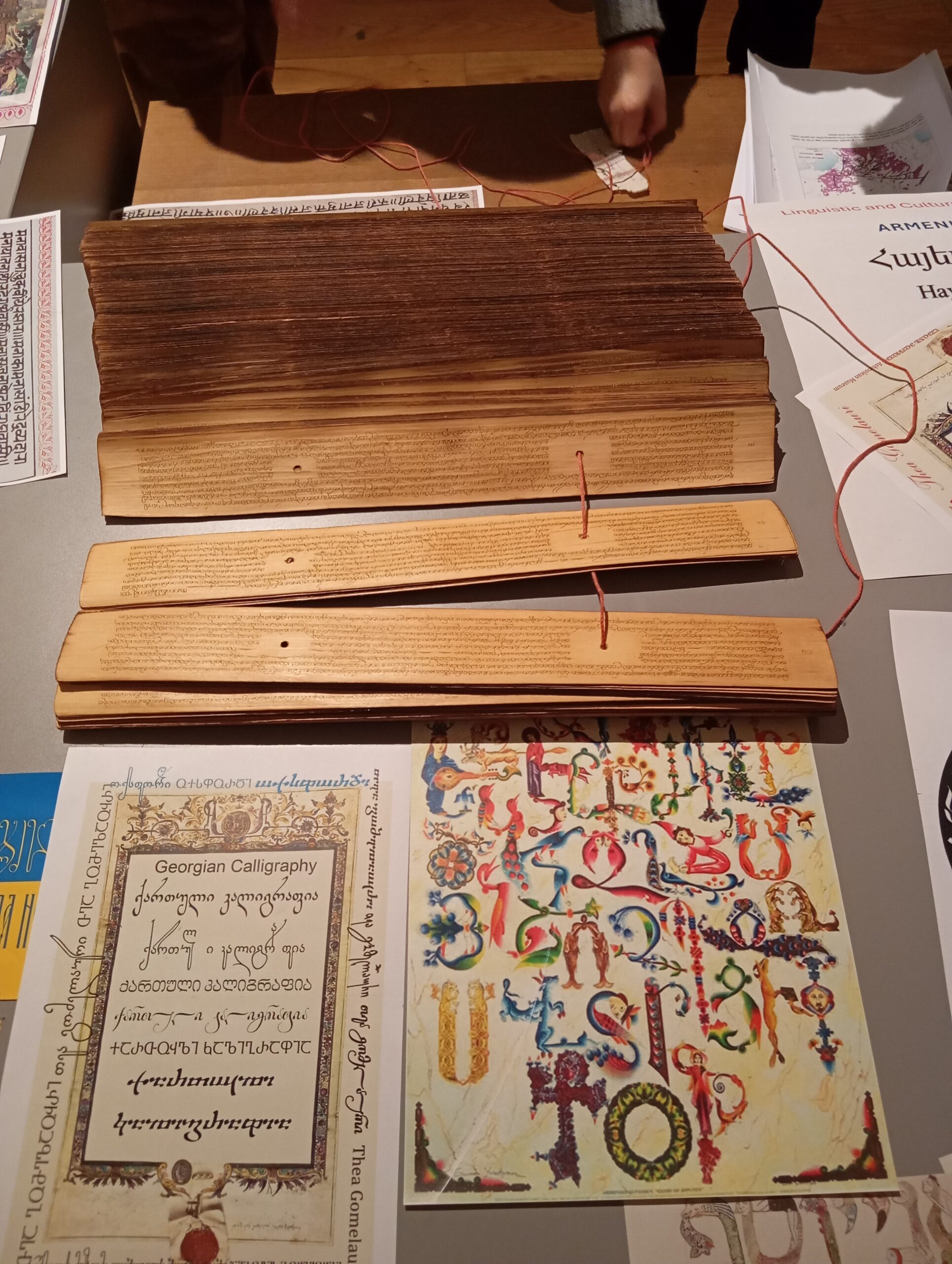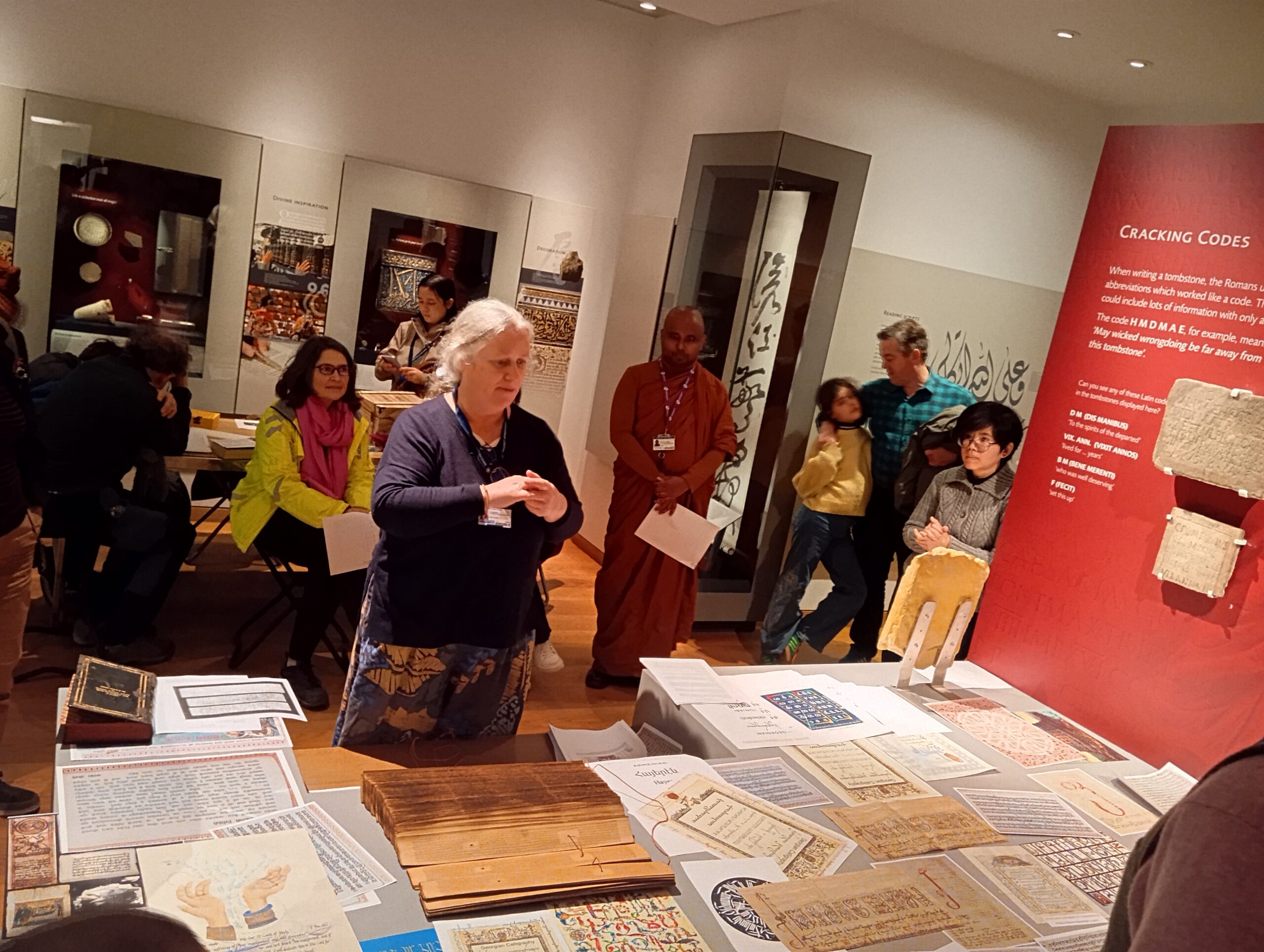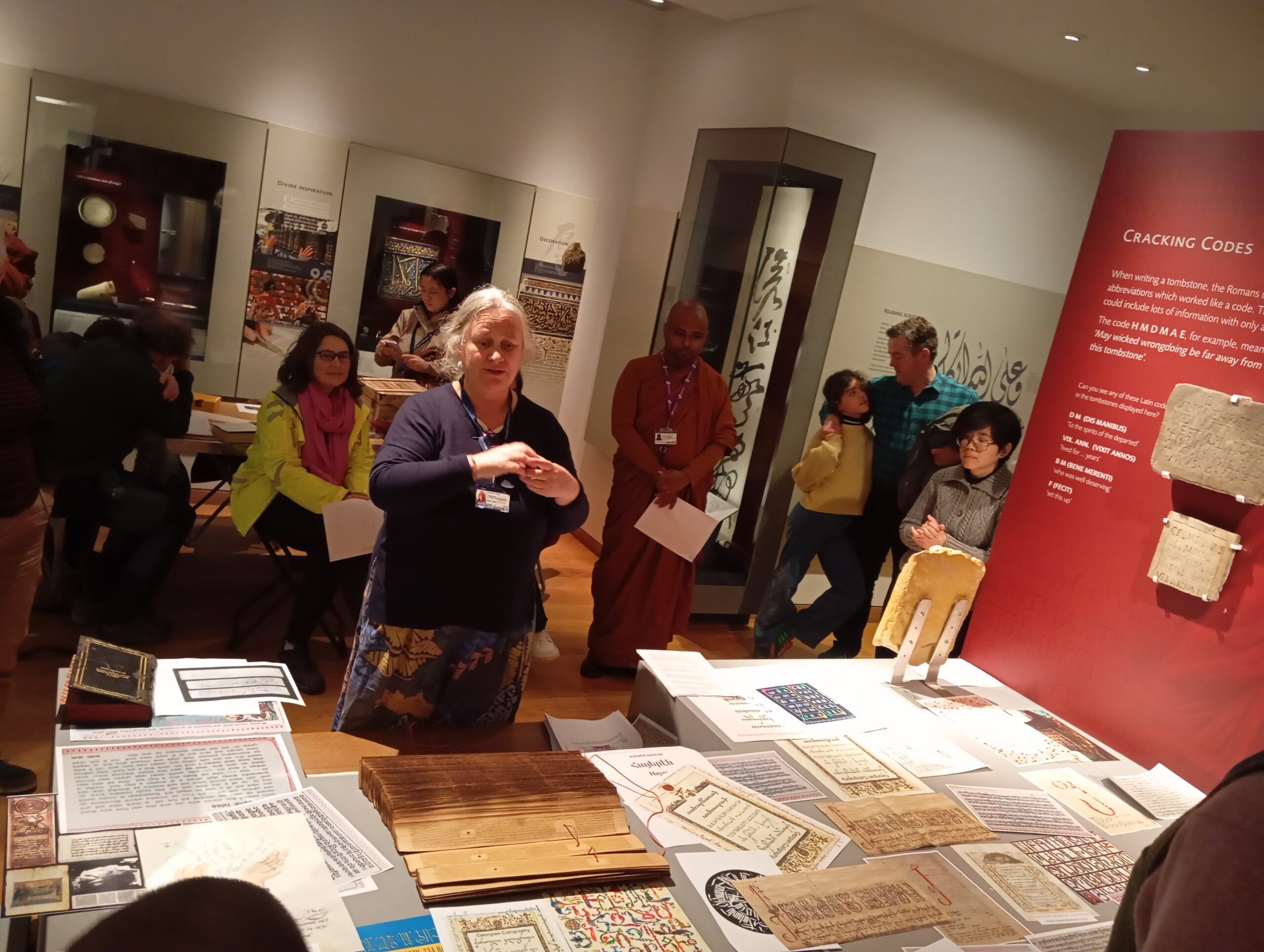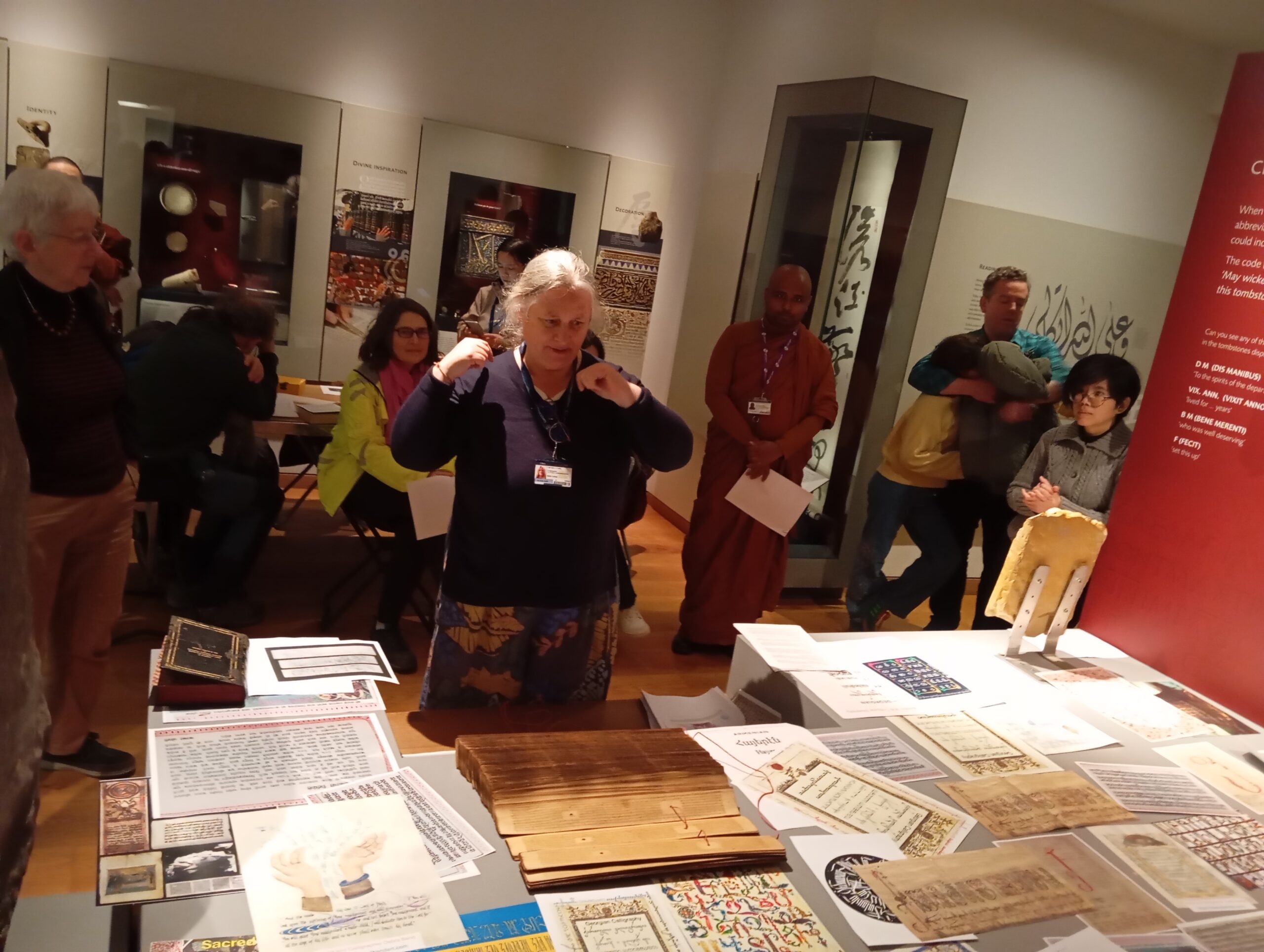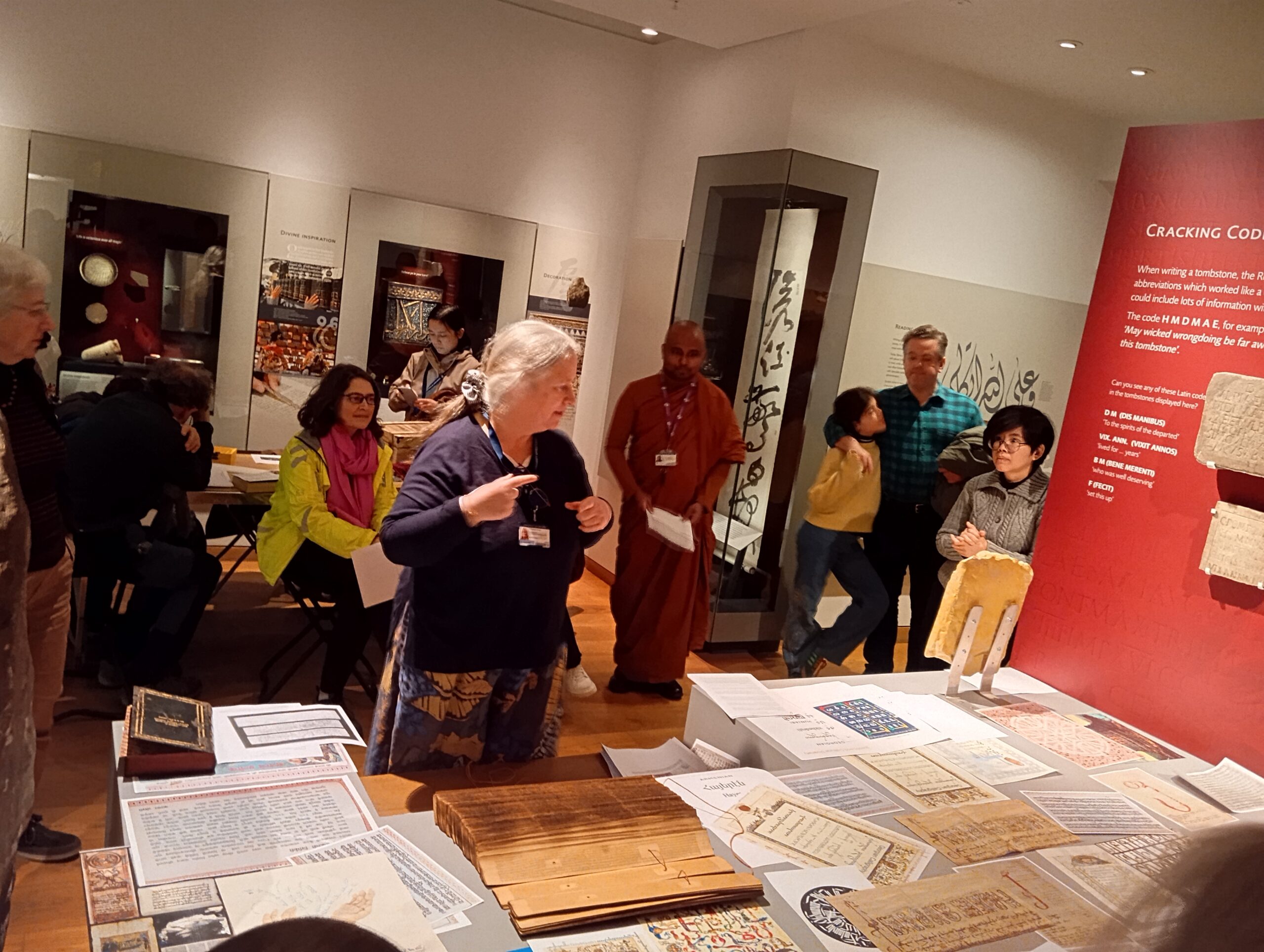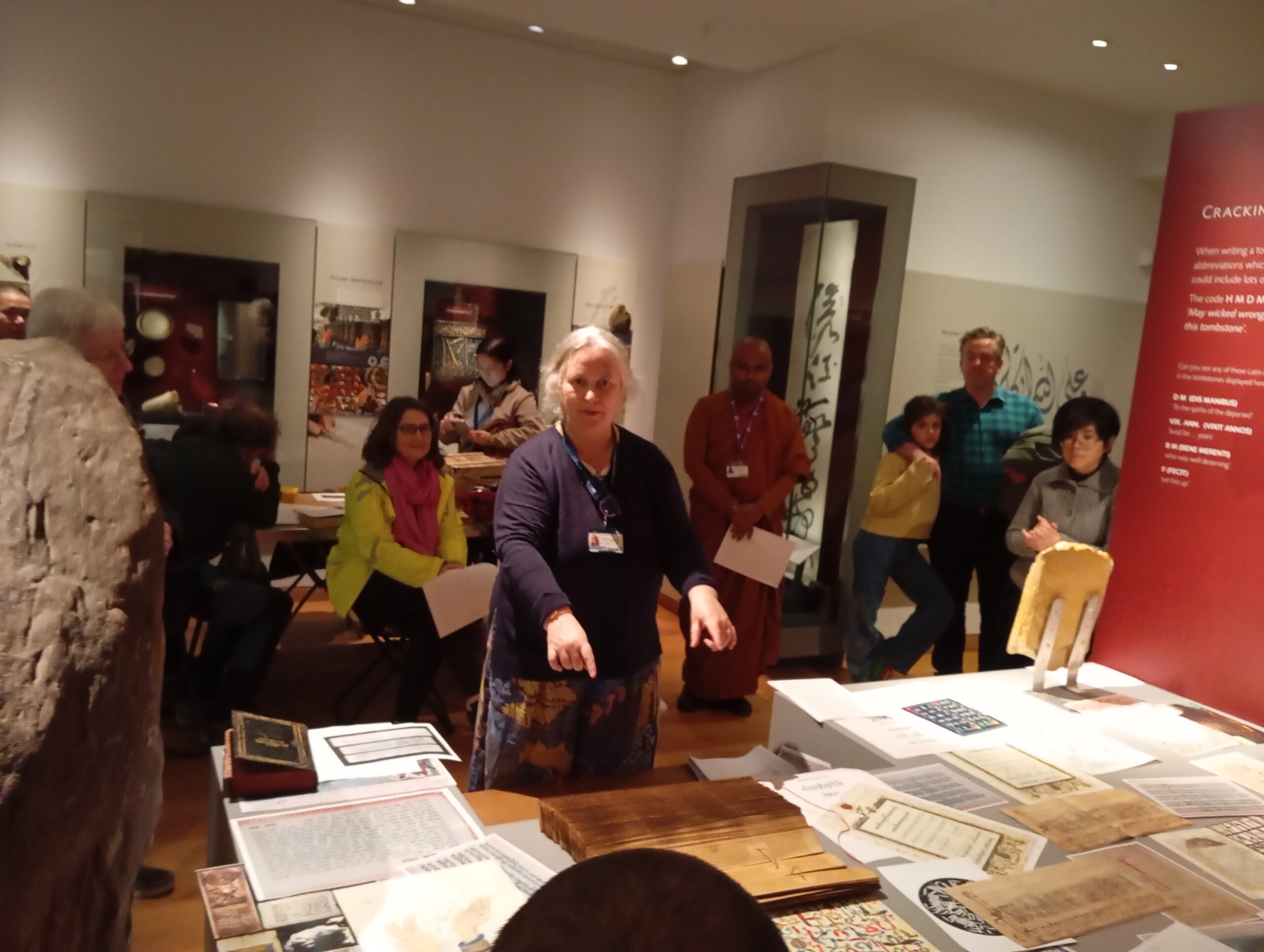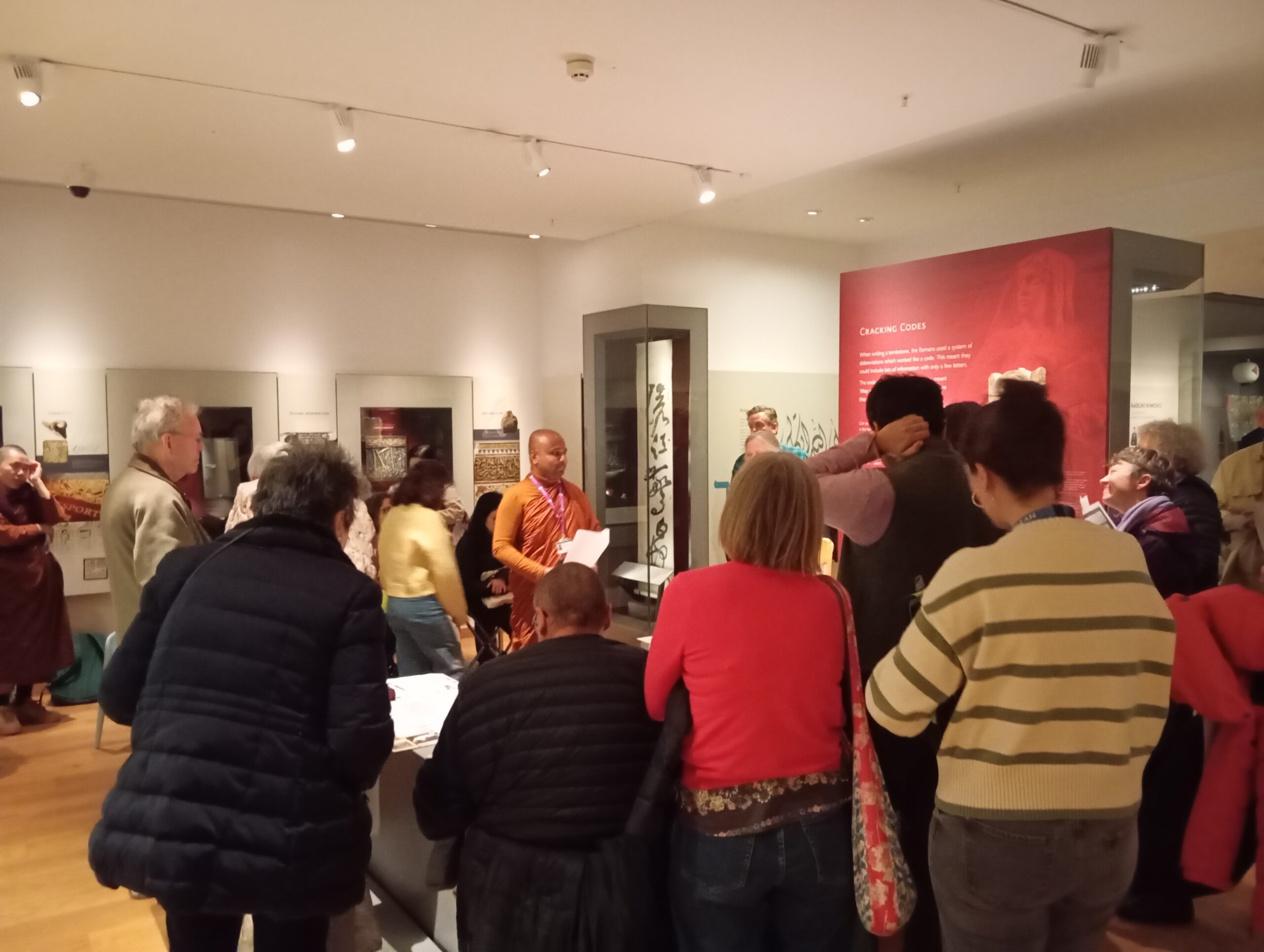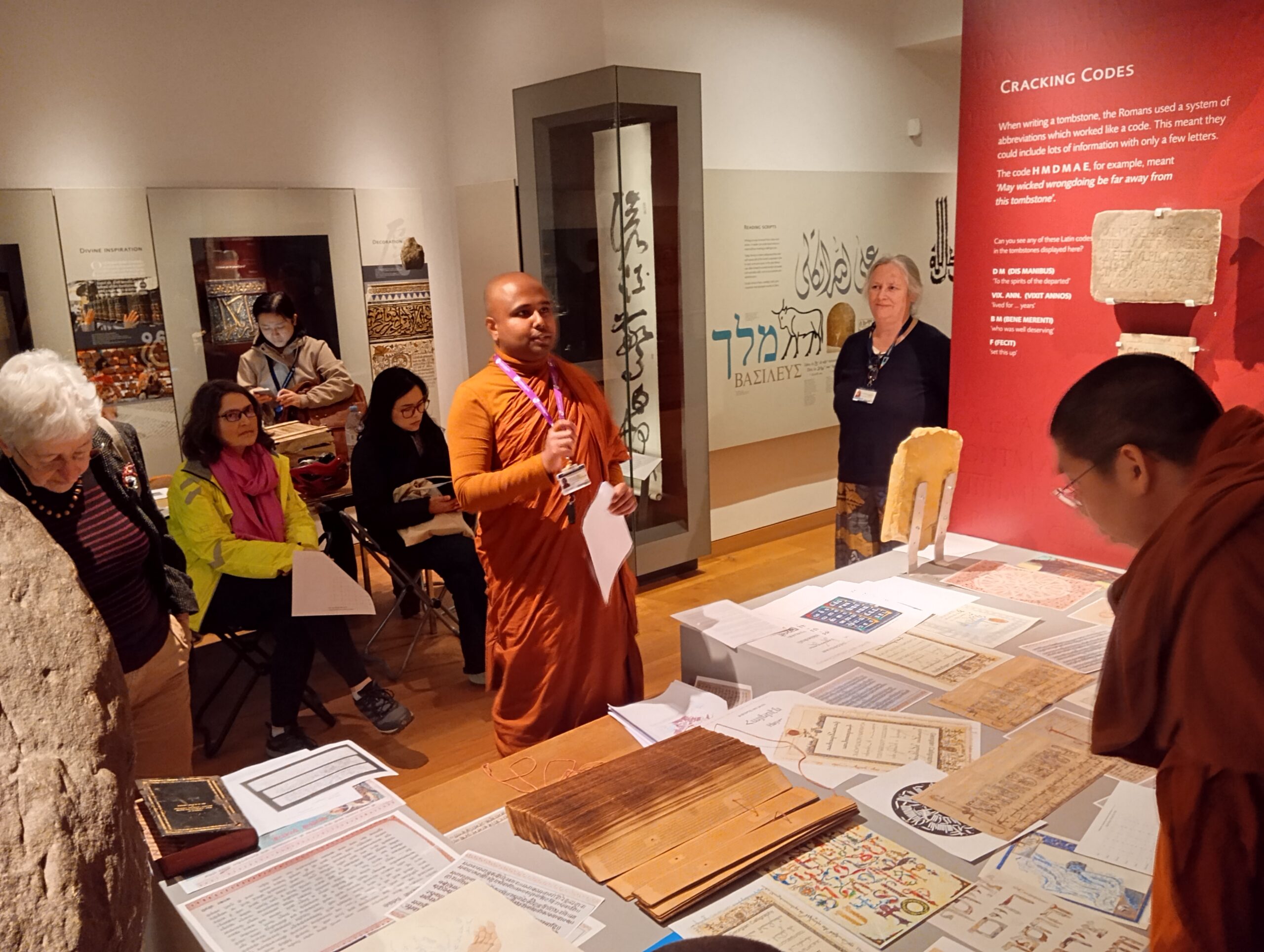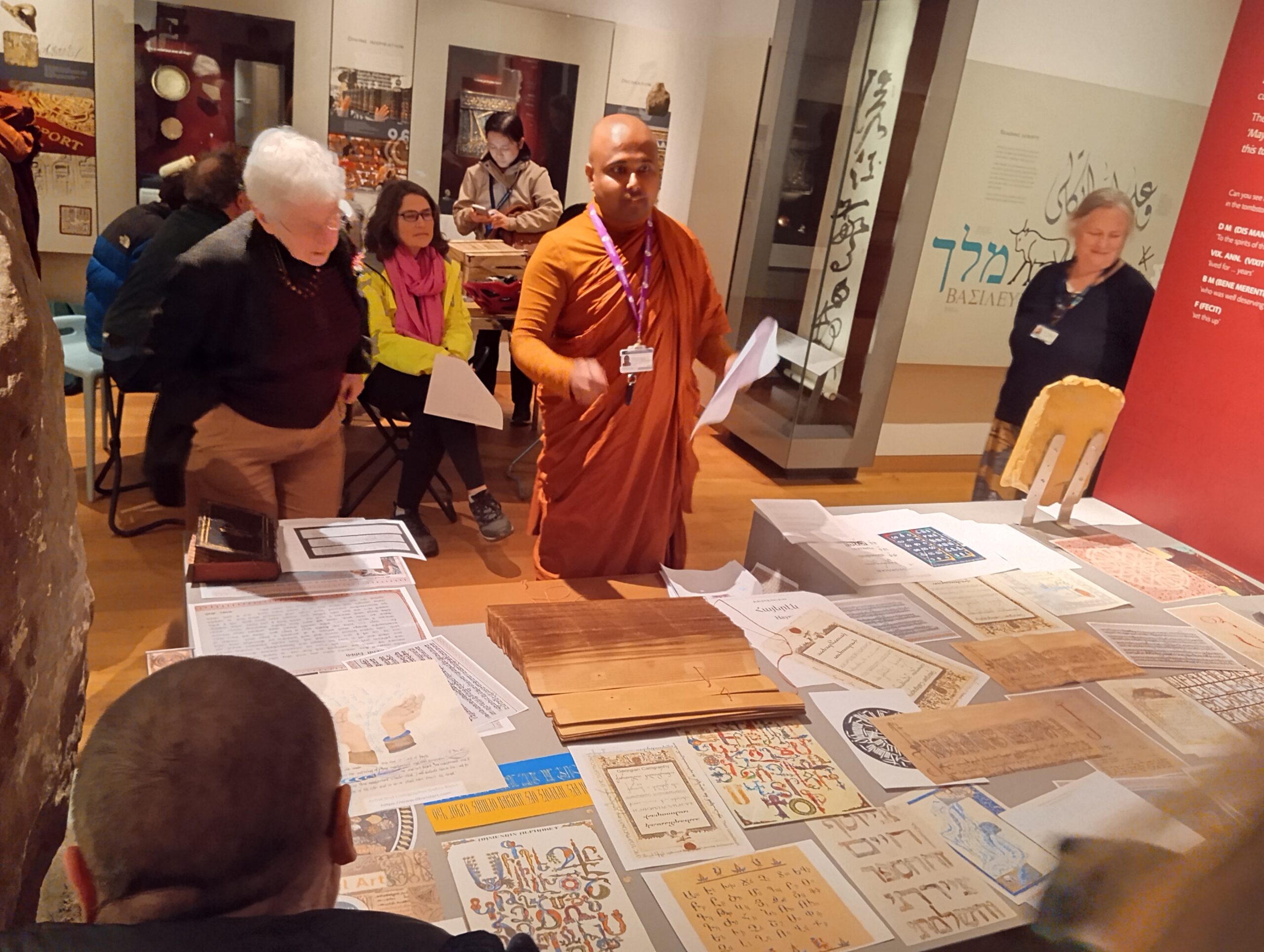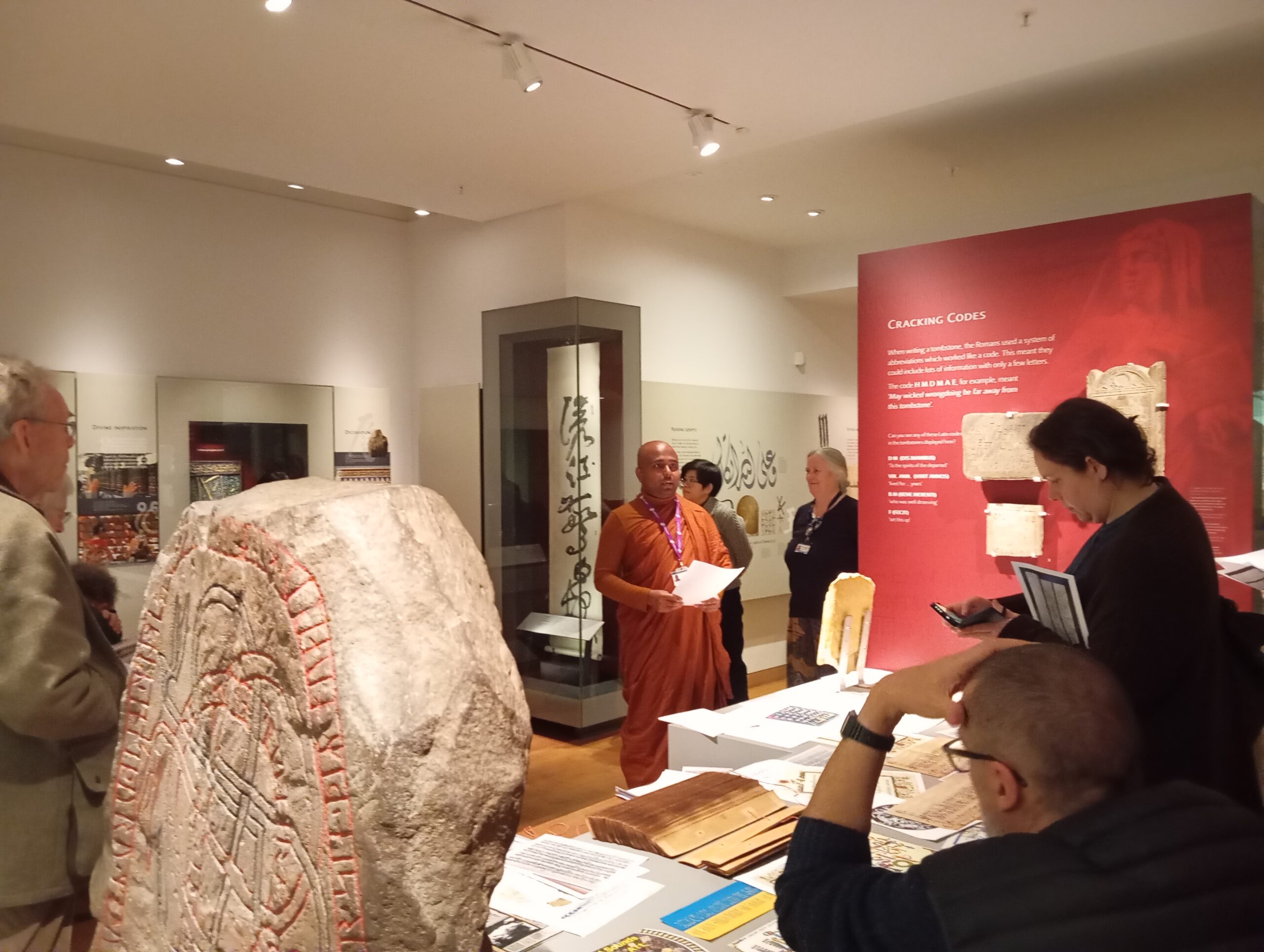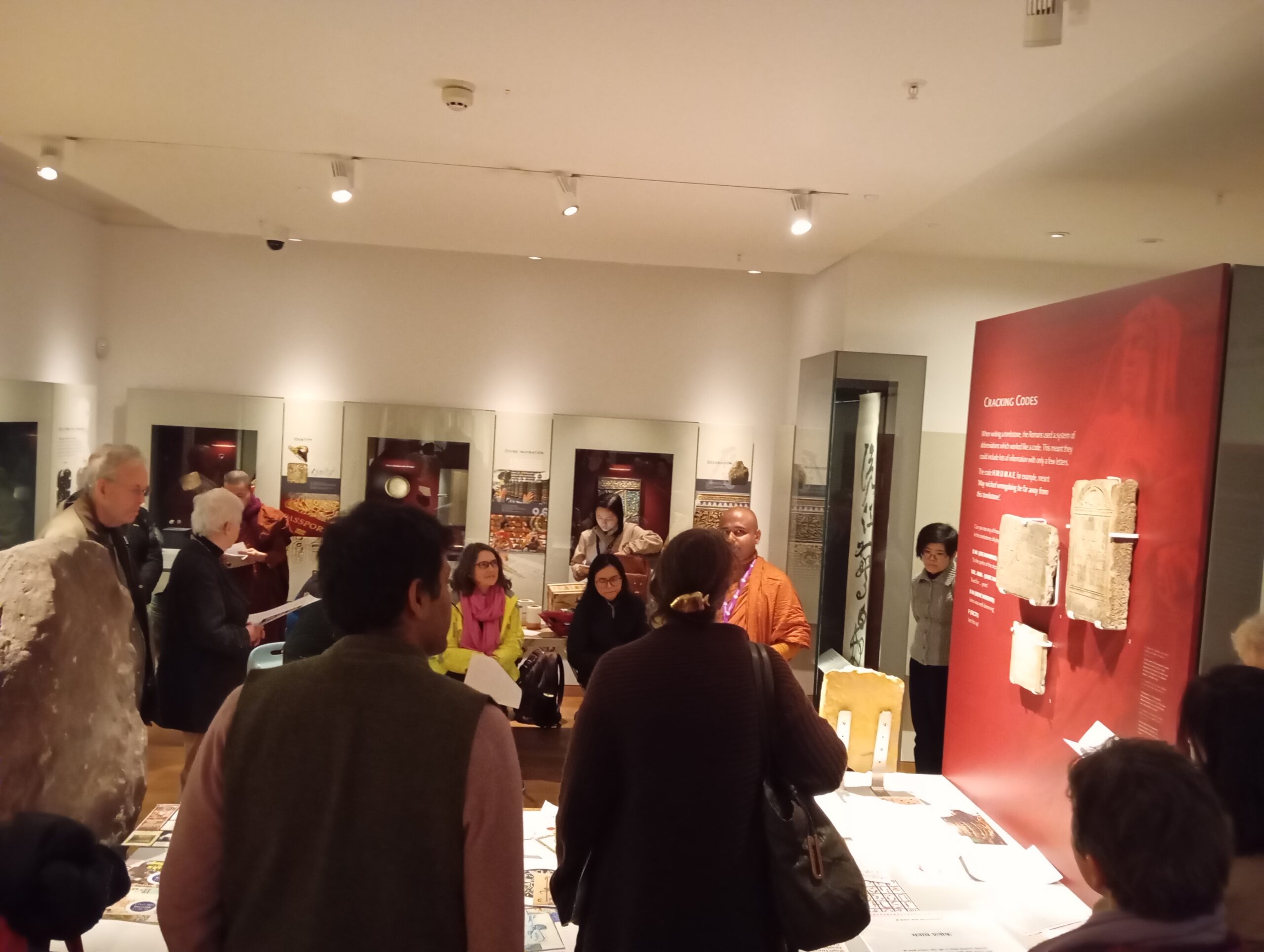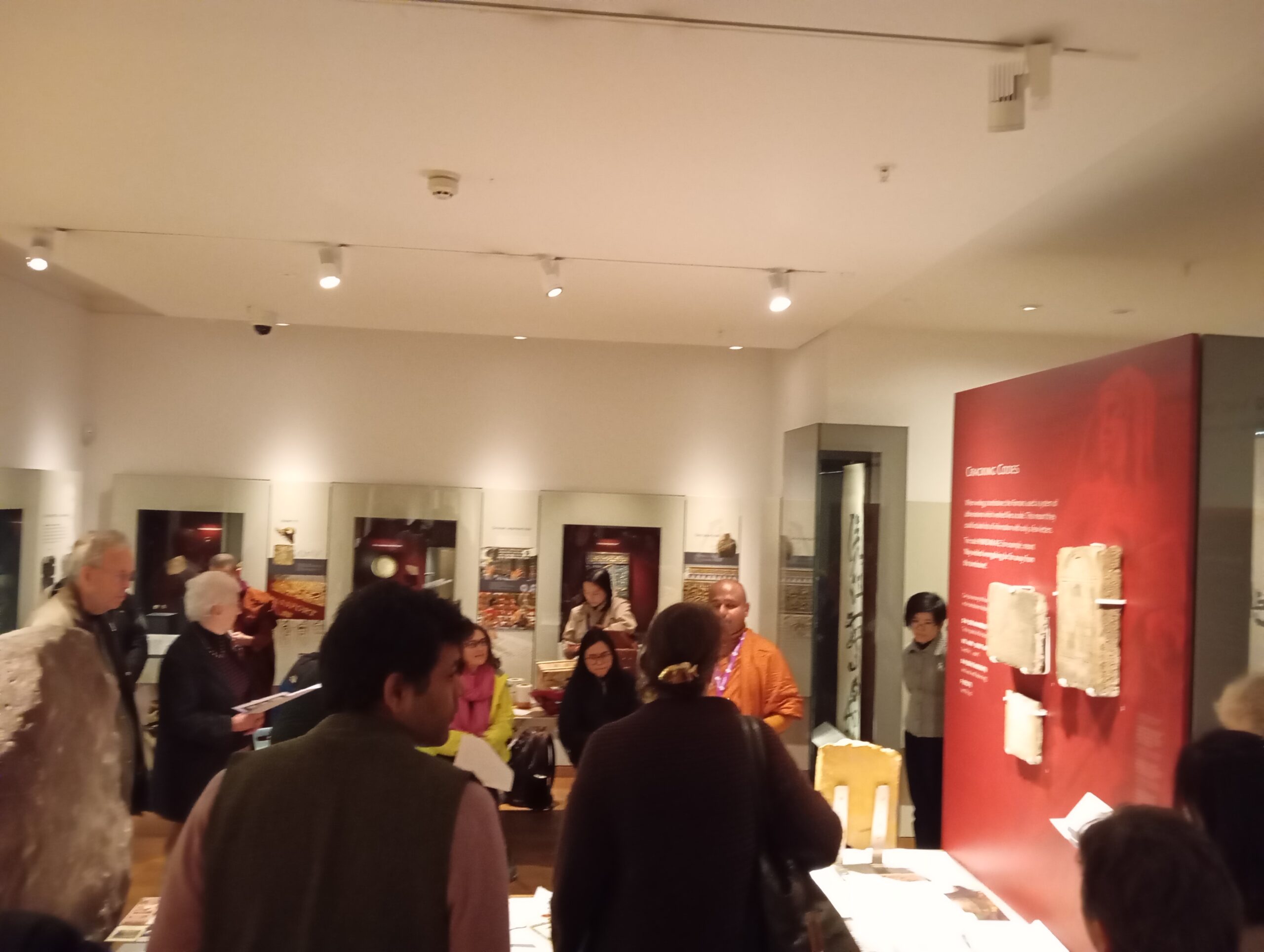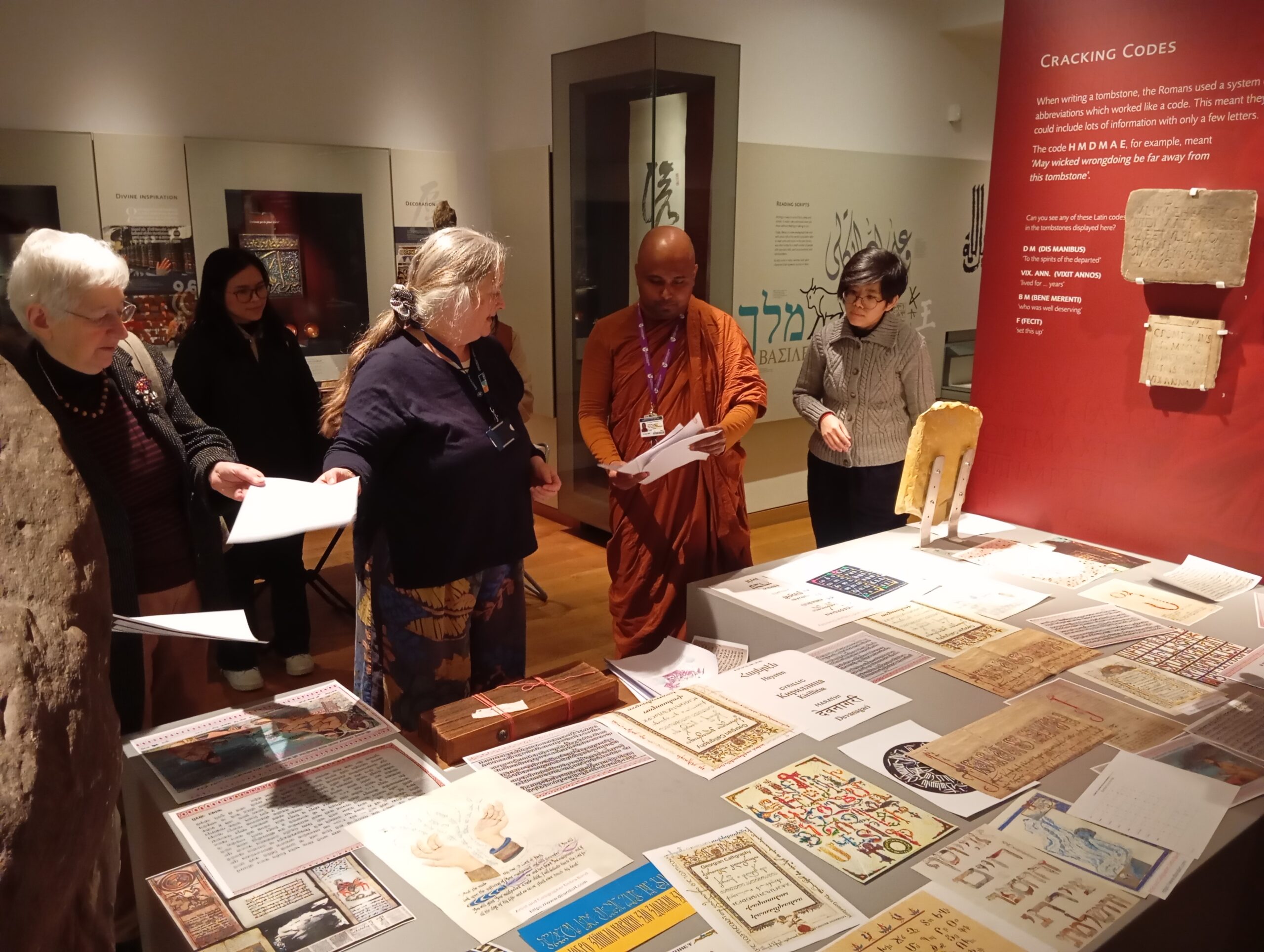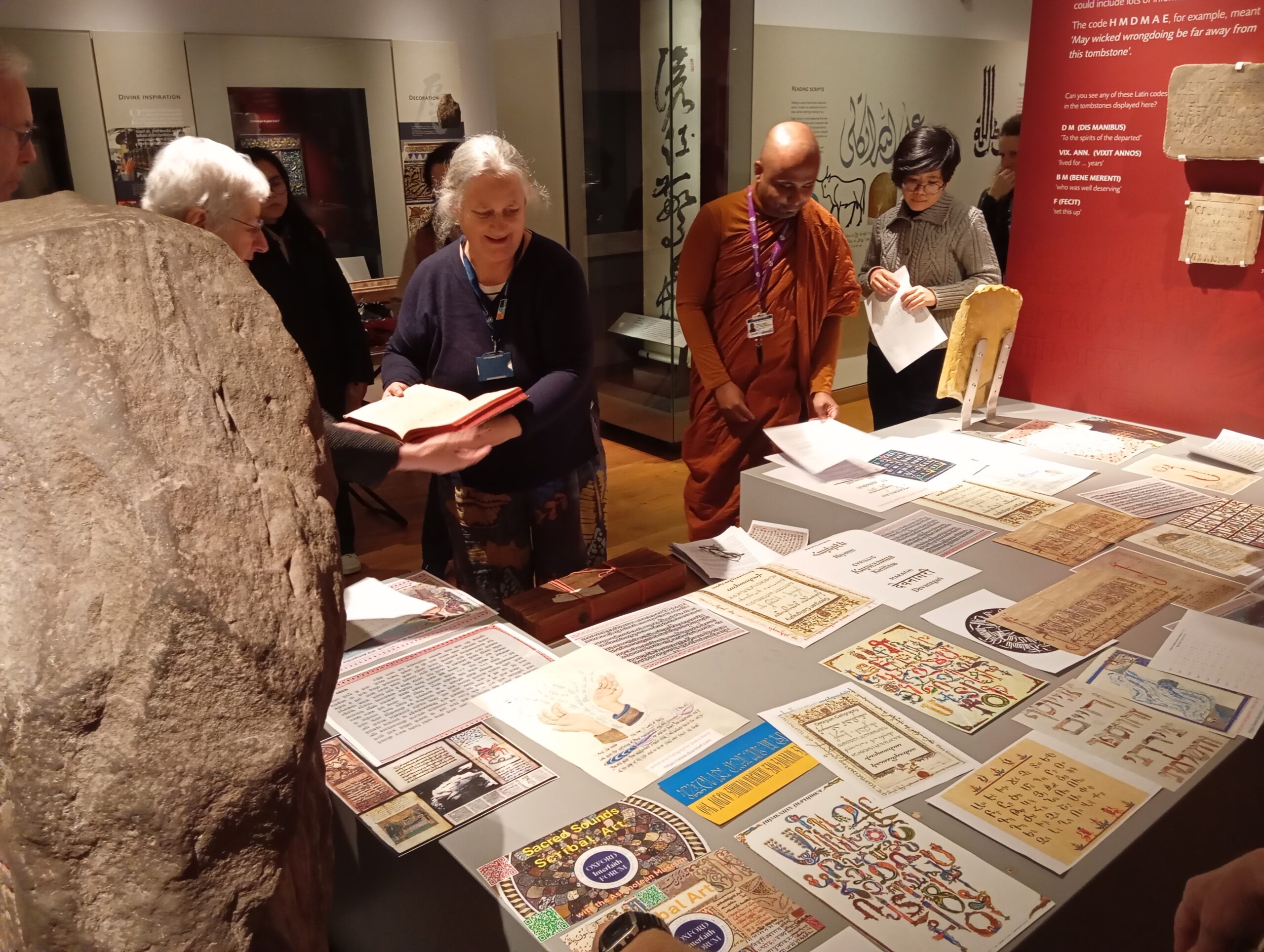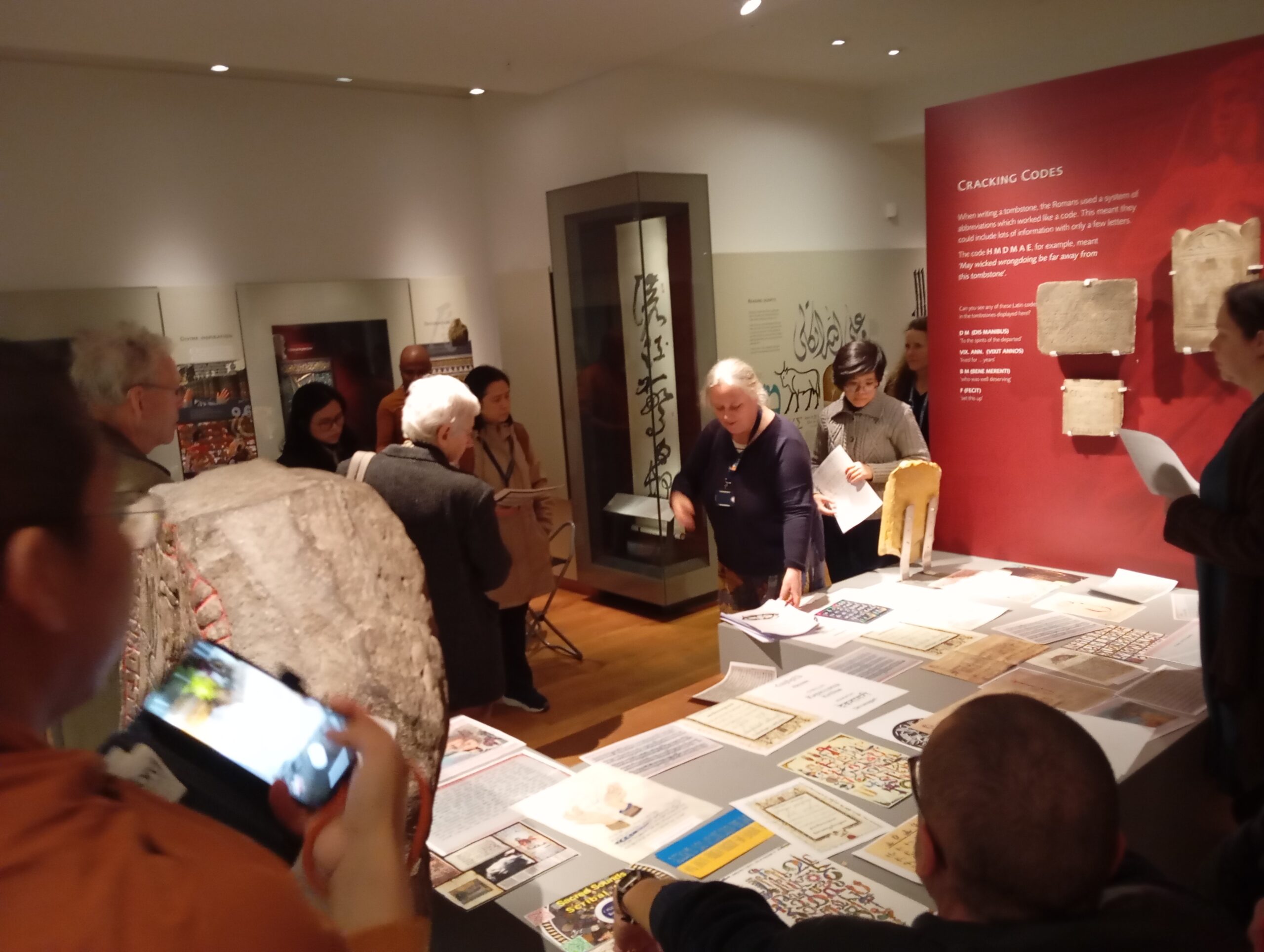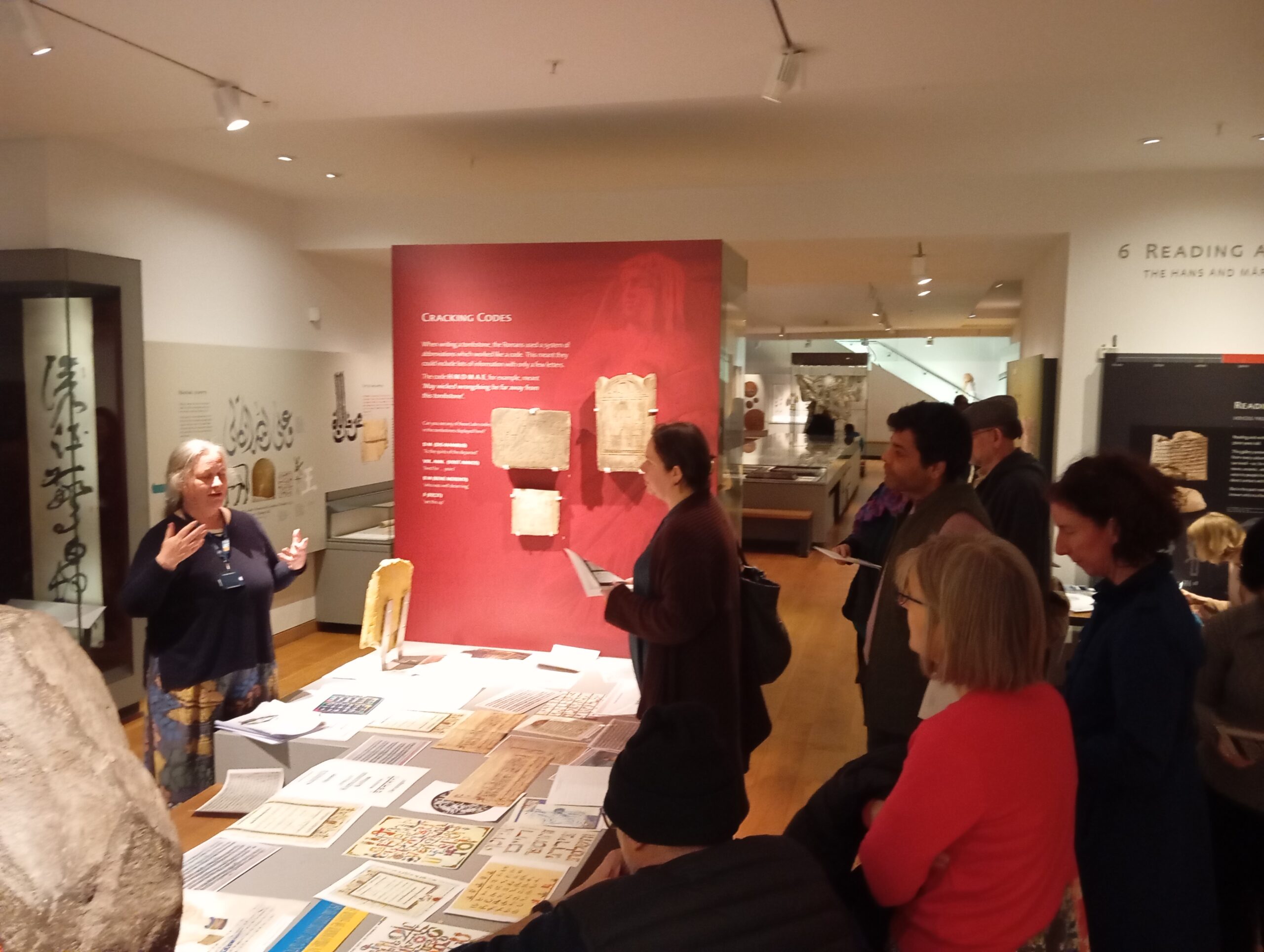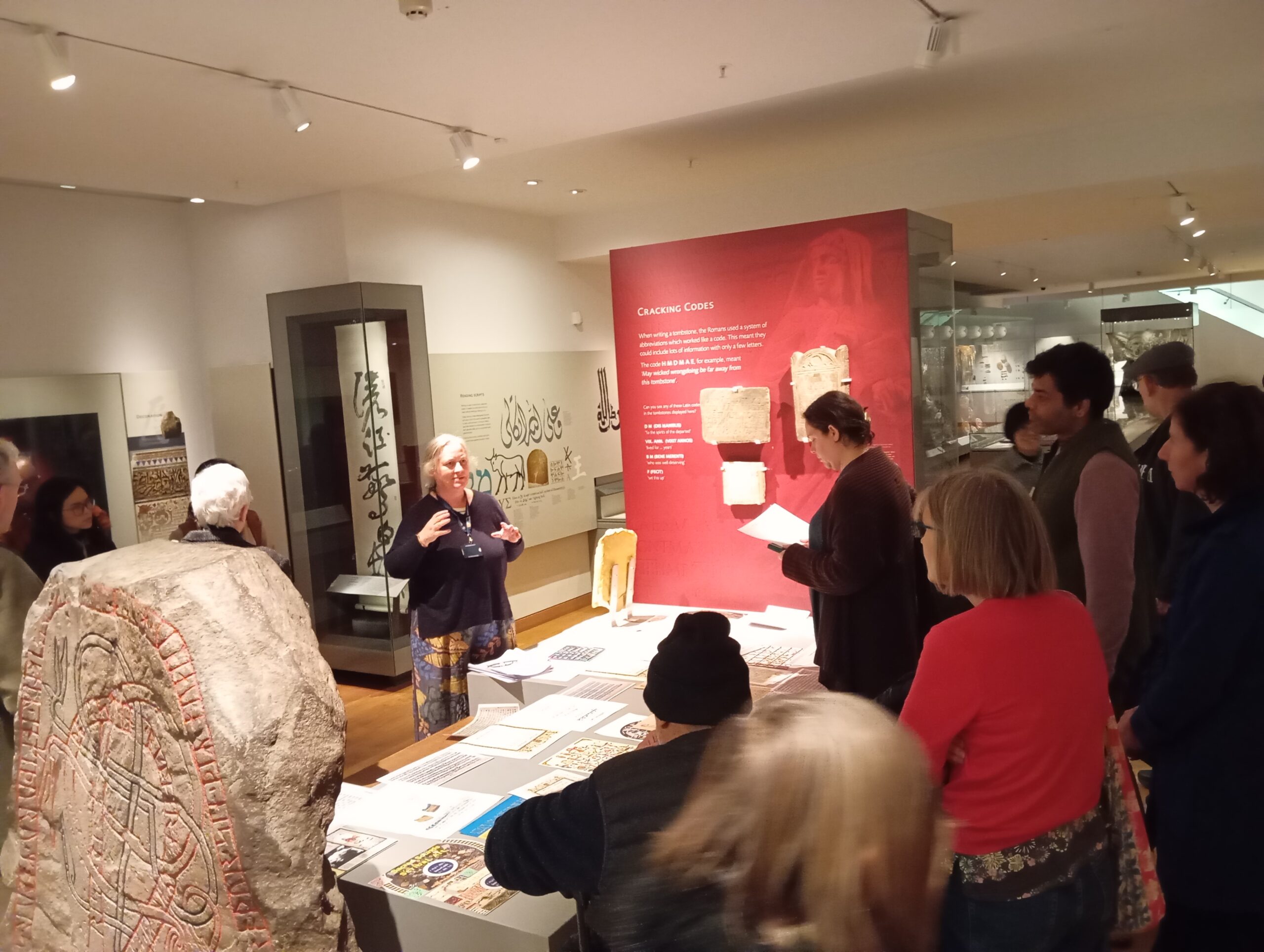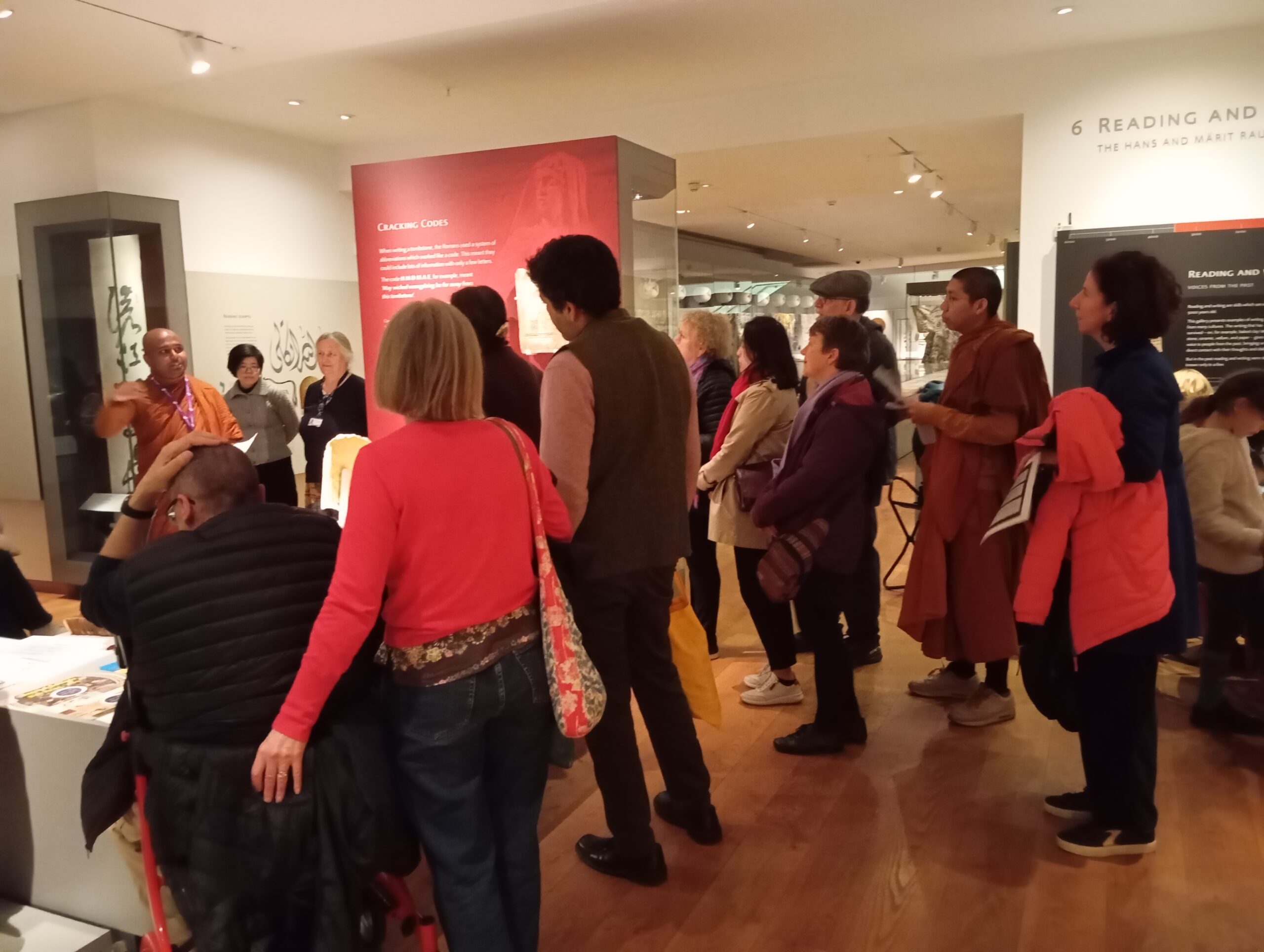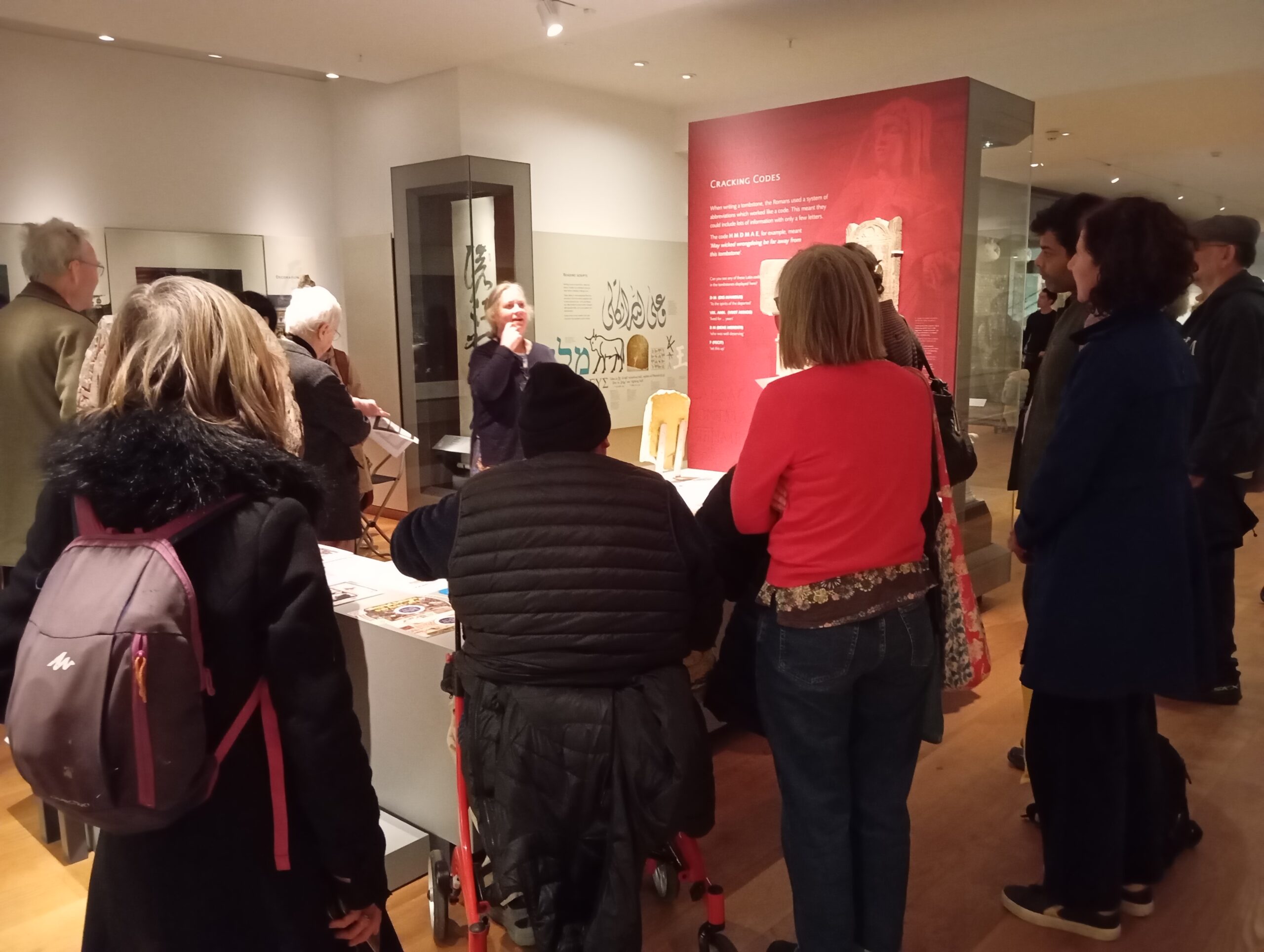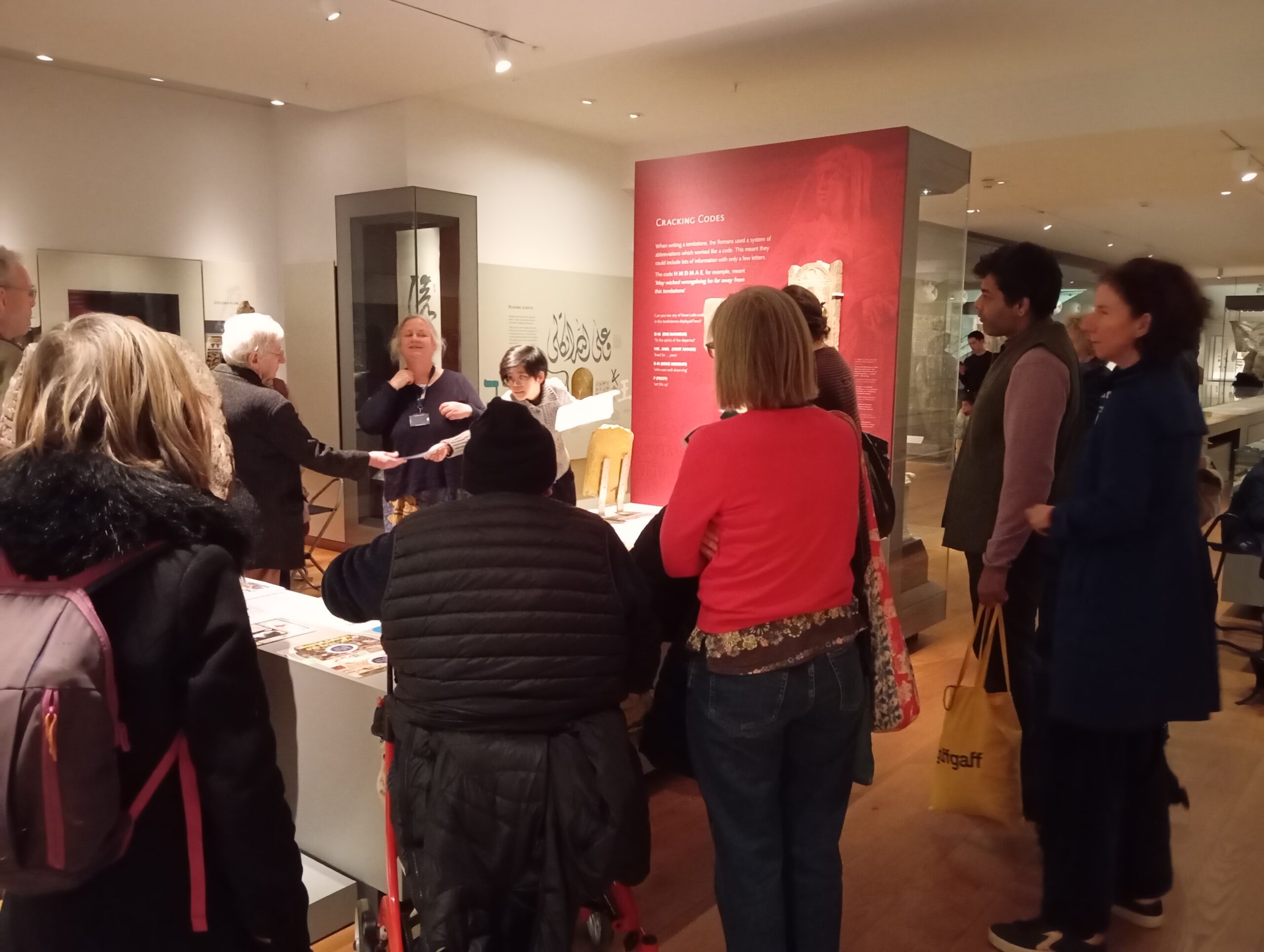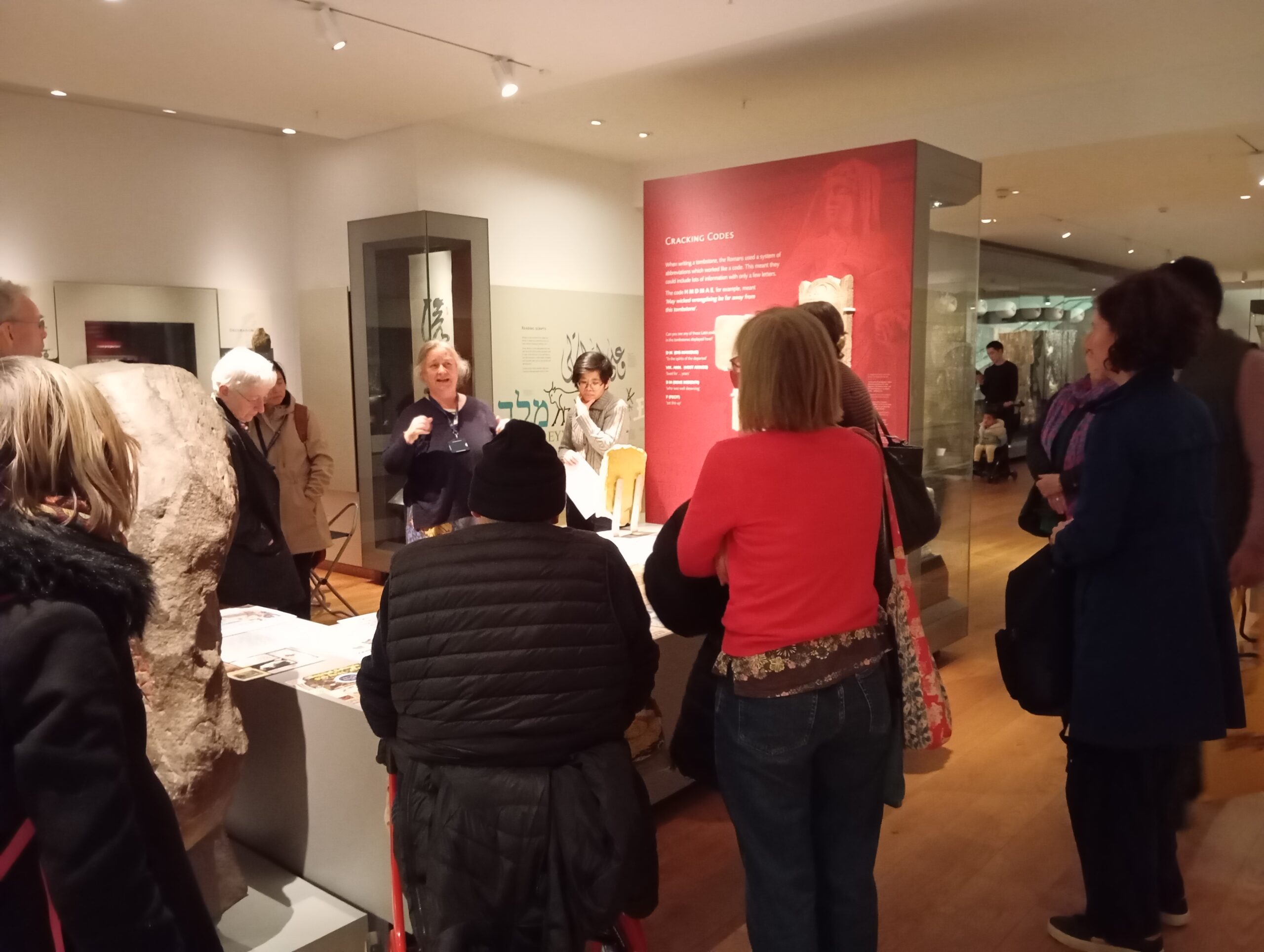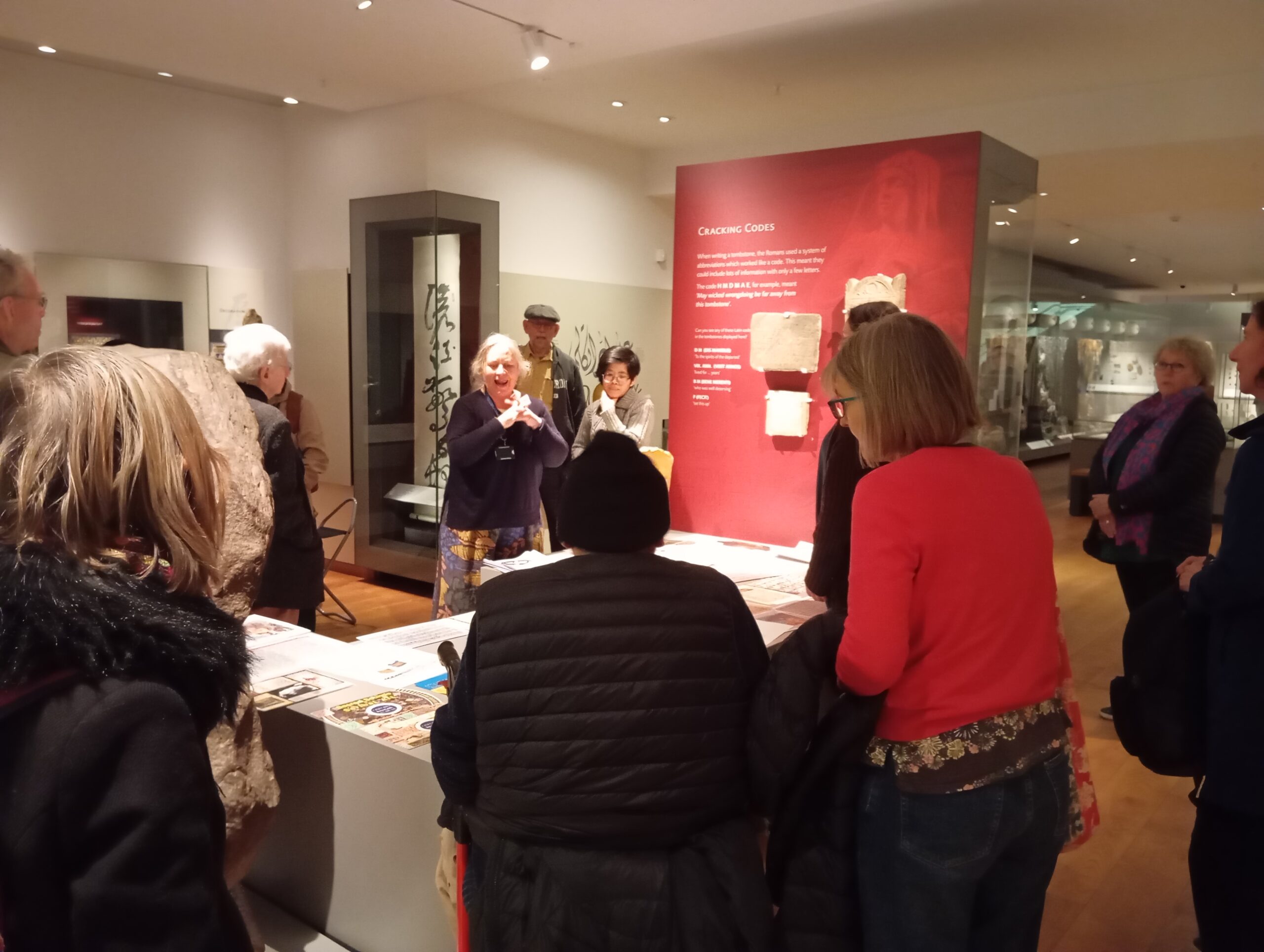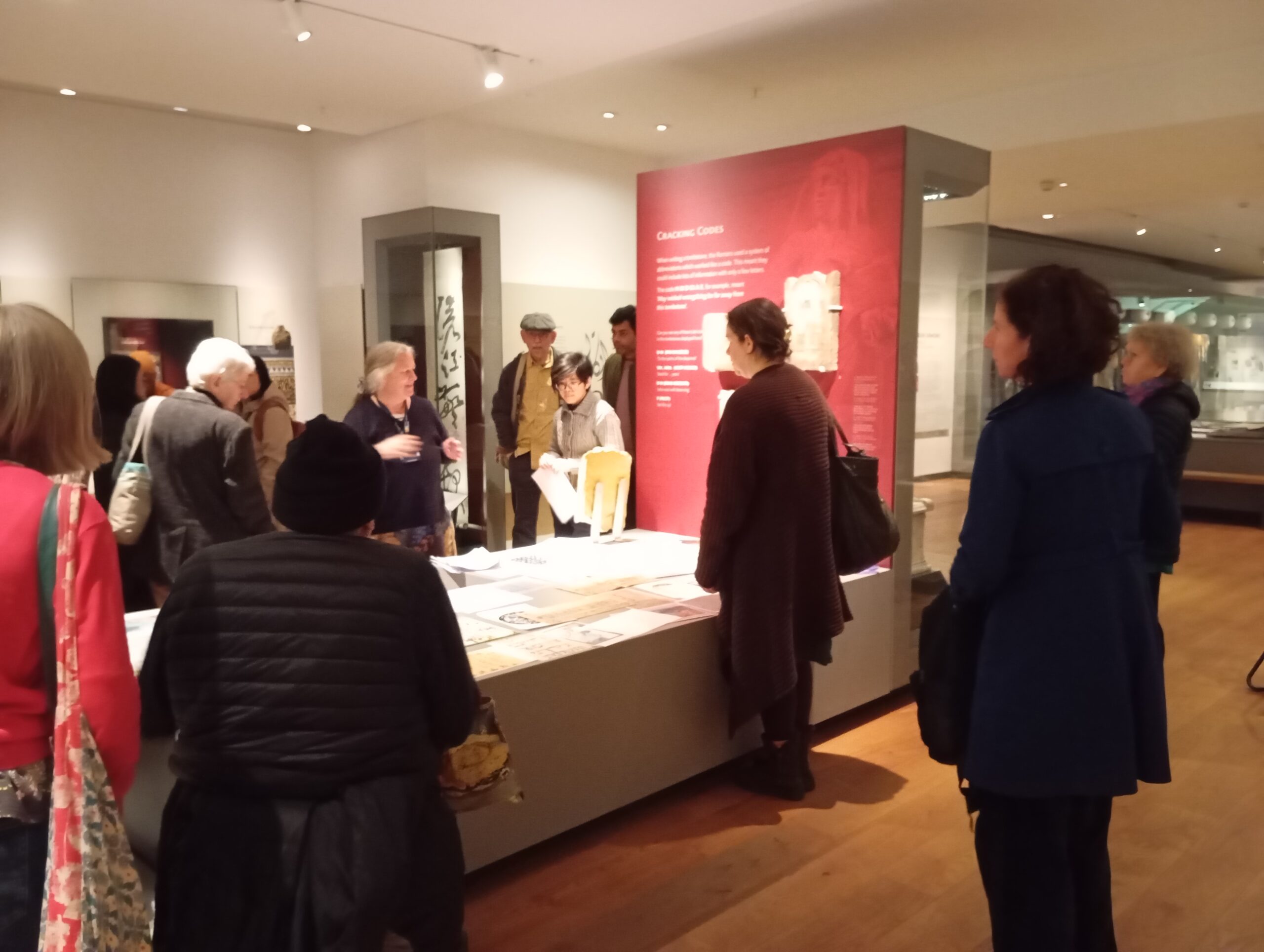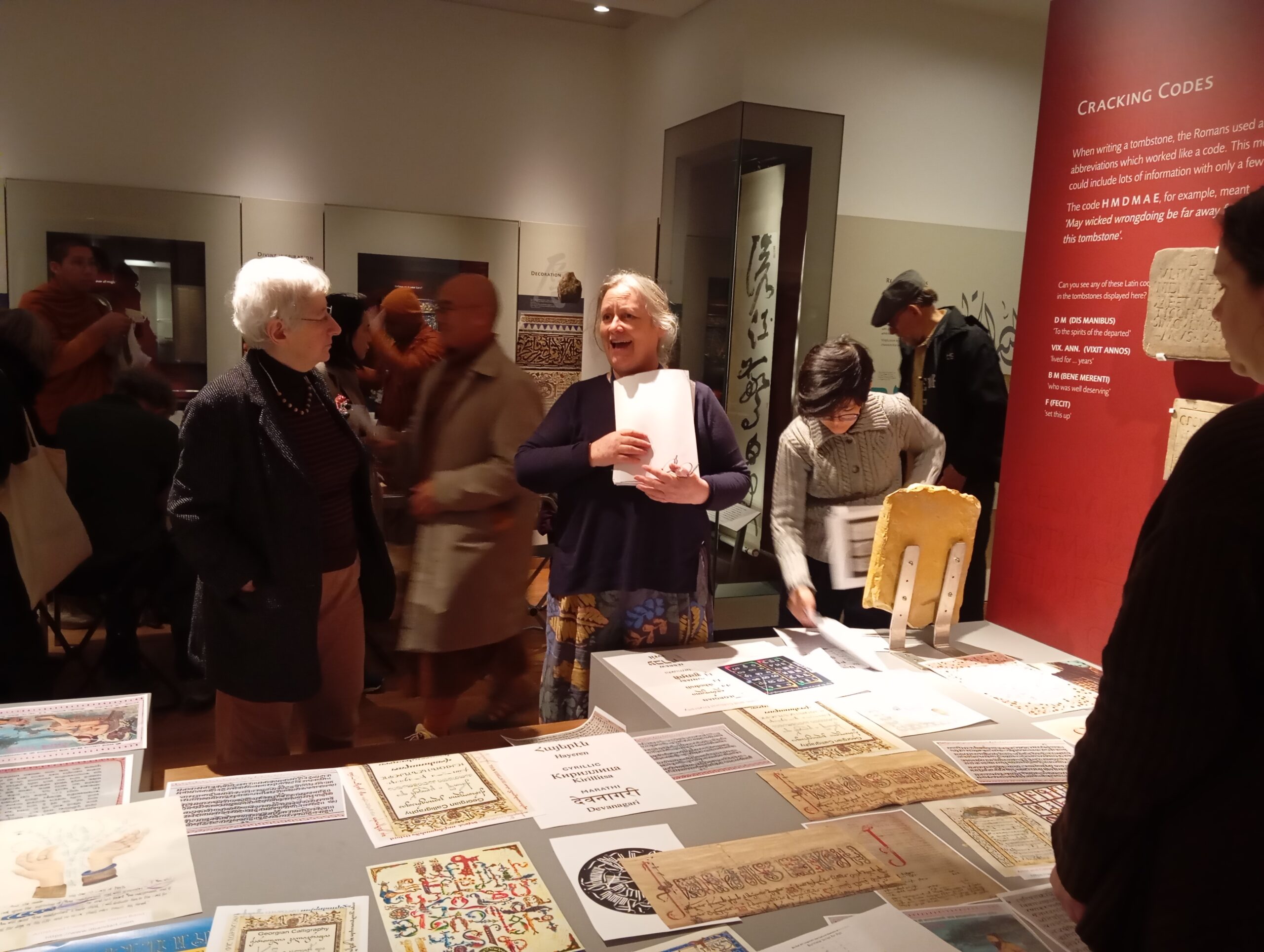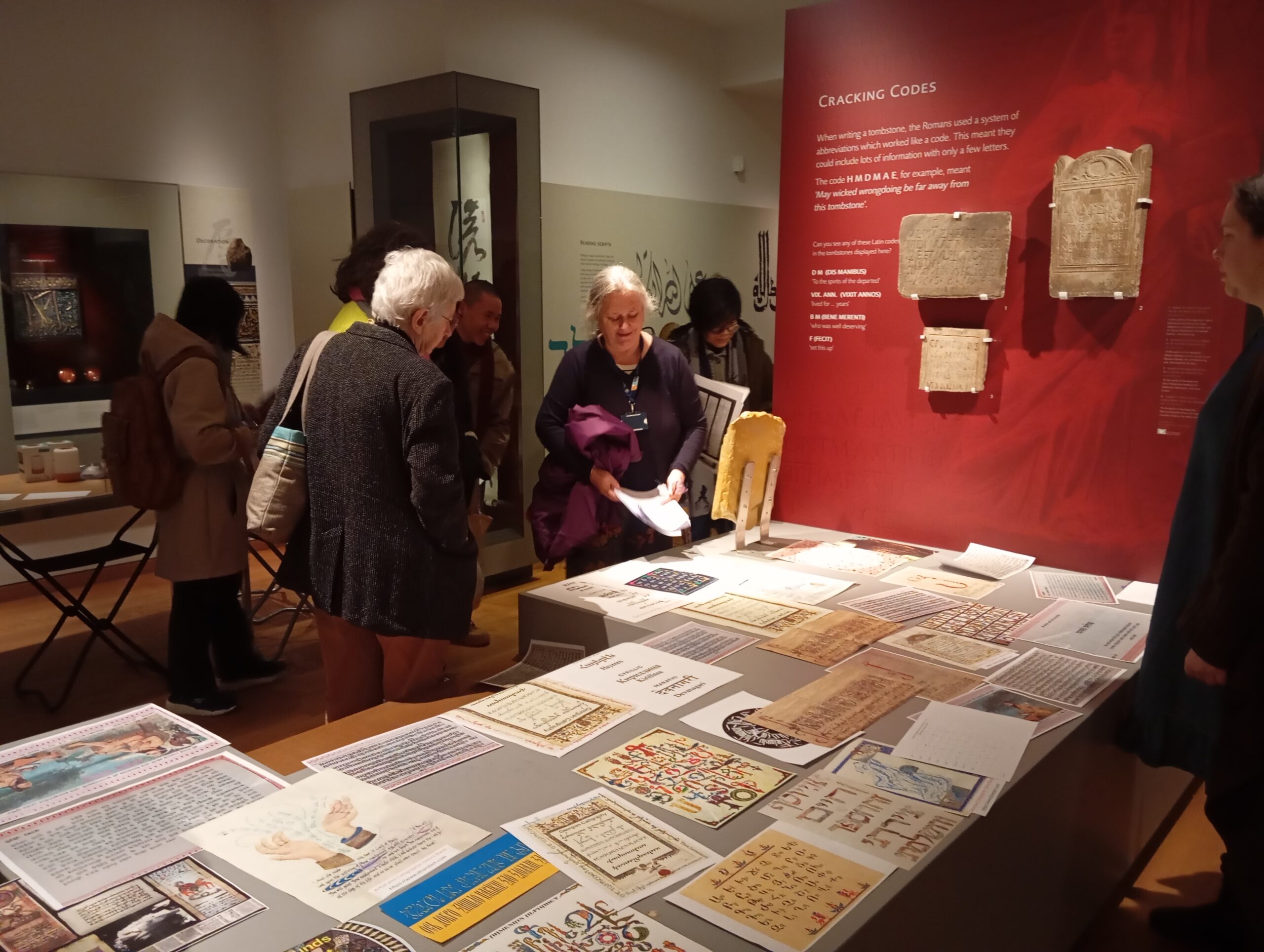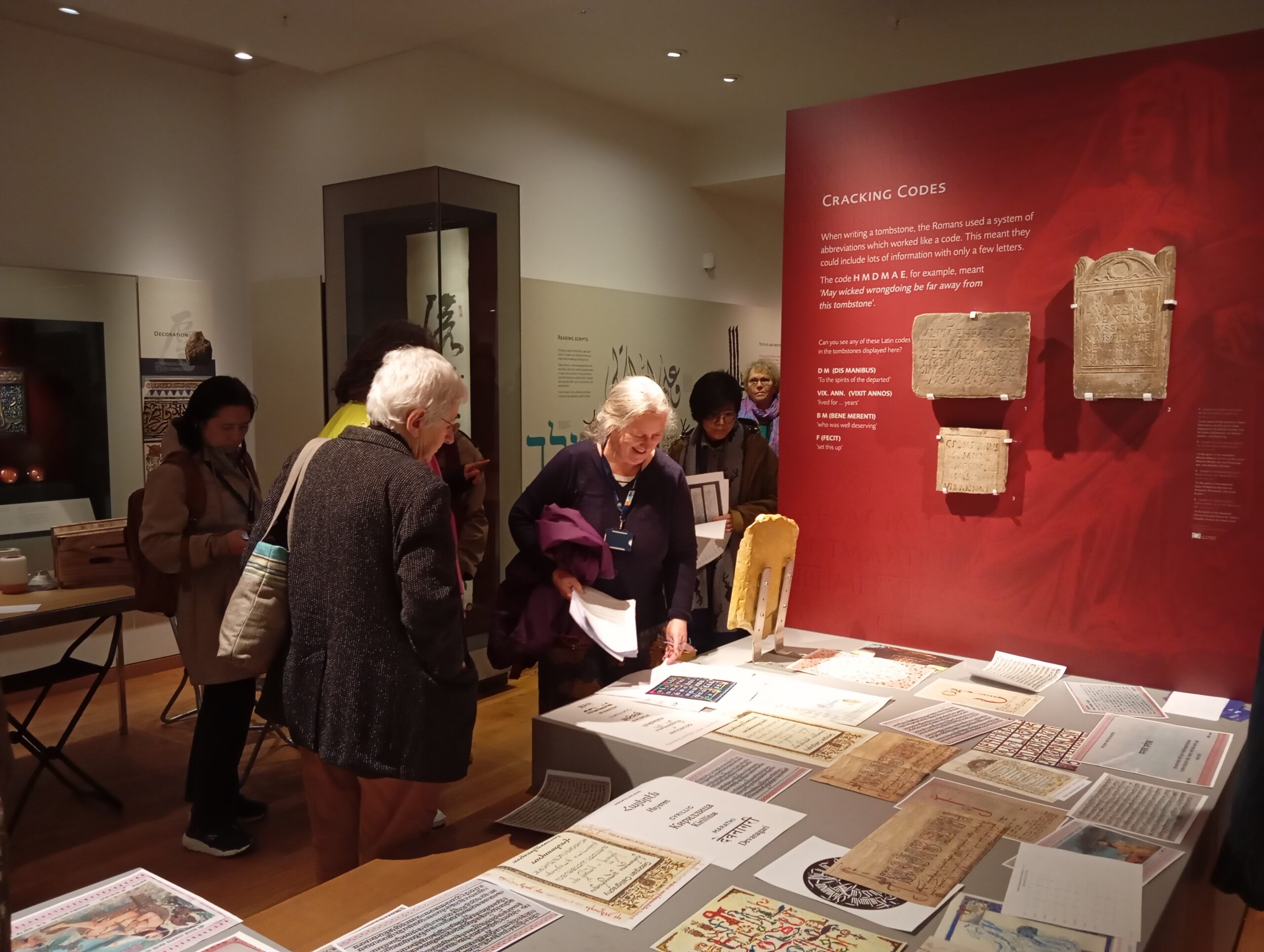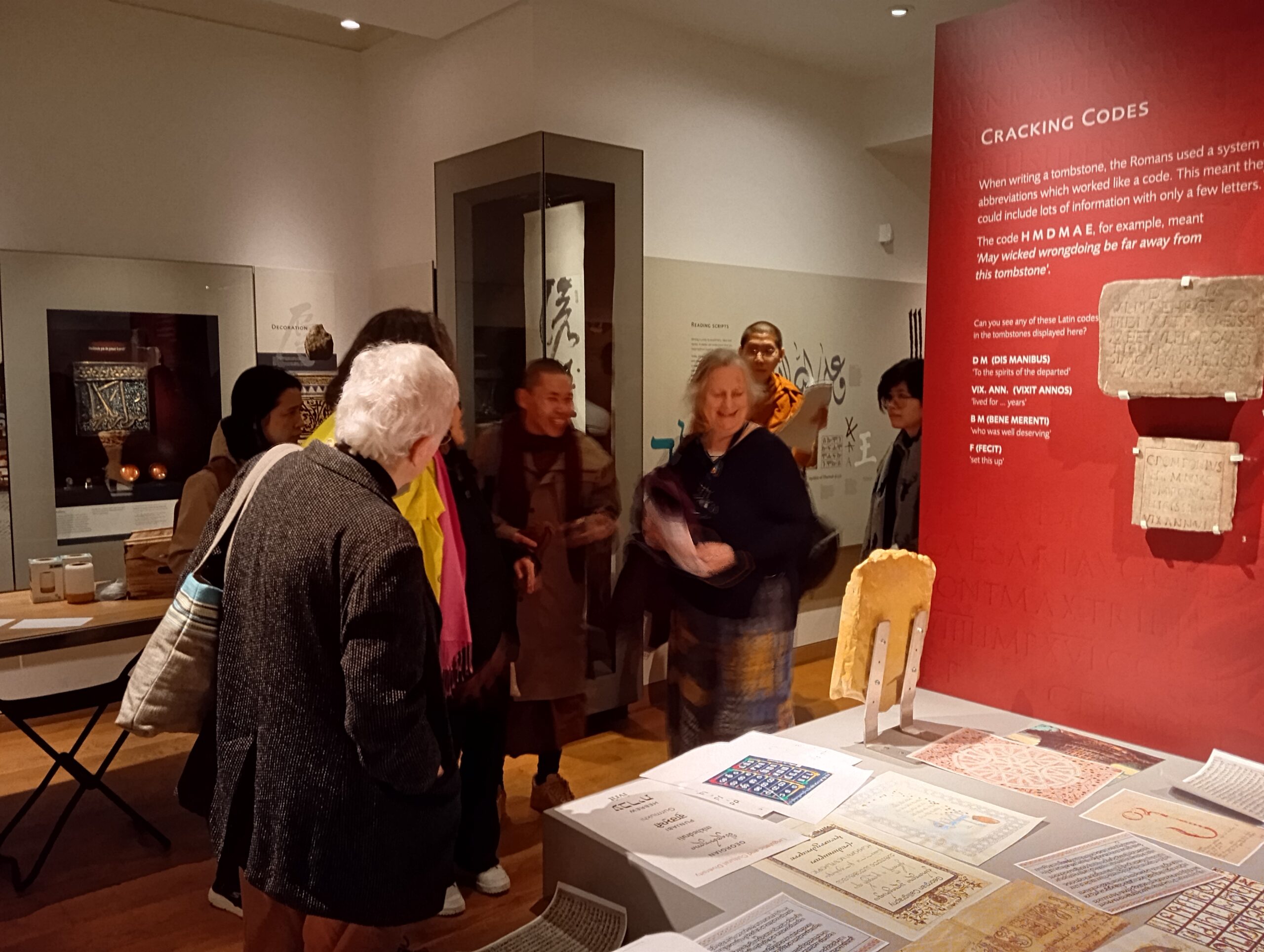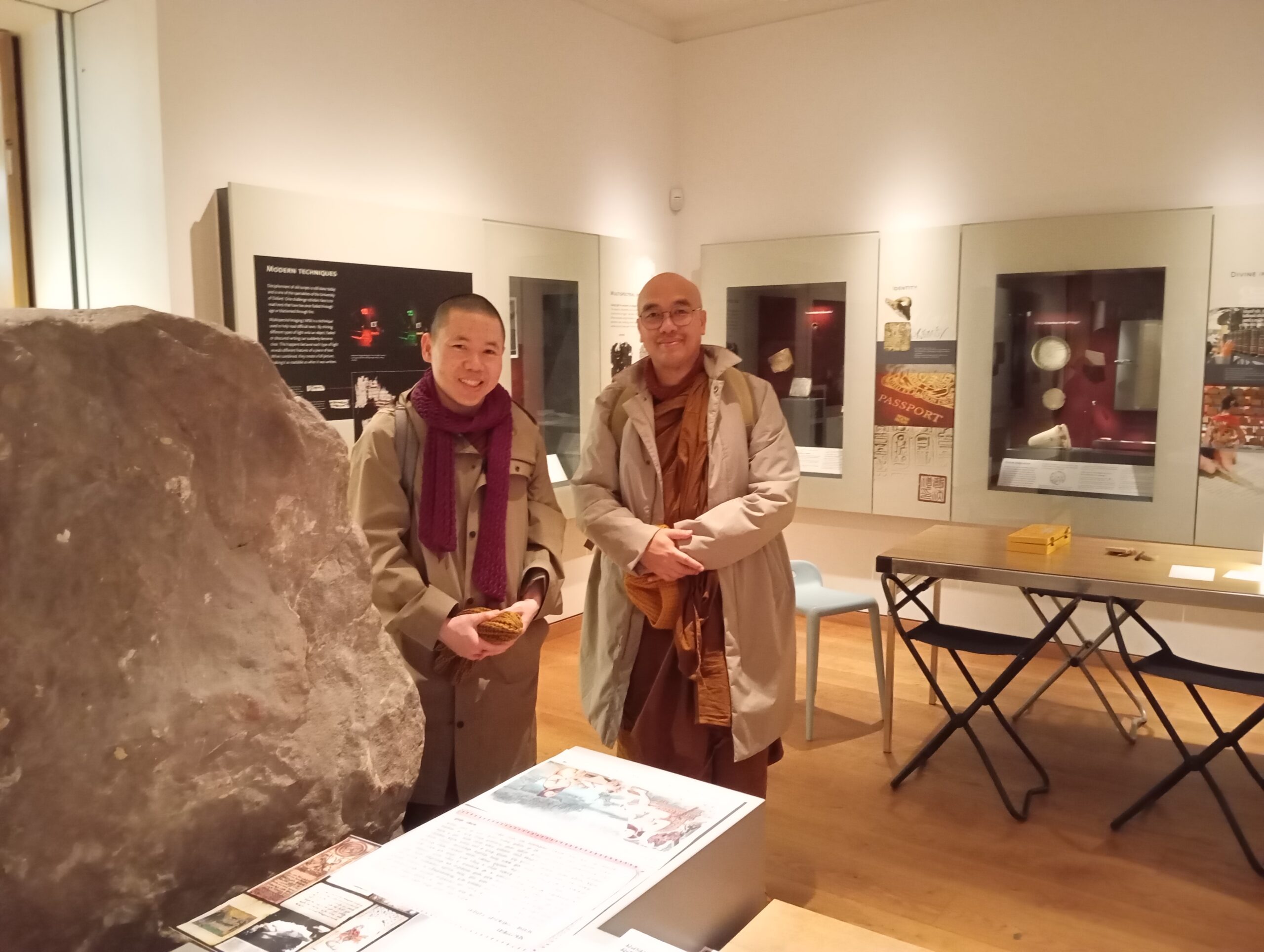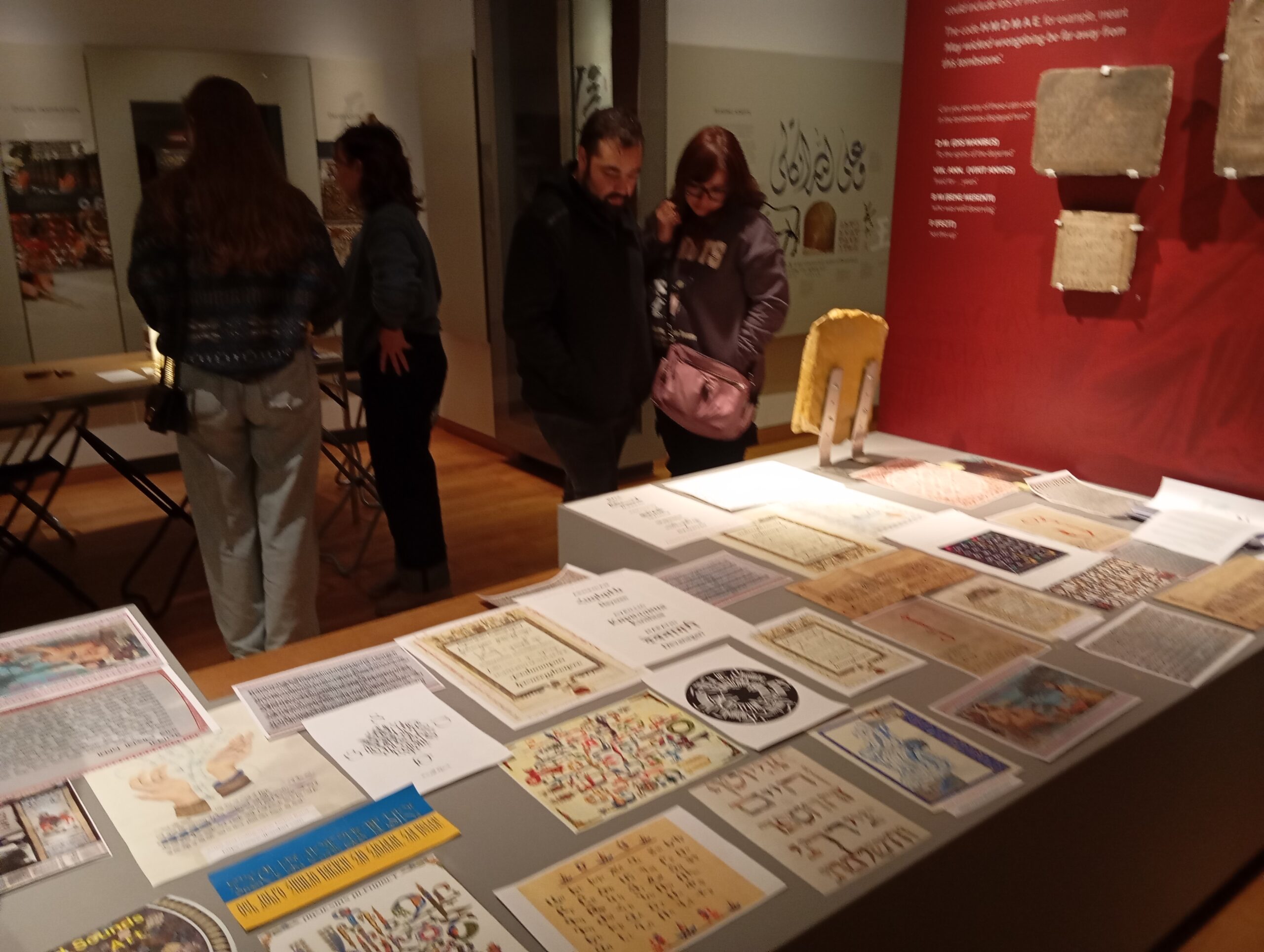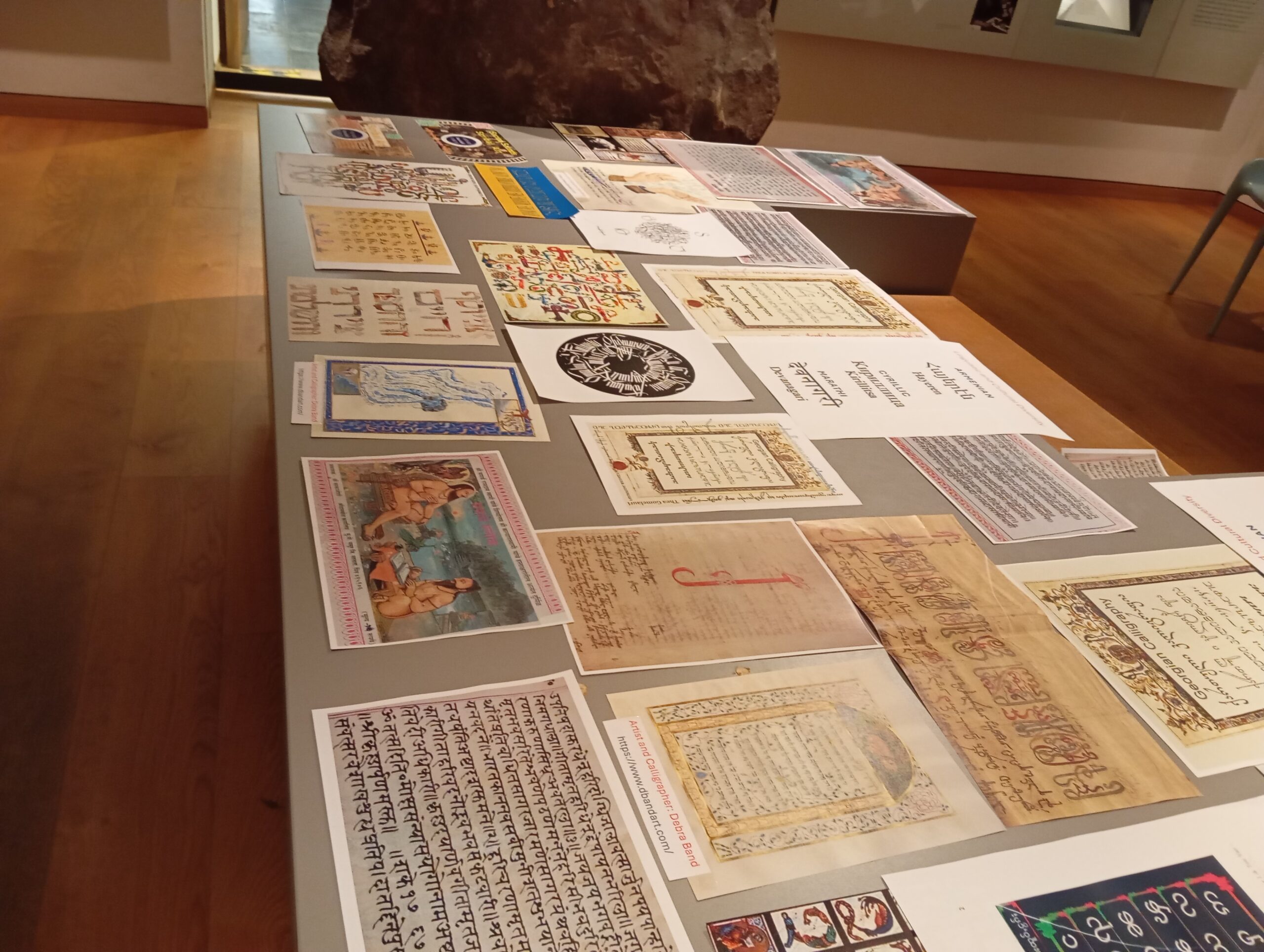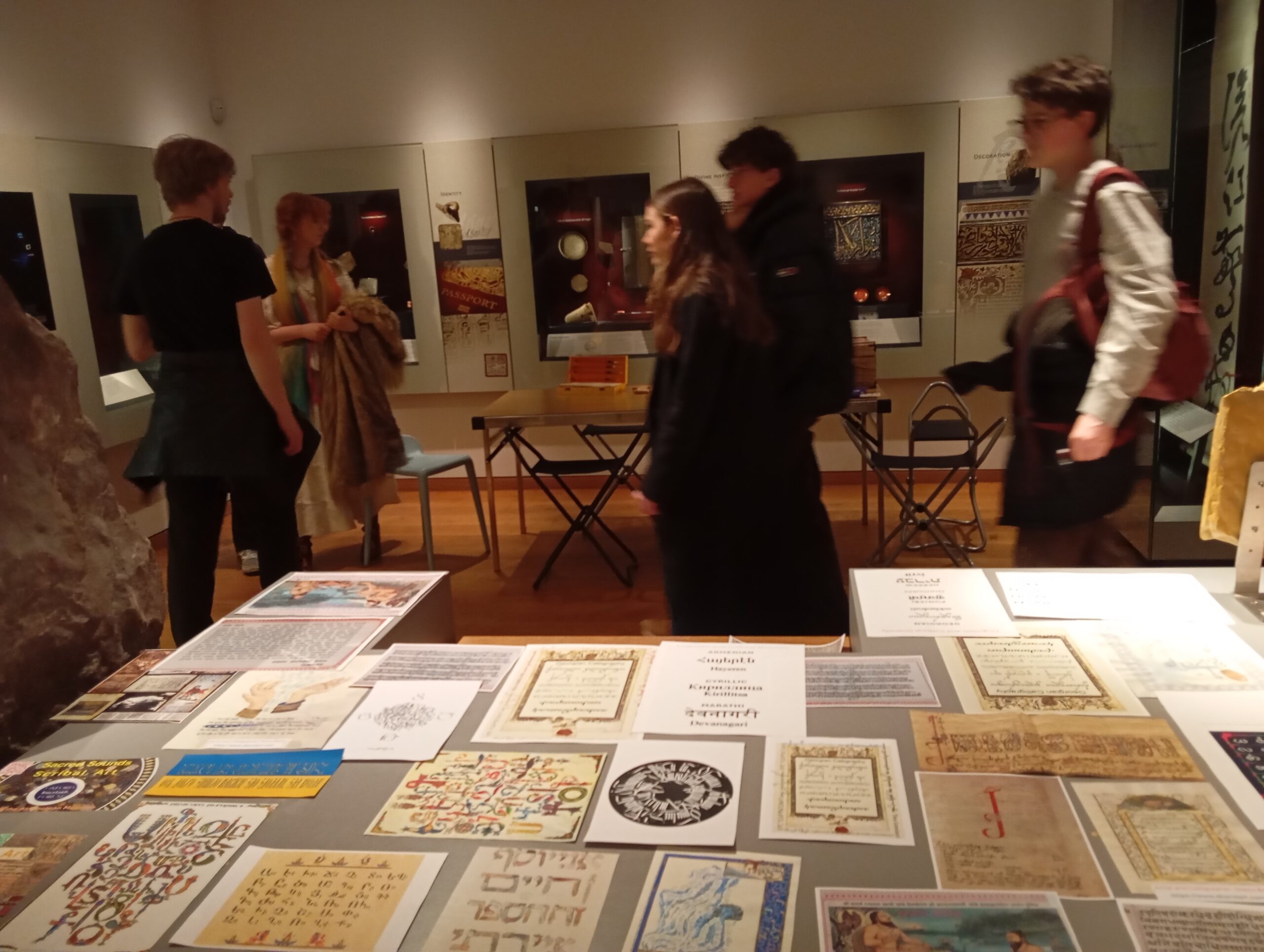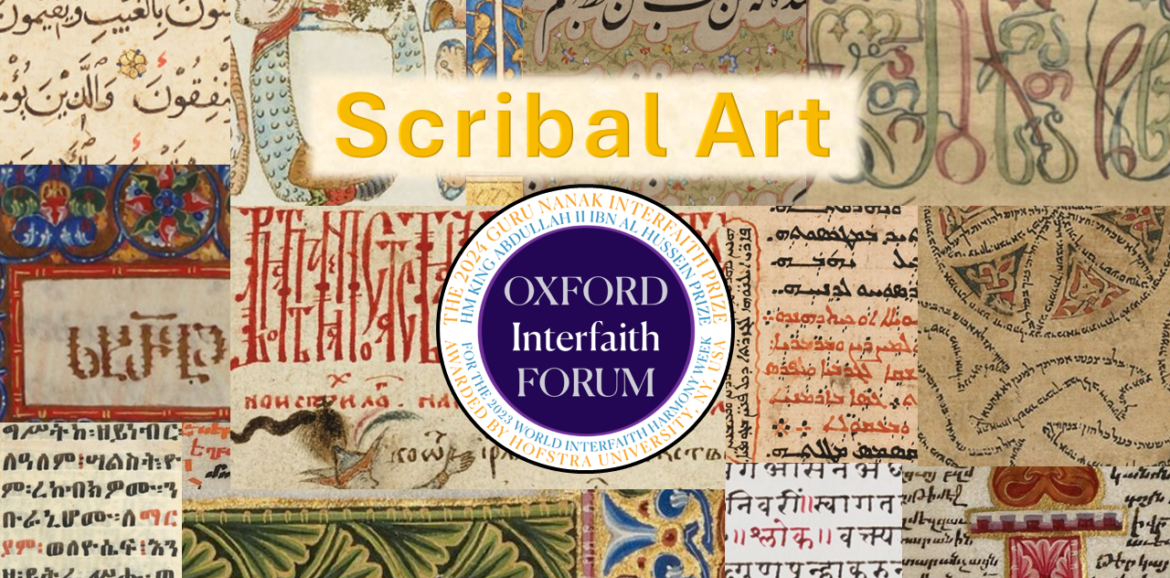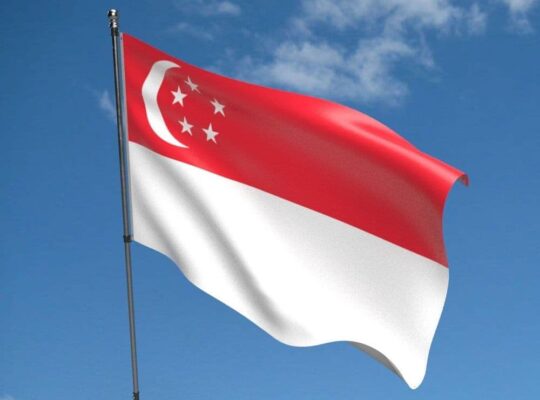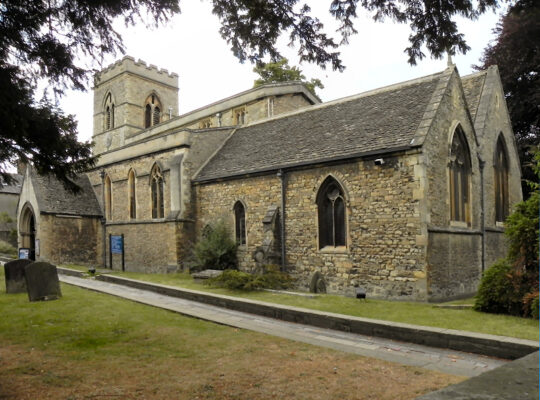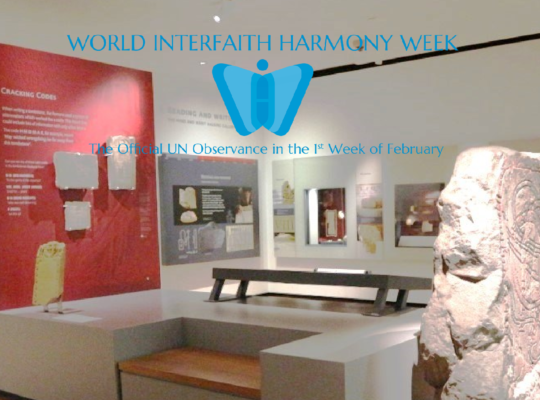23 February, 2025
Celebrating Linguistic & Cultural Diversity

Sacred Scripts ✍️ Part of Ashmolean Museum’s One World Family Festival
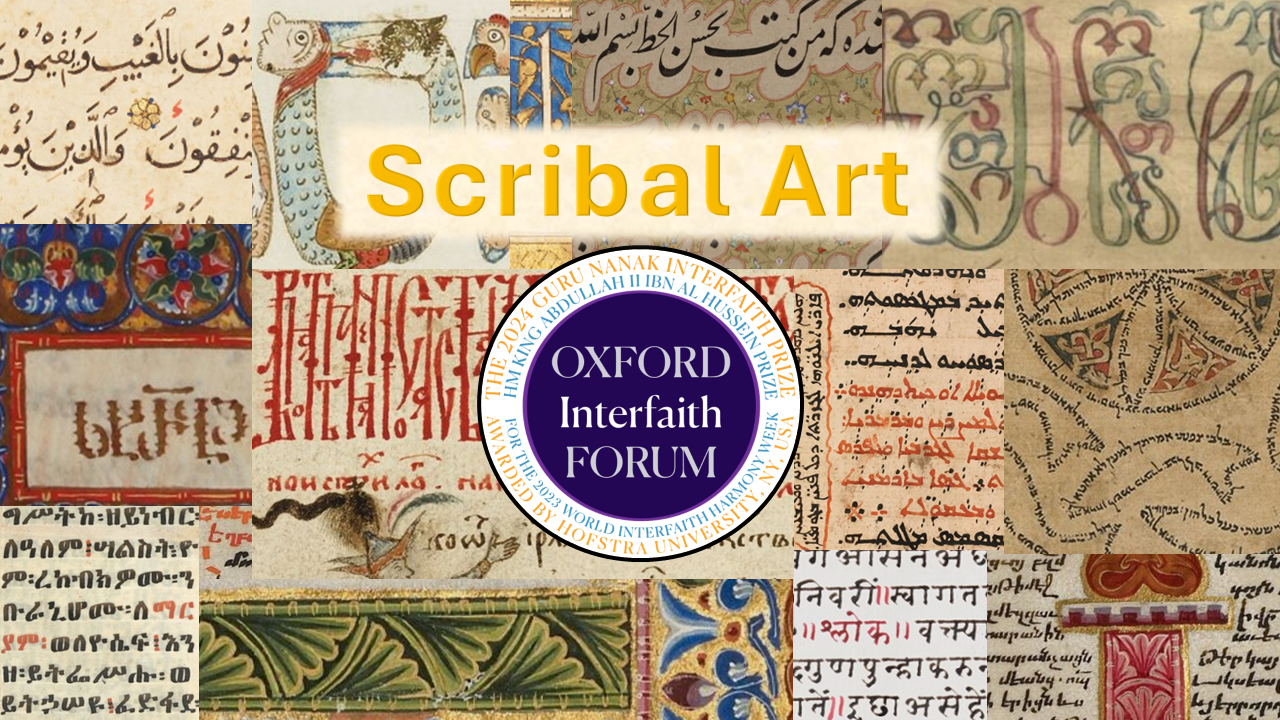
Linguistic diversity enhances understanding and appreciation of different cultures. It allows us to grasp significant nuances of social, cultural, historical, and religious contexts. To celebrate linguistic diversity and the rich tapestry of literary treasures, the Oxford Interfaith Forum designed Scribal Art, and presented it in collaboration with the Ashmolean Museum One World Festival. The event forged connections among people from different backgrounds and cultures, regardless of their native languages. It was a wonderful opportunity to appreciate the beauty in diversity, and the value of the ‘other’.
Surrounded by breathtaking artifacts of Ashmolean’s Reading and Writing Gallery, colleagues from the Faculties of Asian and Middle Eastern Studies, and Linguistics, introduced their languages through beautiful scripts, calligraphies, and manuscripts to a wider public. Thirteen faculty members and students presented sixteen scripts in five hours. We are honoured to feature below Oxford’s modern-day scribes and their beautiful works in the order of their presentations.
Our heartfelt Gratitude to every participant and especially, our Scribes!

Juliana Pars Presented Armenian Script
Juliana Pars, a DPhil candidate at the Faculty of Asian and Middle Eastern Studies, supervised jointly by Professor Theo Maarten van Lint and Professor Christina Maranci, said:
‘Taking part in the Oxford Interfaith Forum’s Scribal Art was an incredibly rewarding experience. It was great to give a talk in a setting so wonderfully rich in history and knowledge. Then, with the workshop element, it was really inspiring to see people of all ages engaging so enthusiastically and insightfully with the script and art associated with it. We made some lovely pieces that everyone should be proud of, and which will hopefully help to inspire a new generation of language scholars! Thank you to both Dr Thea Gomelauri and those involved at the Ashmolean Museum for organising such a fantastic event.‘
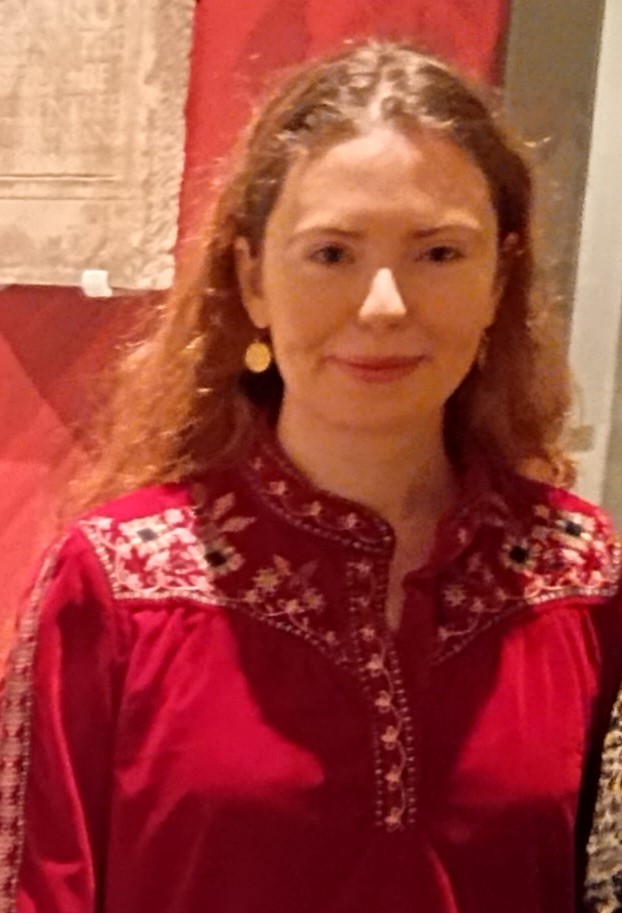

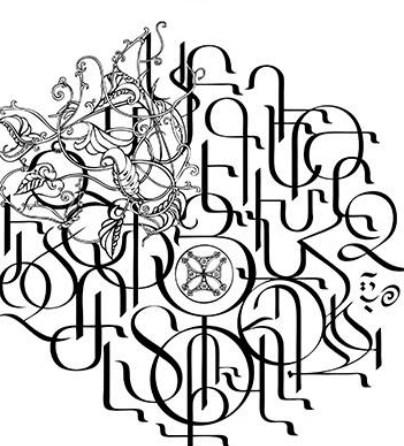
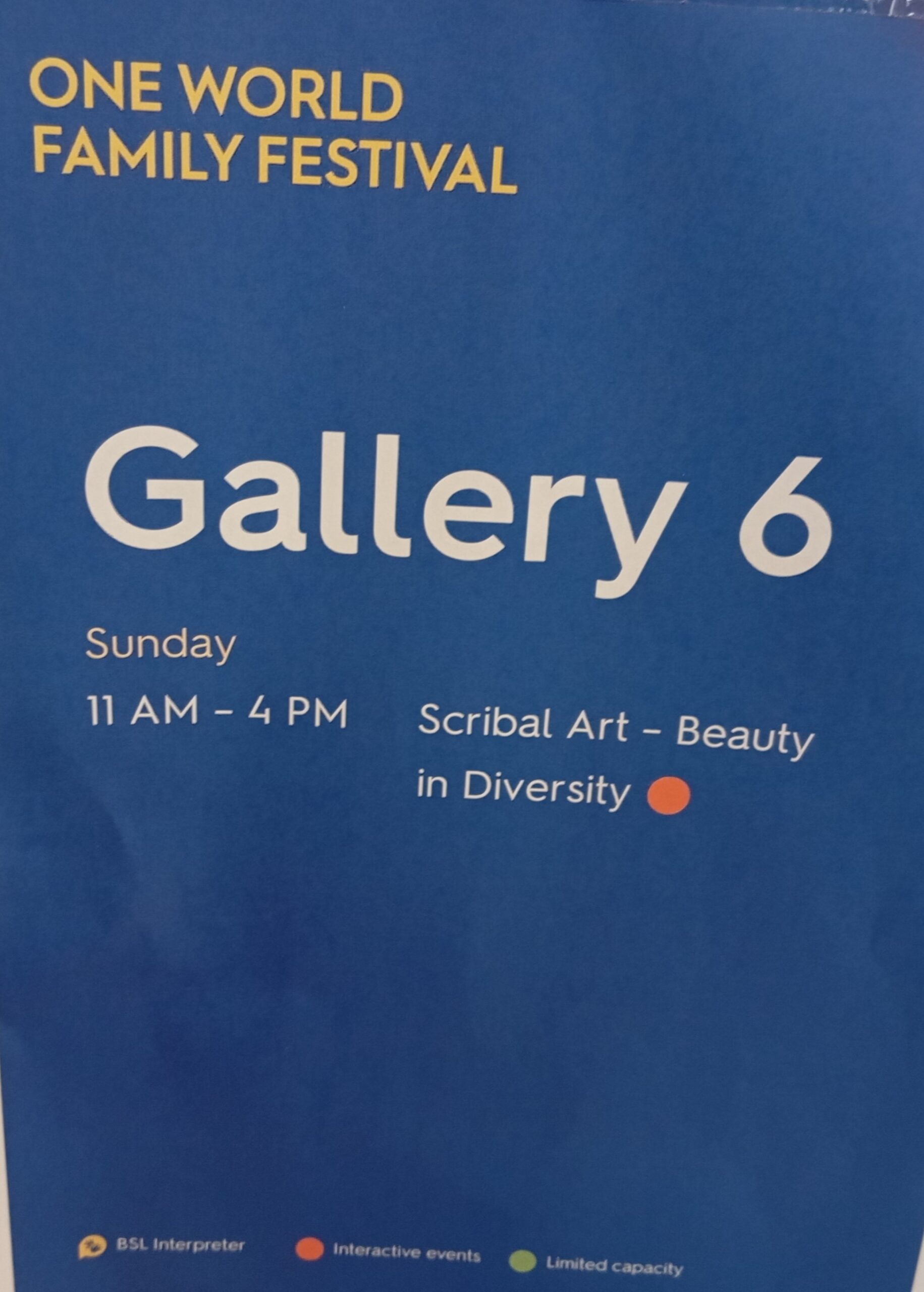
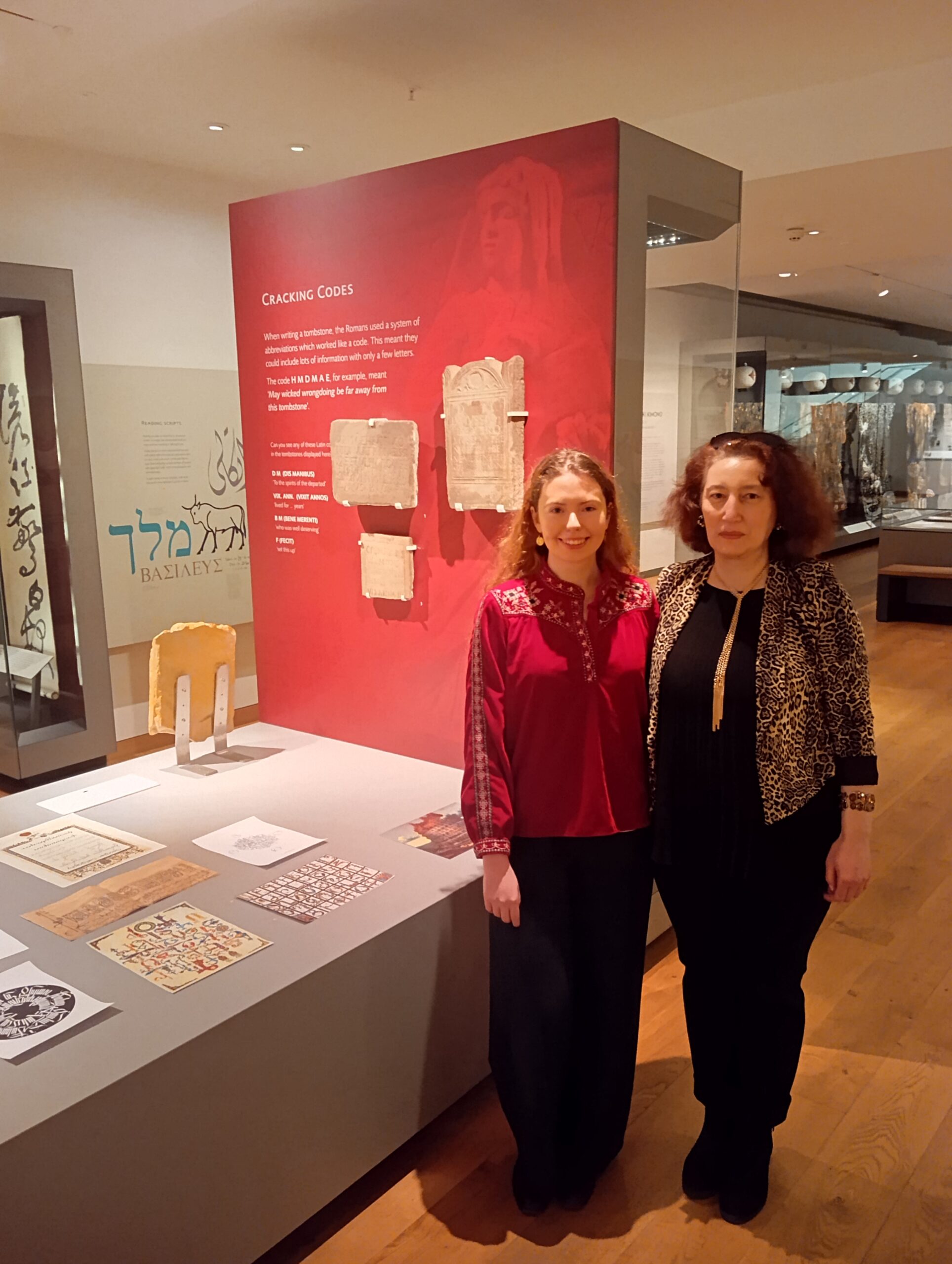
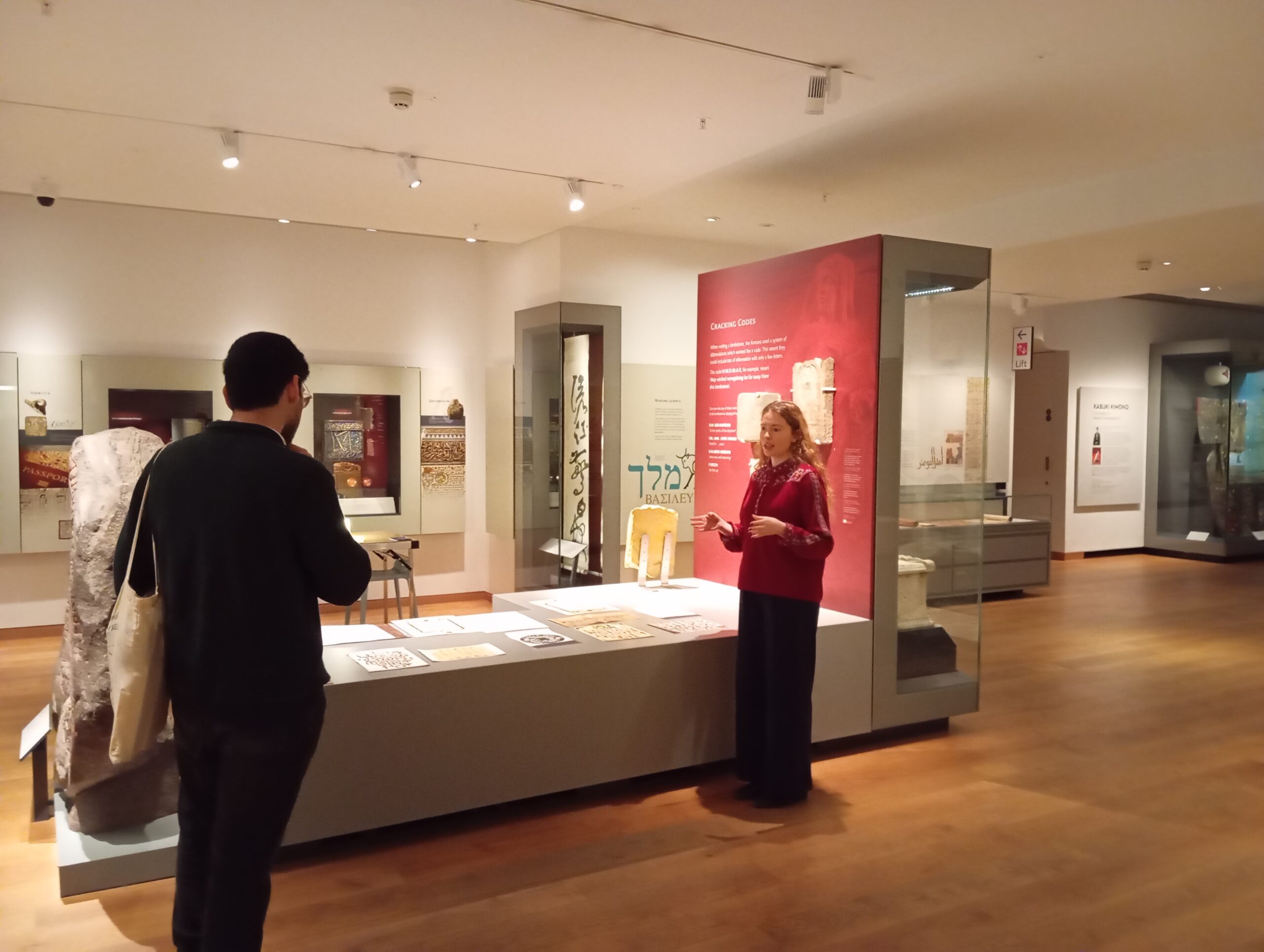
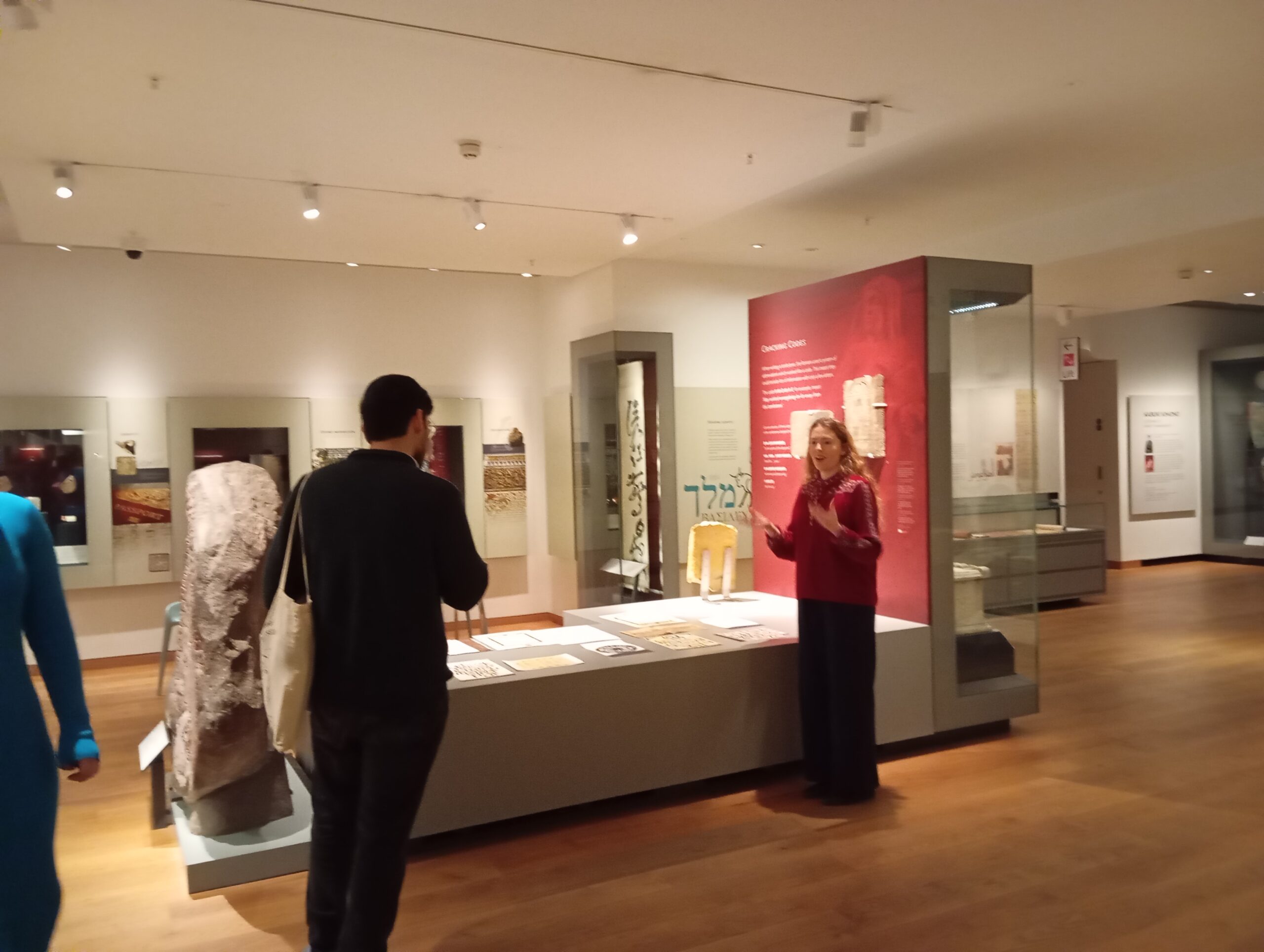
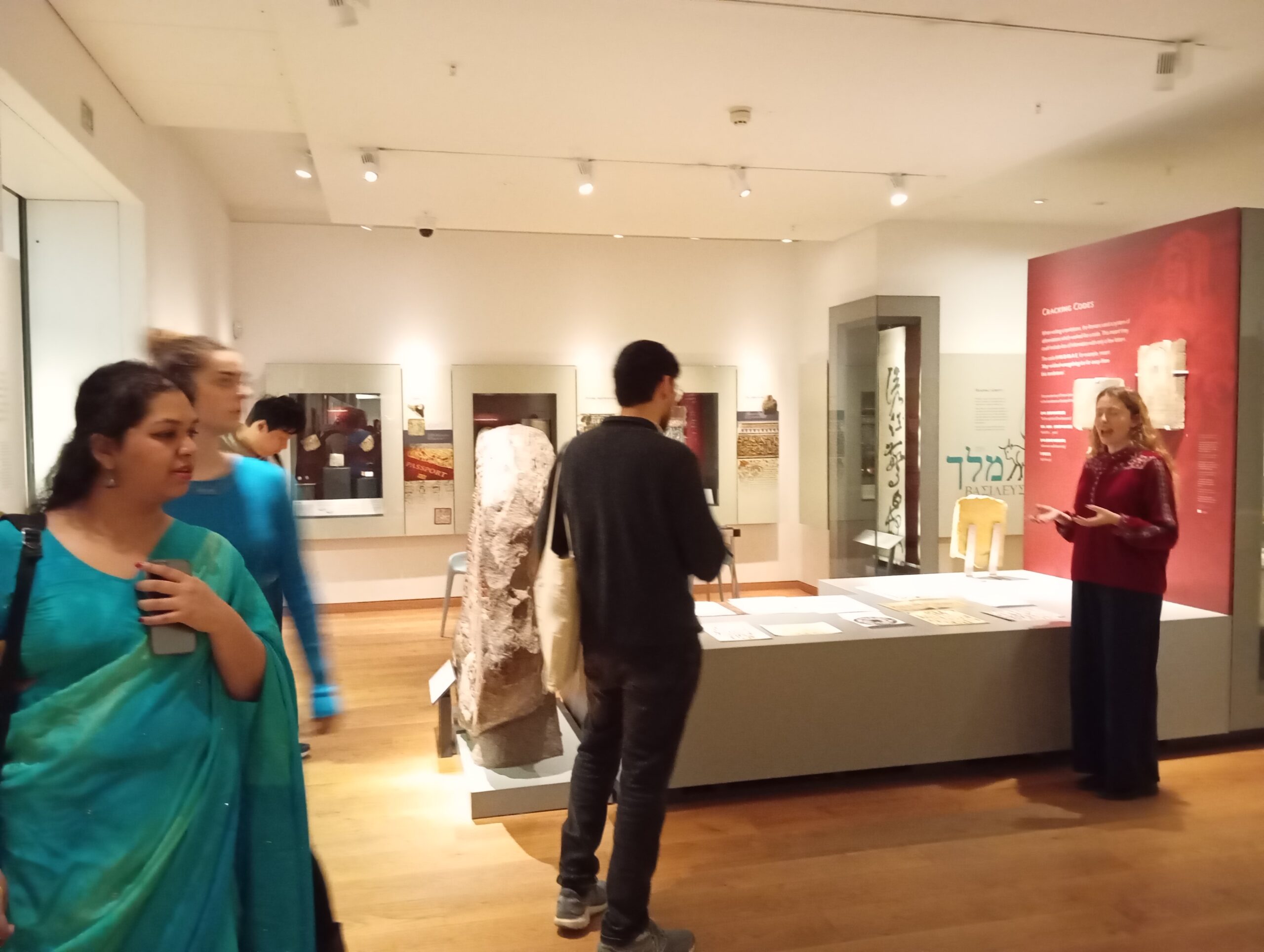
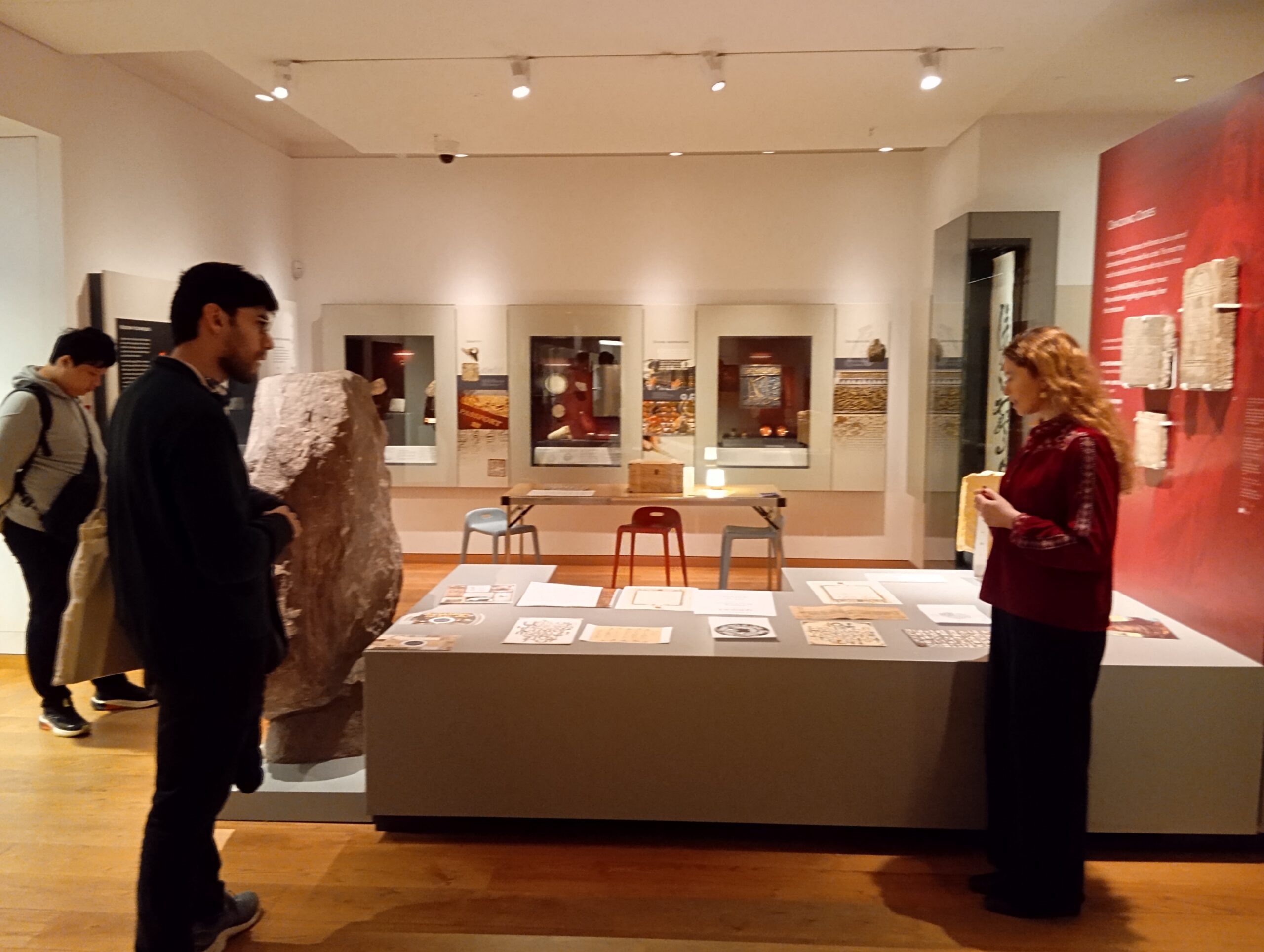
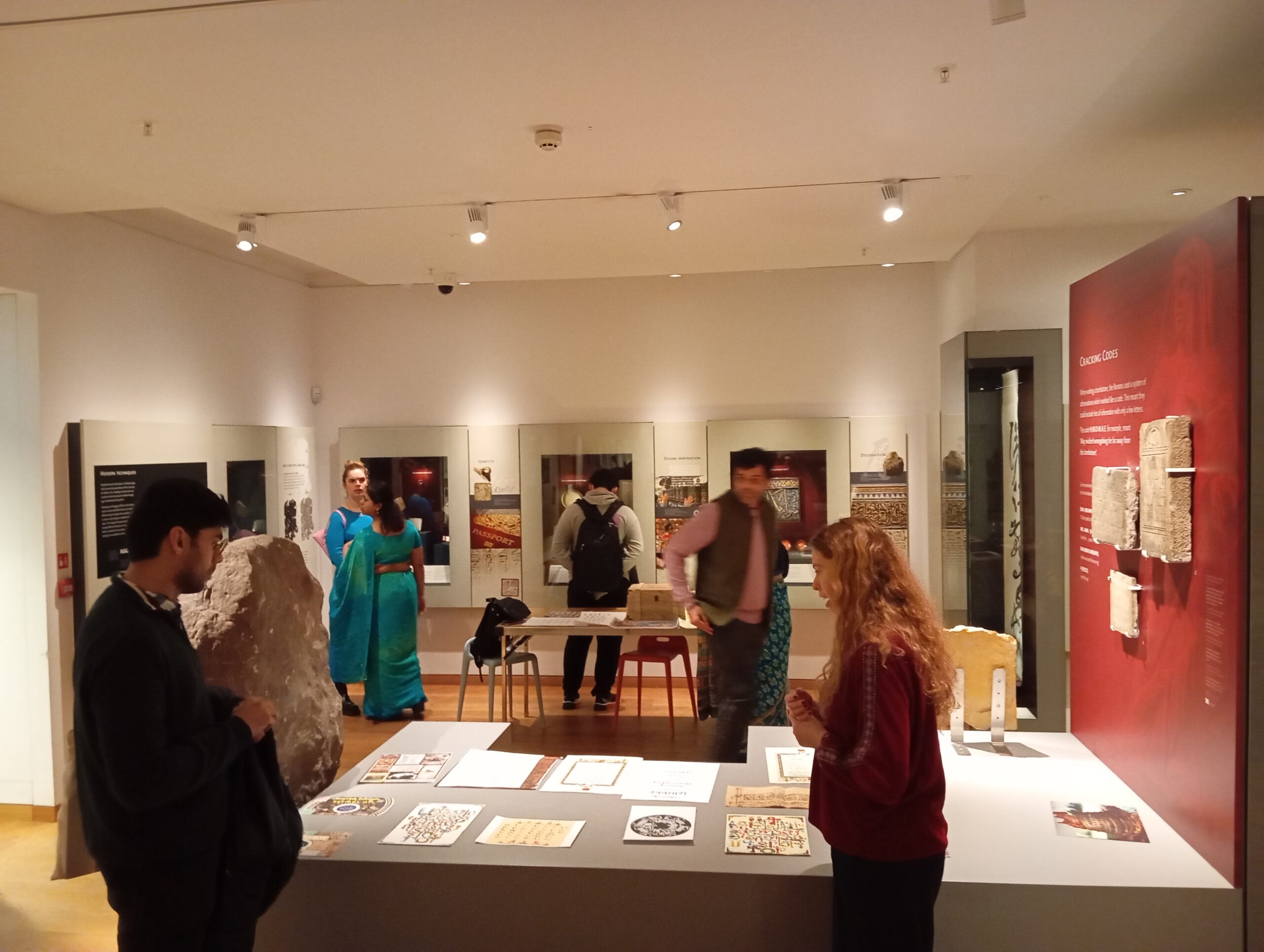
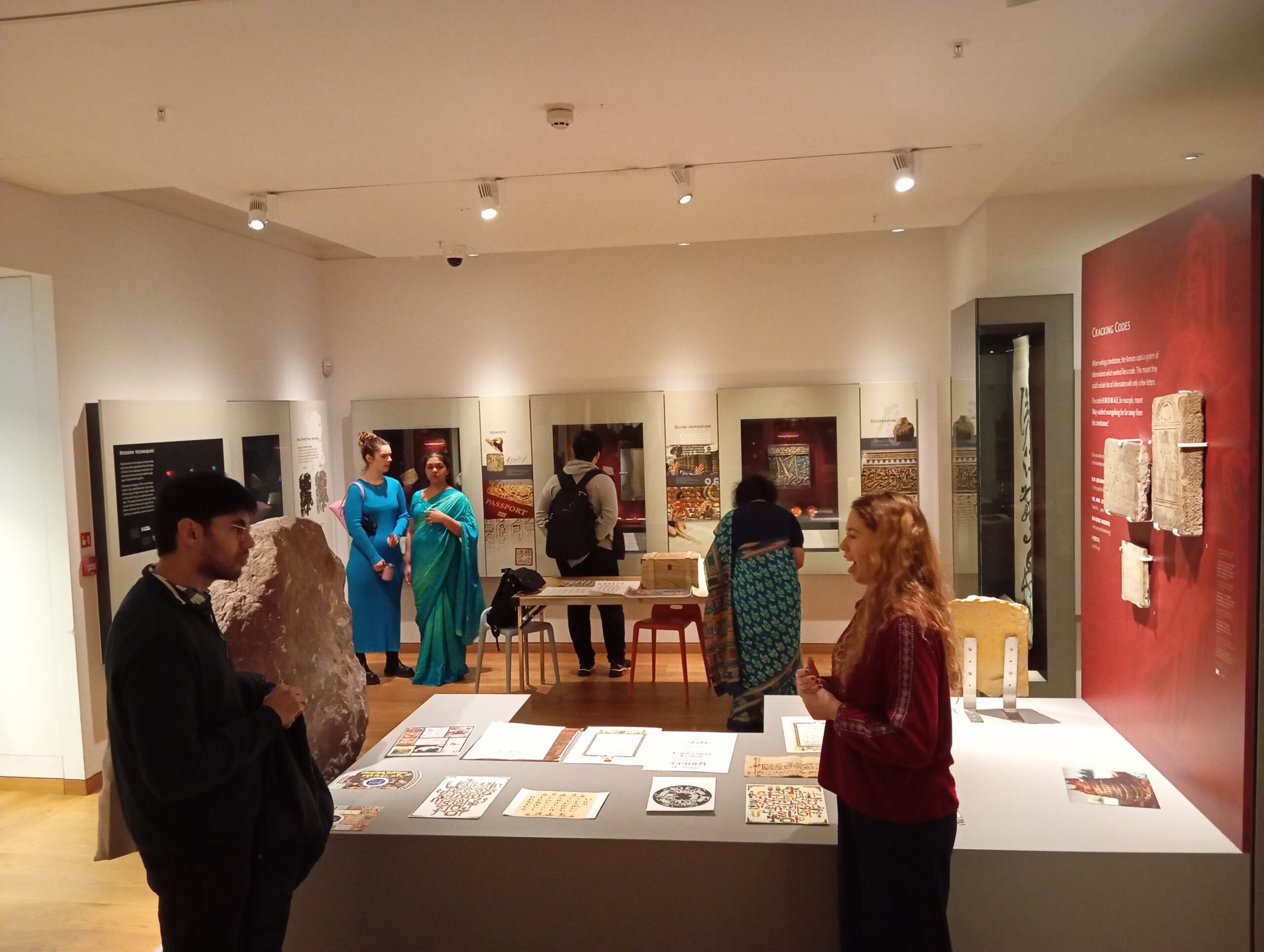
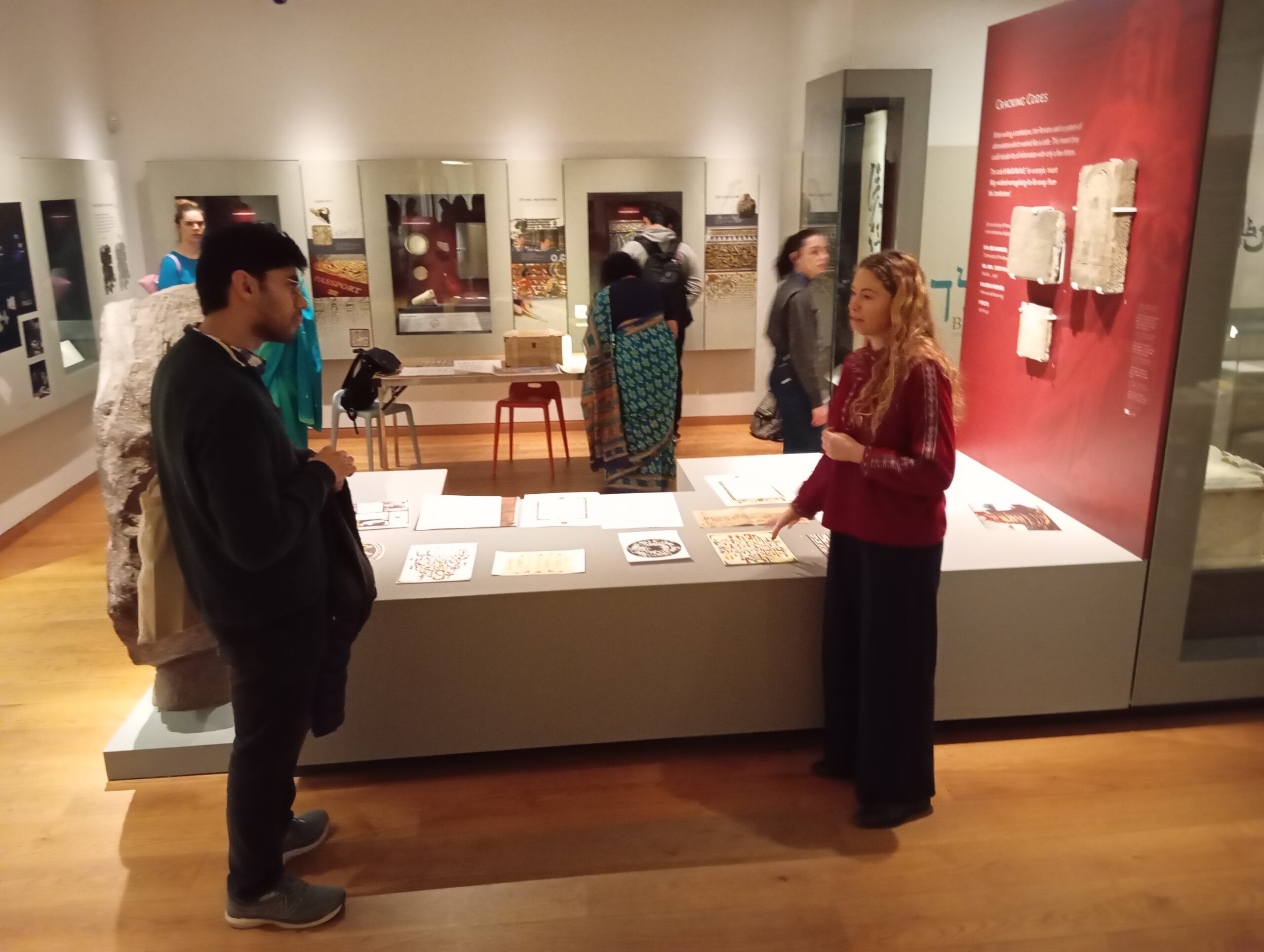
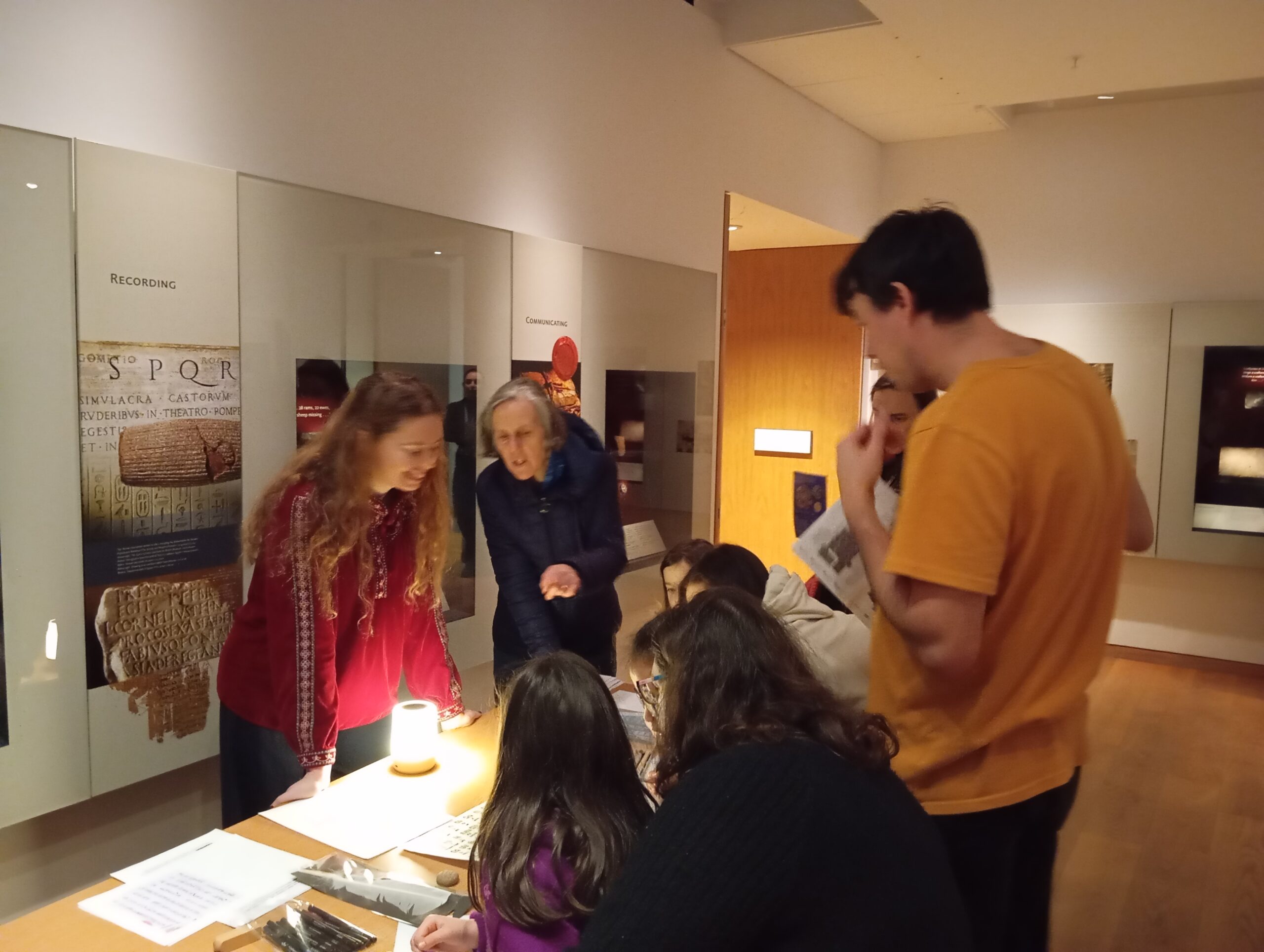
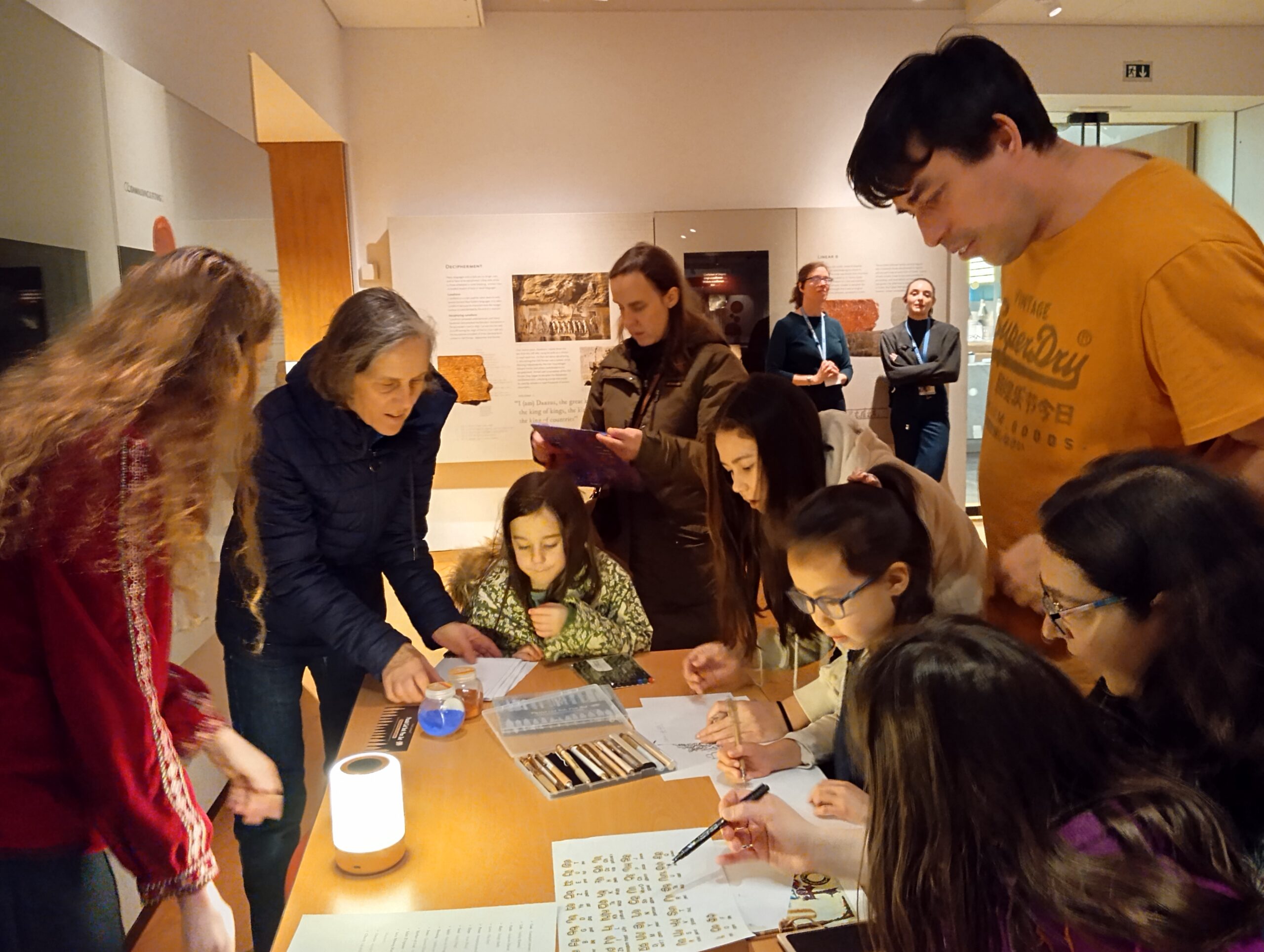
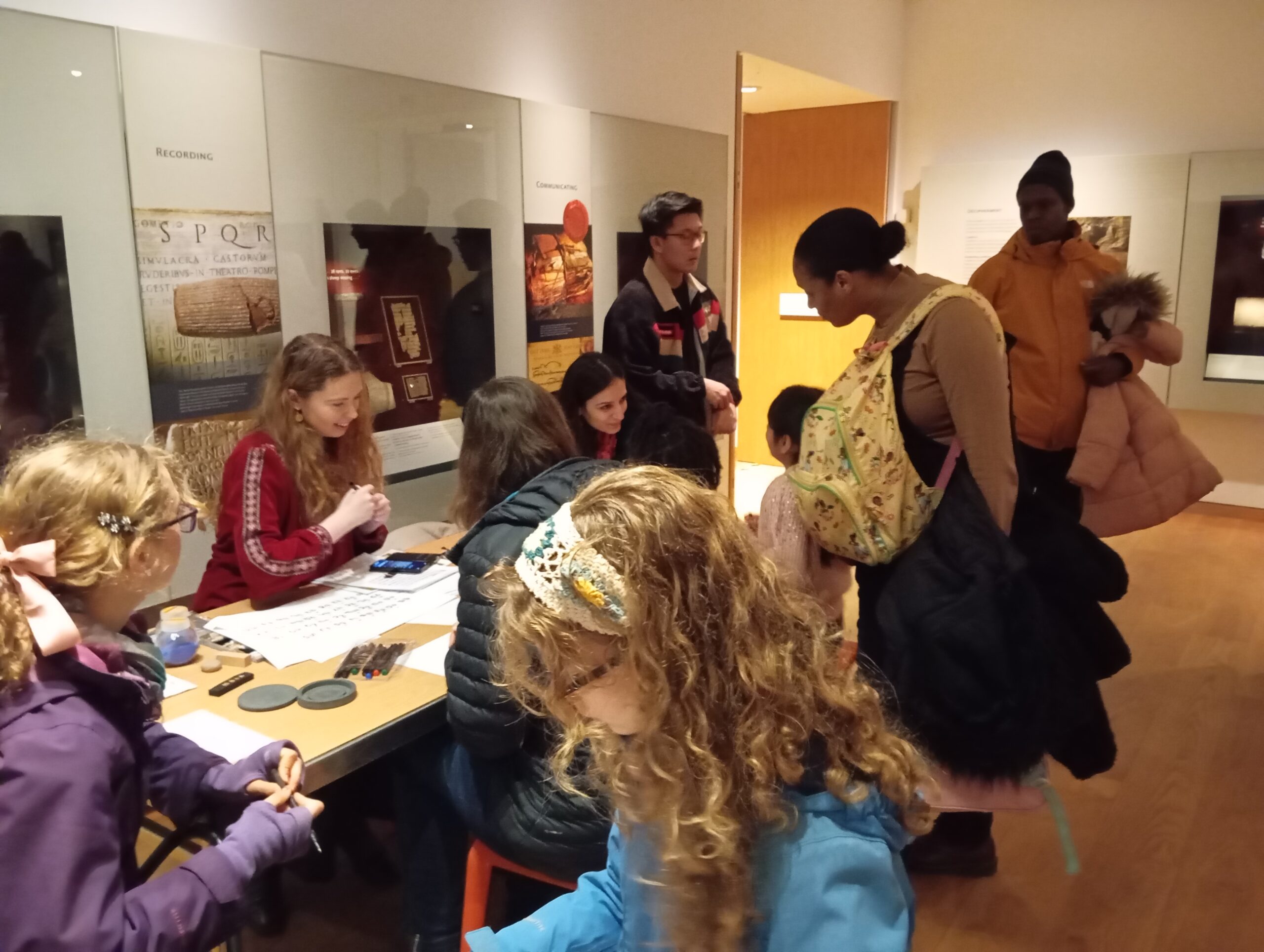

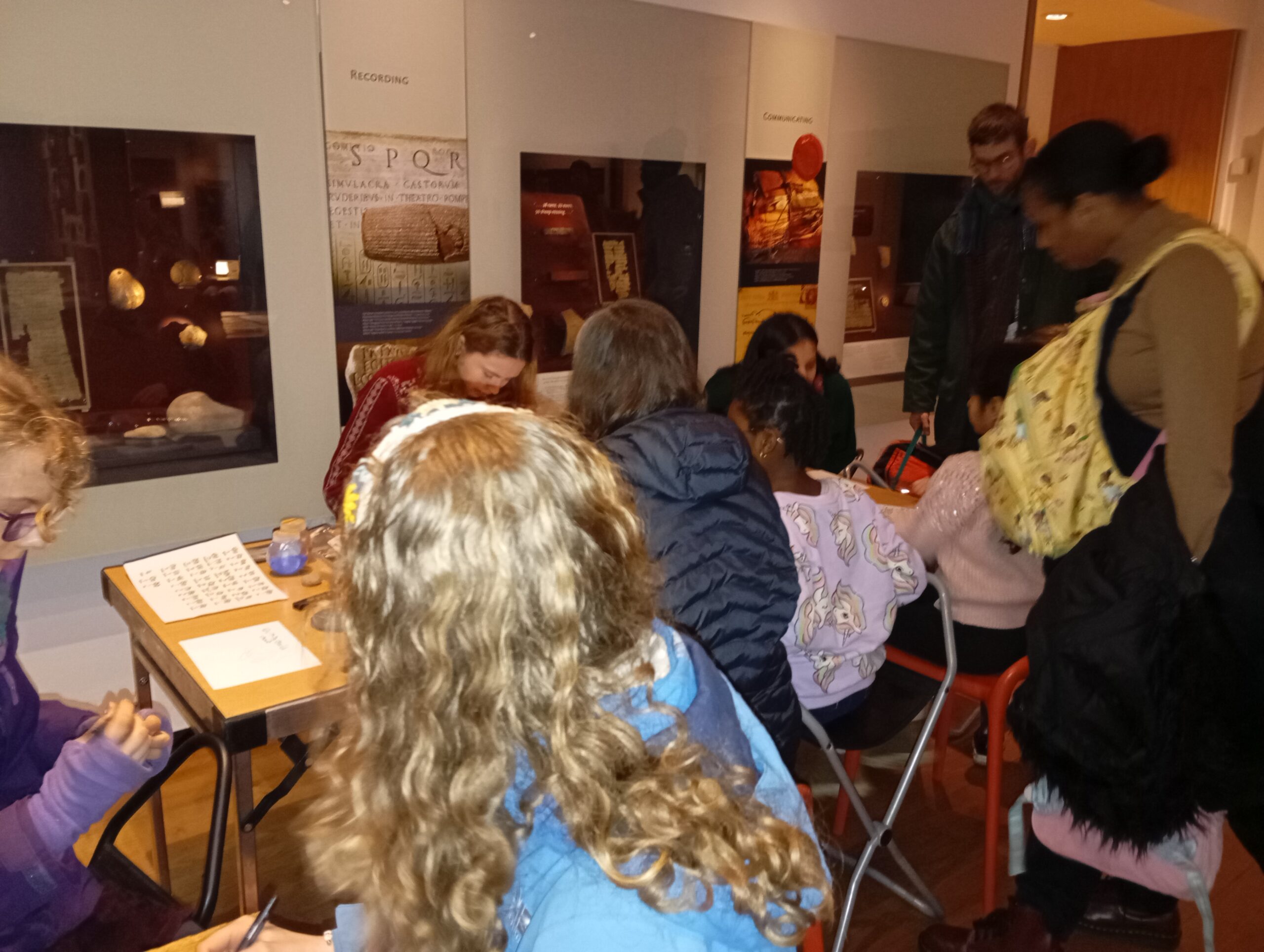
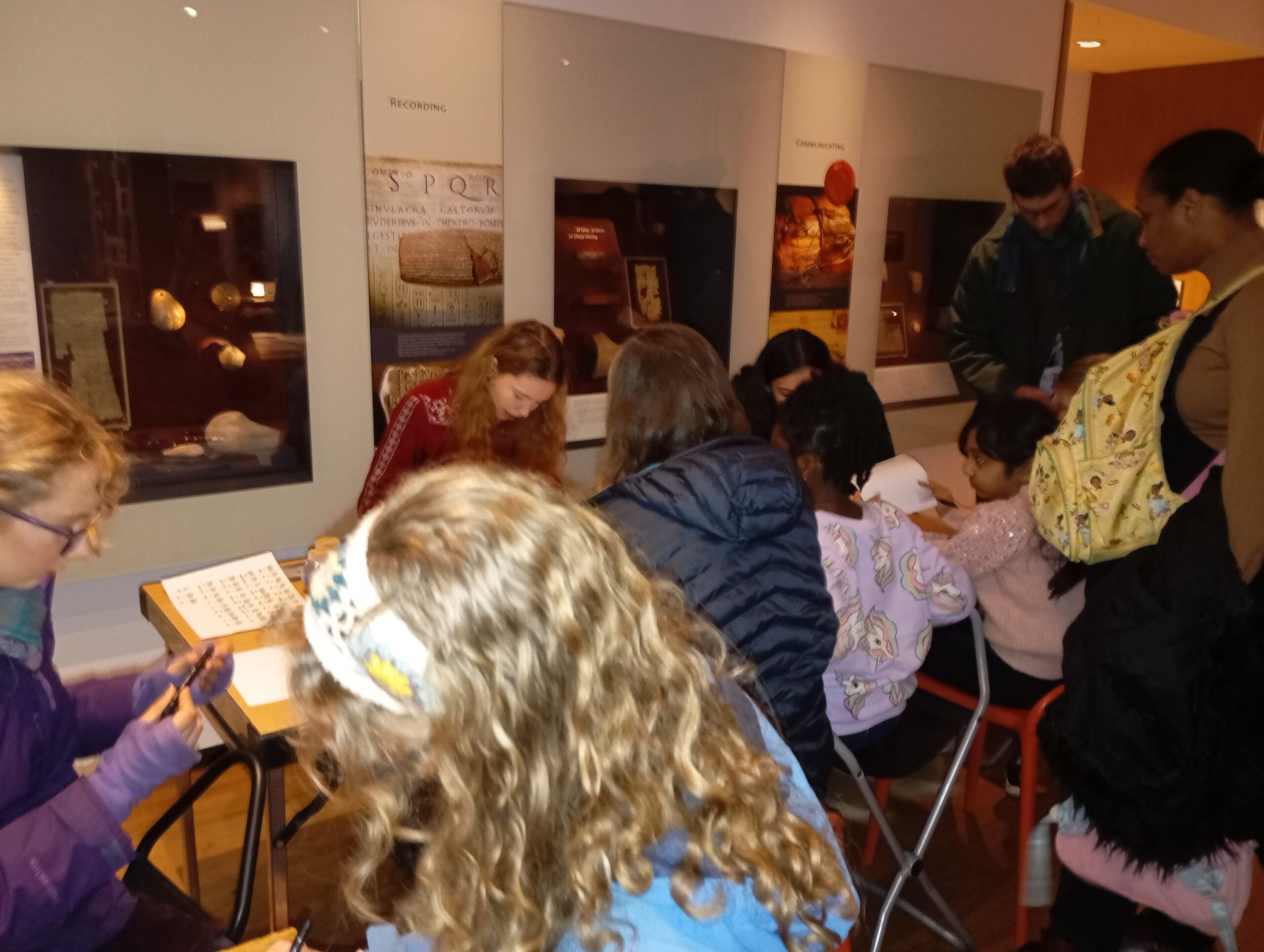
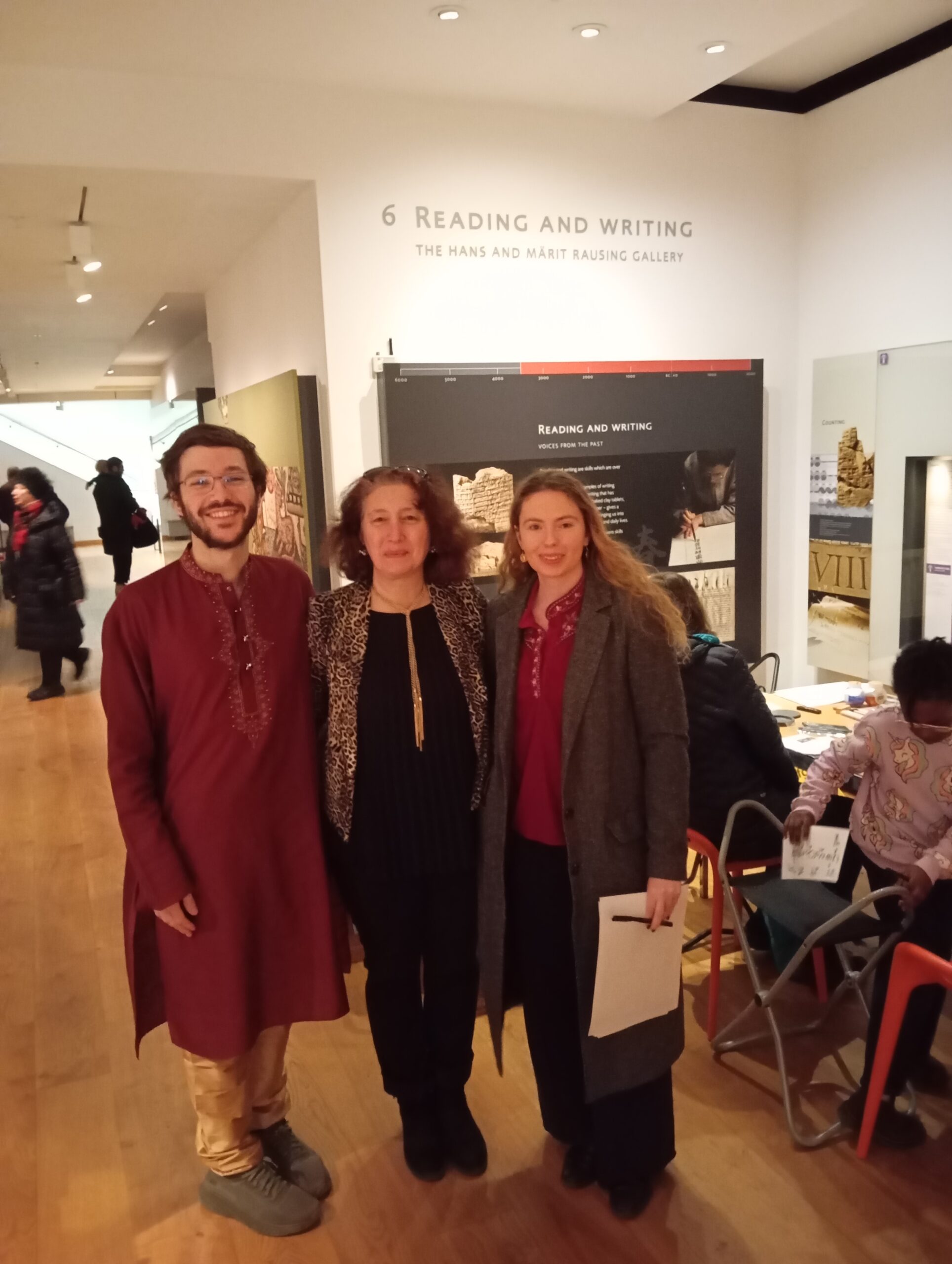
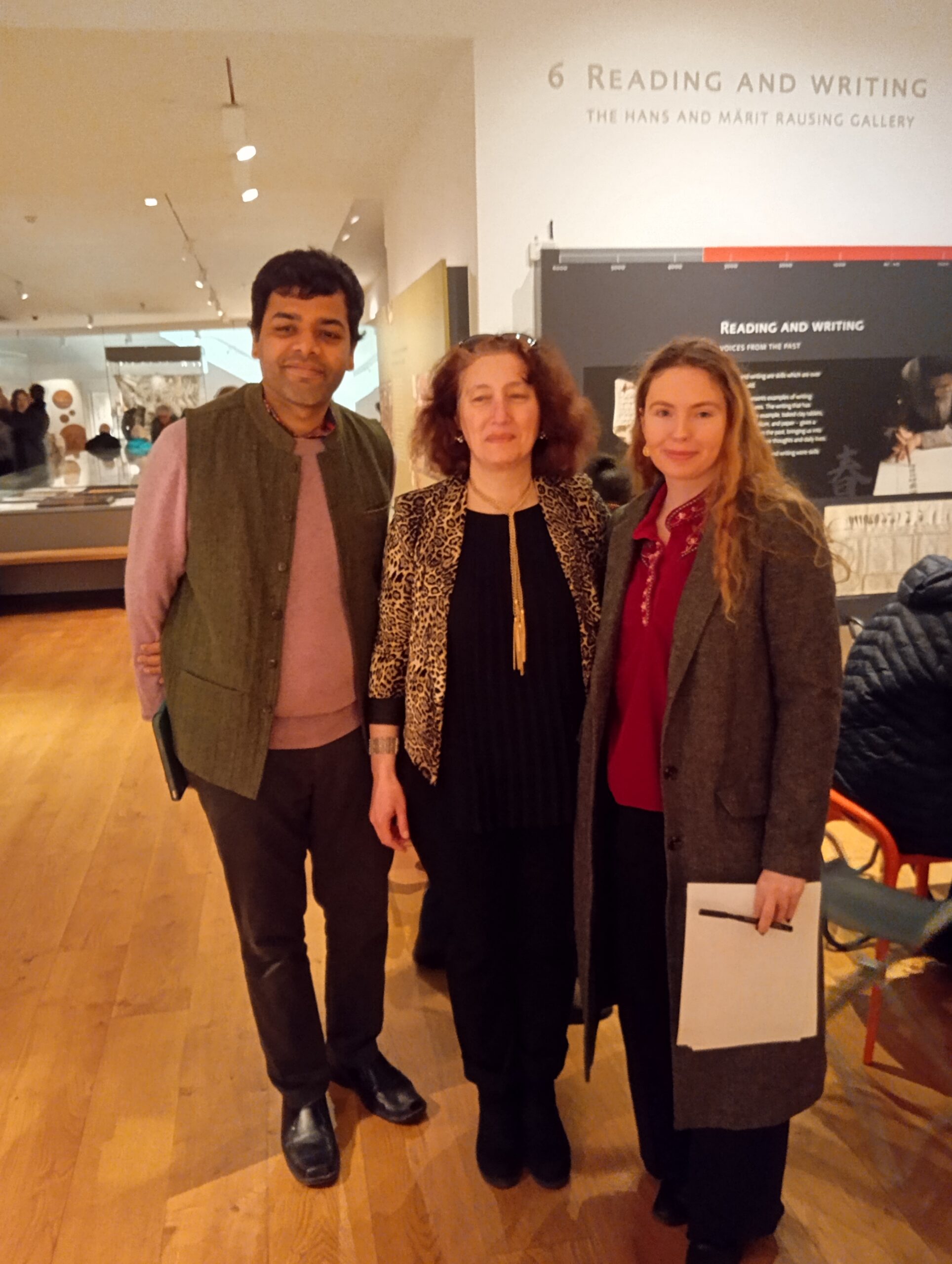


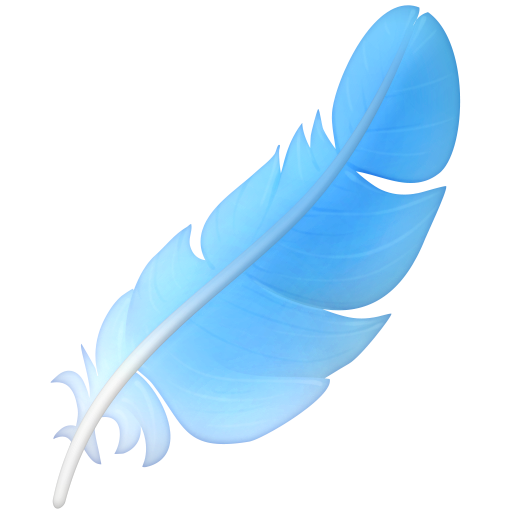
Dr Ashwini Mokashi and Her Students Presented
Devanāgarī and Marathi Scripts
Dr Ashwini Mokashi shared on behalf of her team: As teachers and students of South Asian languages, we thoroughly enjoyed presenting on the Devanagari script and manuscripts in Marathi, Hindi, and Sanskrit—some of the prominent languages that use it. The beautiful ambience of the Ashmolean Museum provided the perfect setting. As a researcher, I also found great joy in collecting some of these manuscripts from different parts of Maharashtra, such as Wai and Sajjangad, as well as a historical map from the Bodleian Library at Oxford. A special thanks to Dr Thea Gomelauri, and the Oxford Interfaith Forum for their excellent work in organizing such a popular and engaging programme promoting cultural diversity, and linguistic education.
Dr Mokashi also thanked her team: Dear Thomas, Sagarika and Vishes, let me take this opportunity to thank all of you for participating in the presentation! Without you, the project would not have been as successful and as fun as it was!
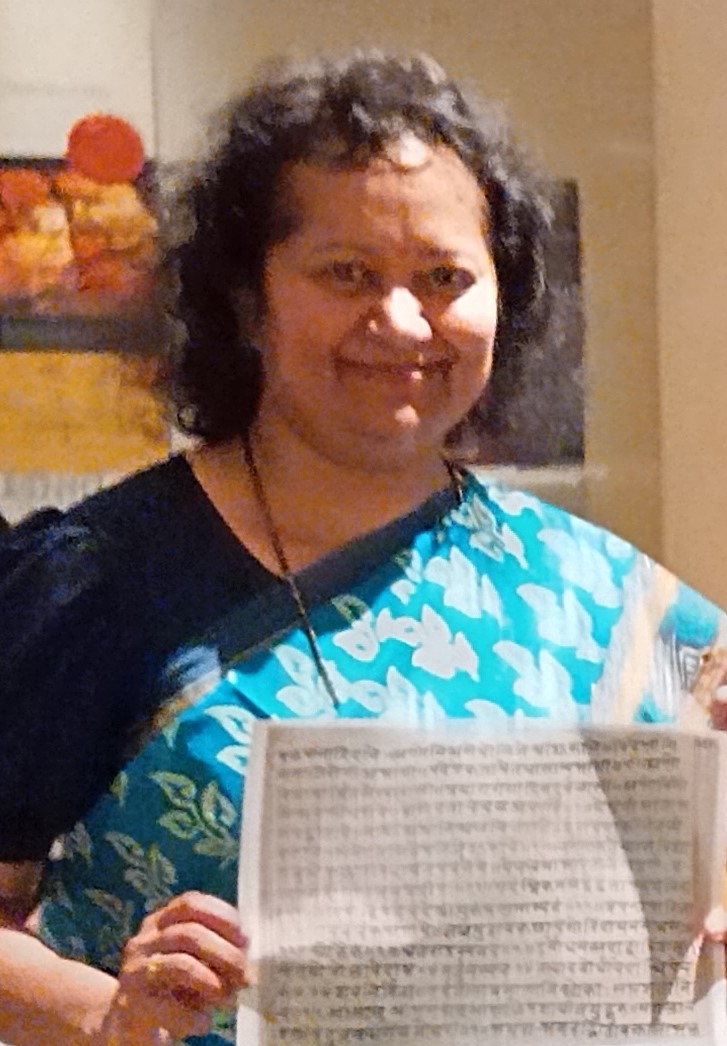
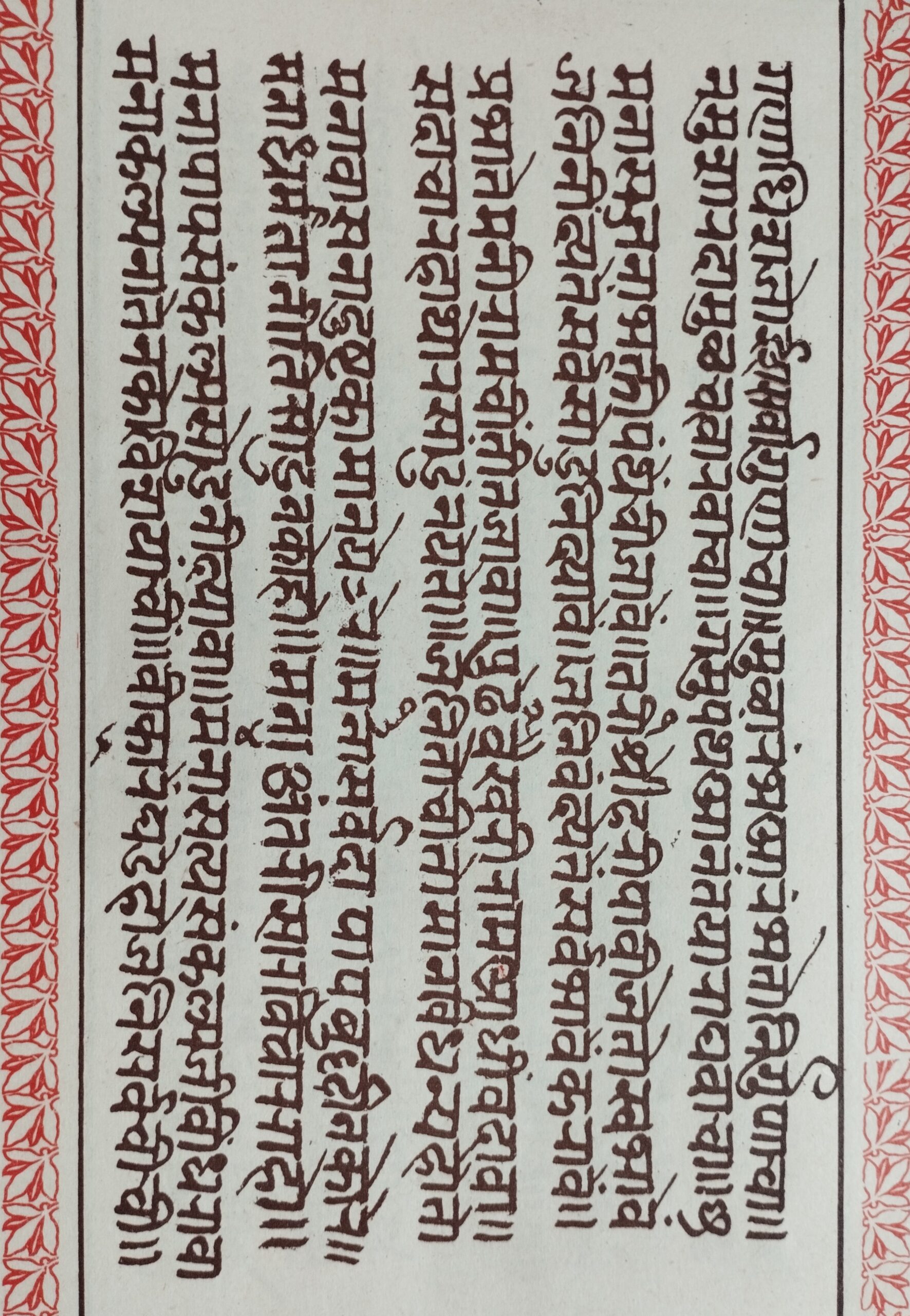
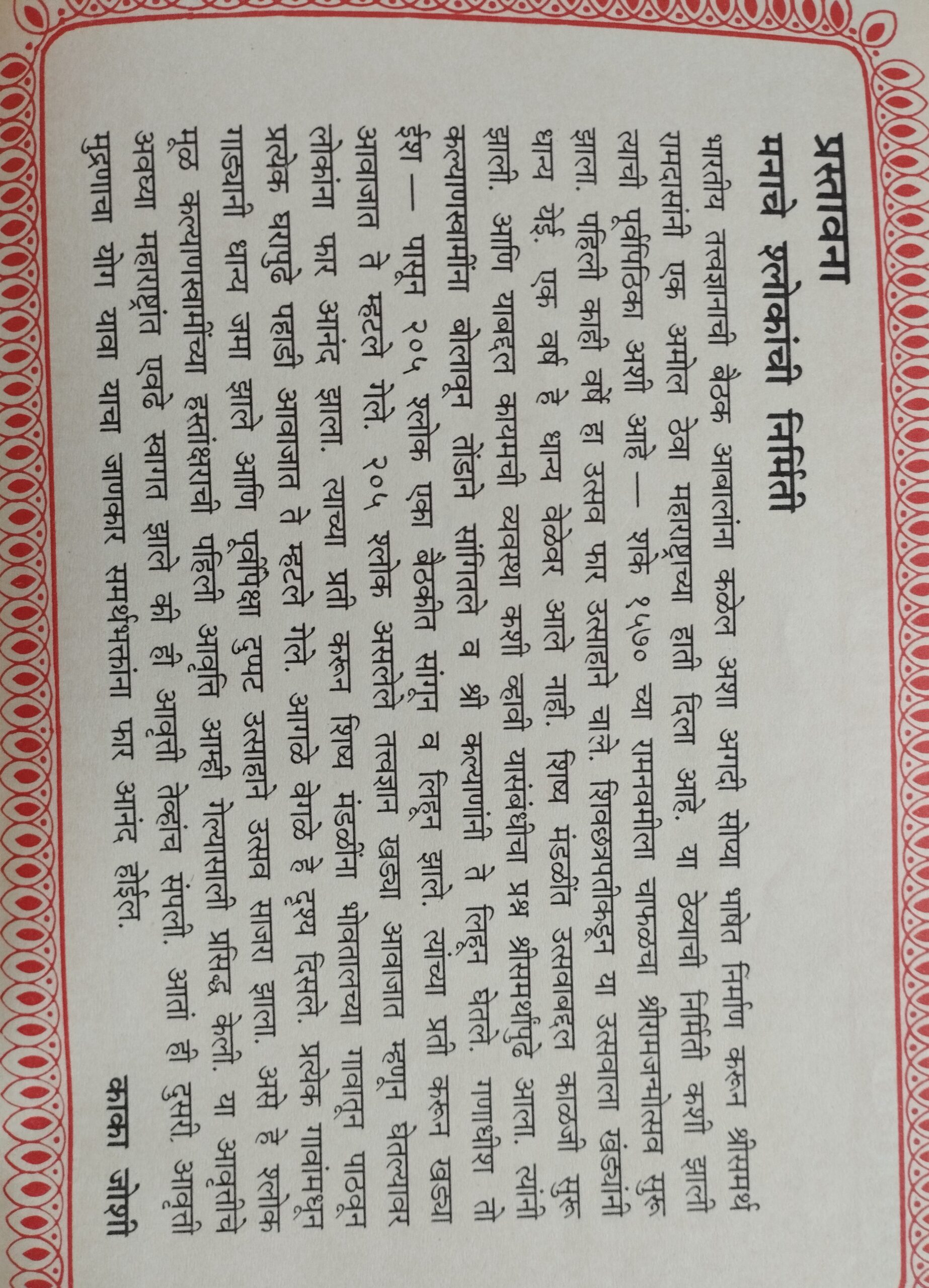
Sagarika Chaudhari

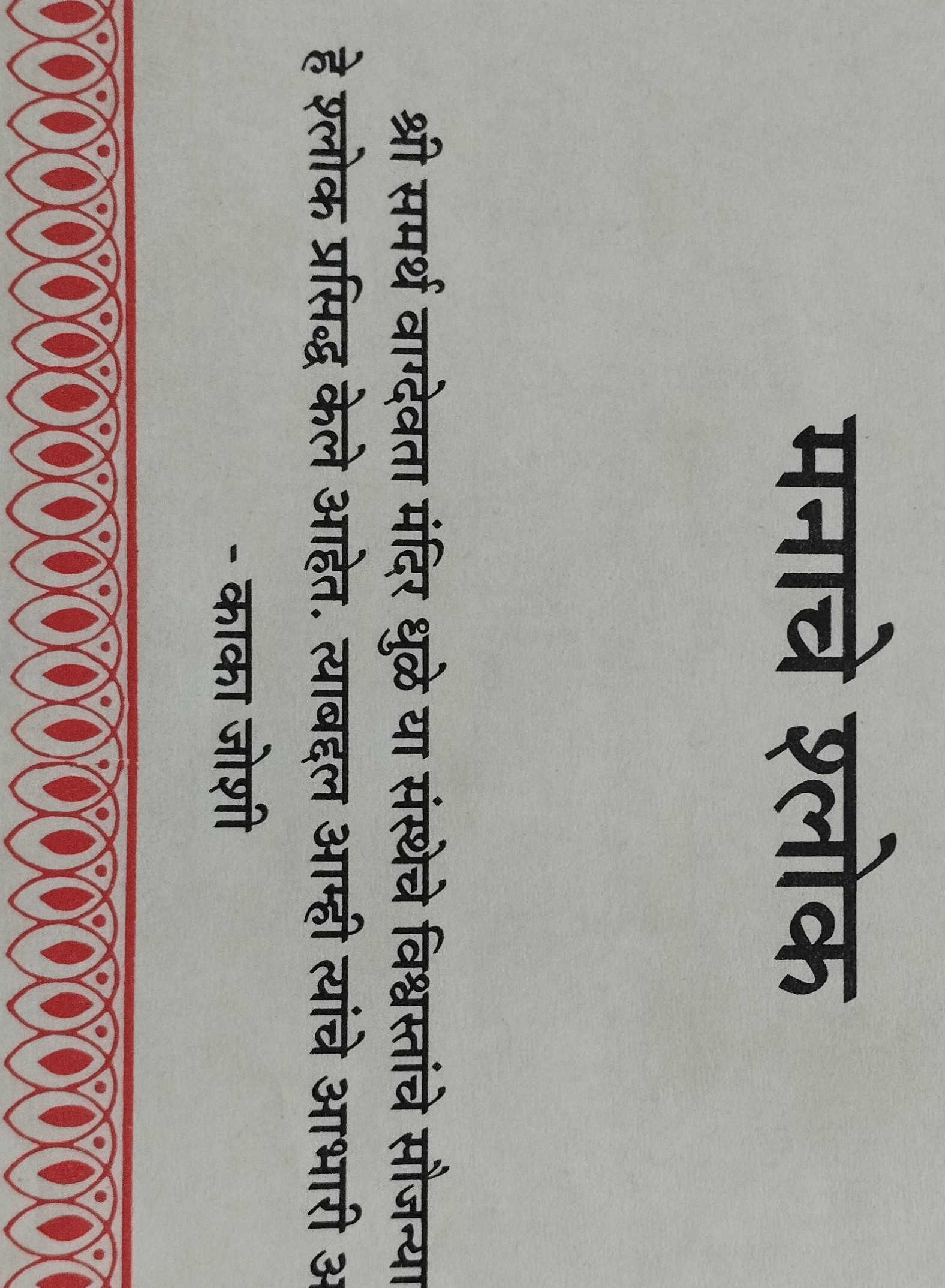
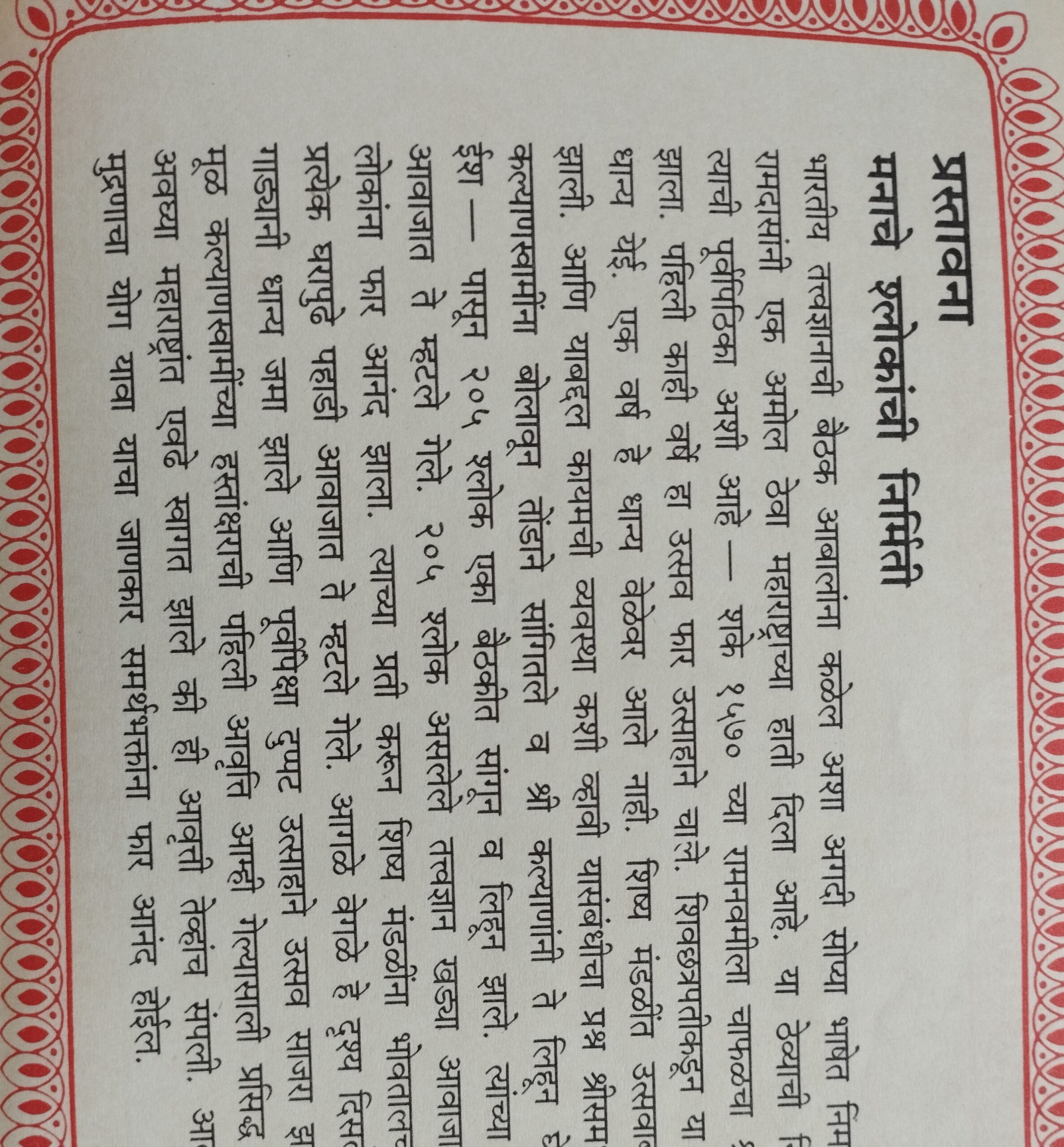
Thomas Award
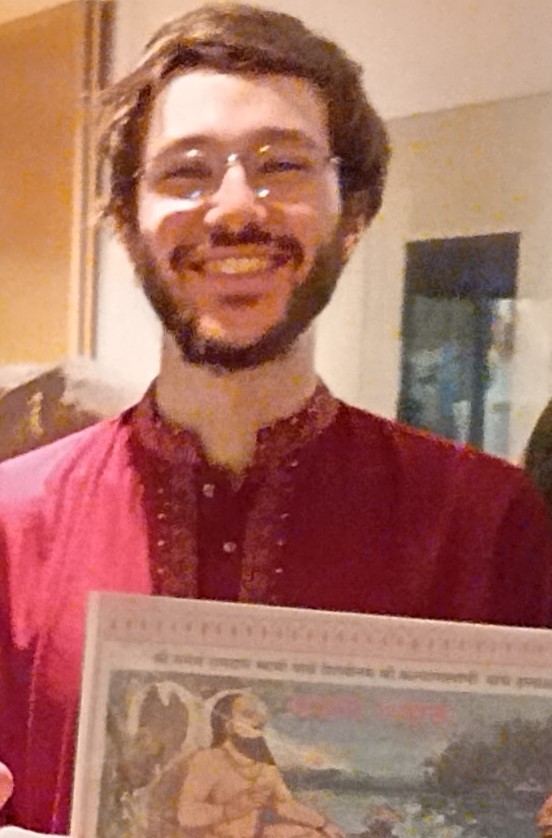
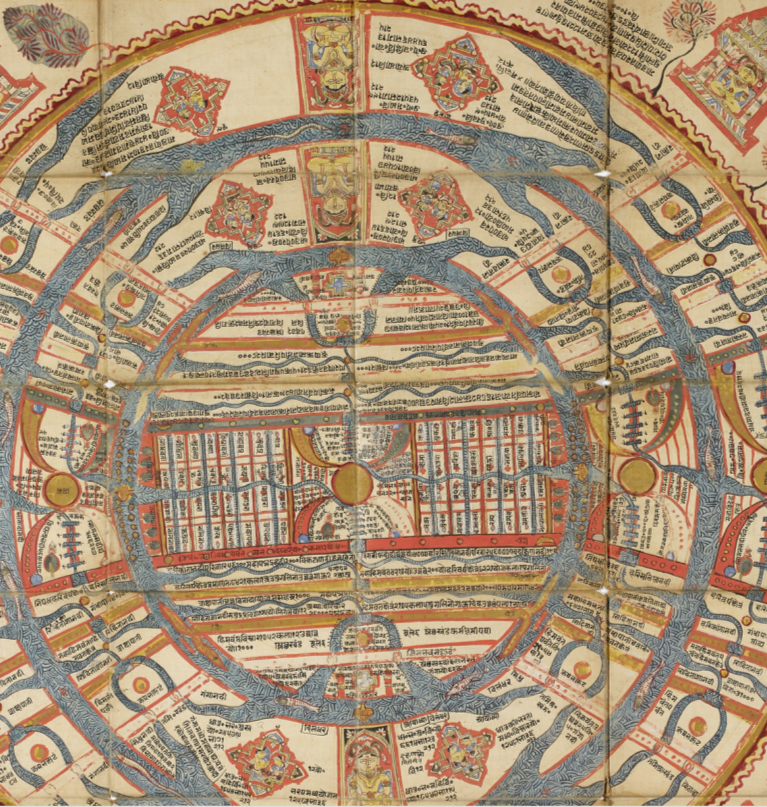
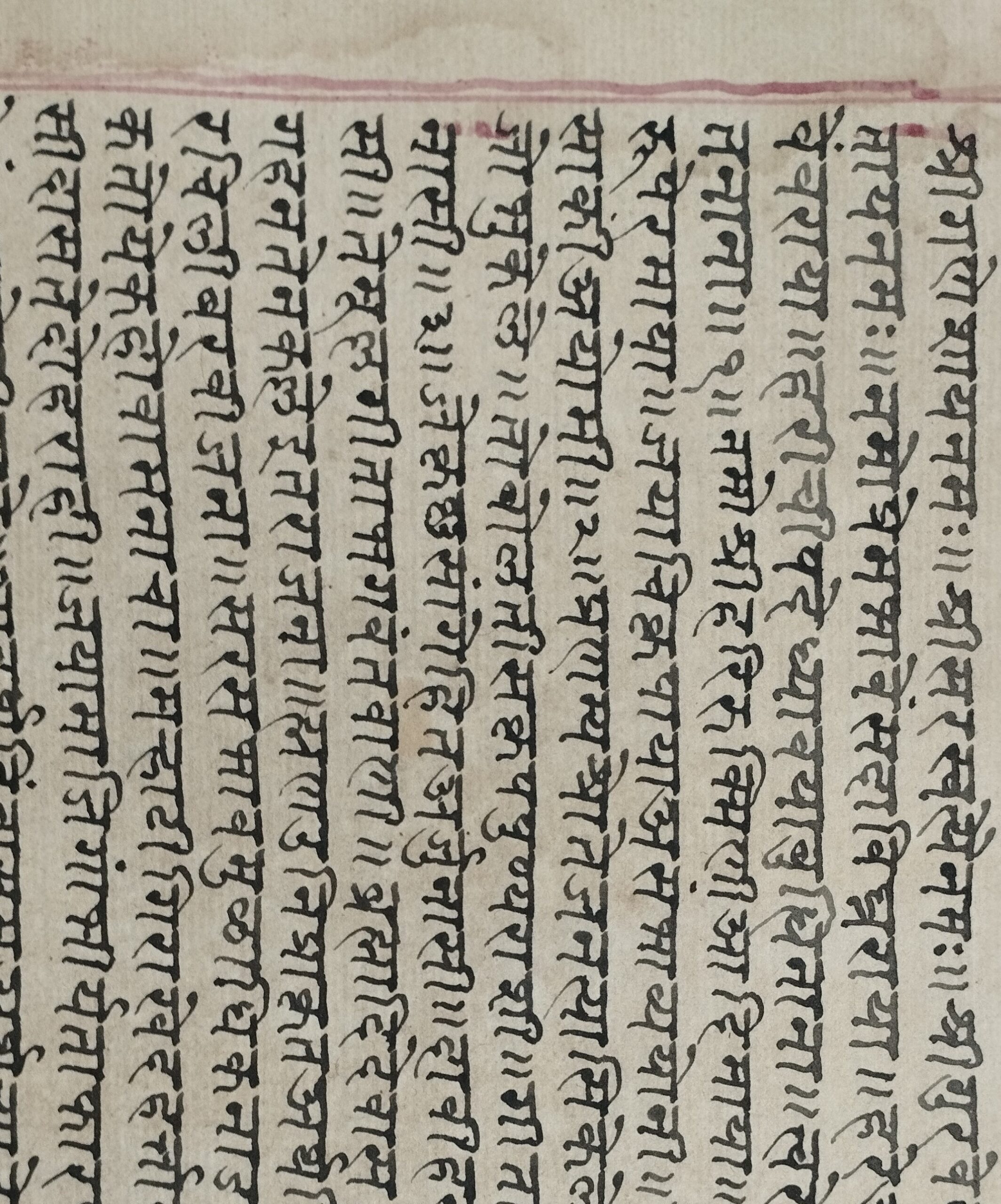
Vishes Kothari
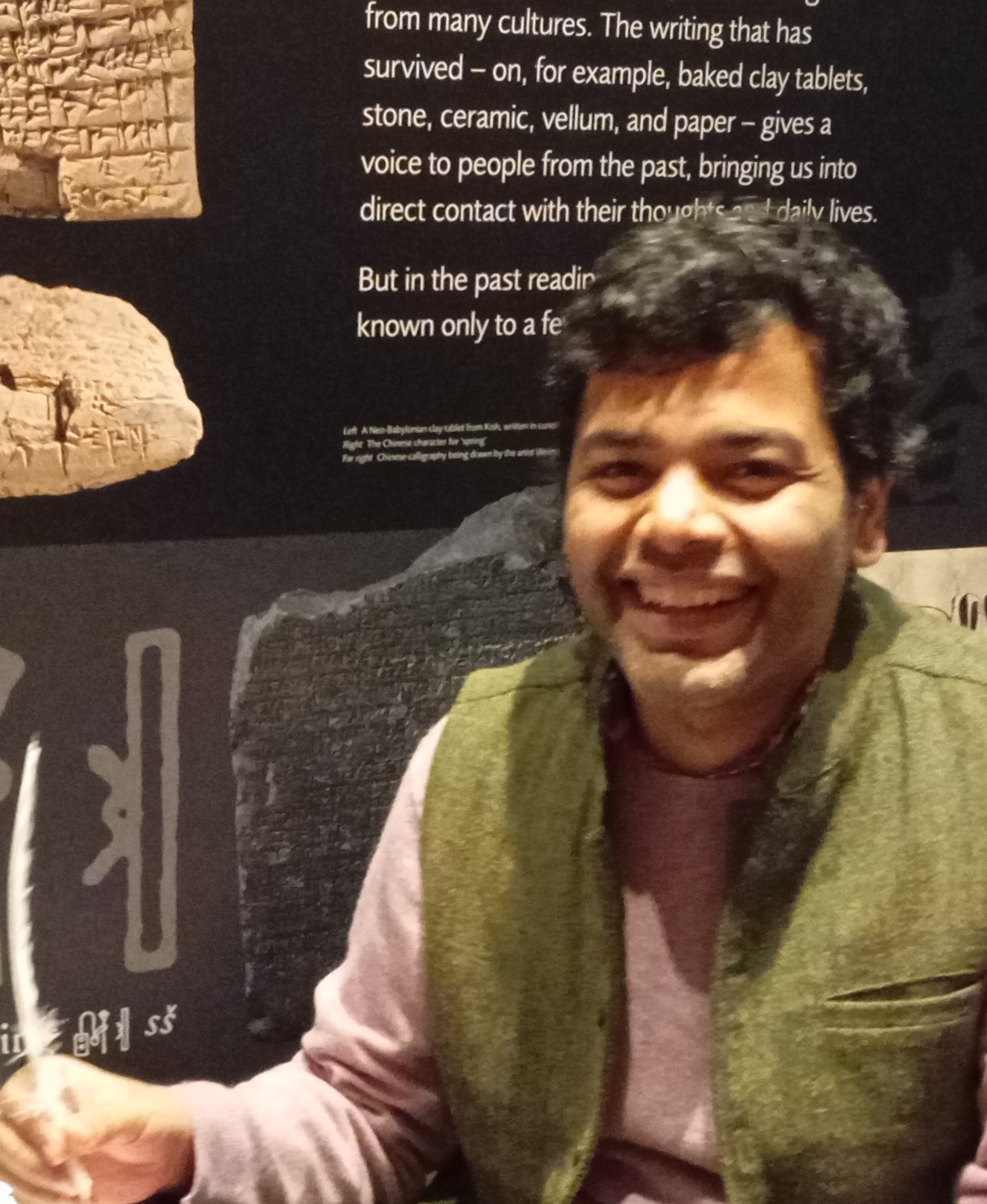

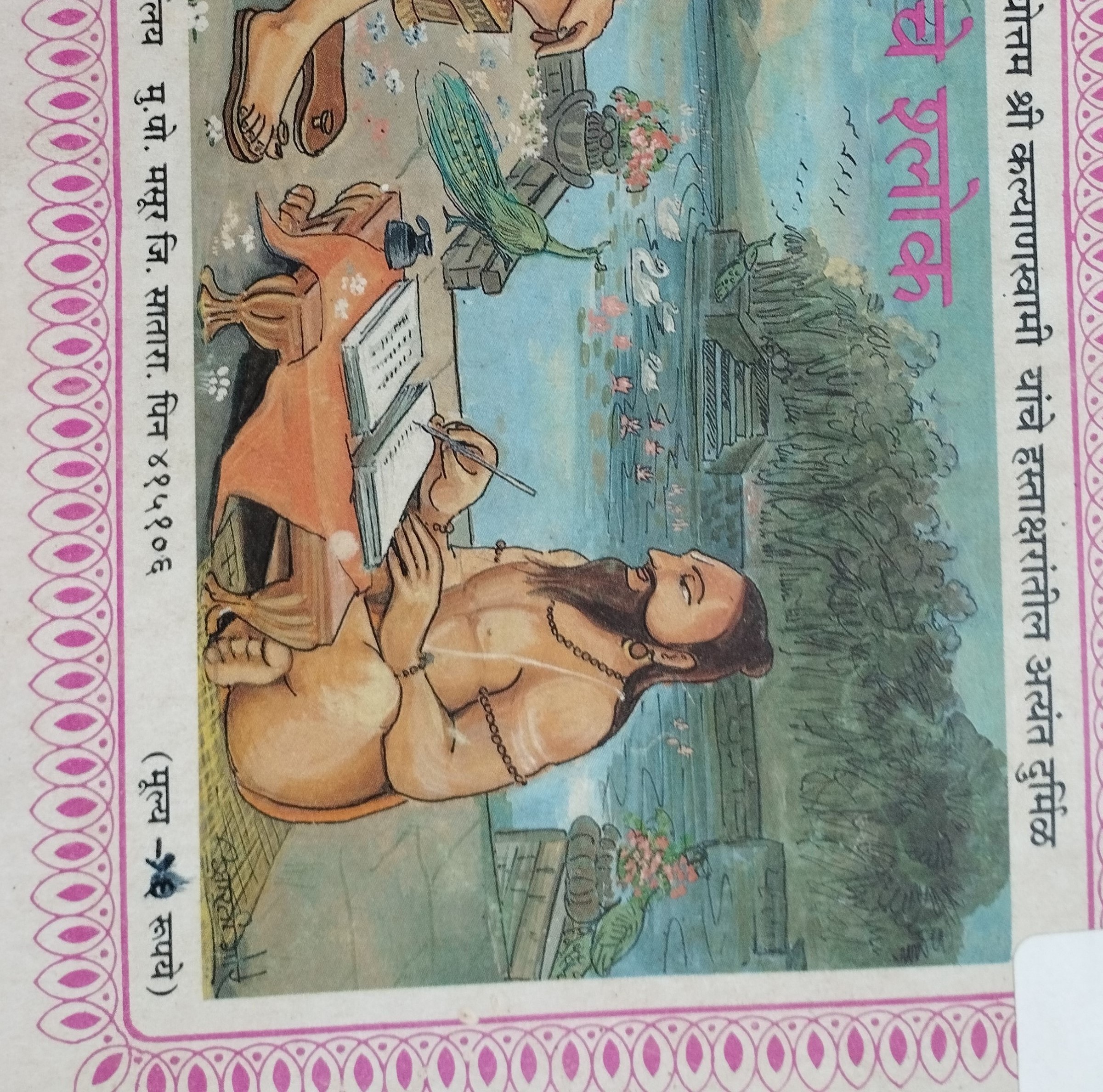
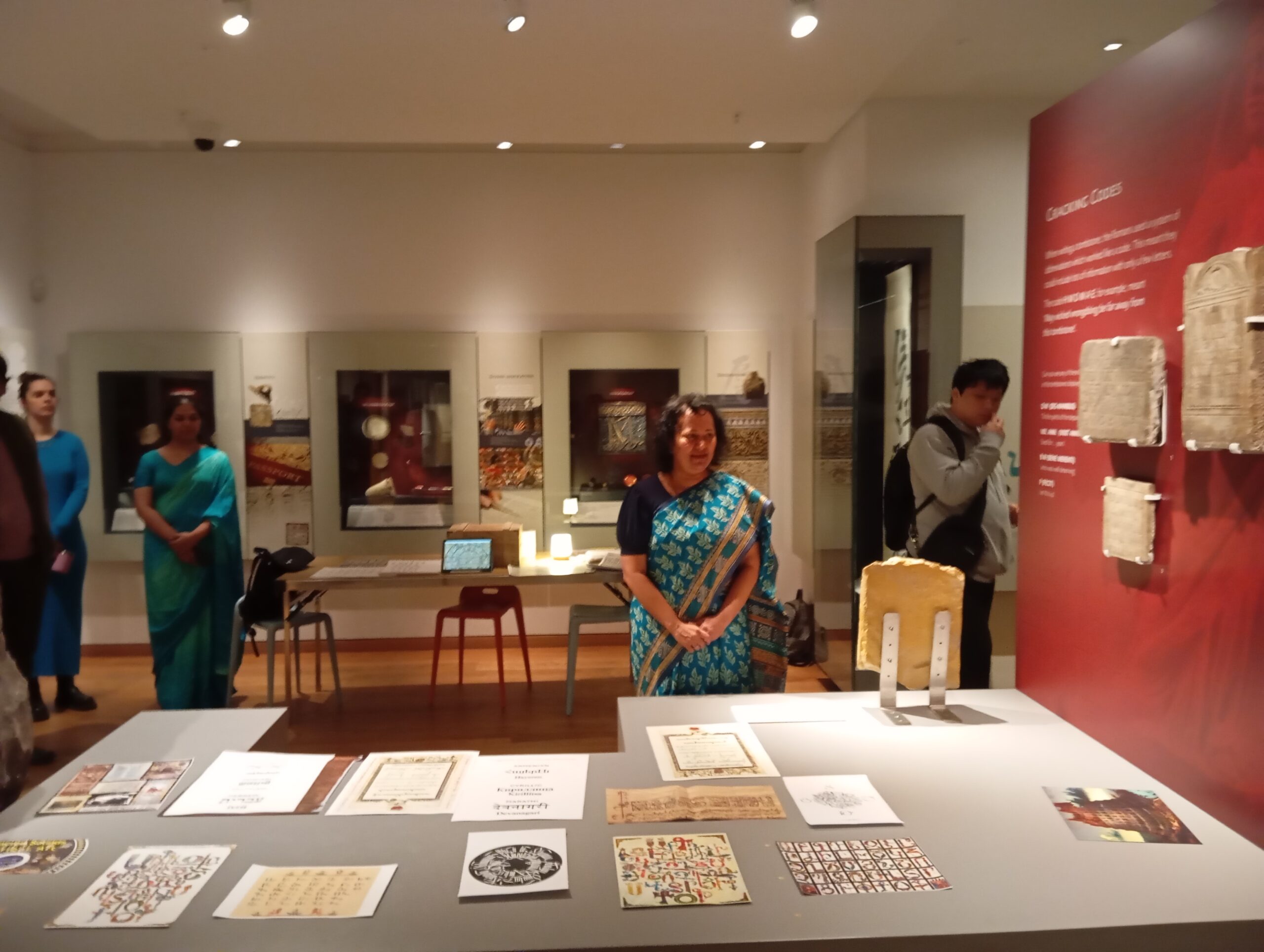
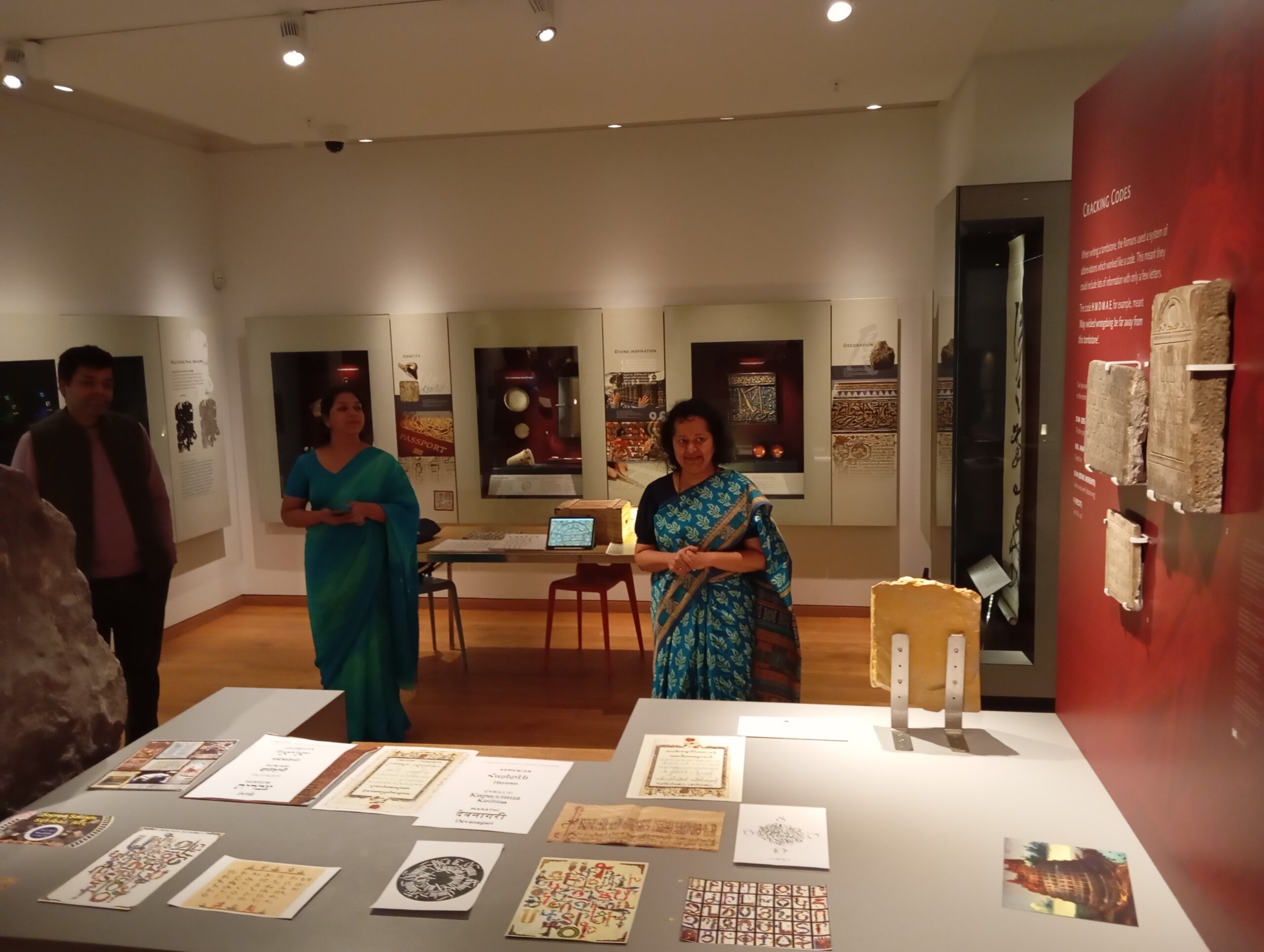
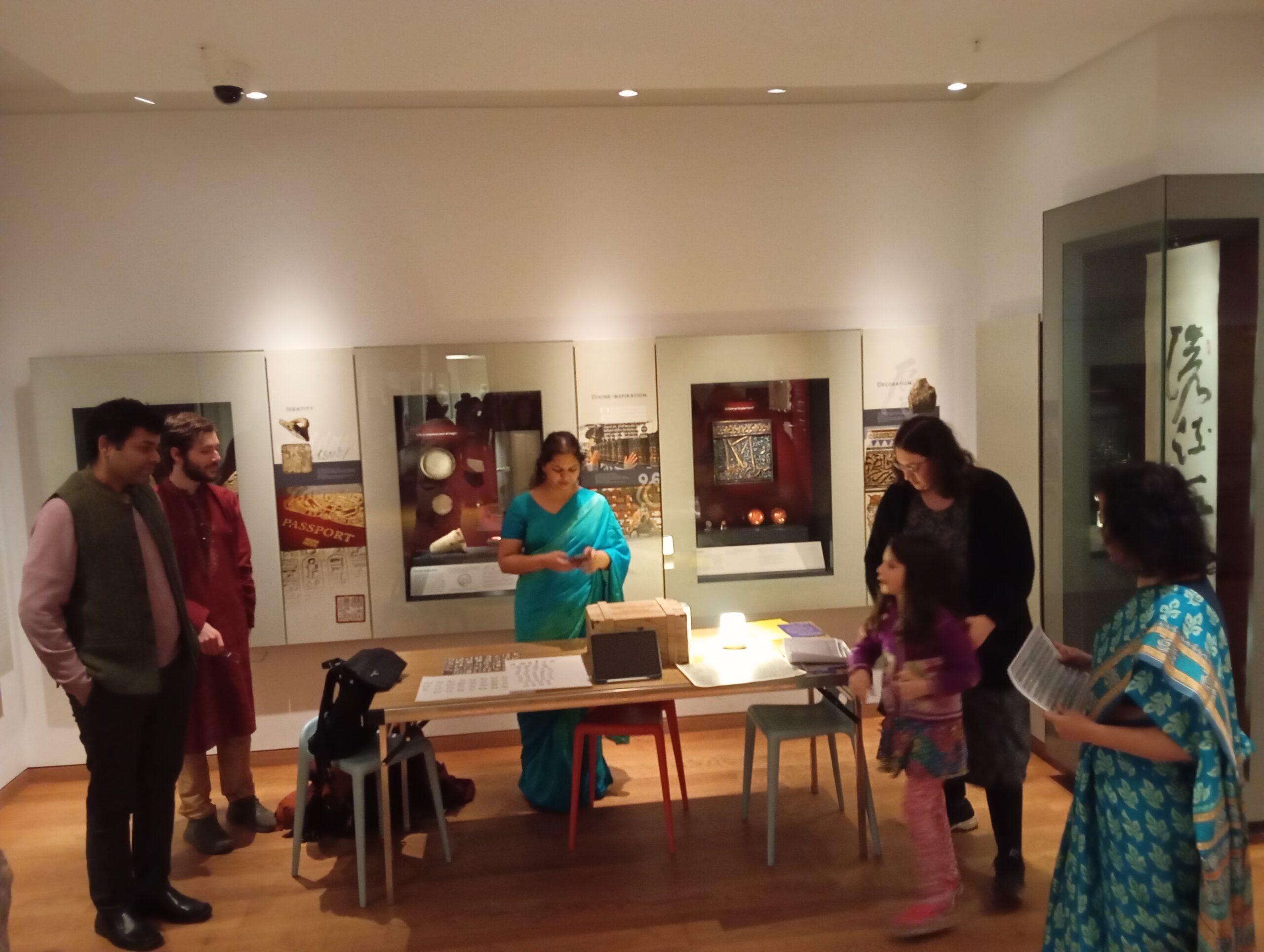
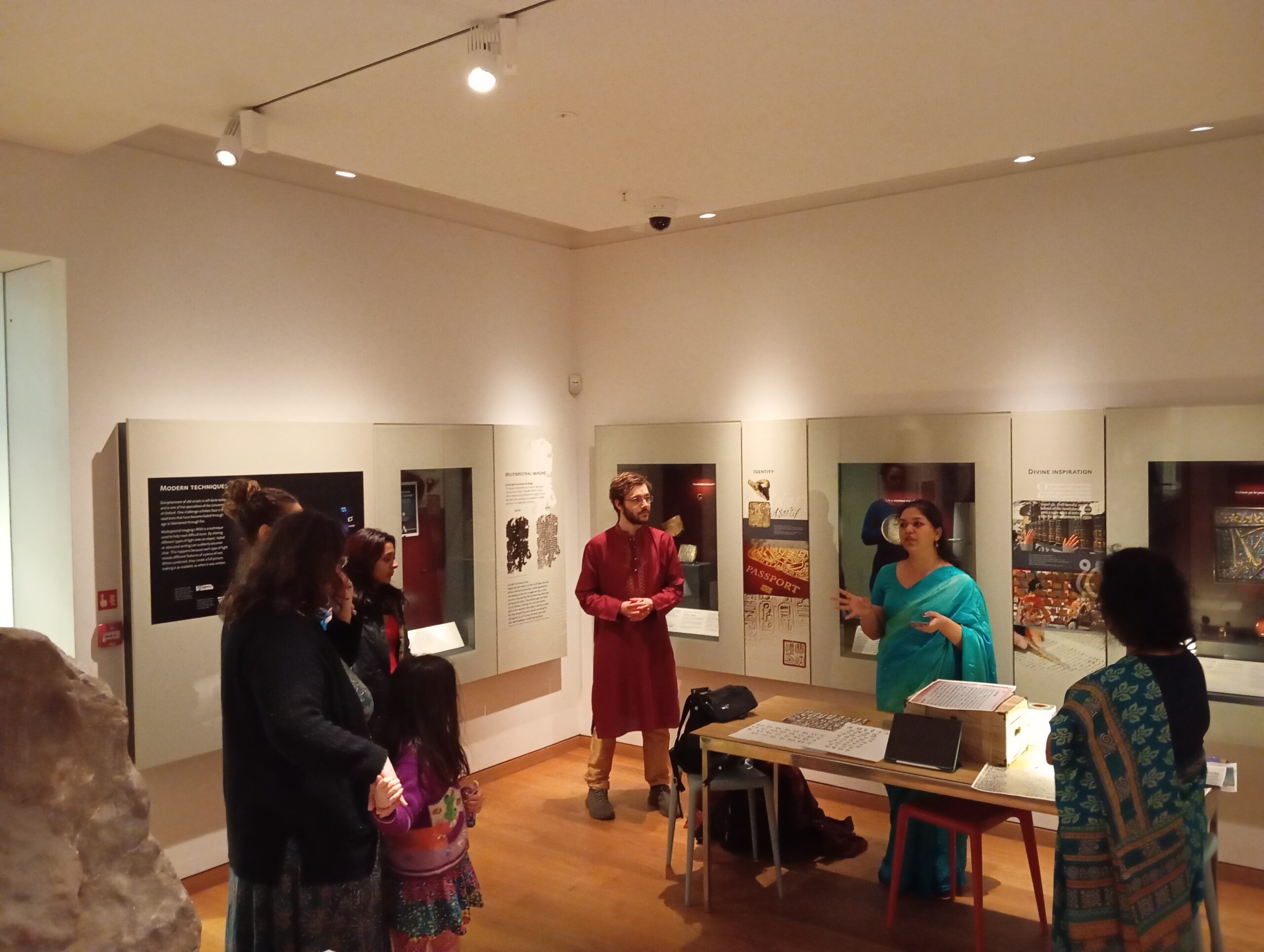
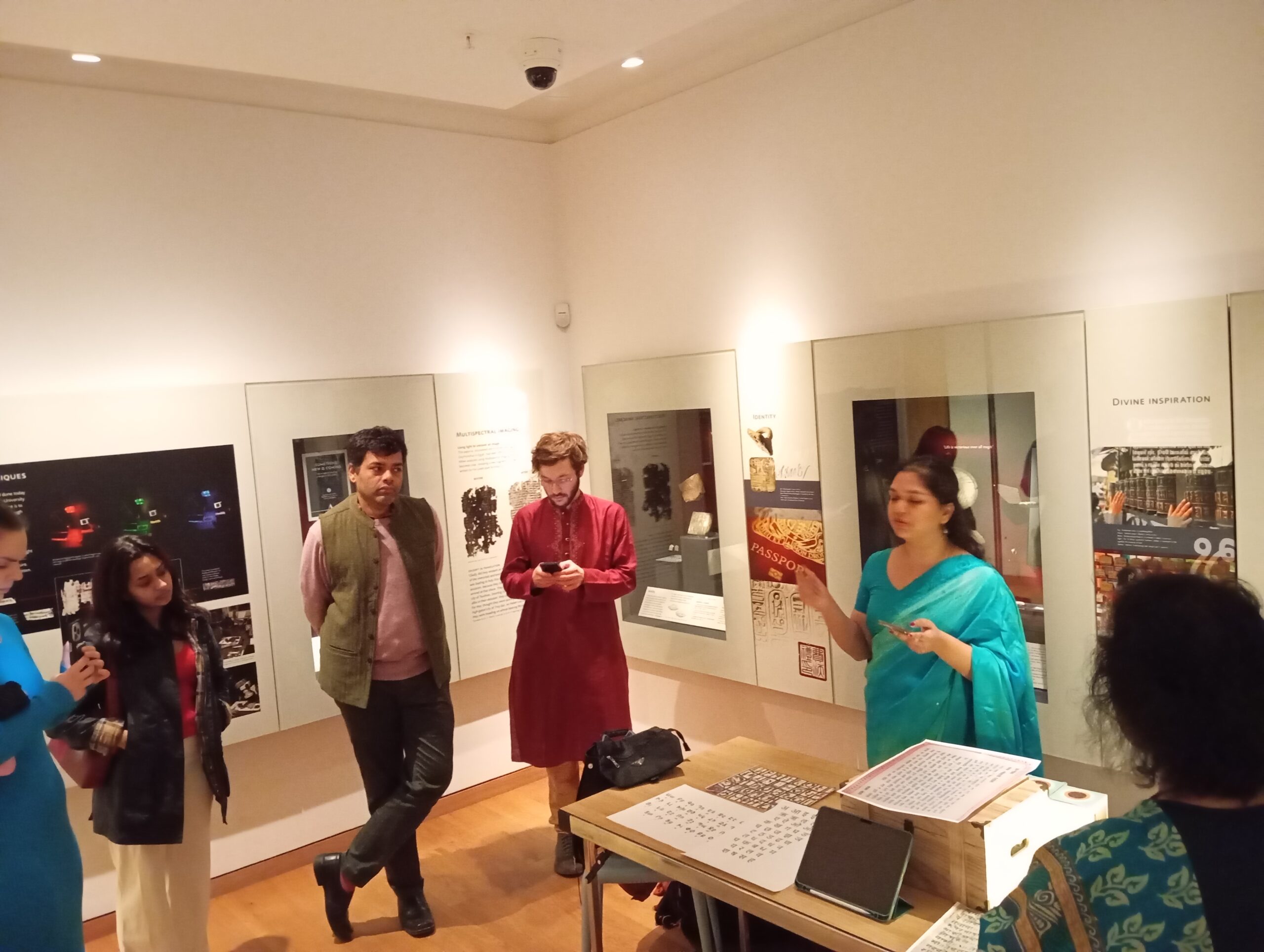
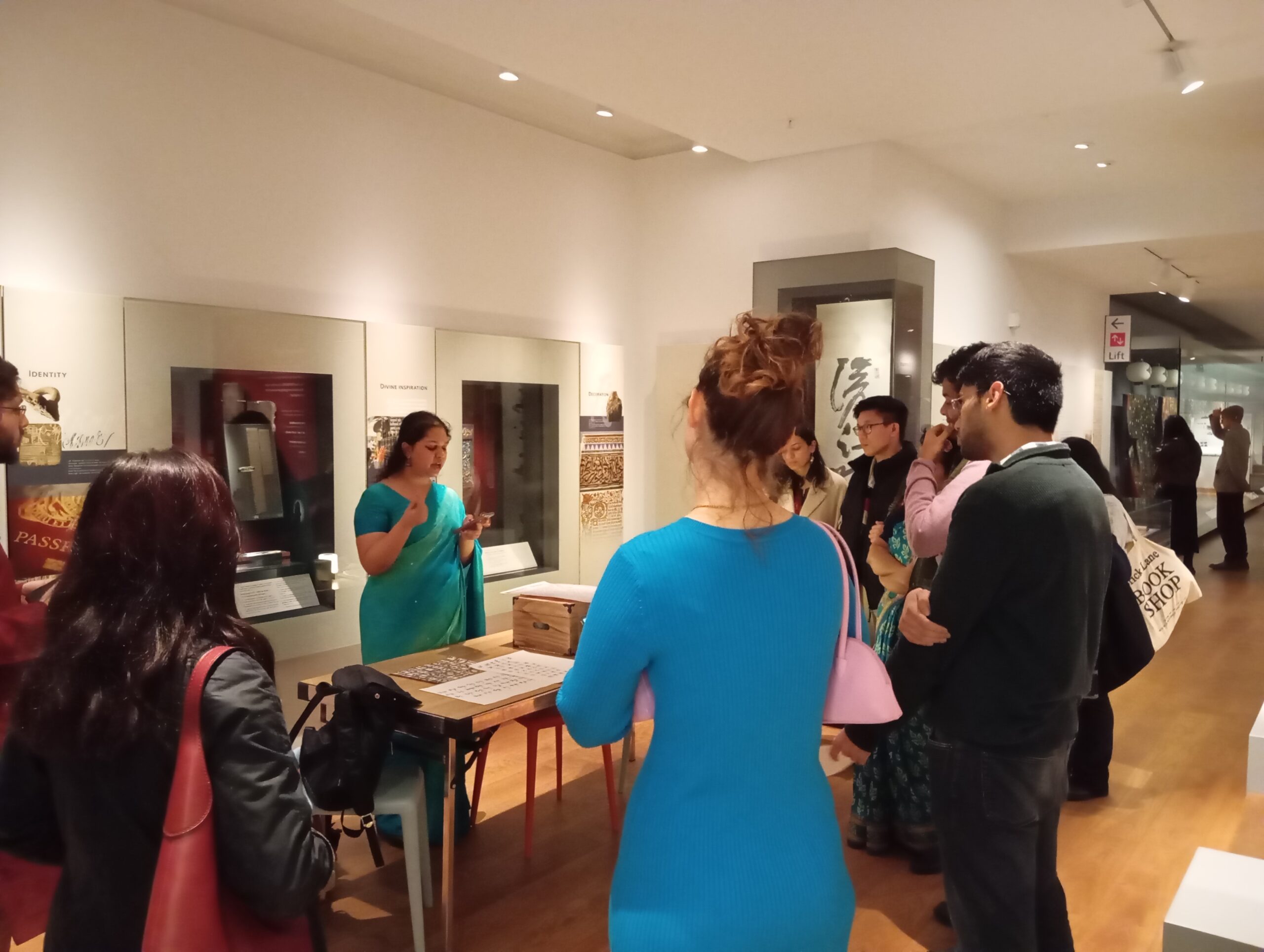
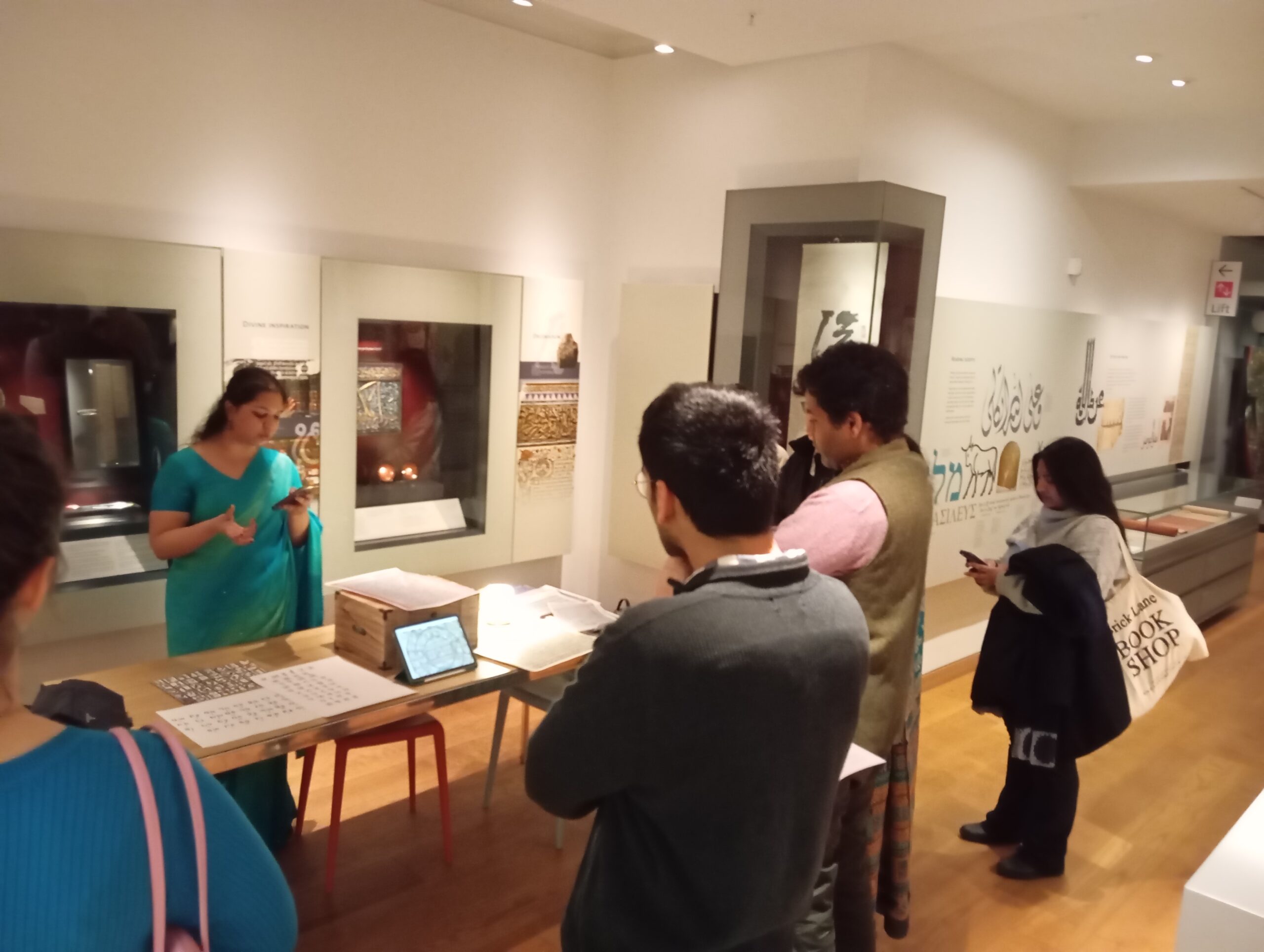

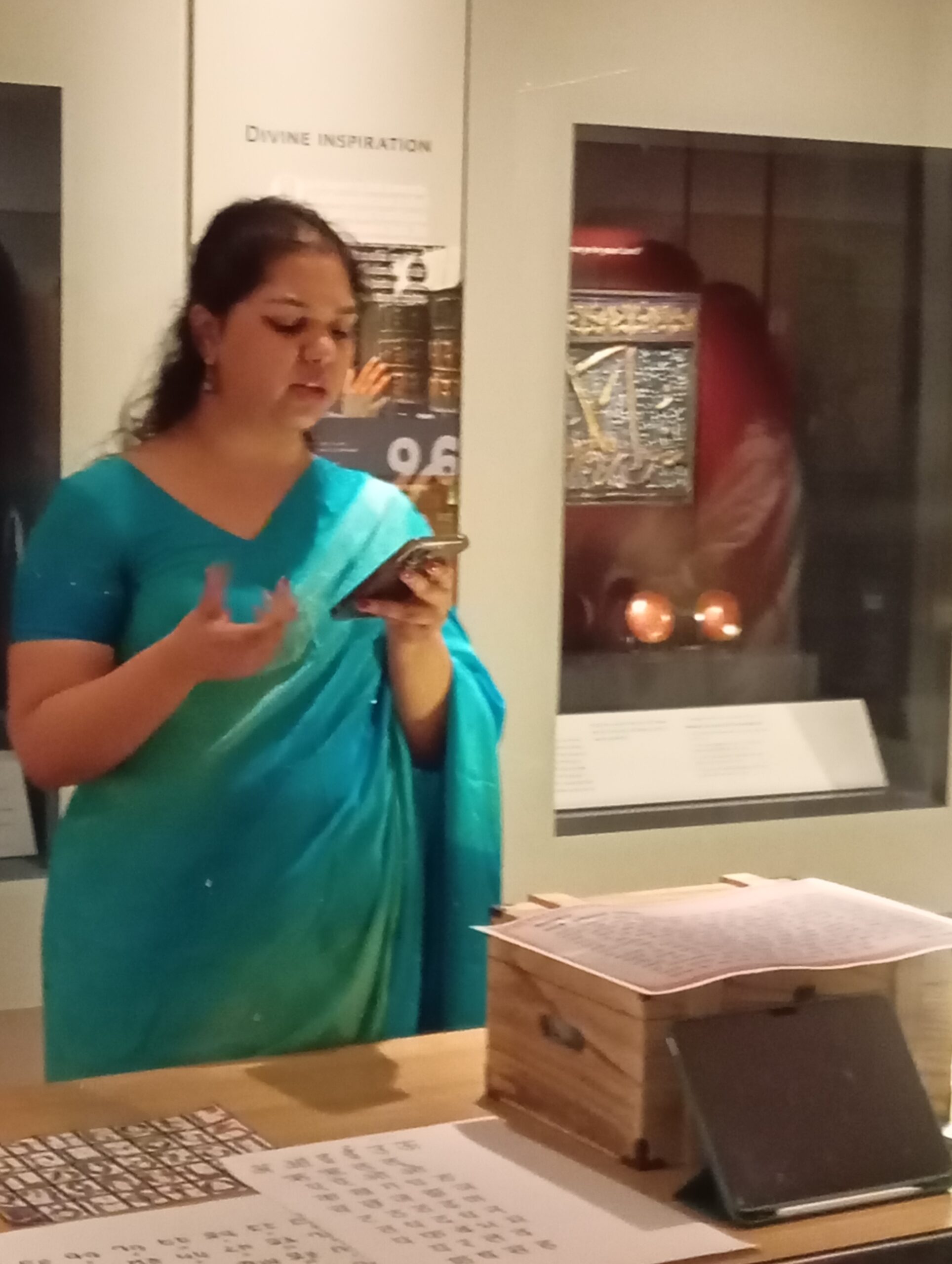
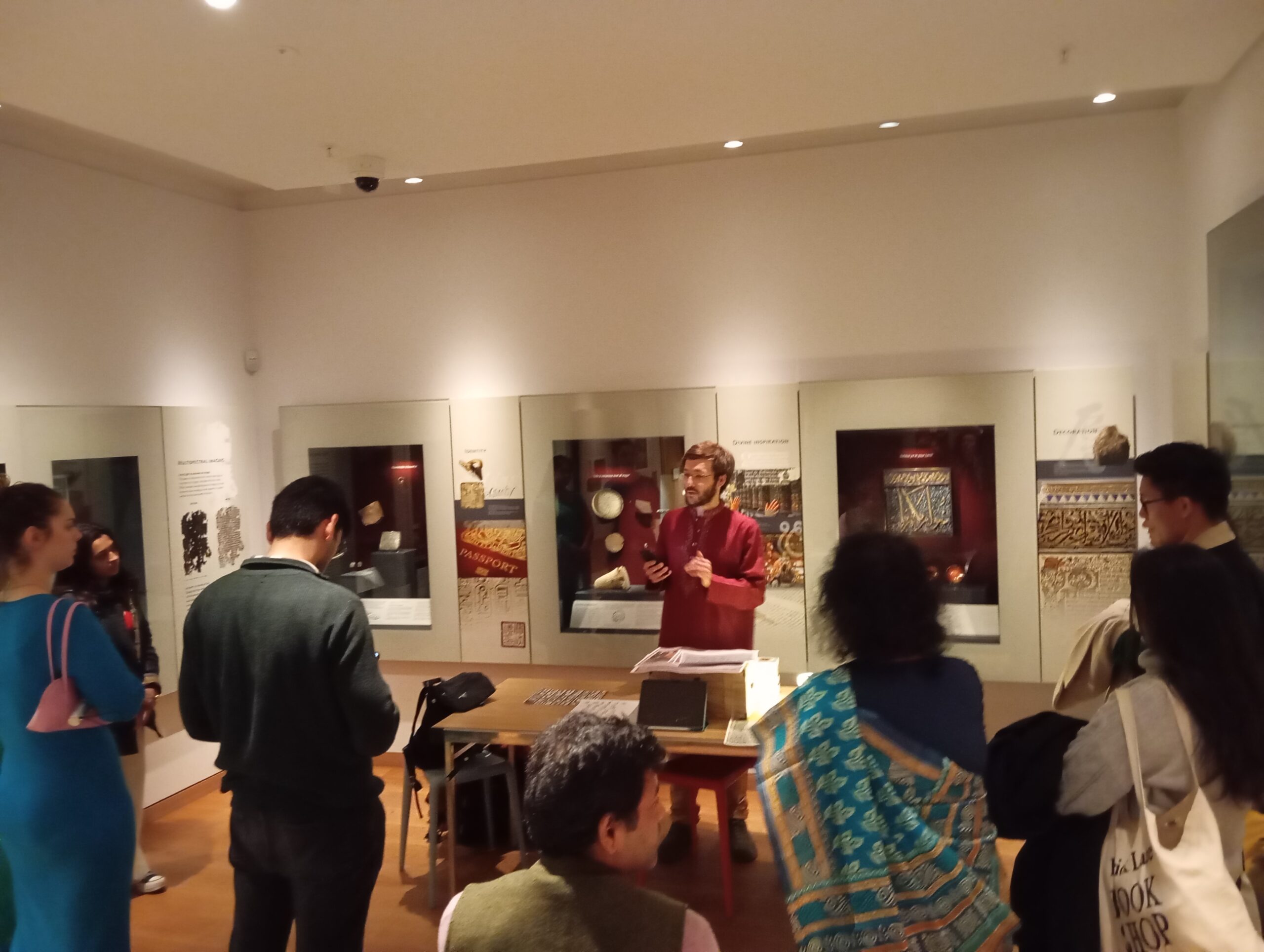
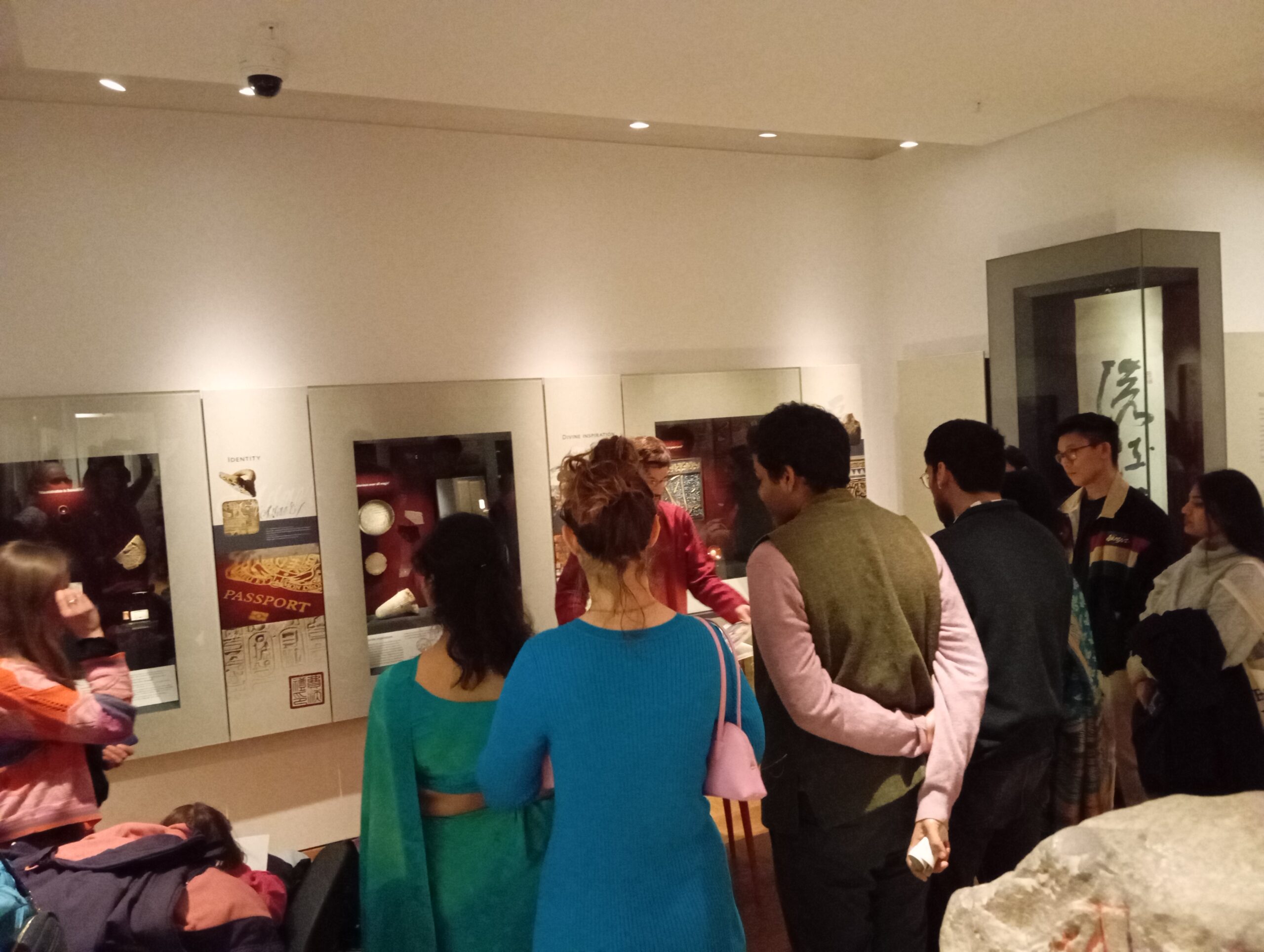
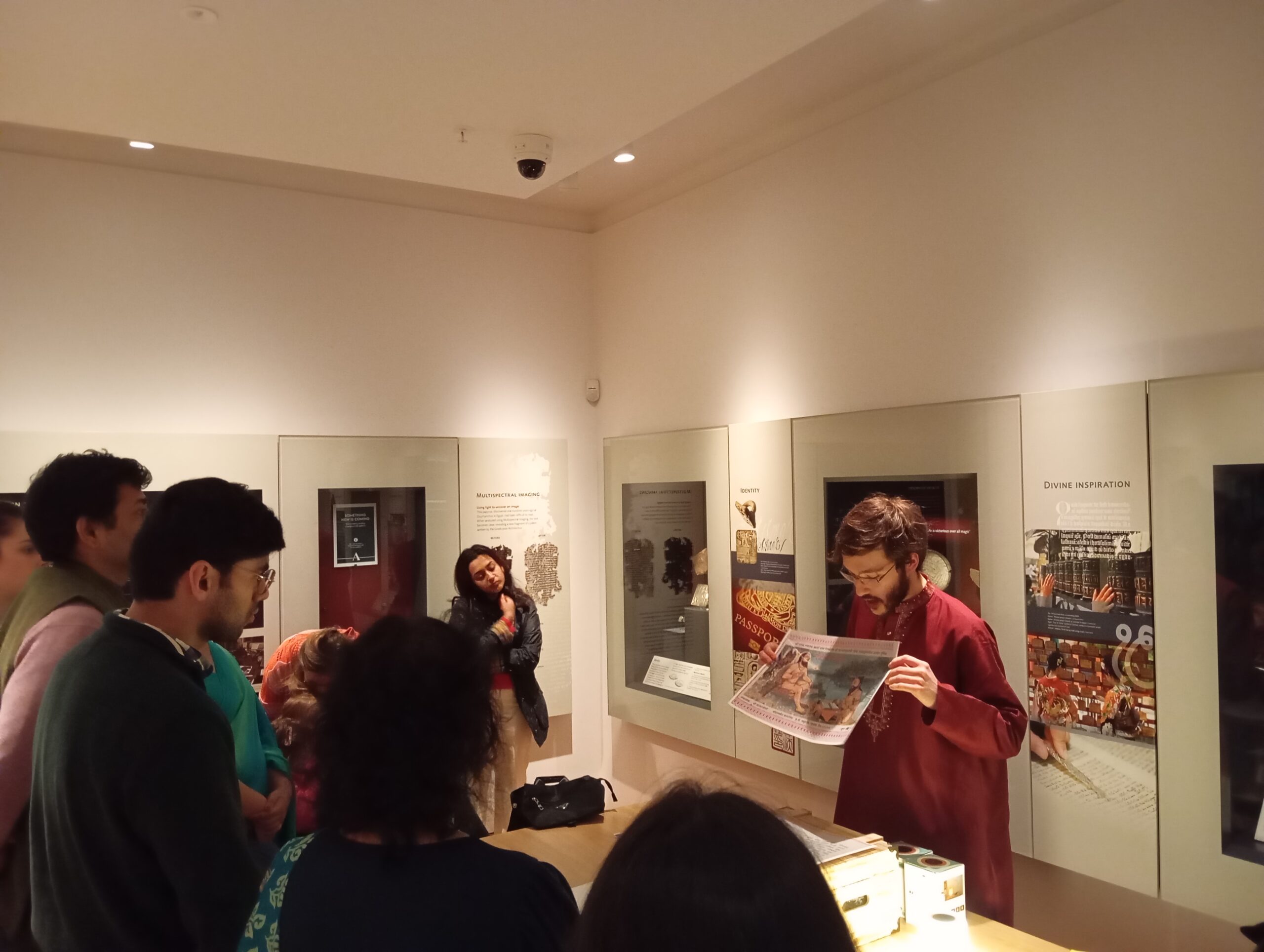
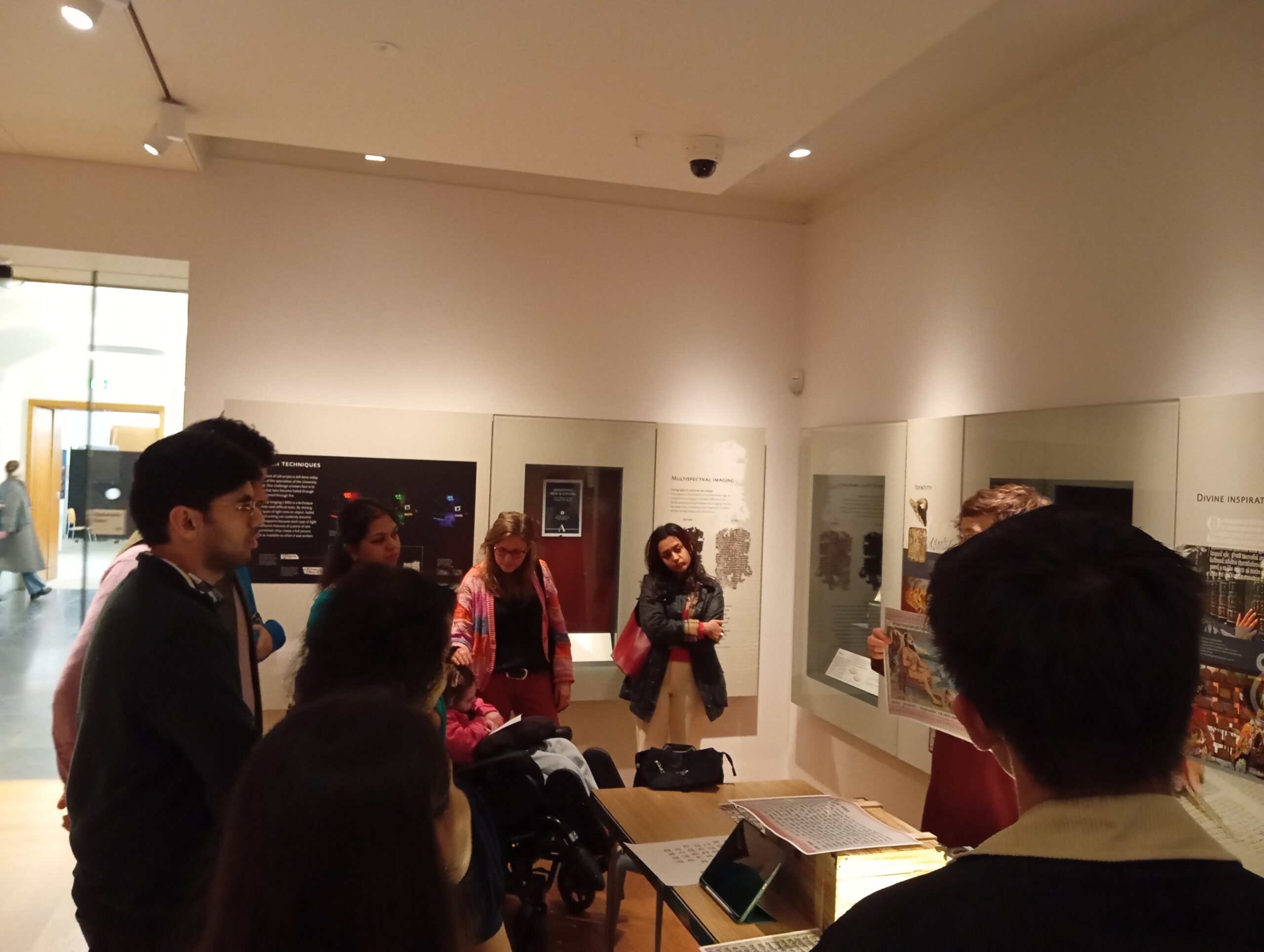
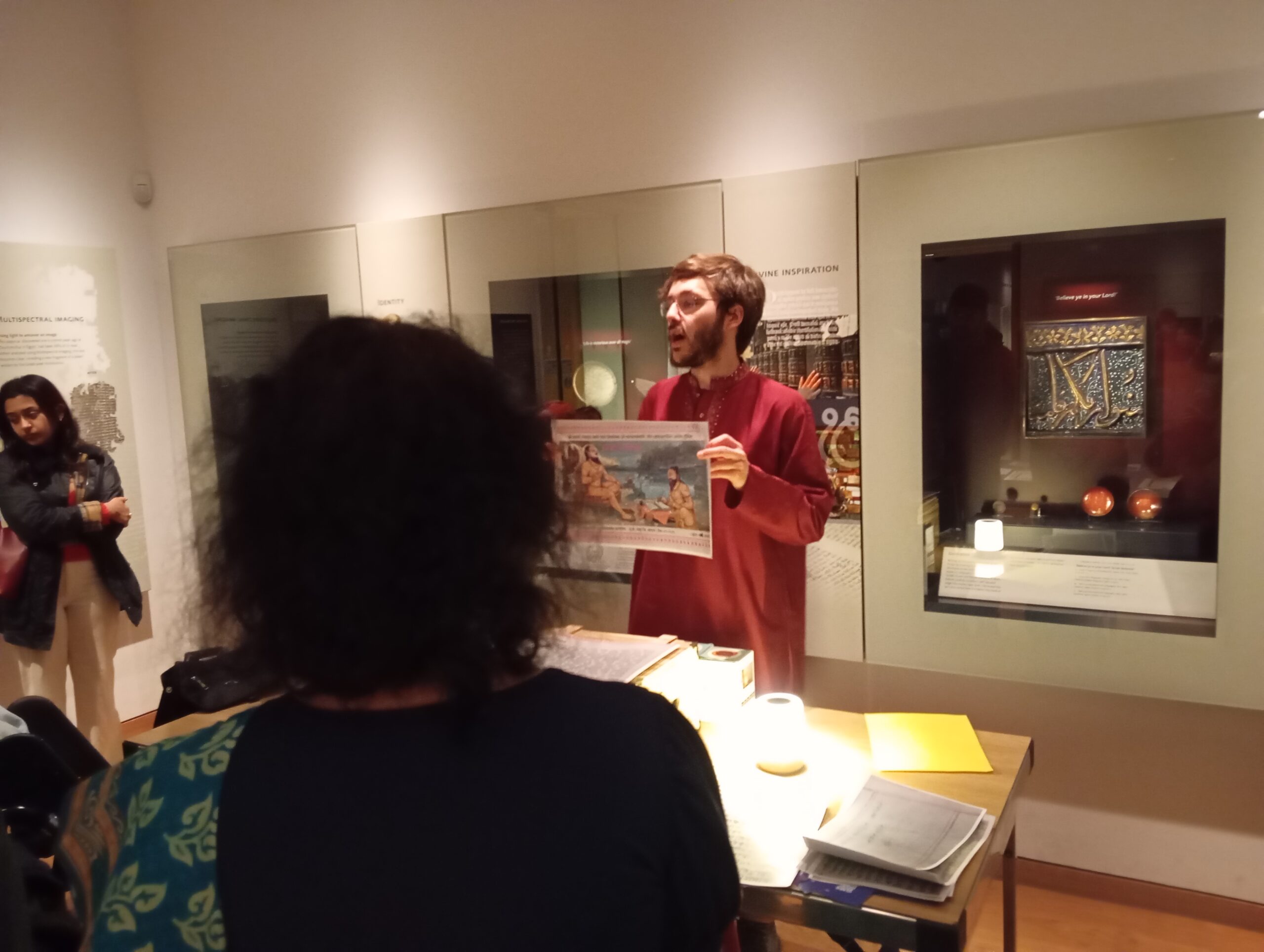
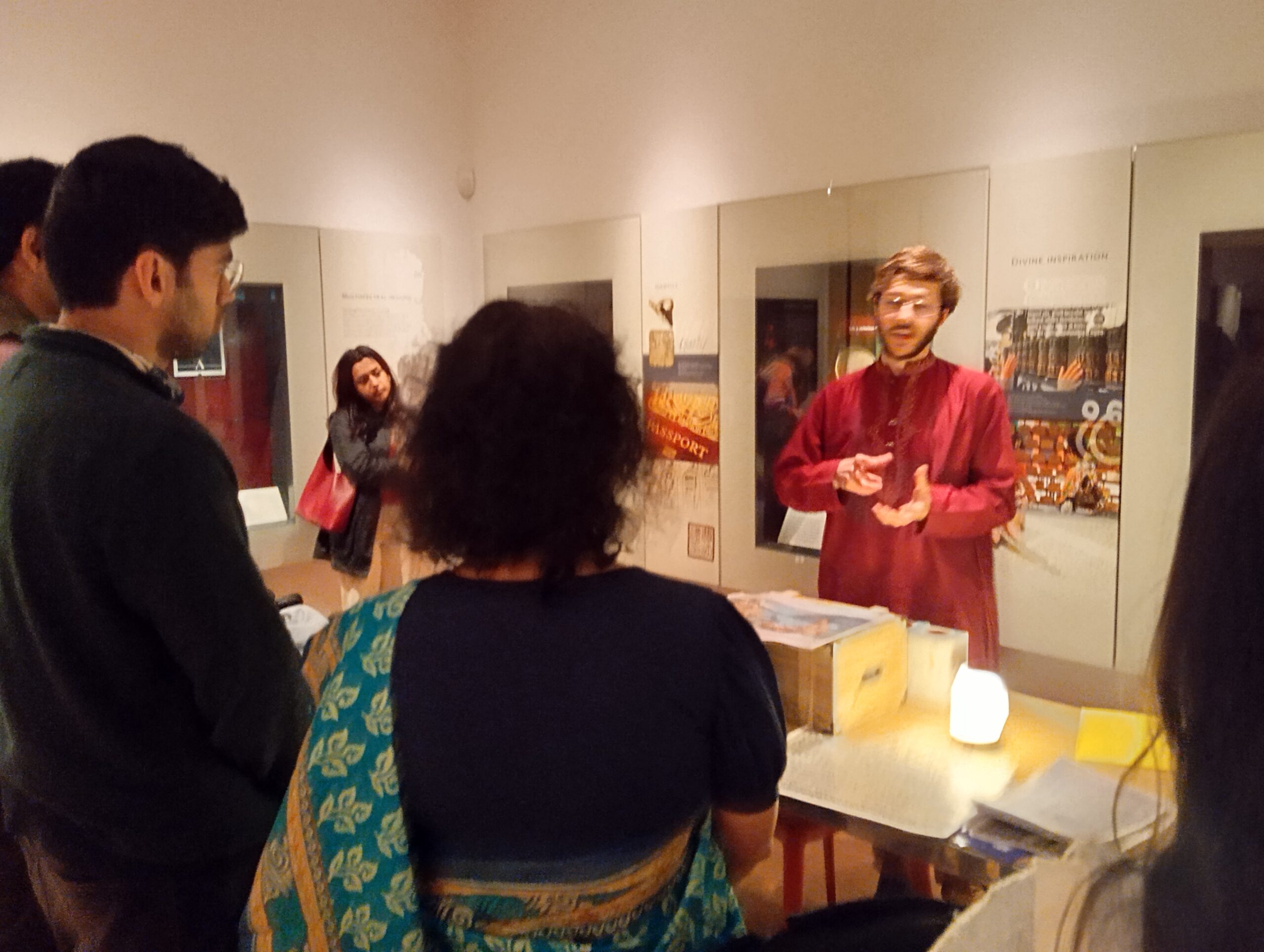
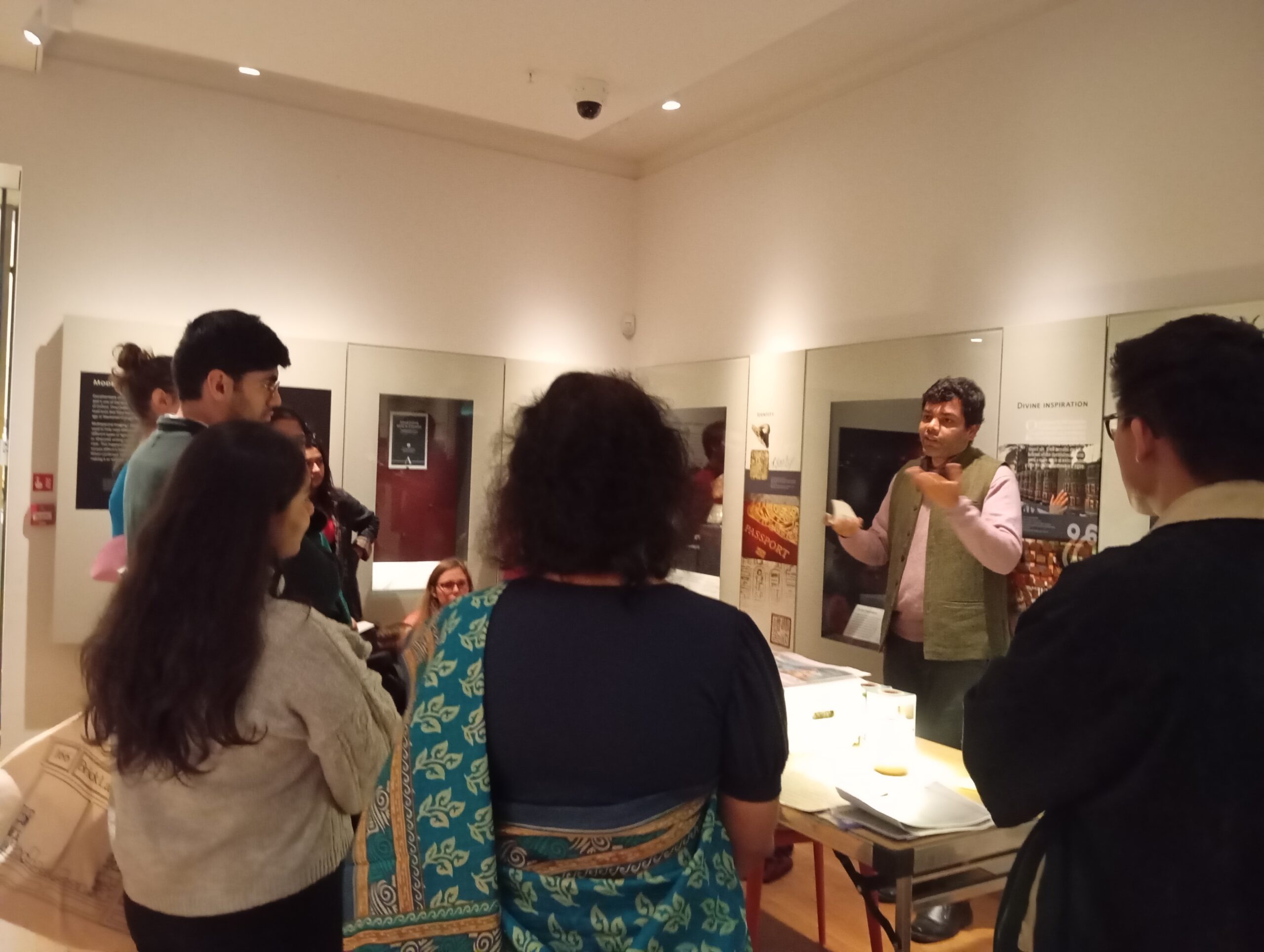
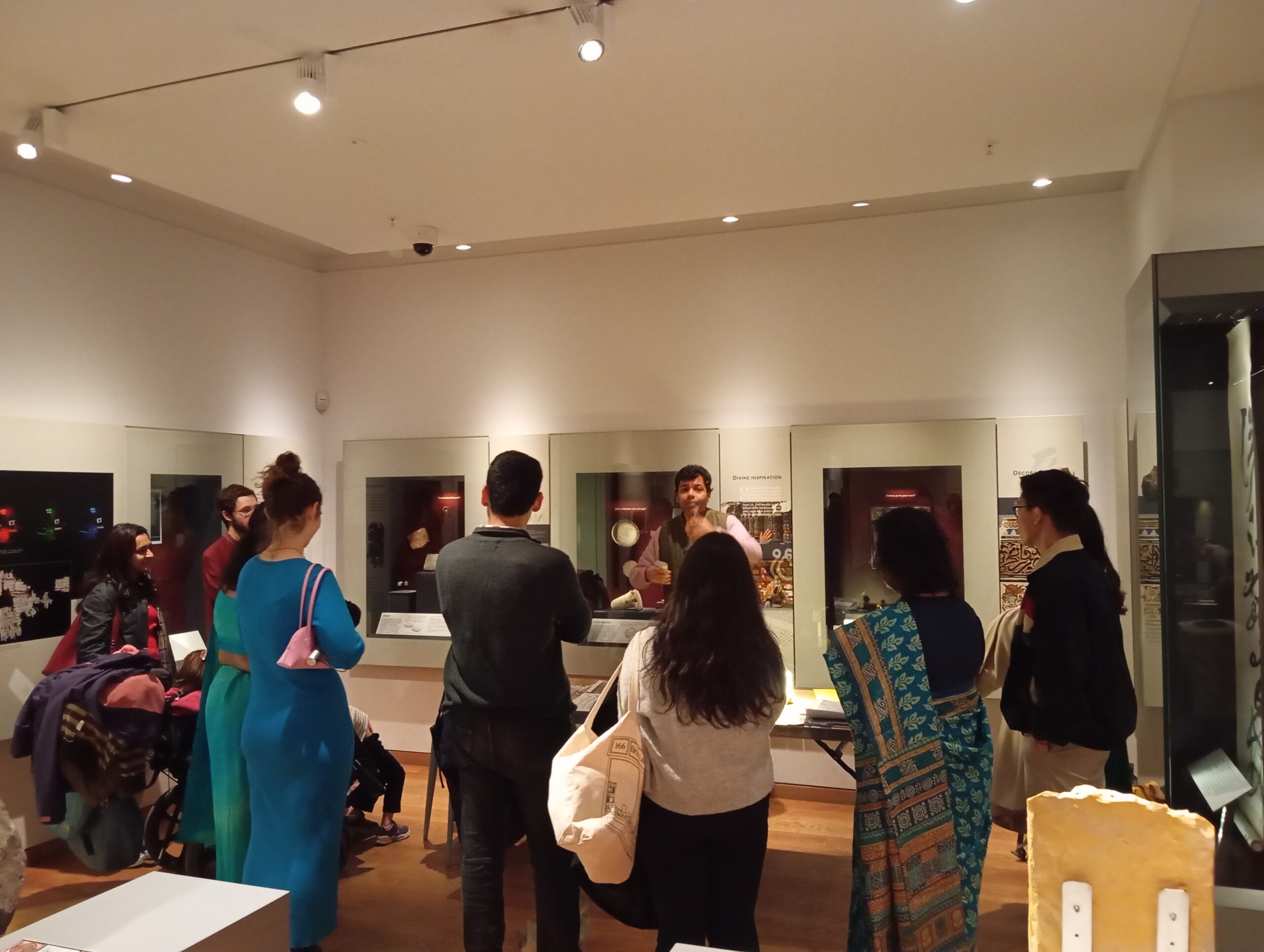
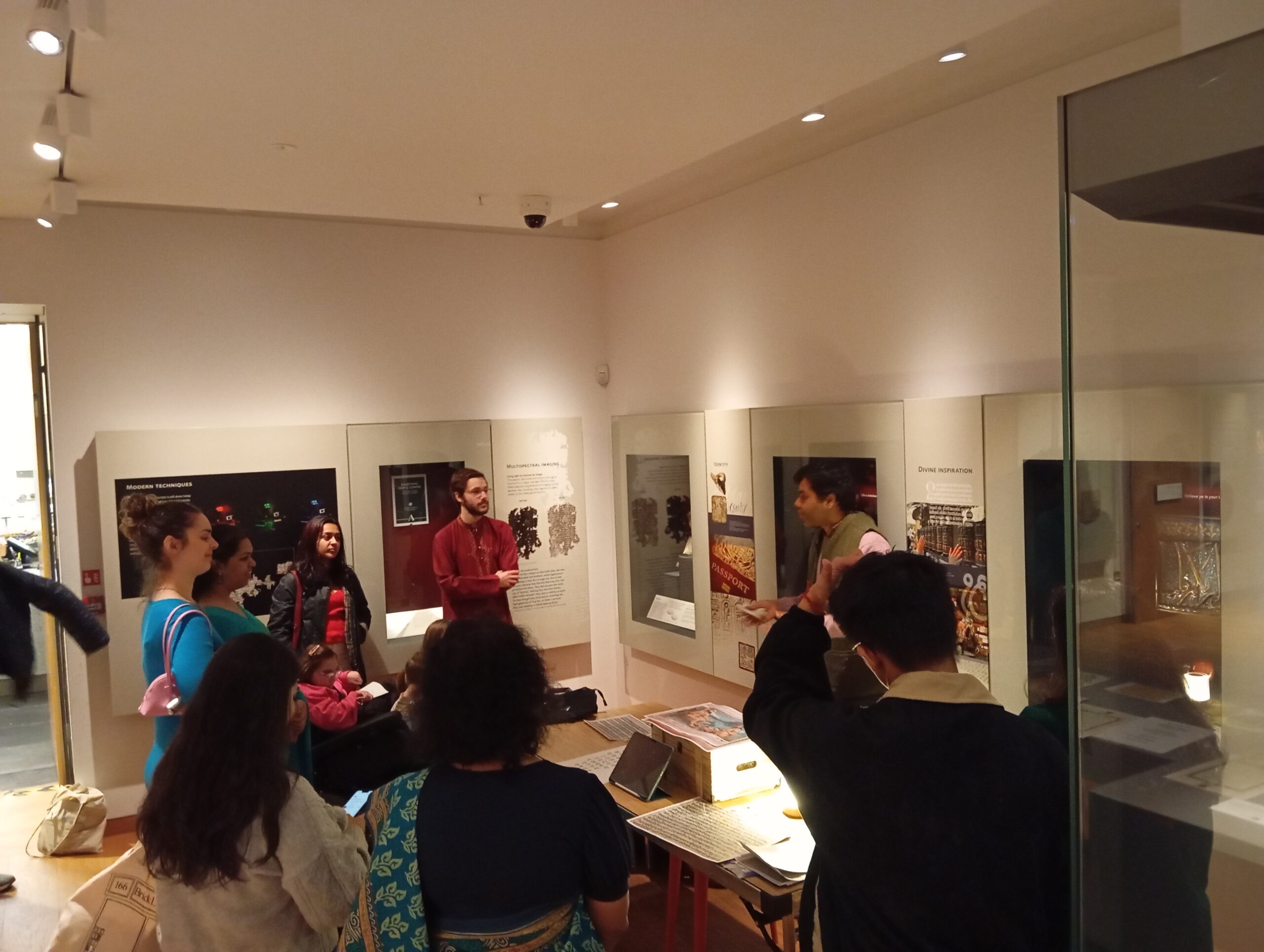
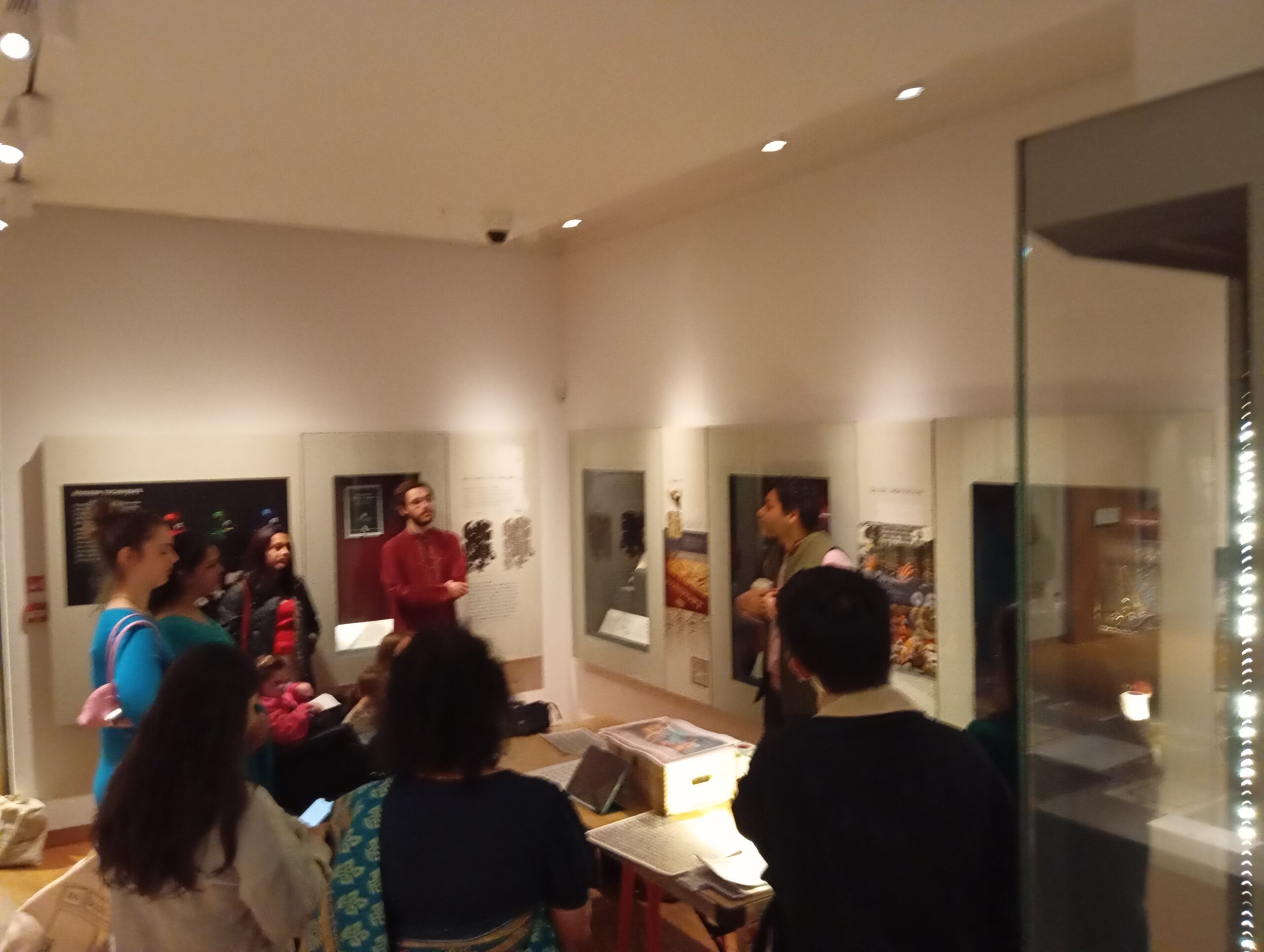

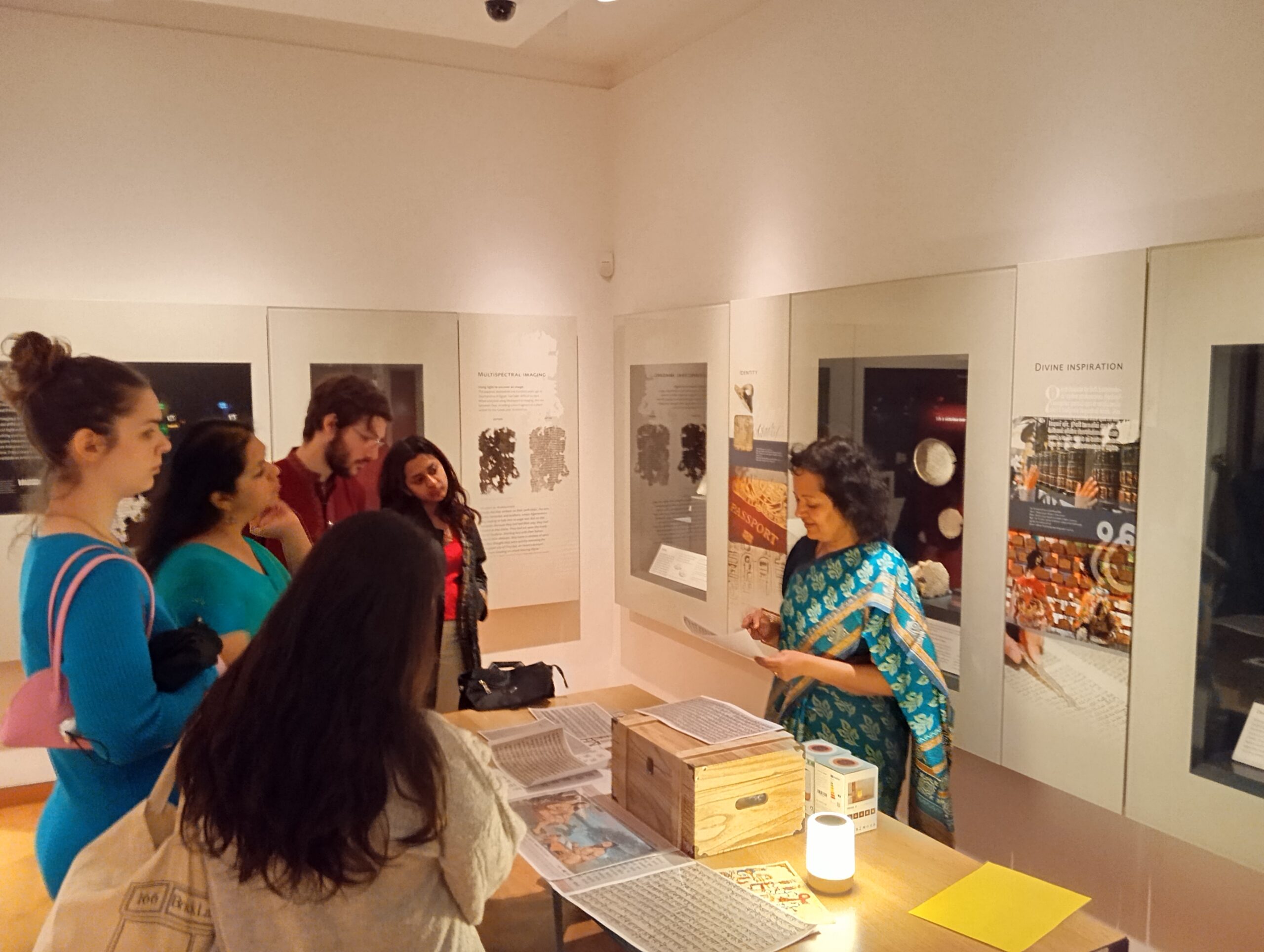
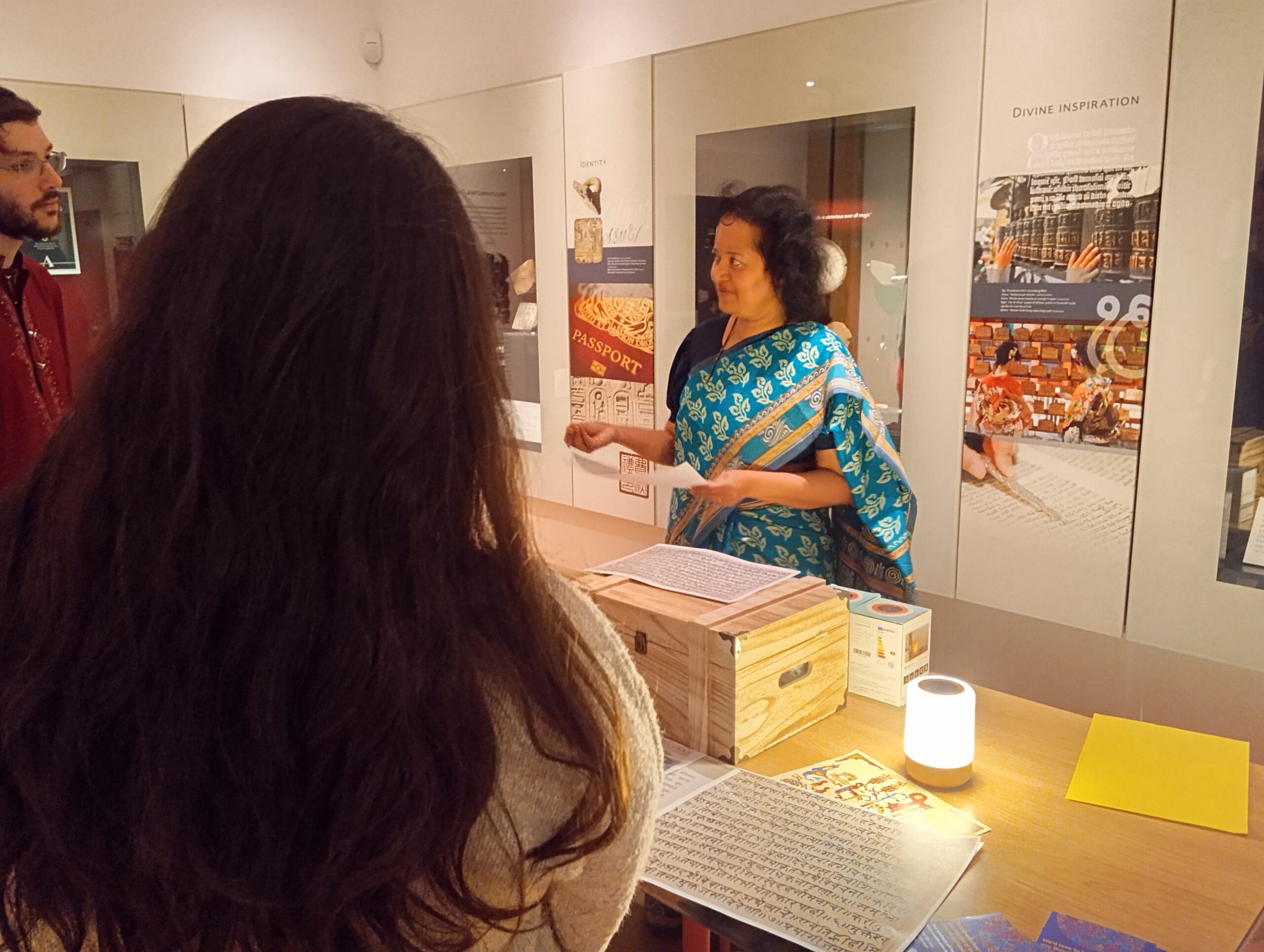
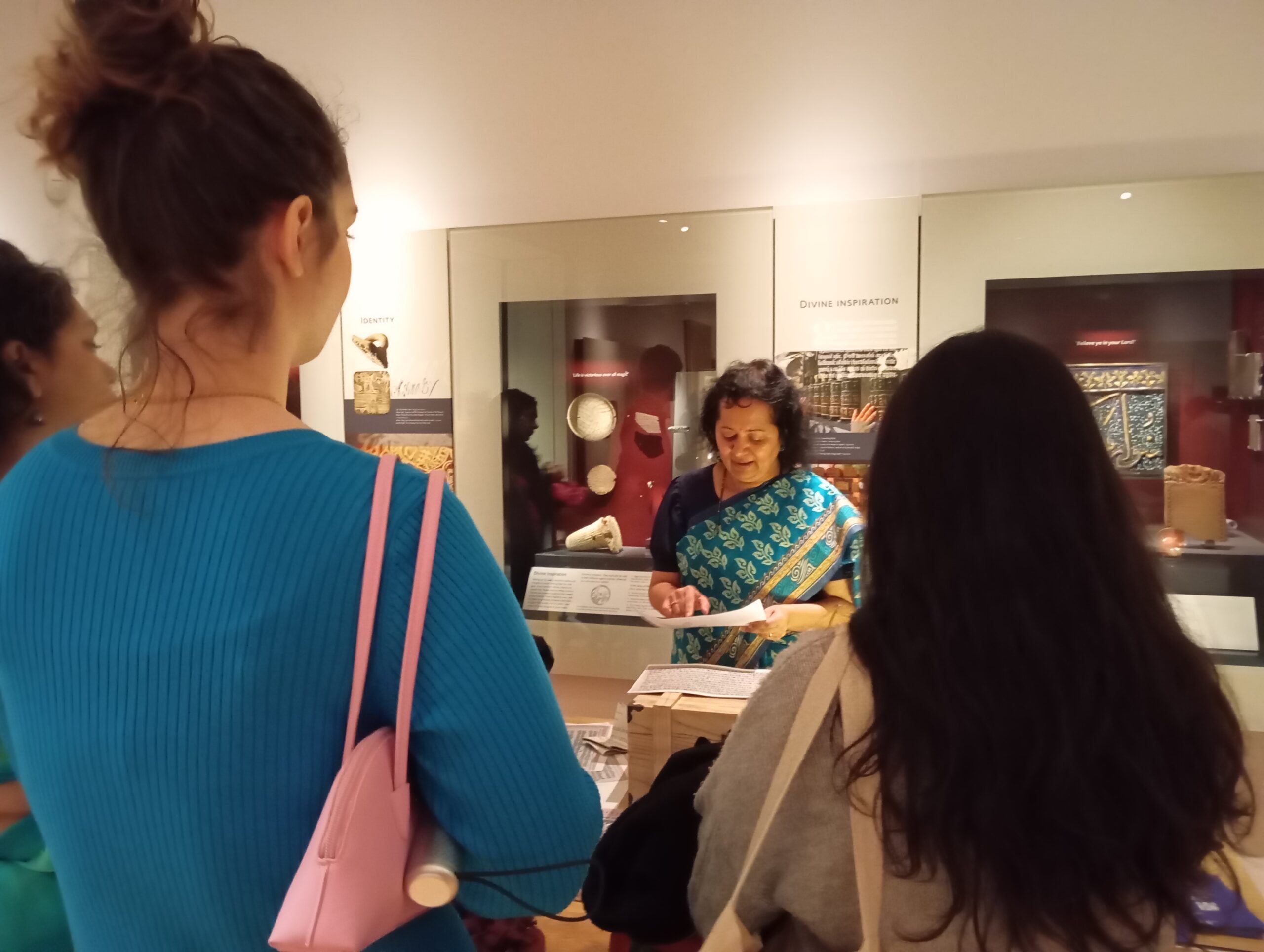
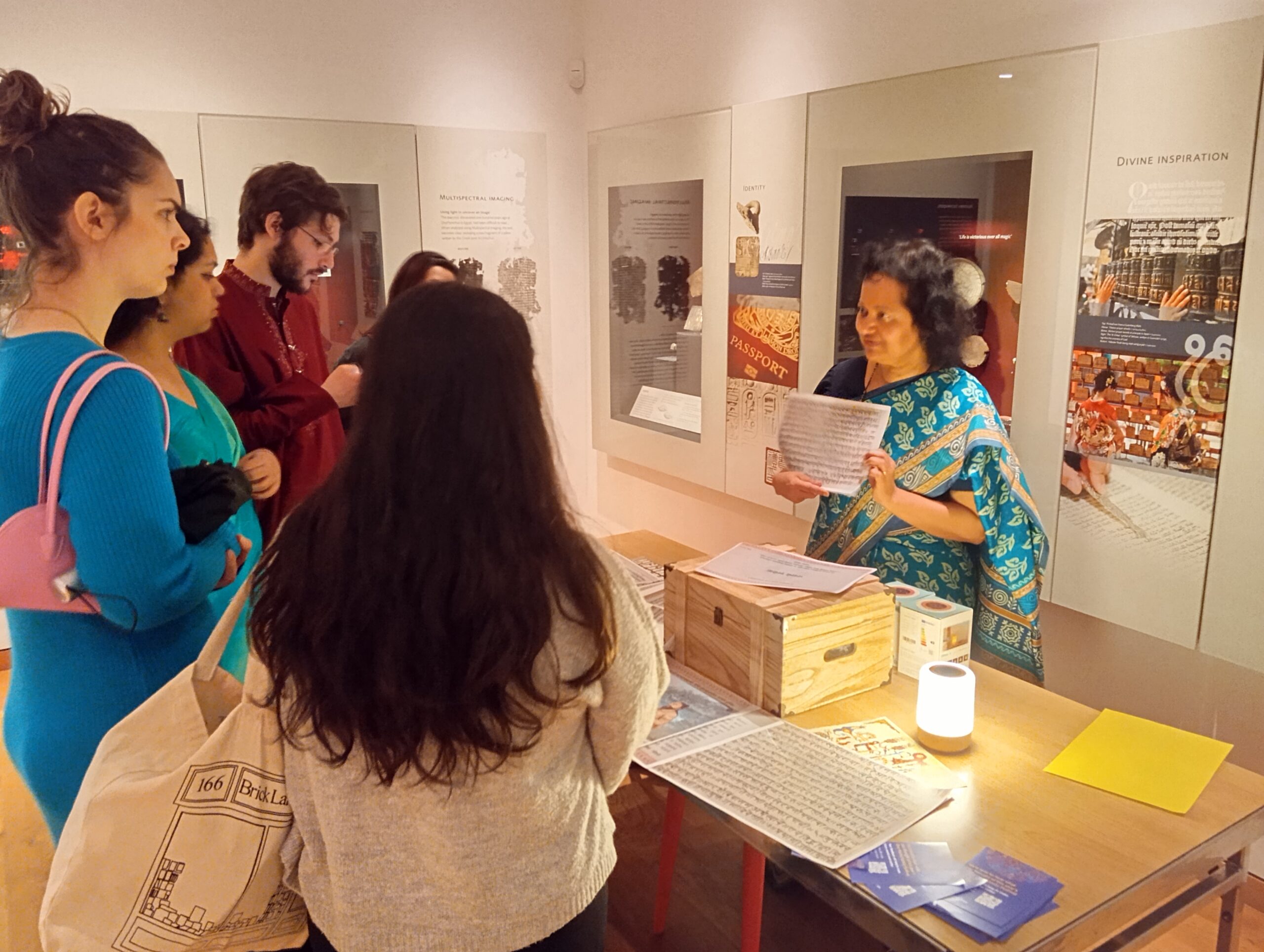
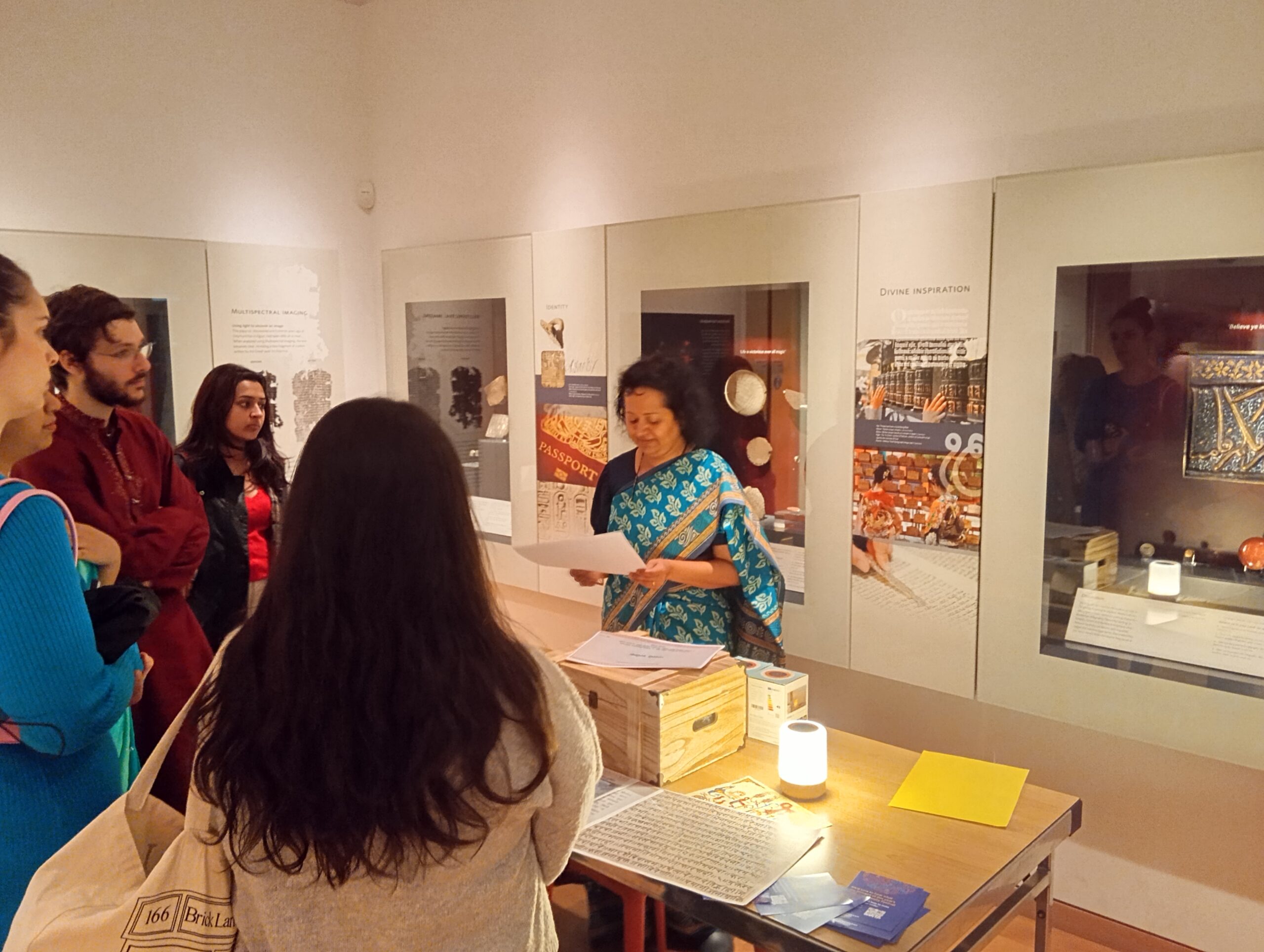
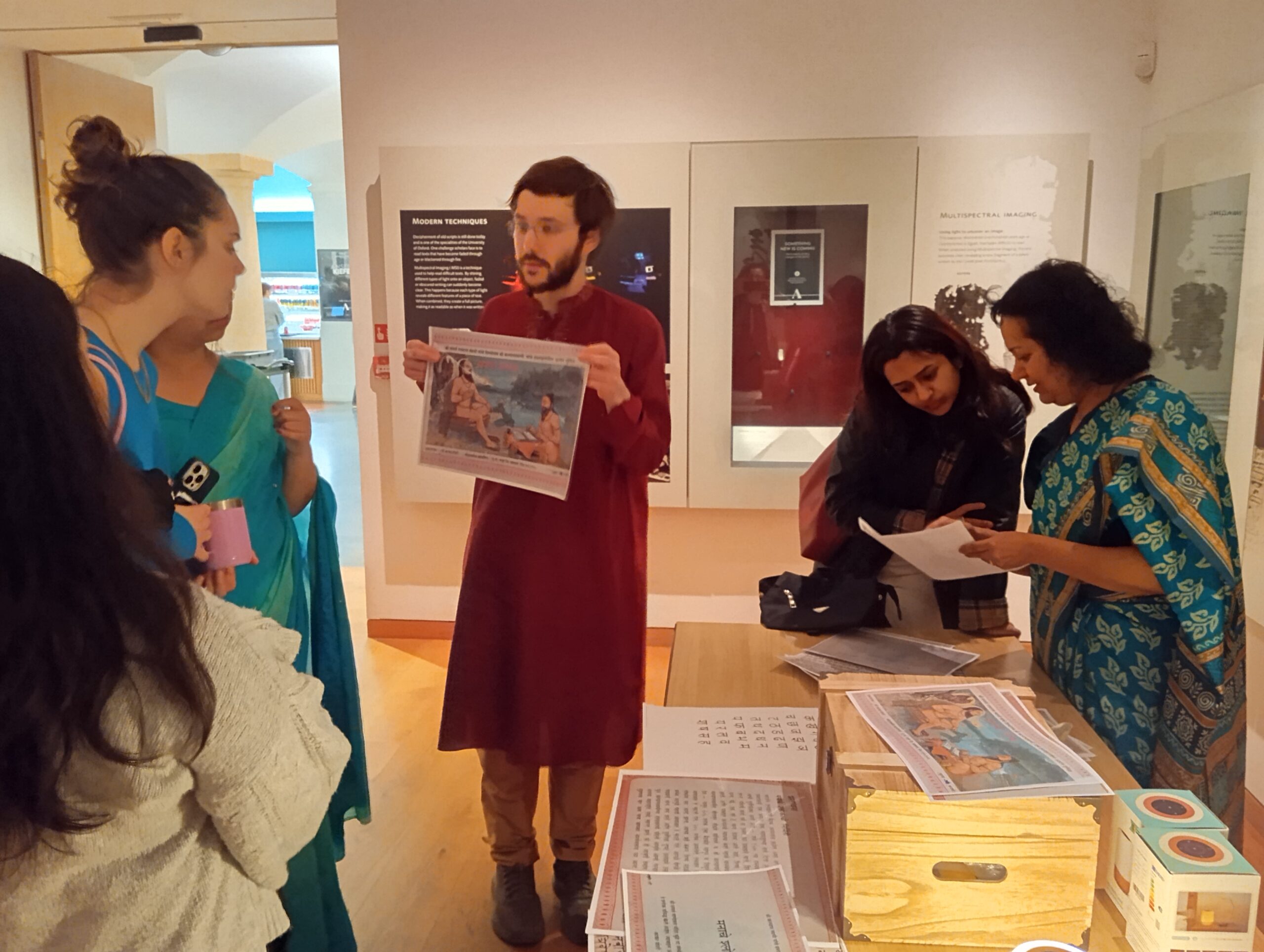
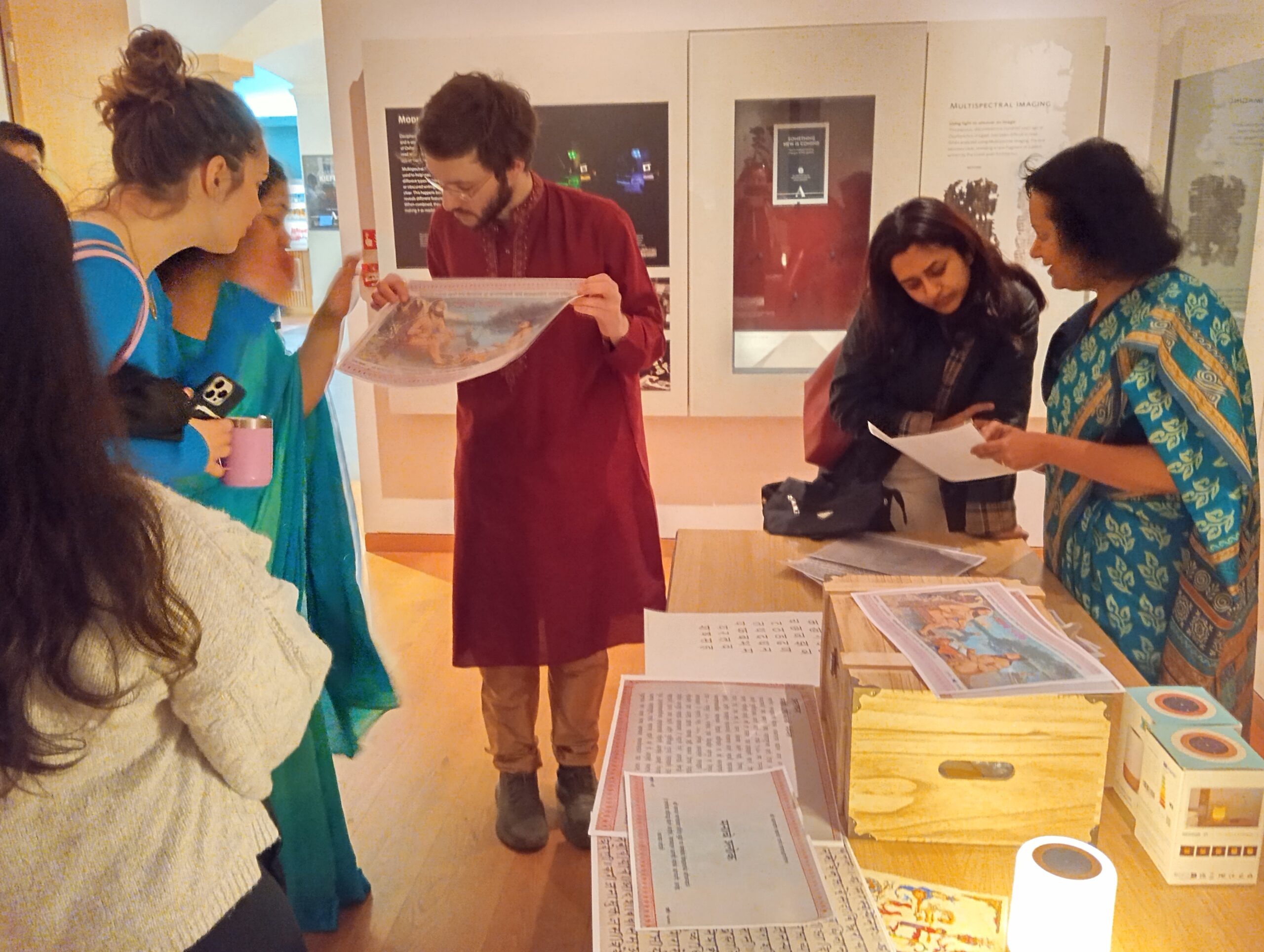
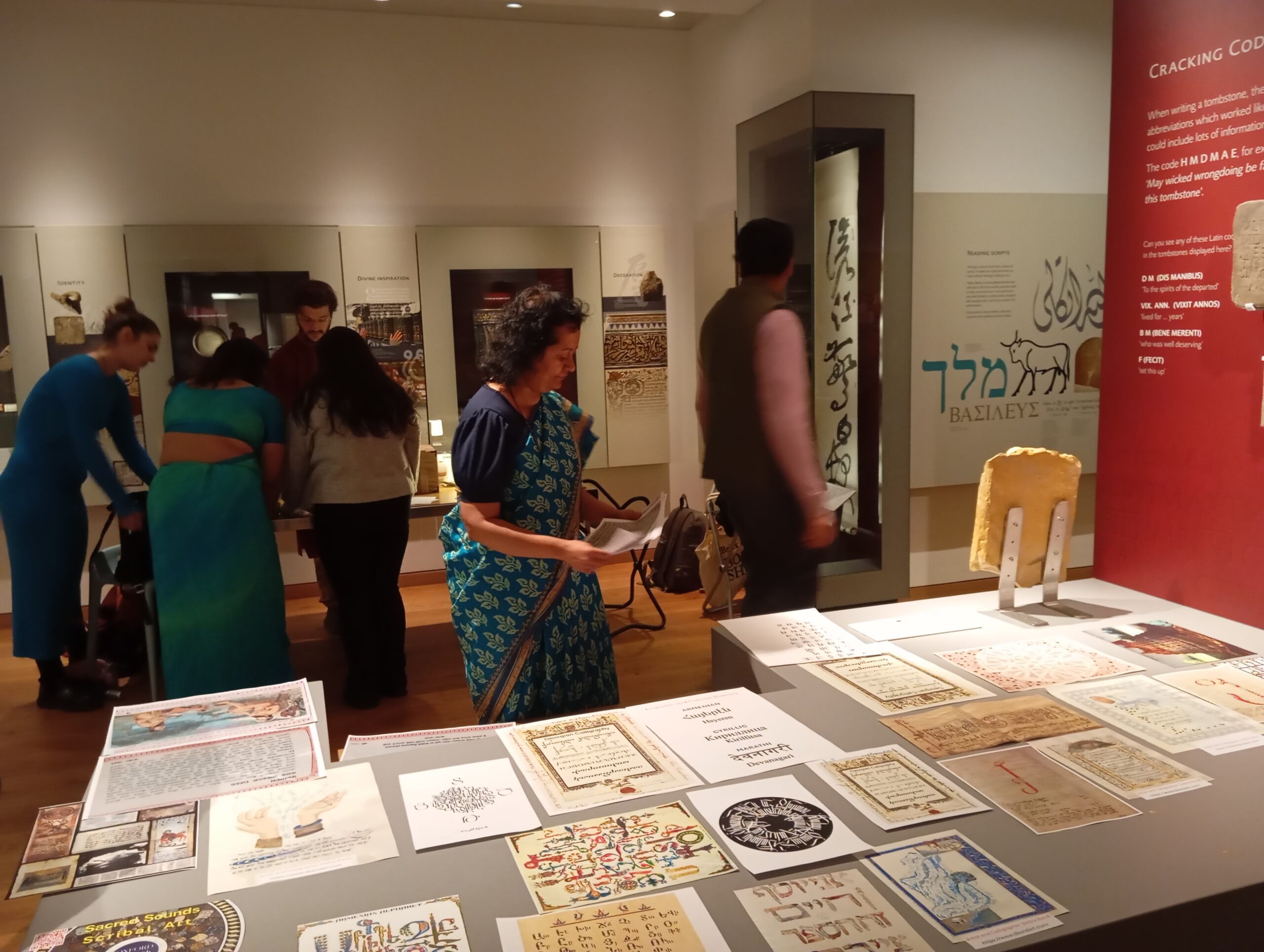
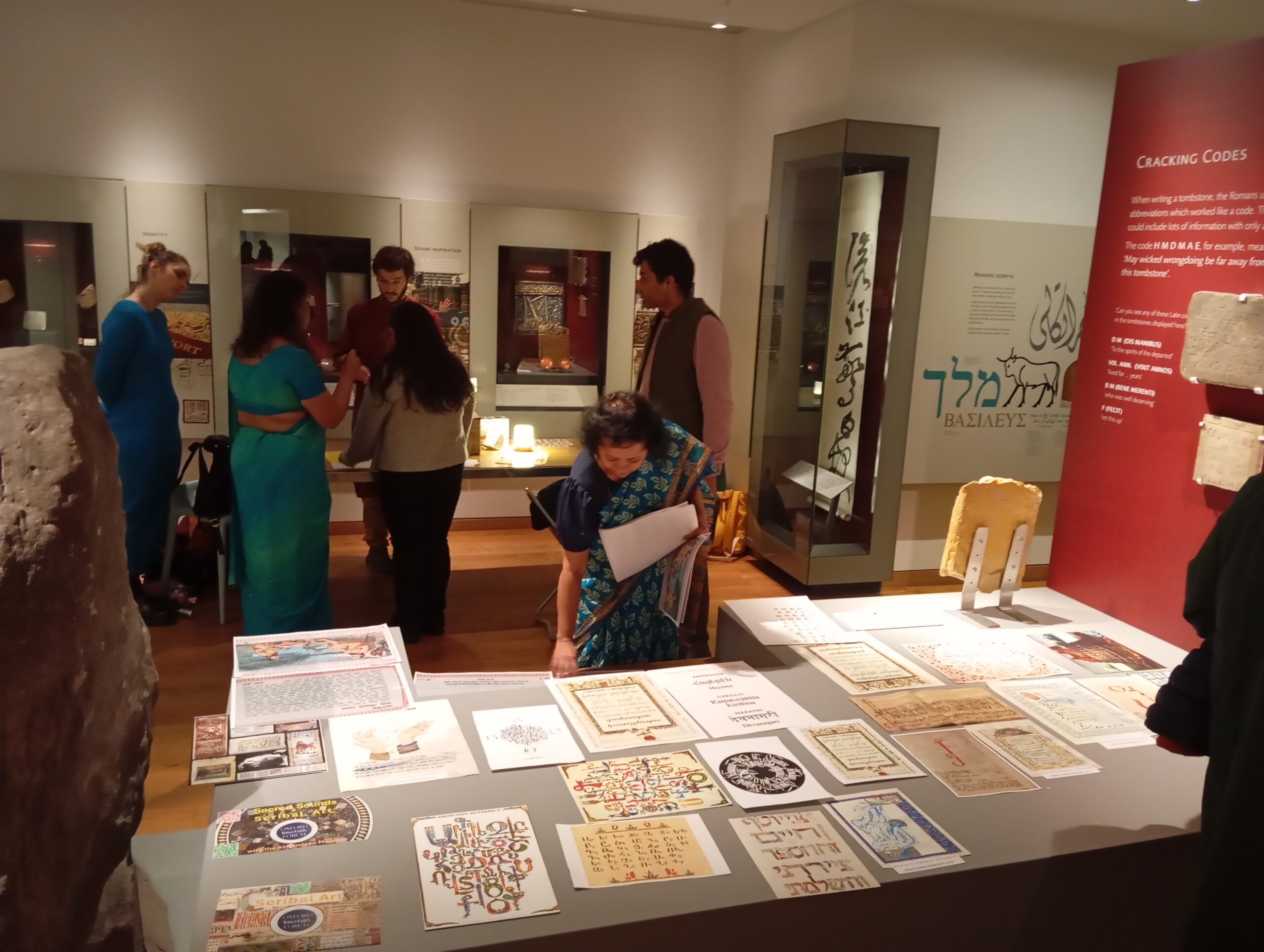
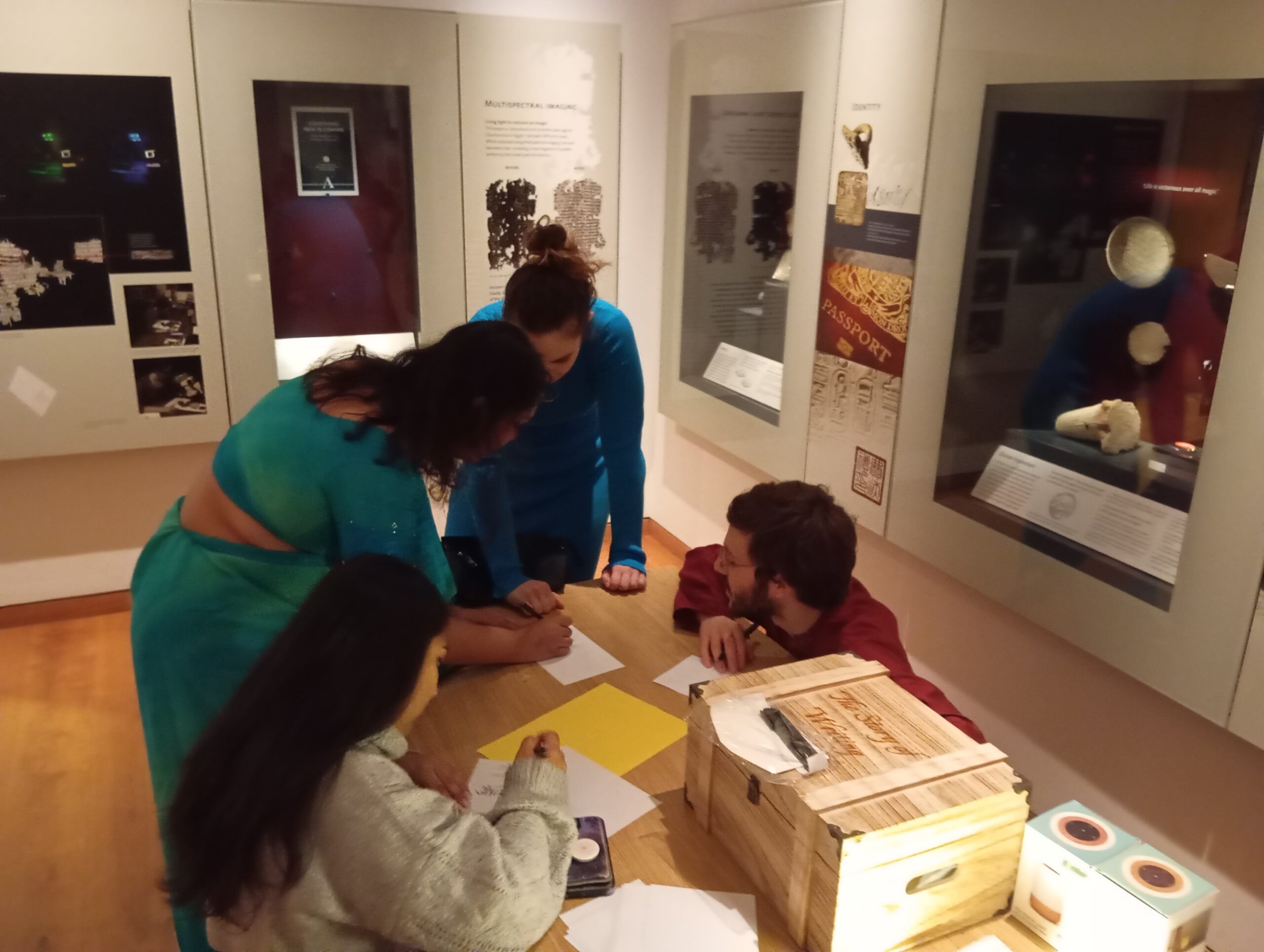
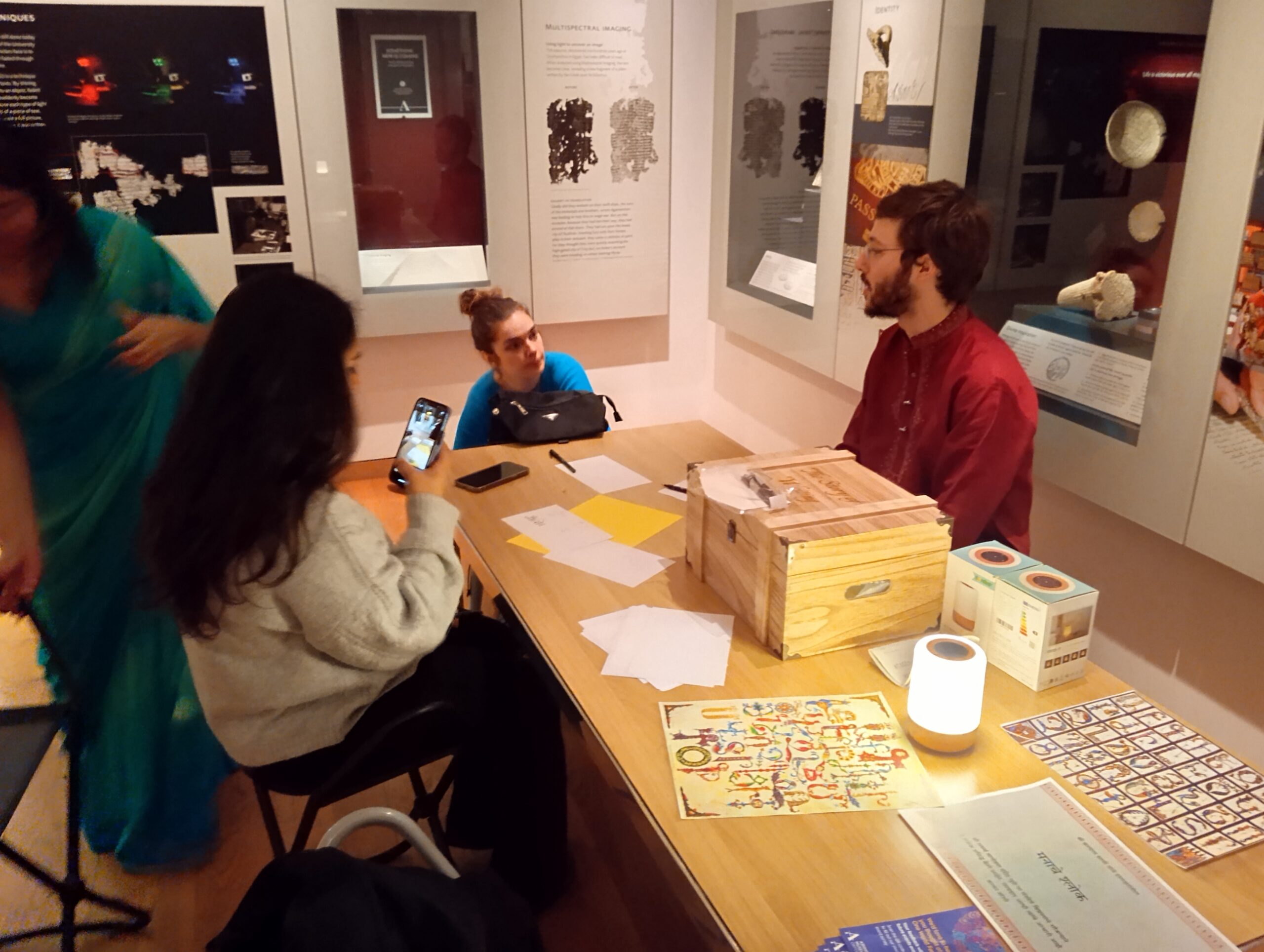

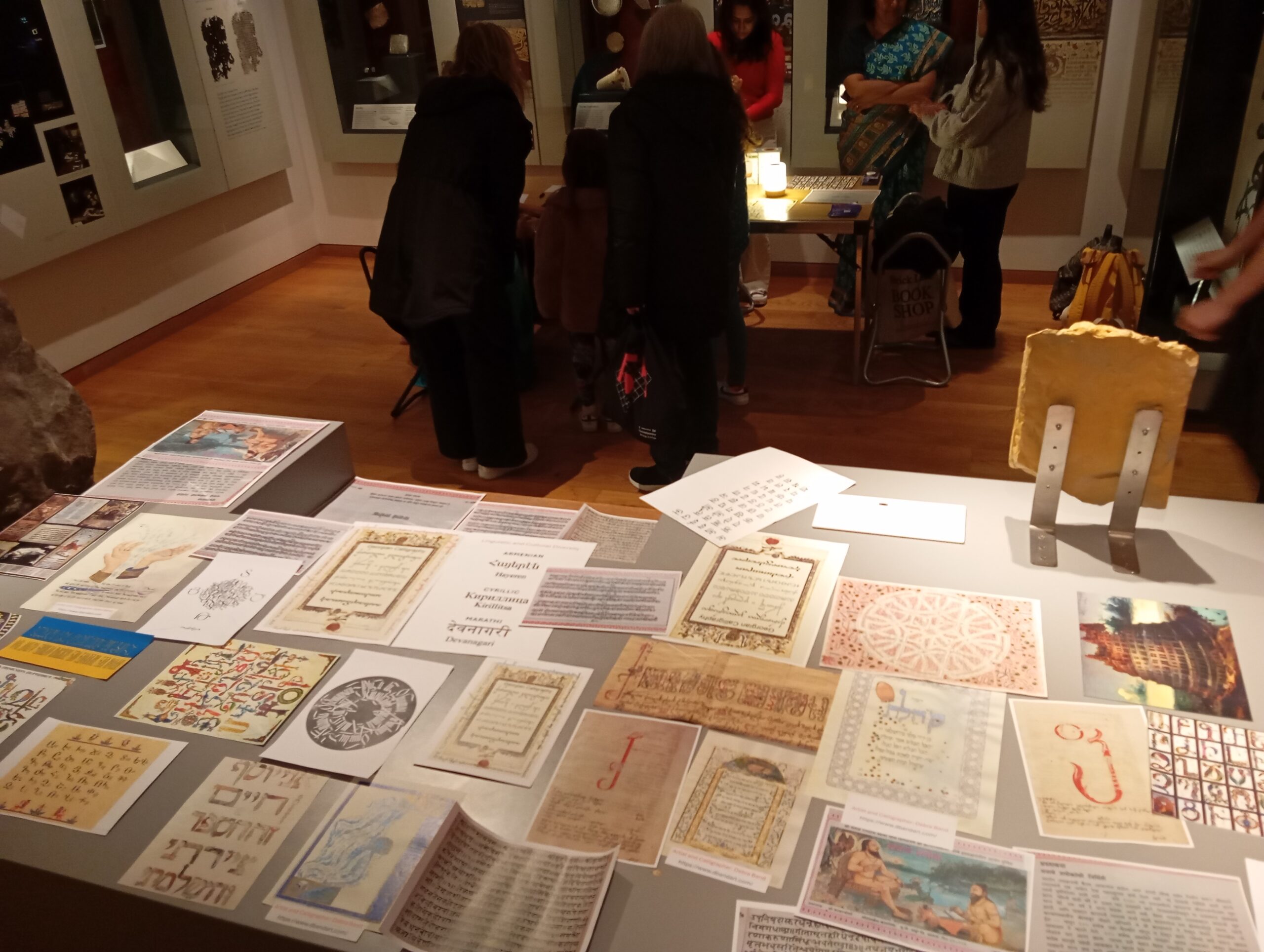
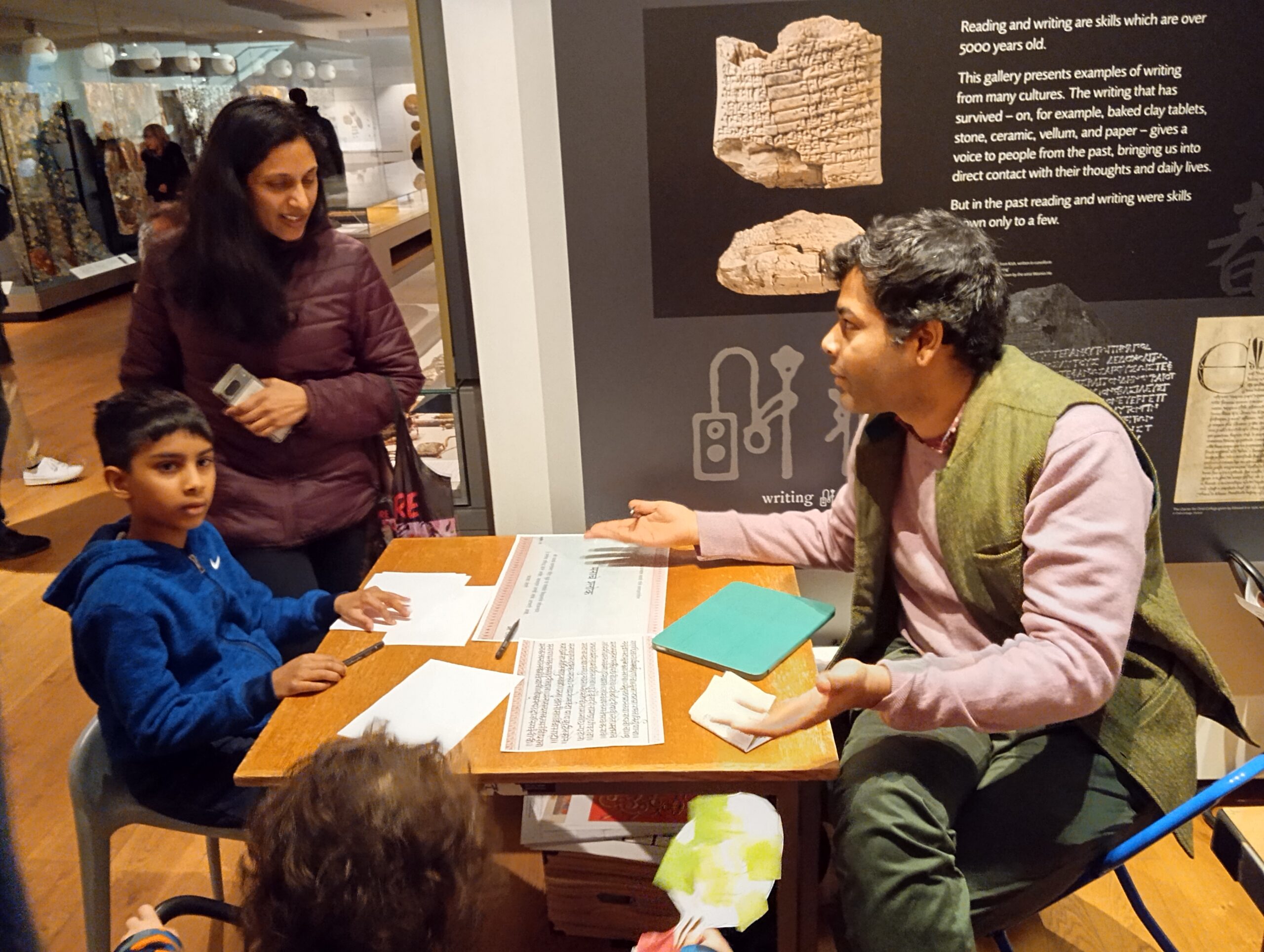
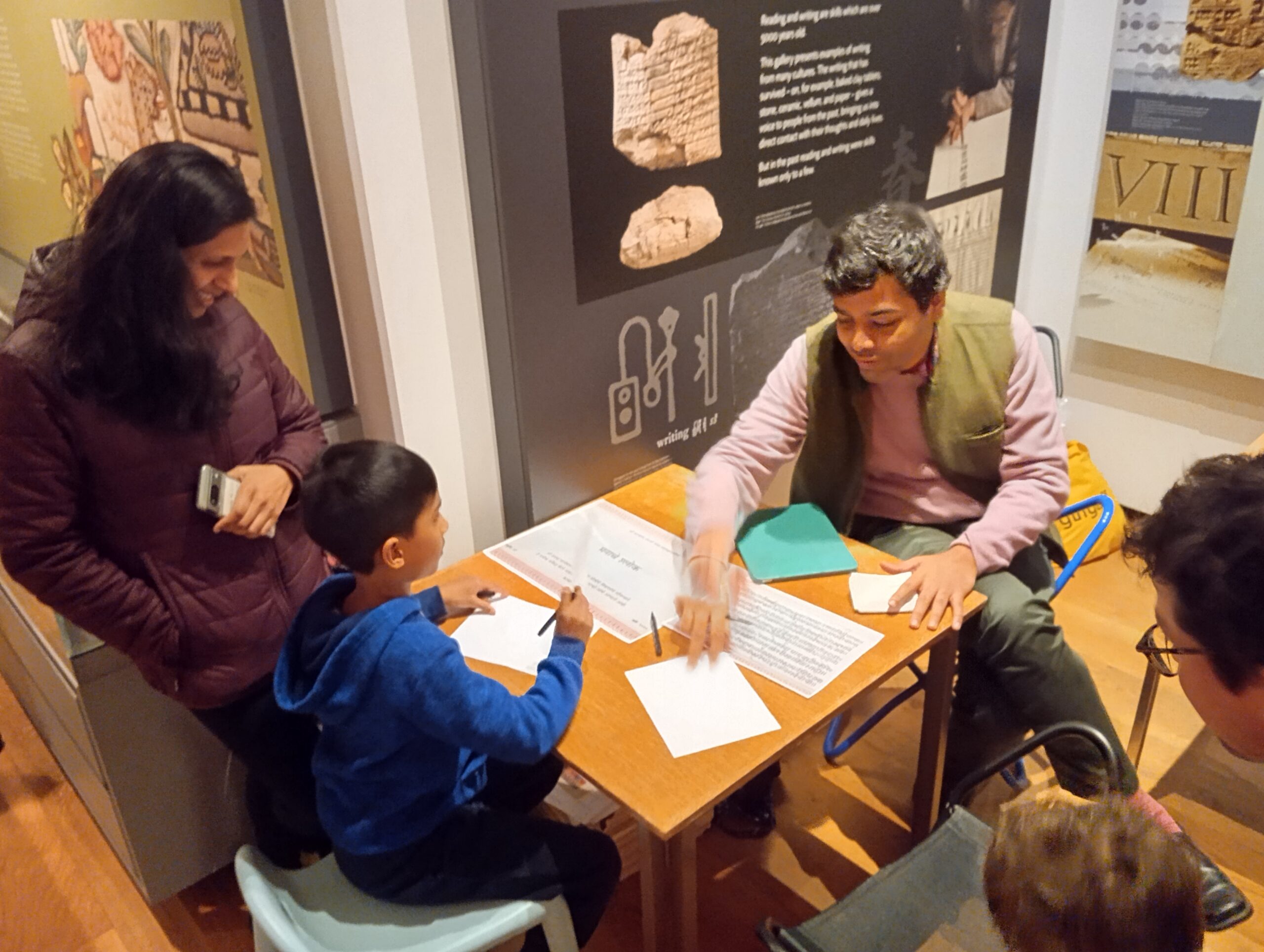
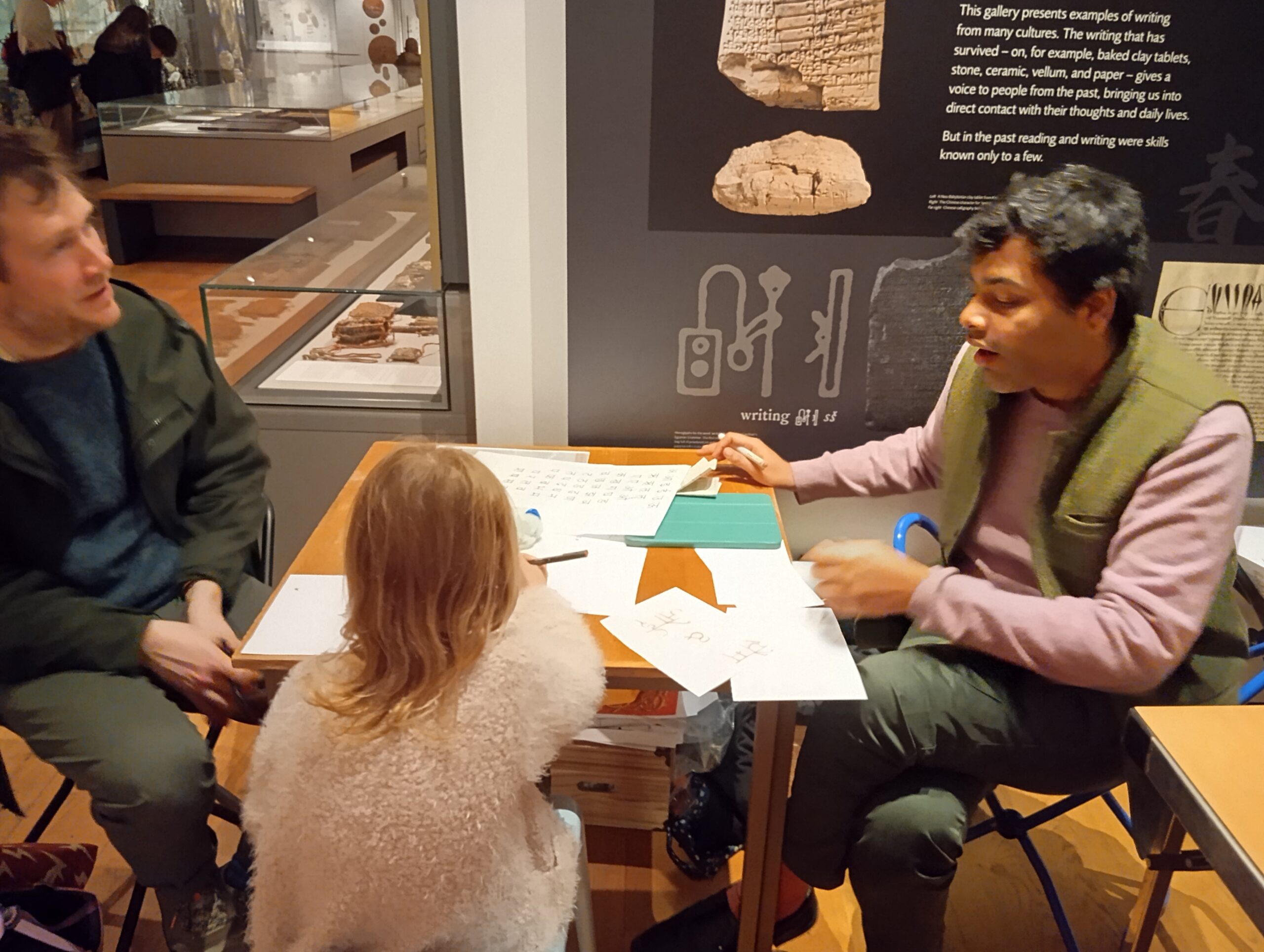
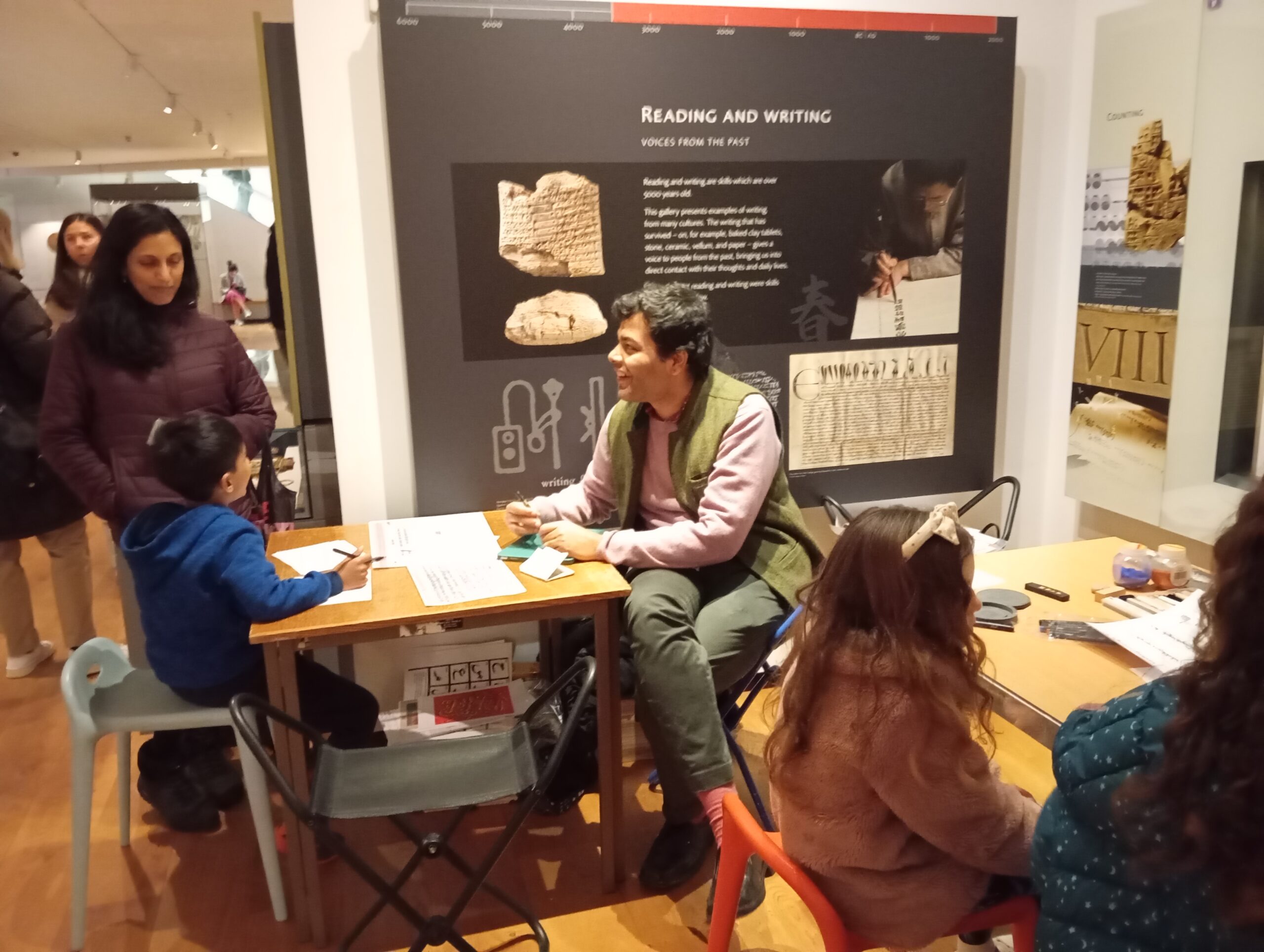
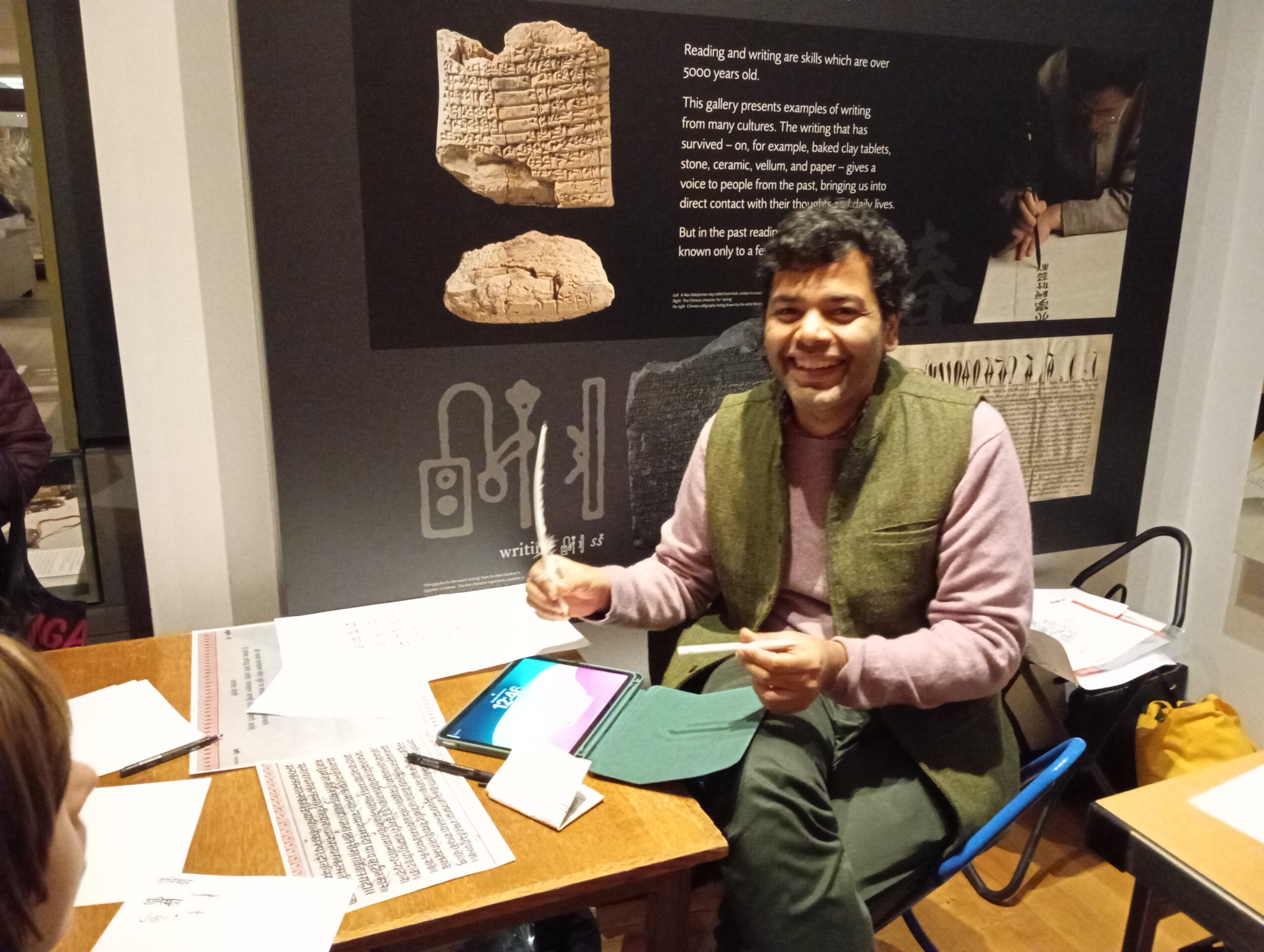
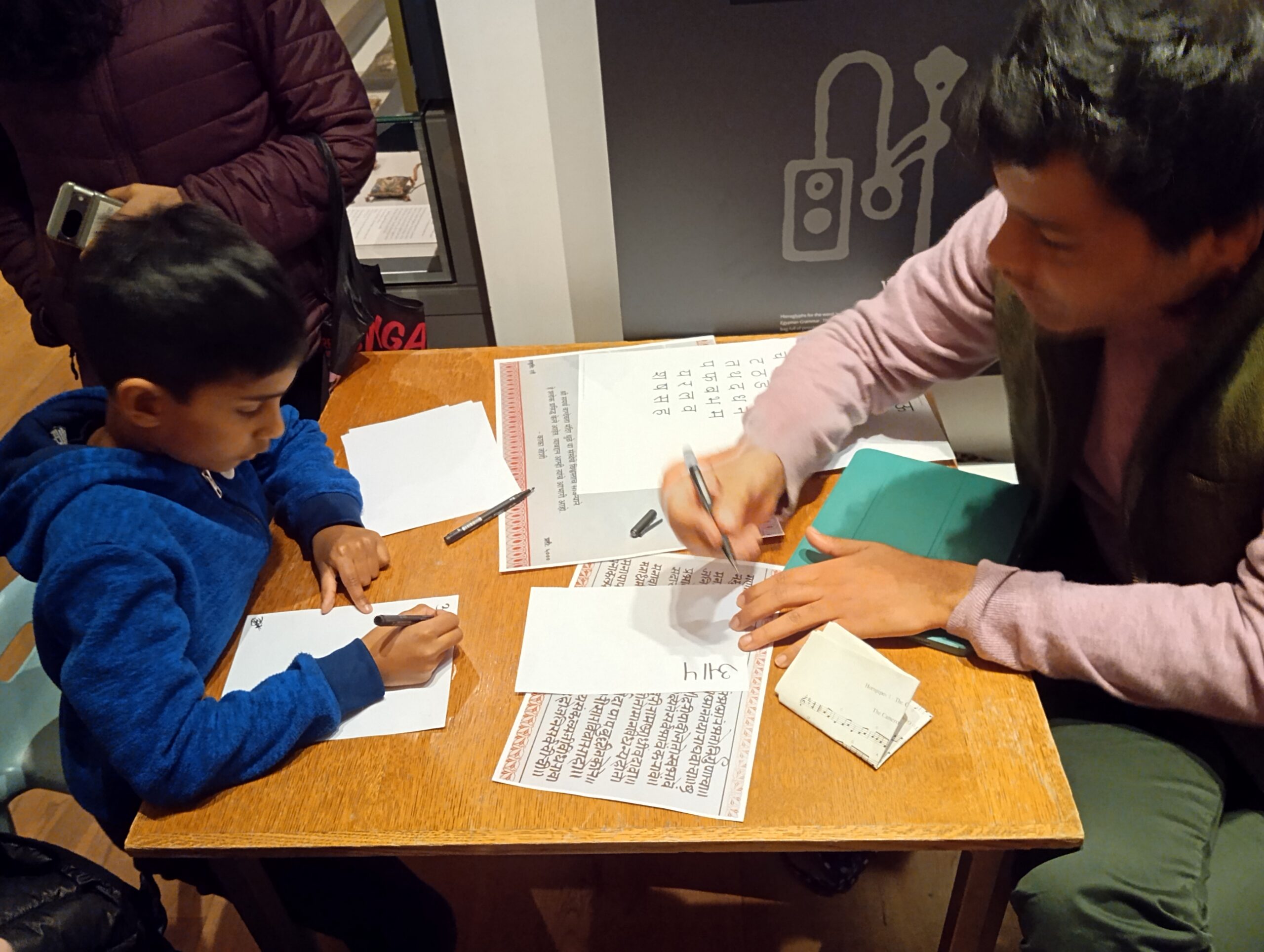
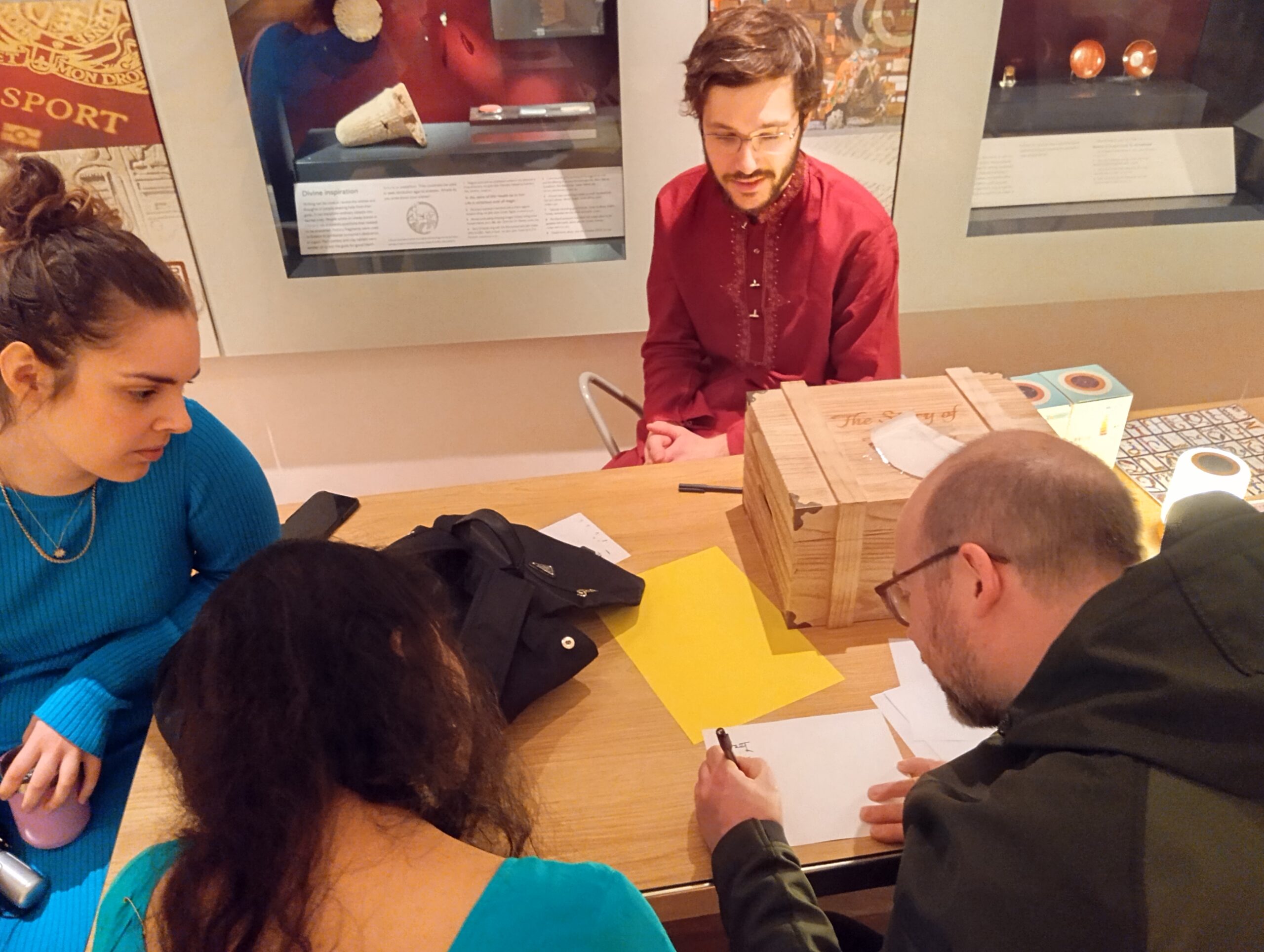
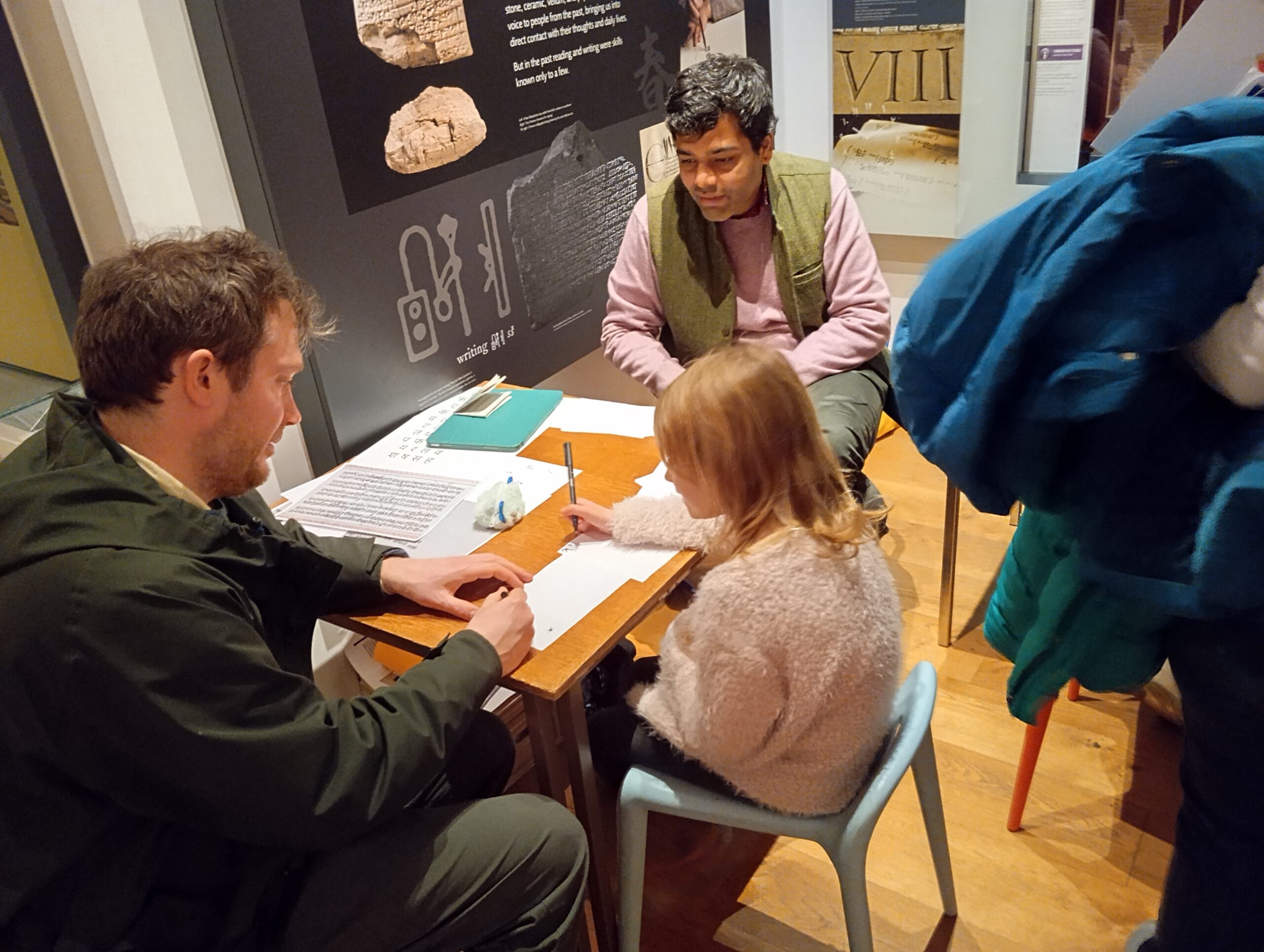
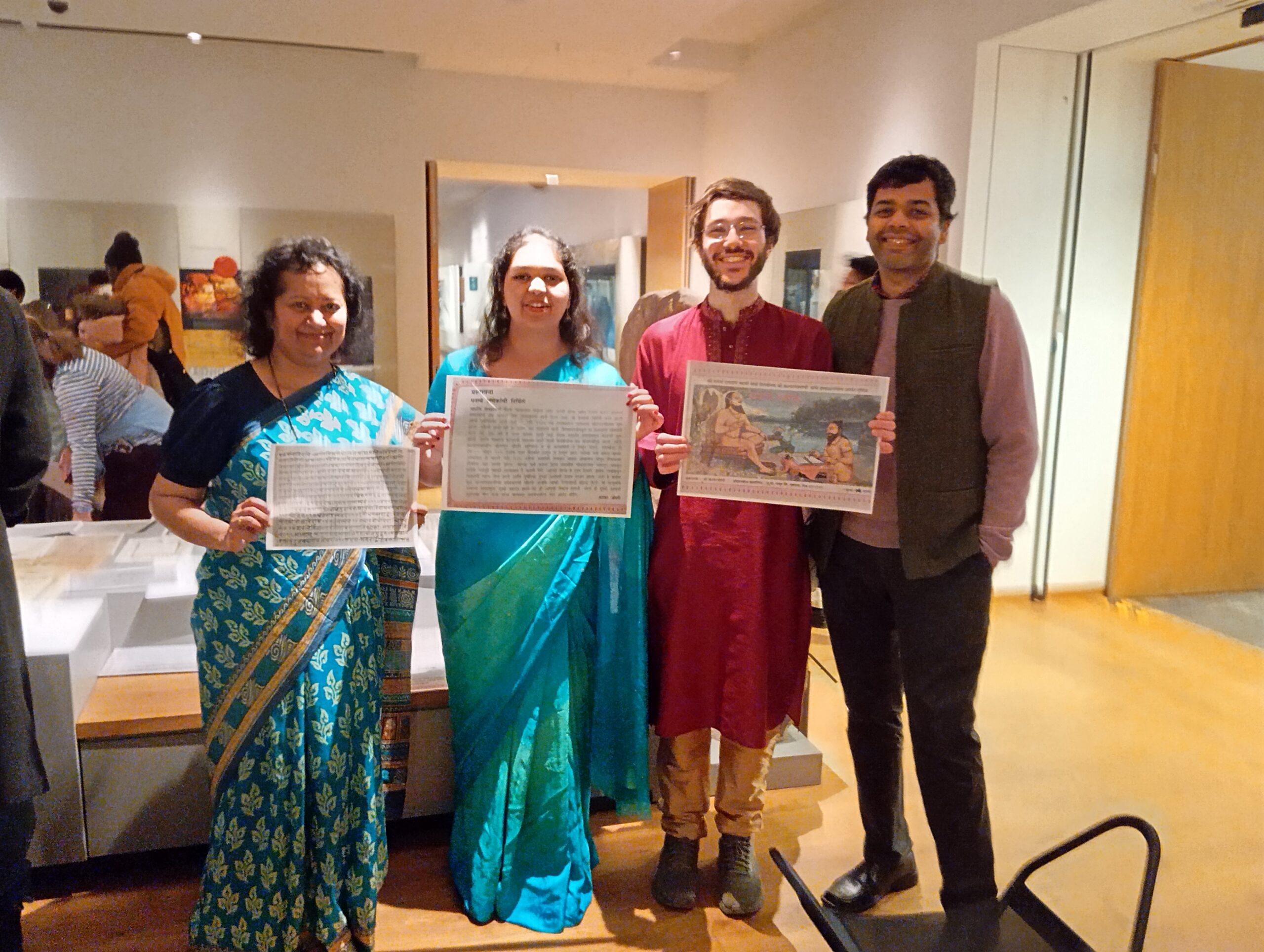
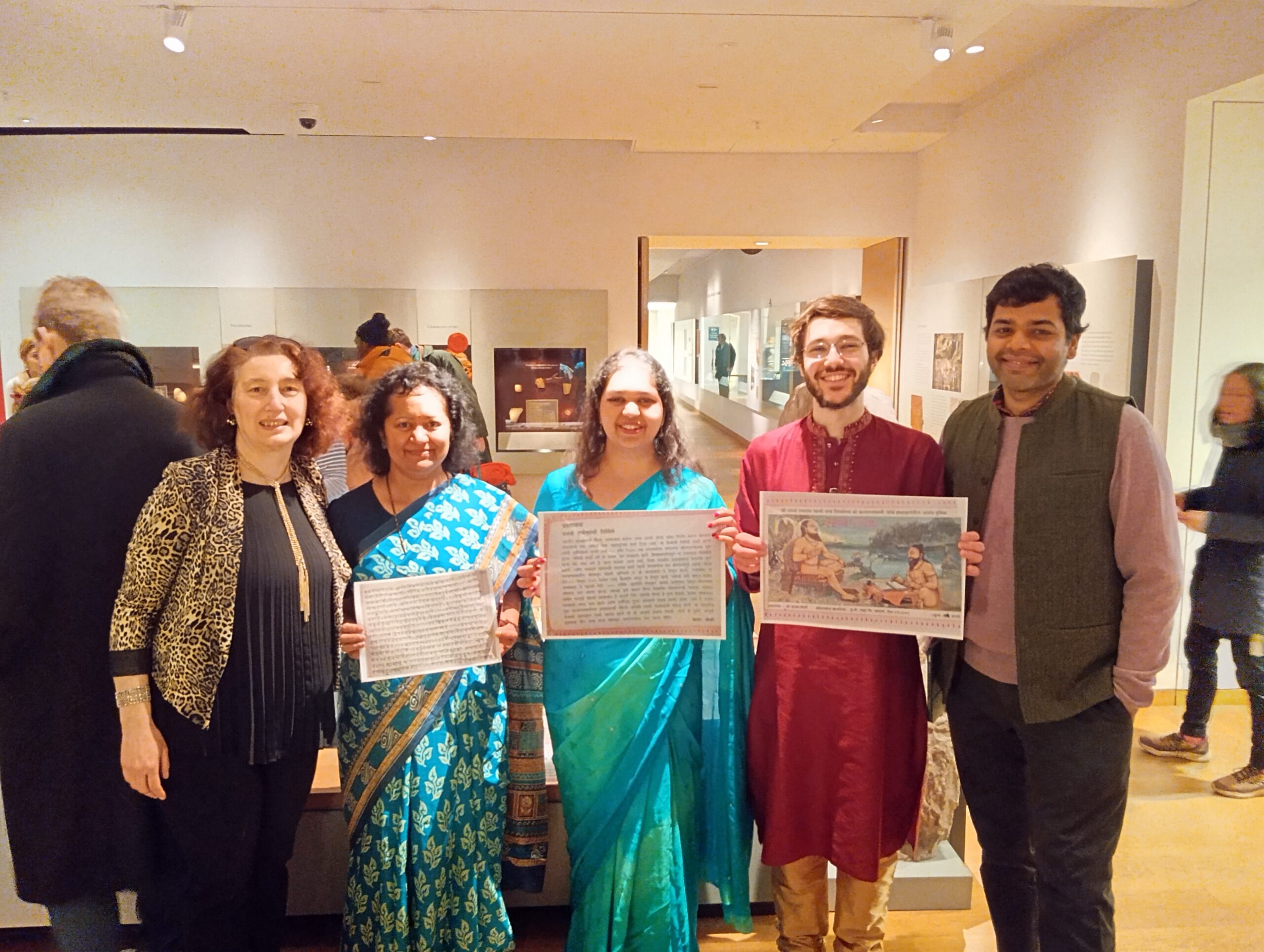
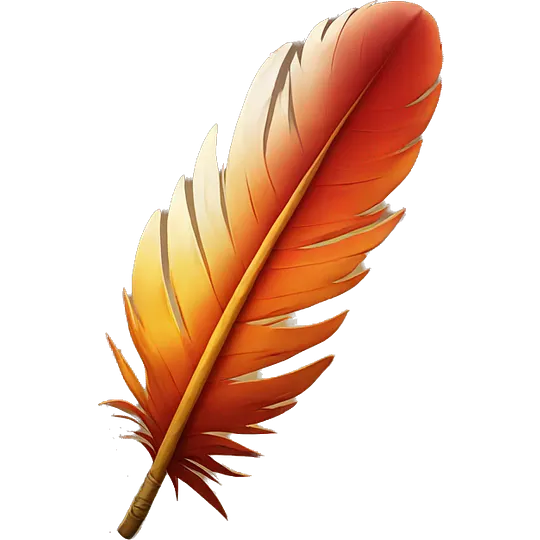
Shuchita Grover Presented
Tibetan Uchen, Tibetan Umed, and Gurmukhi Scripts
Shuchita Grover (St Anne’s College), DPhil candidate in Tibetan and Himalayan Studies at the University of Oxford, commented: The two-day event at Ashmolean was an interplay of script, cultures and histories. I was honoured to present Tibetan and Gurmukhi scripts, together with various other presenters celebrating the shared human heritage in written form. The audience’s interaction and interest in different writing systems from around the world, especially among the kids, was truly special.
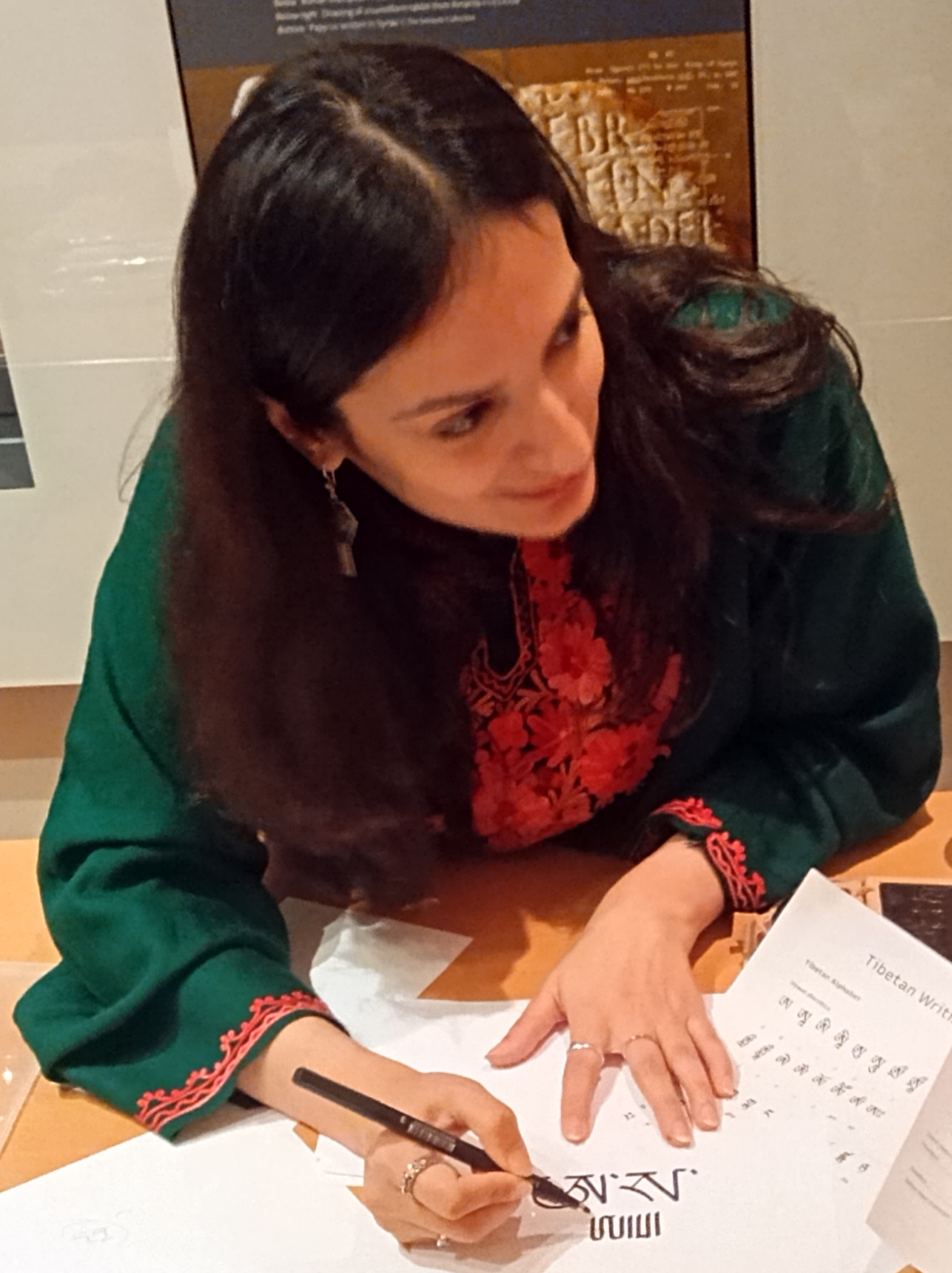
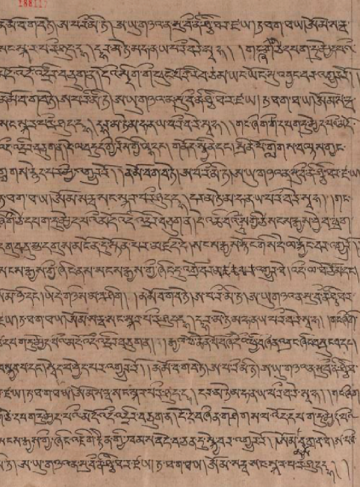
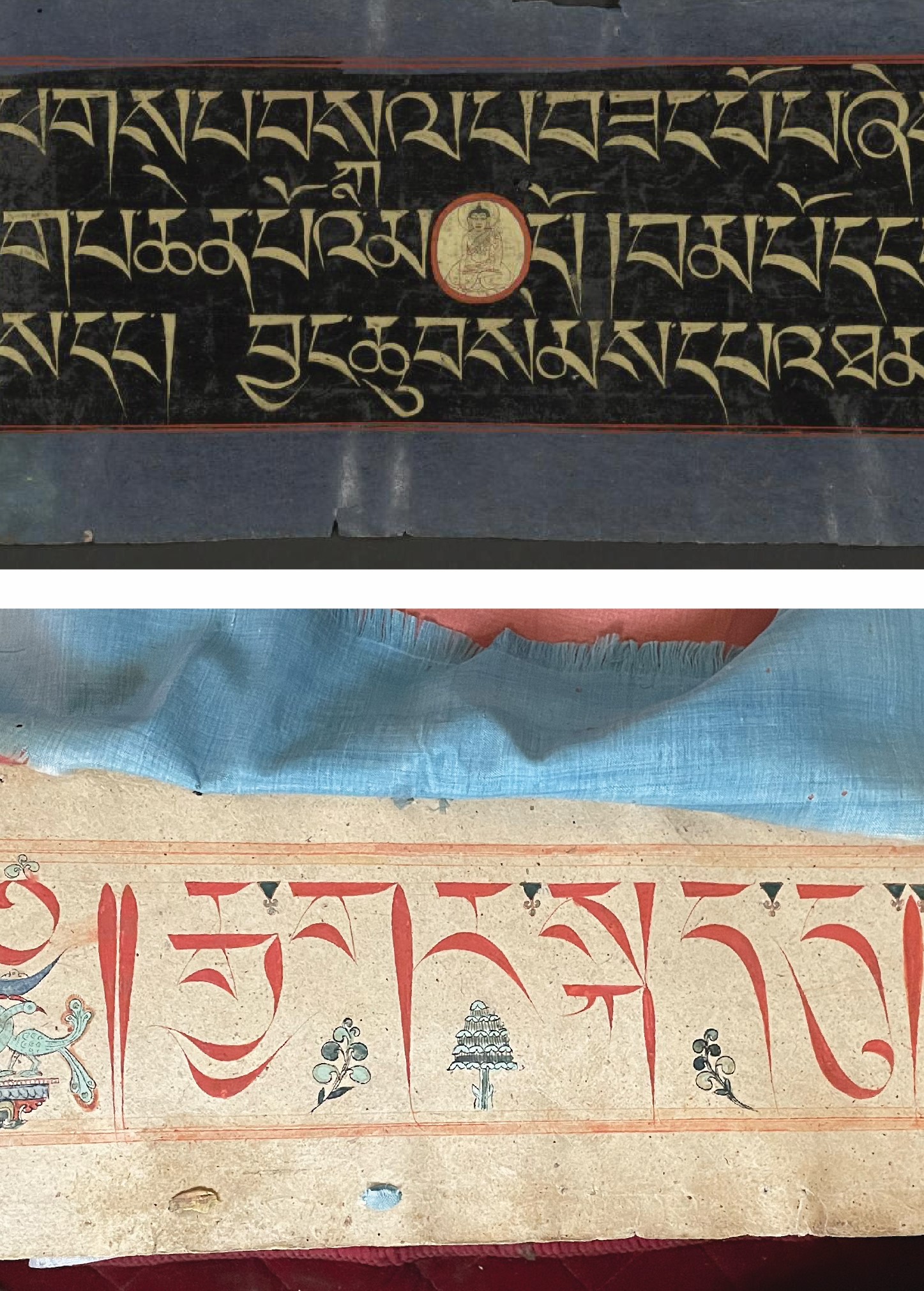
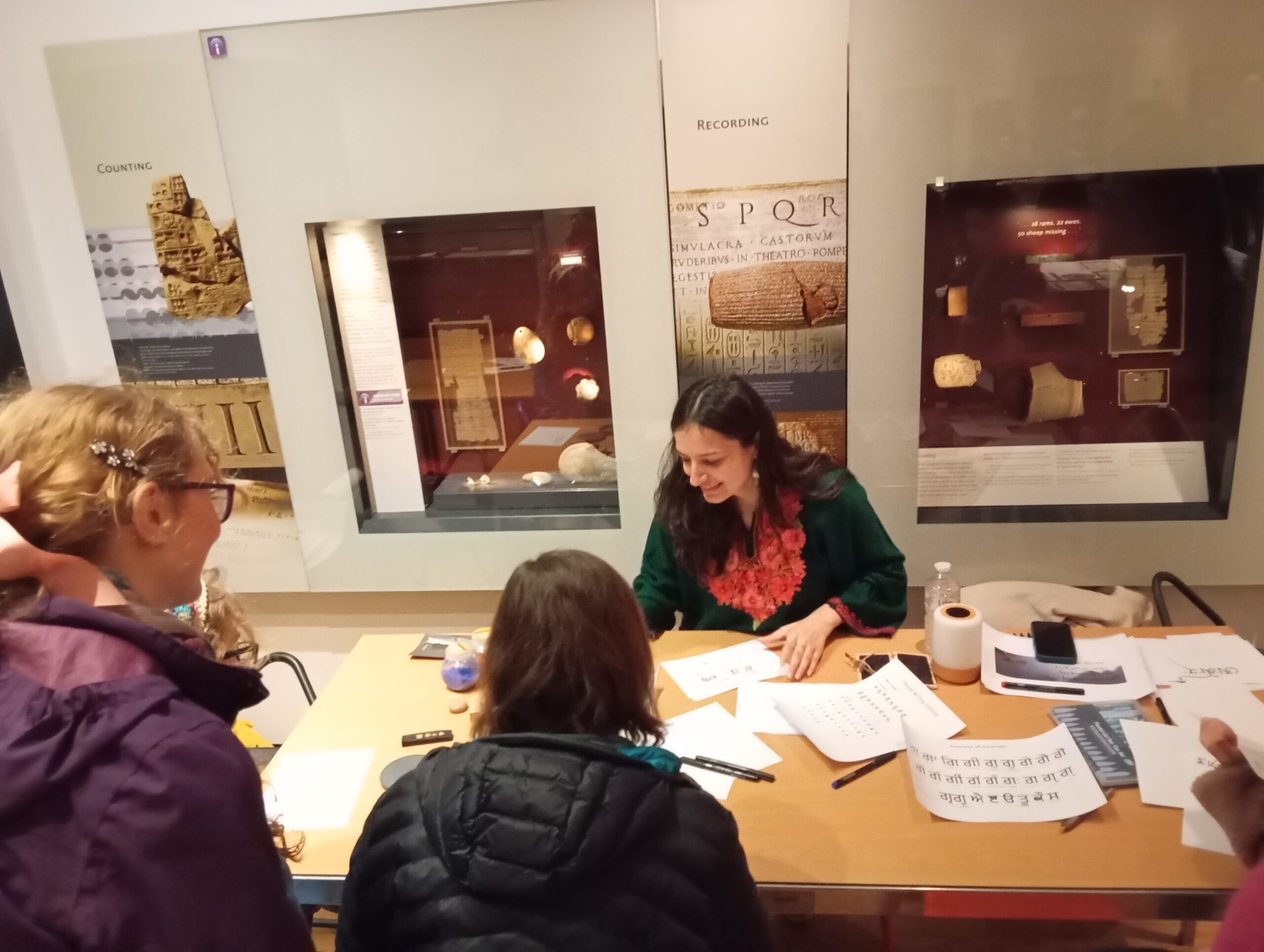
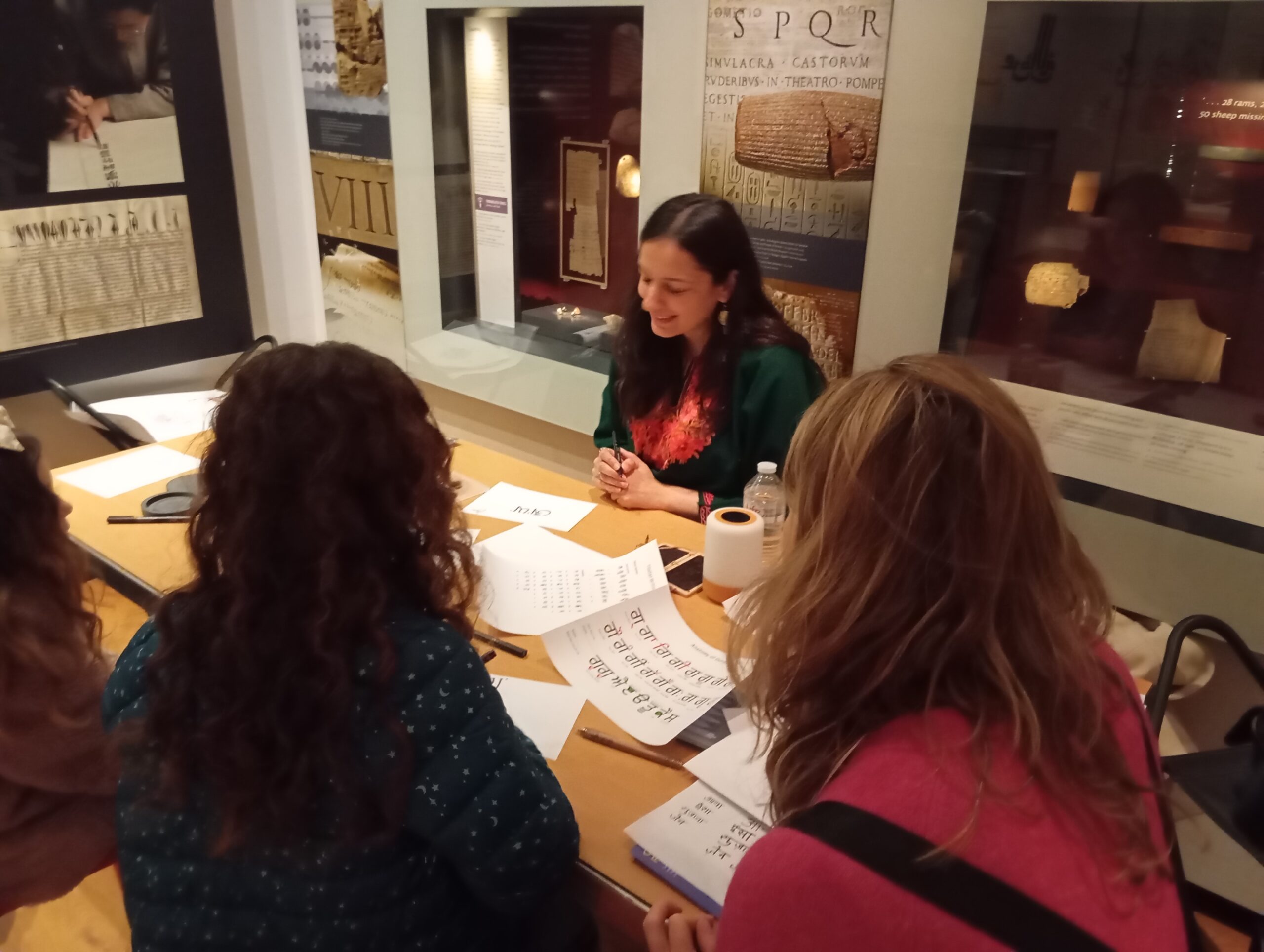
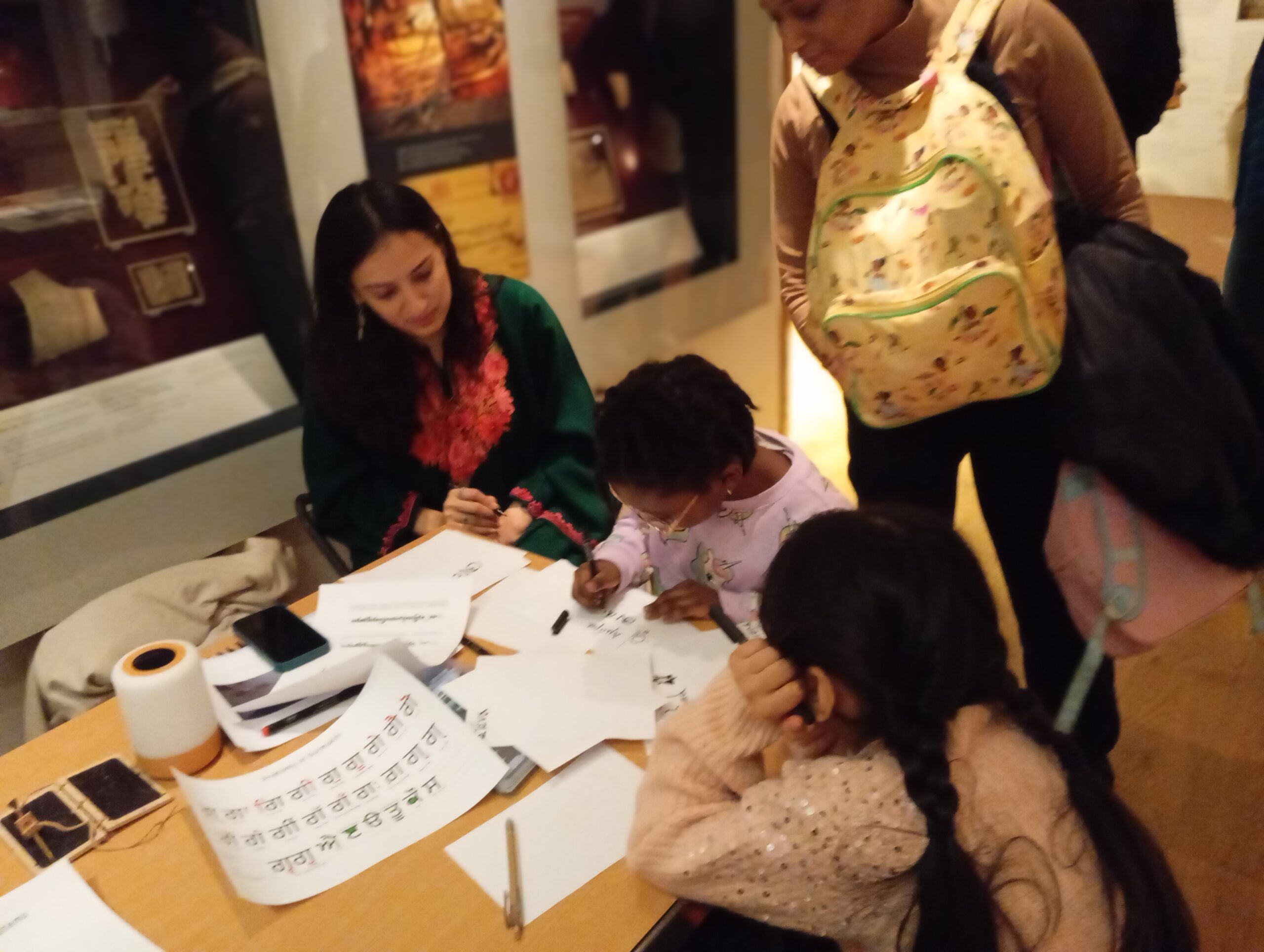
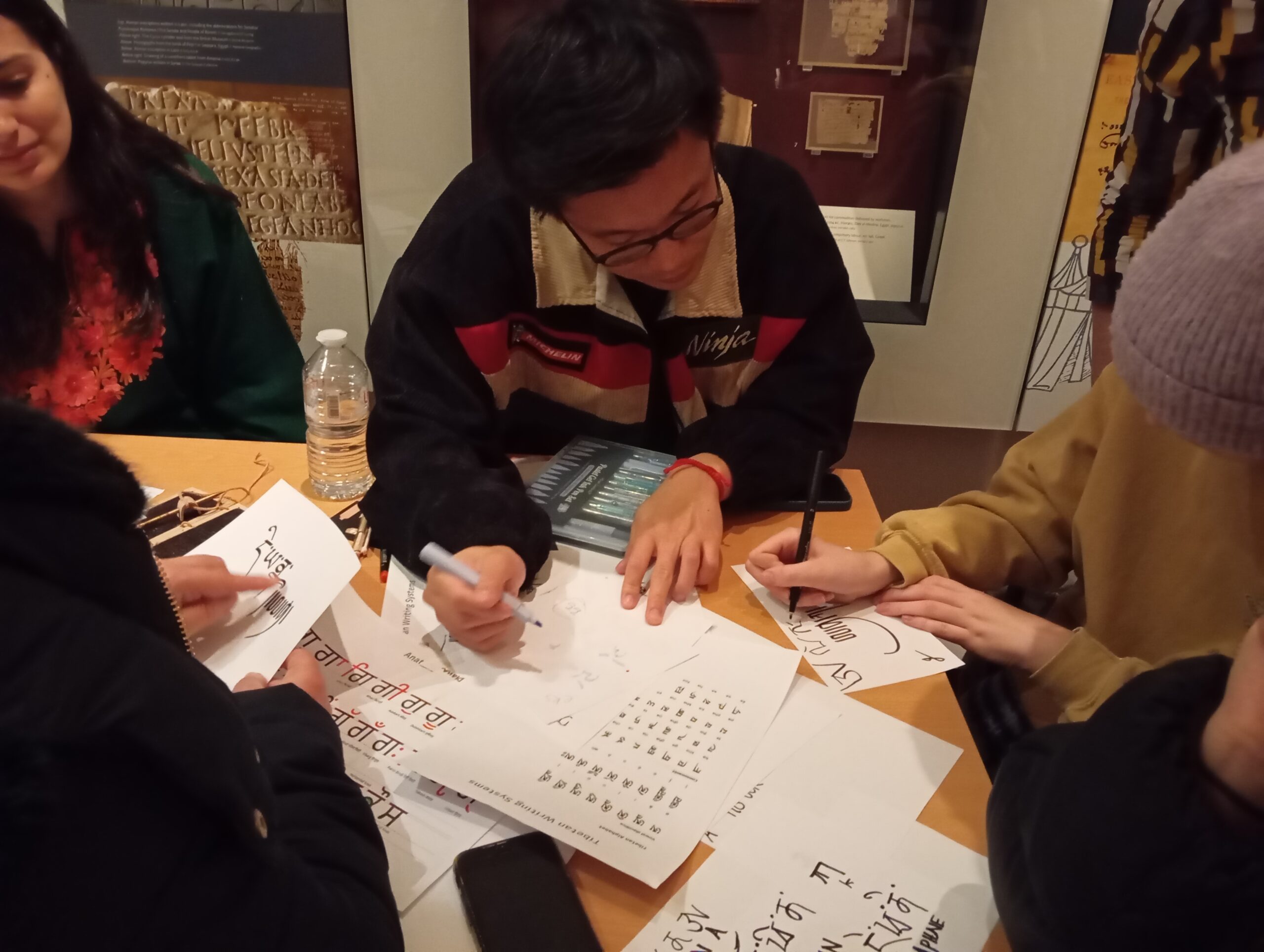
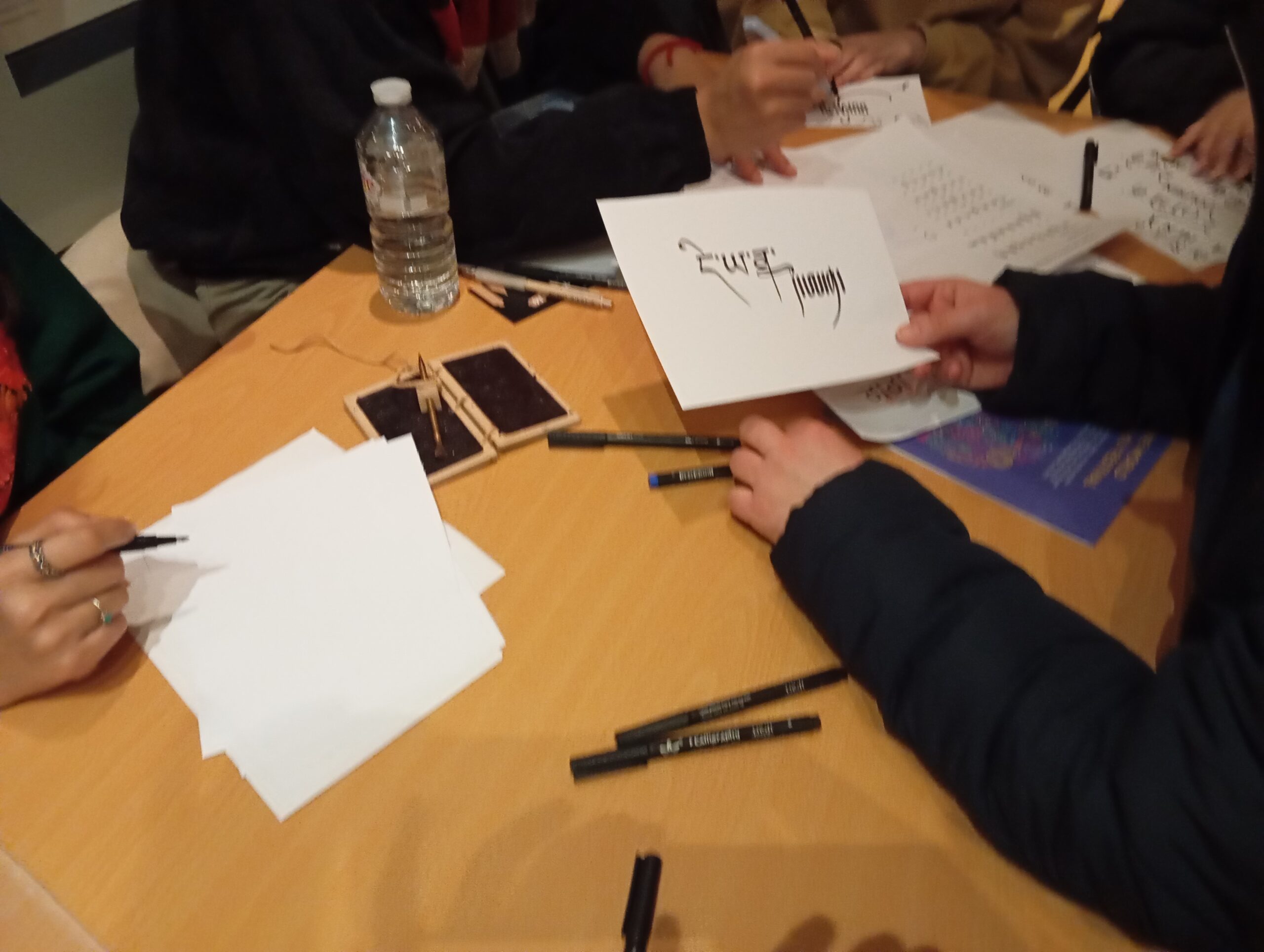
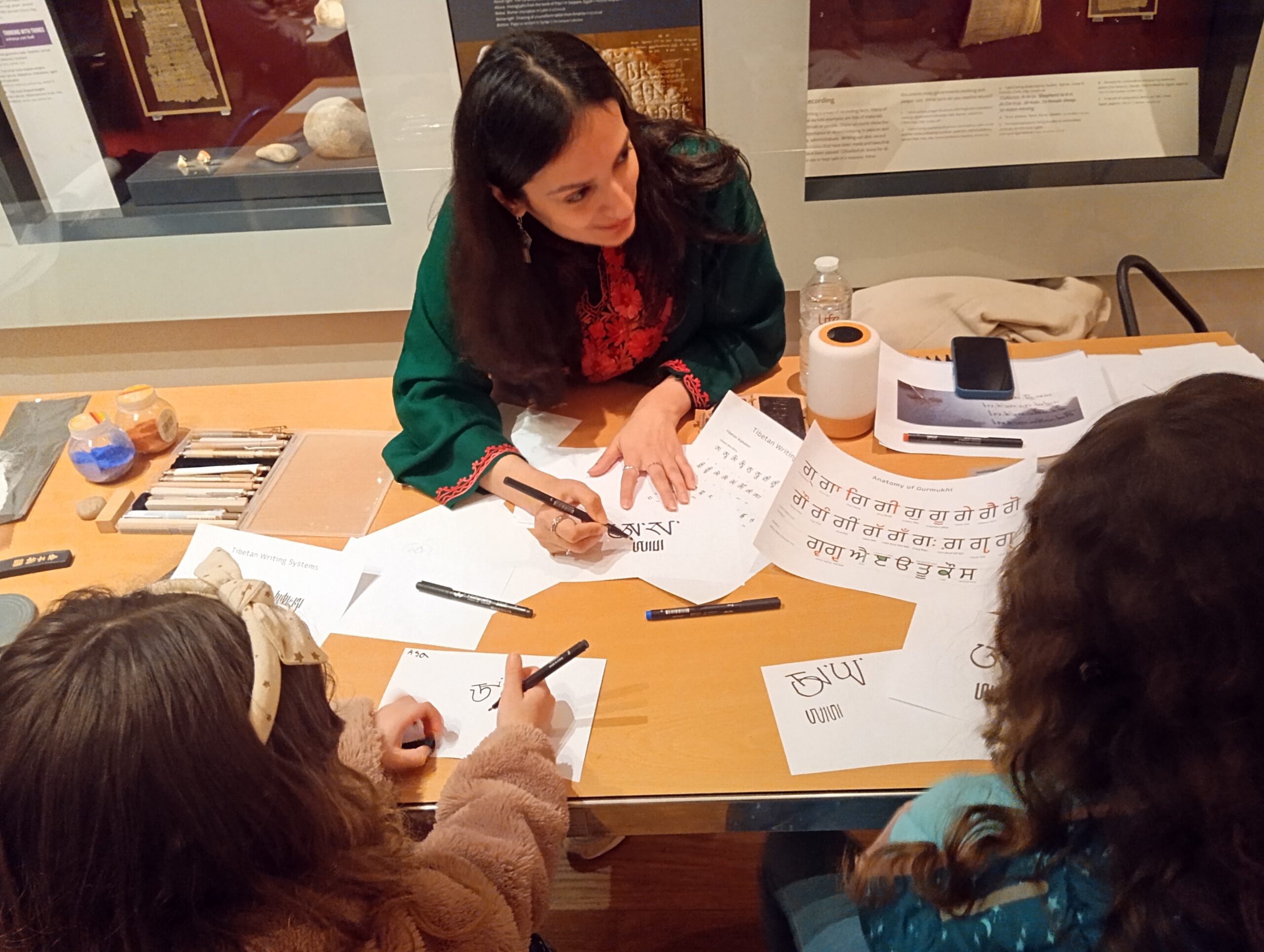
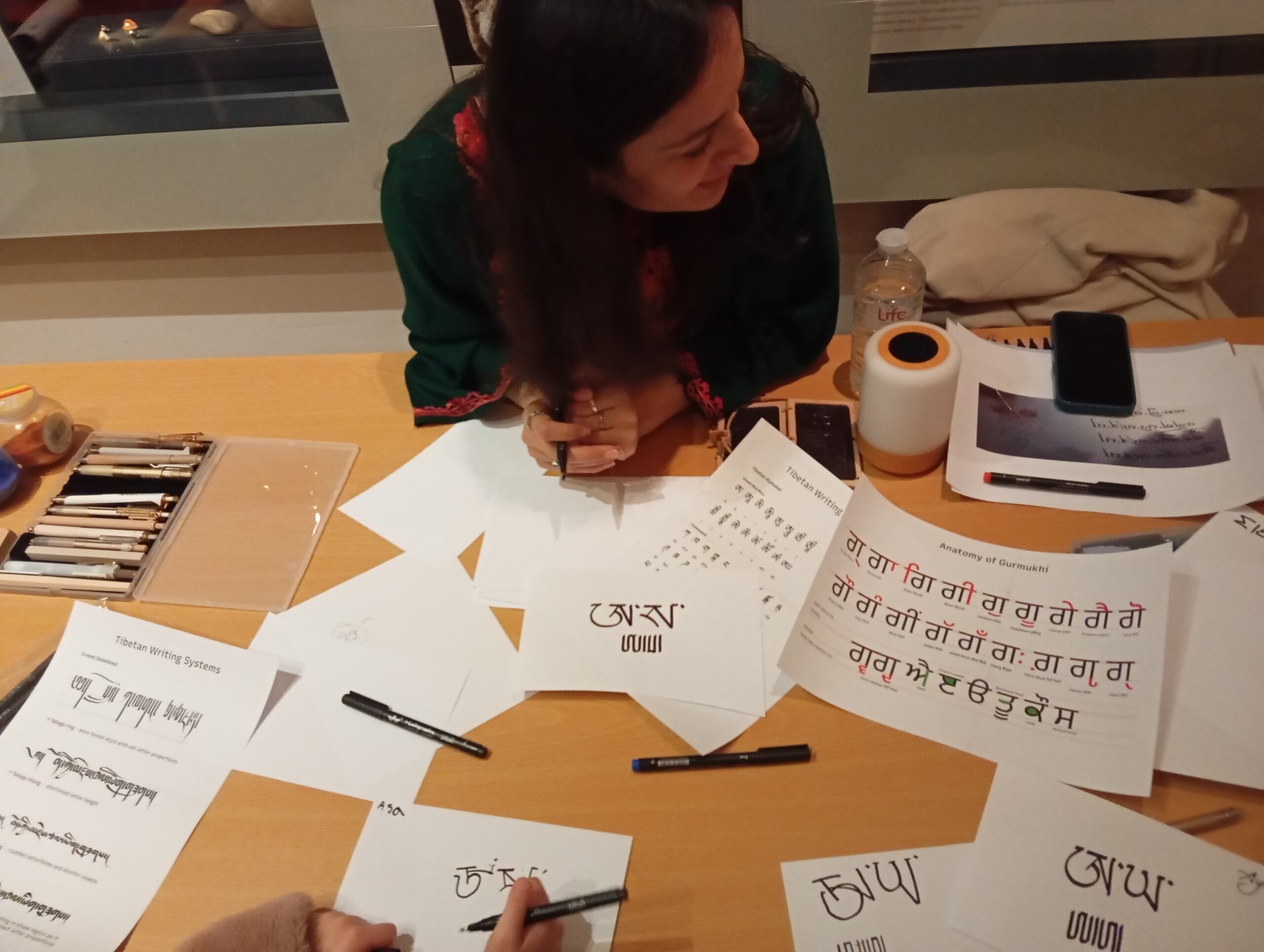
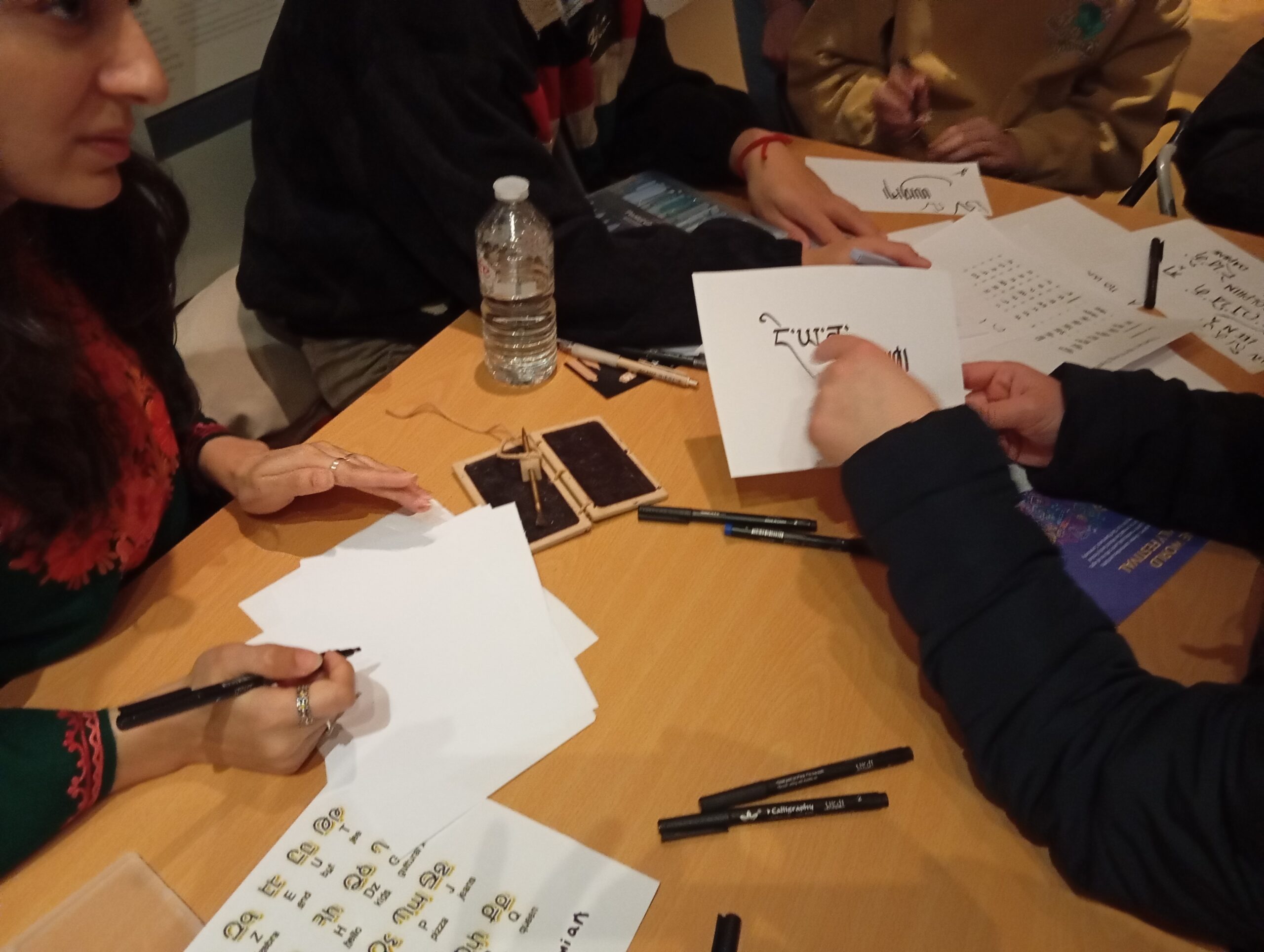
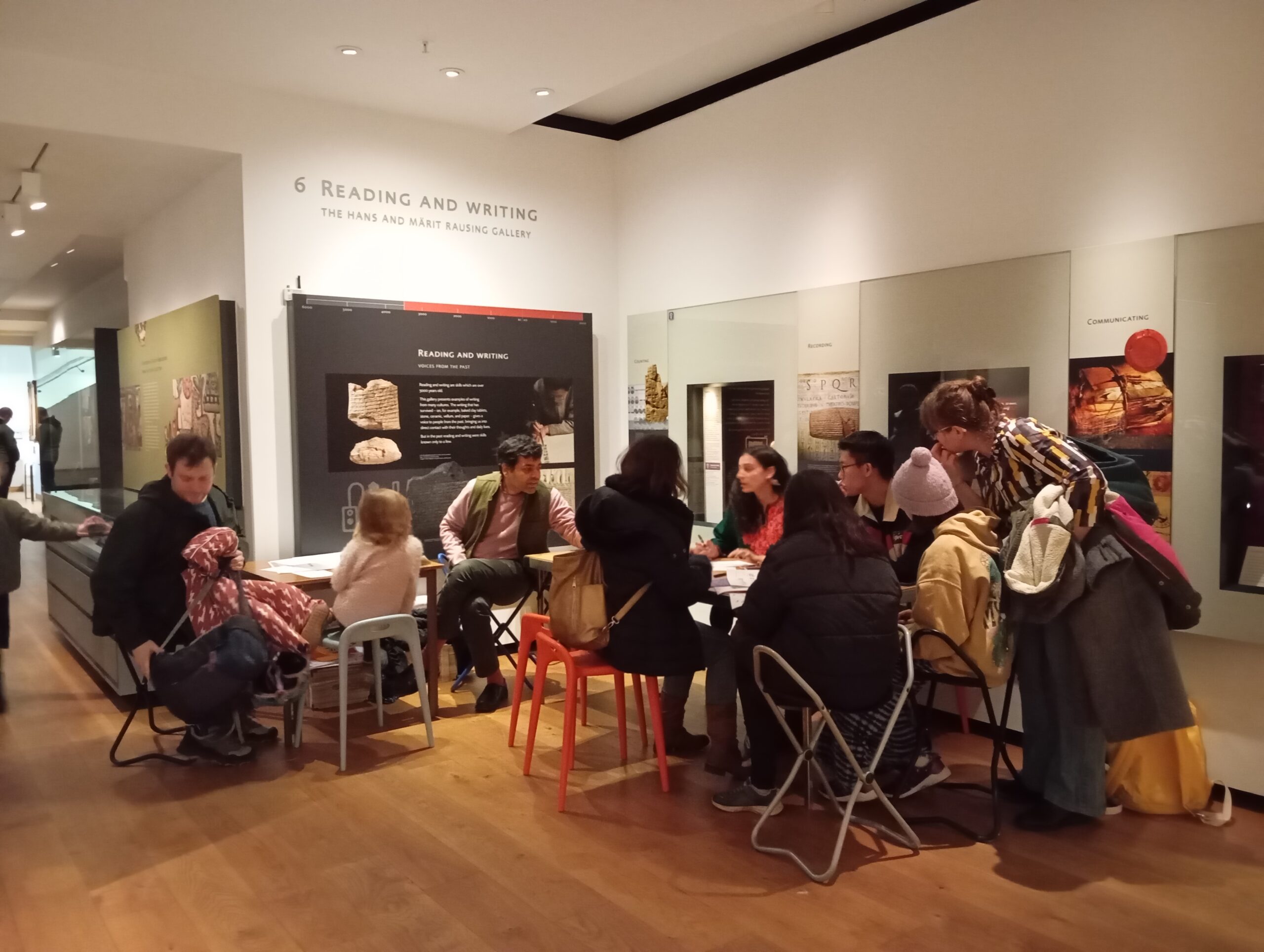
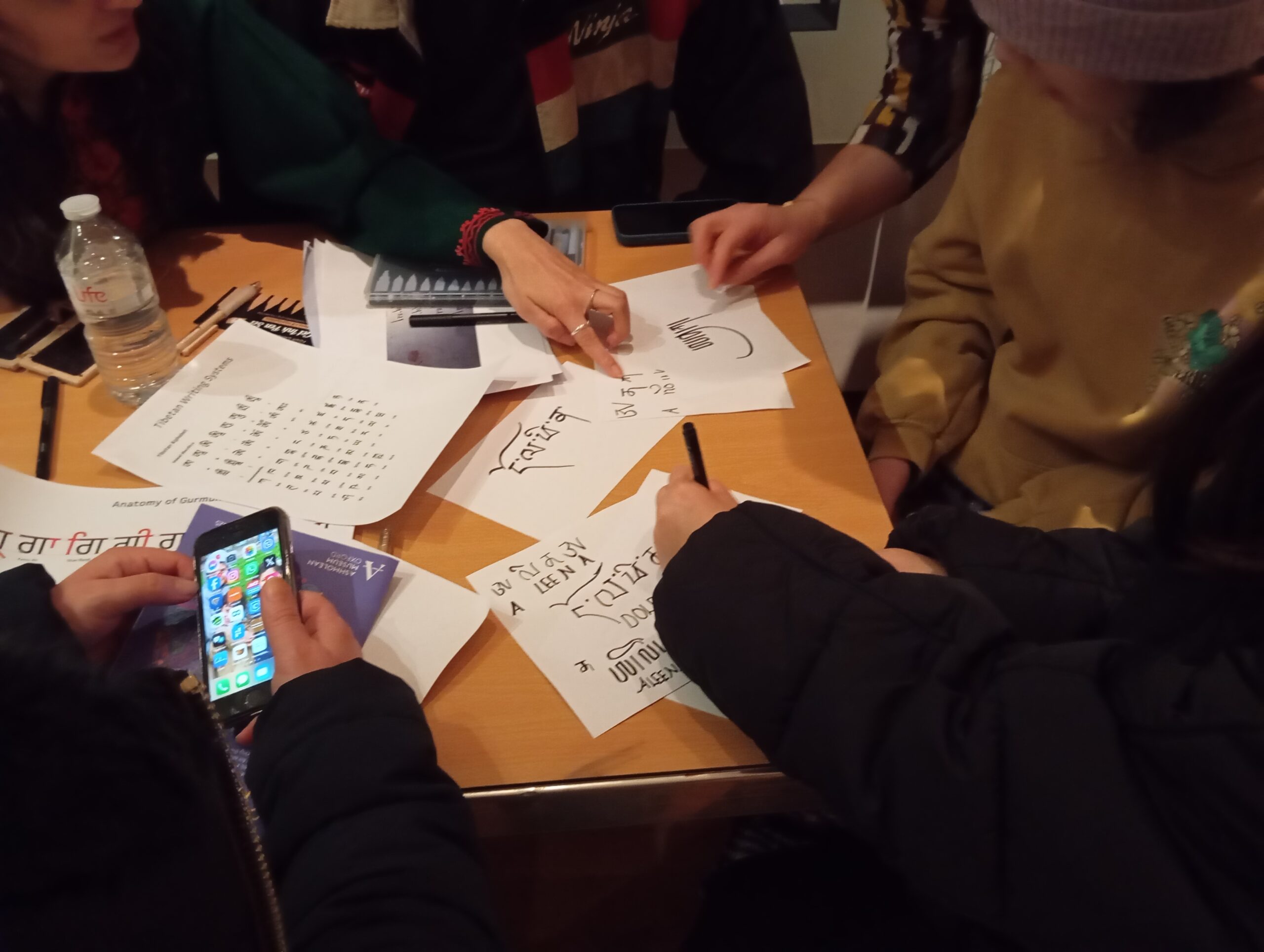
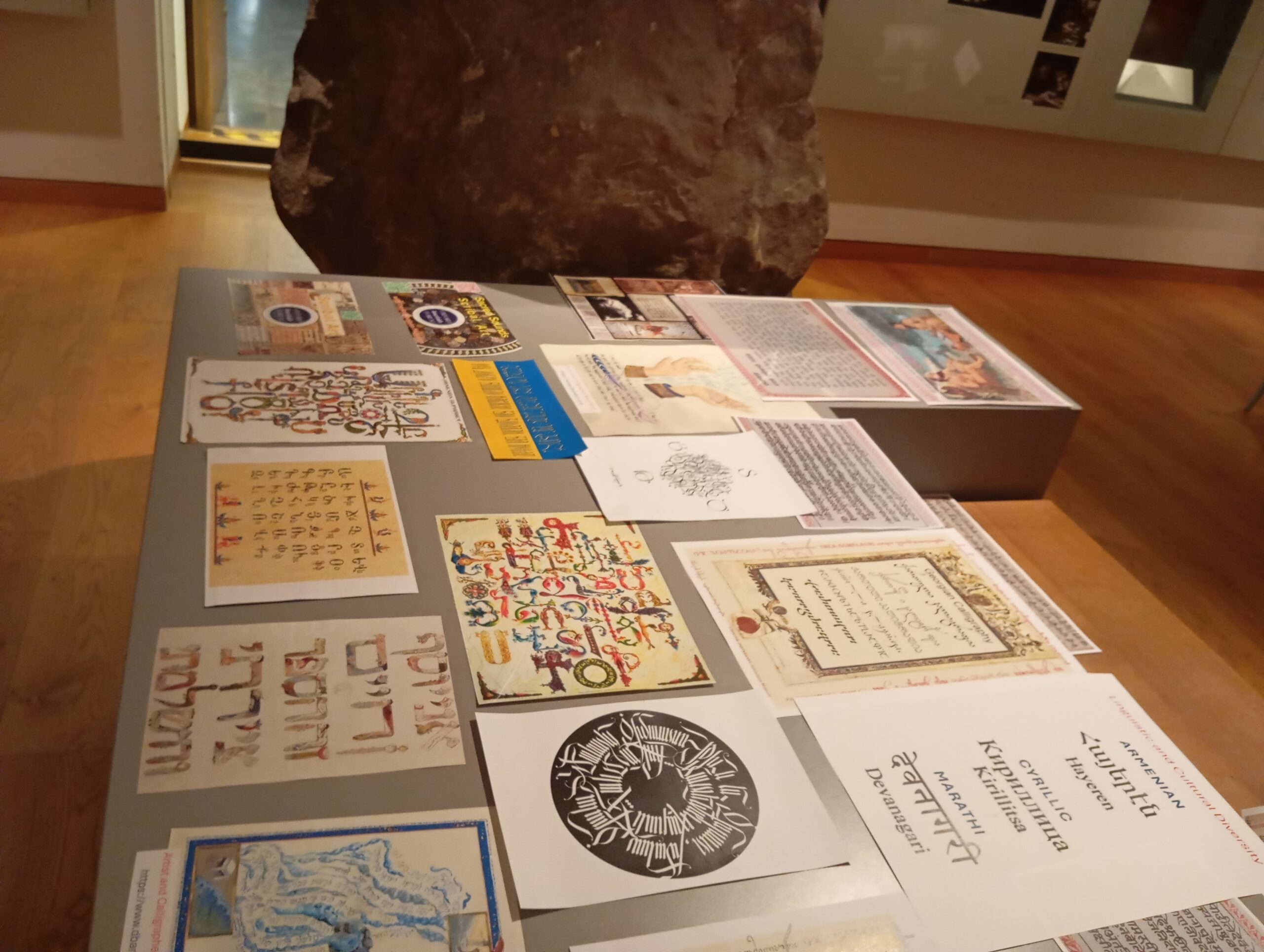
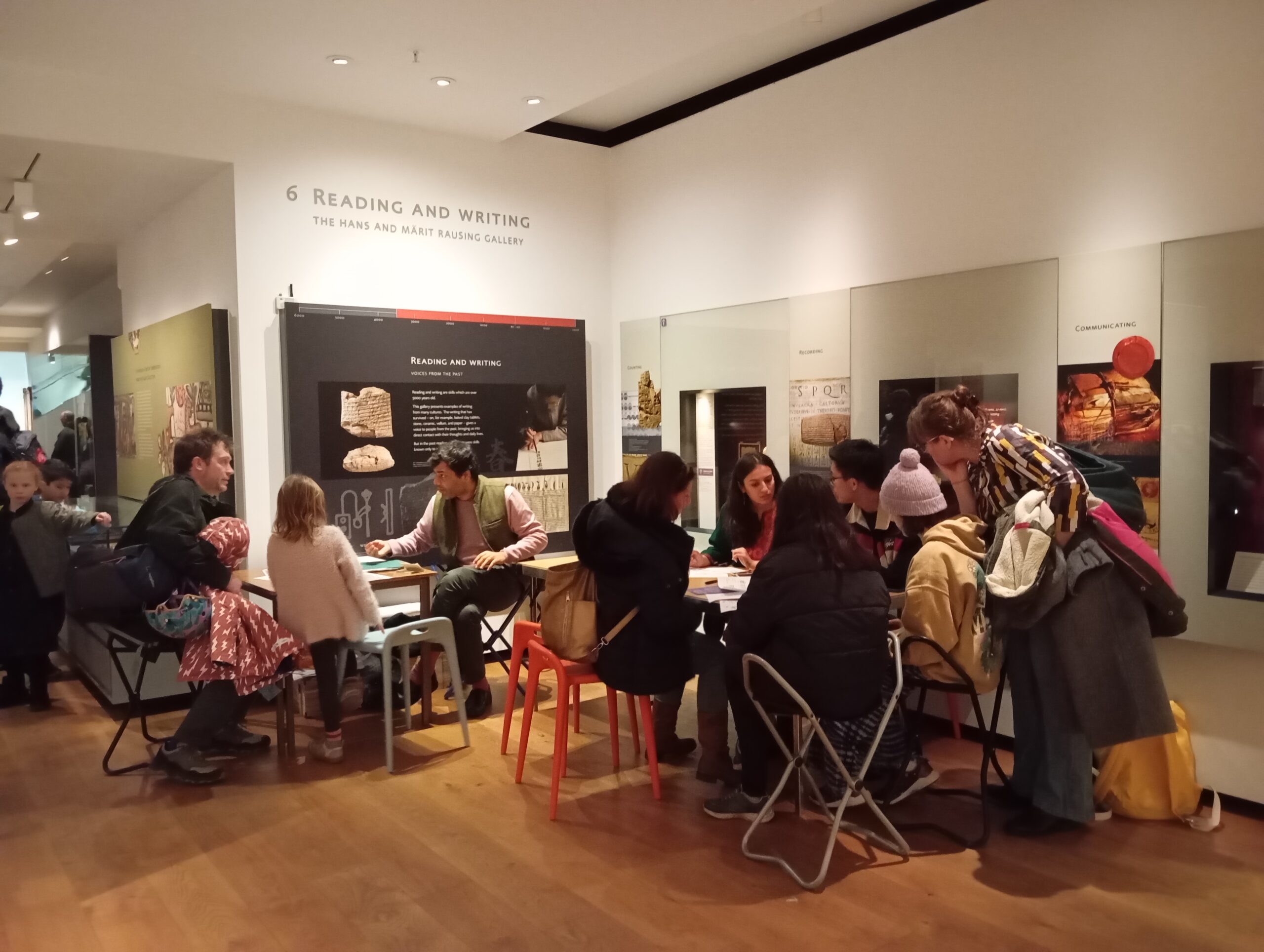
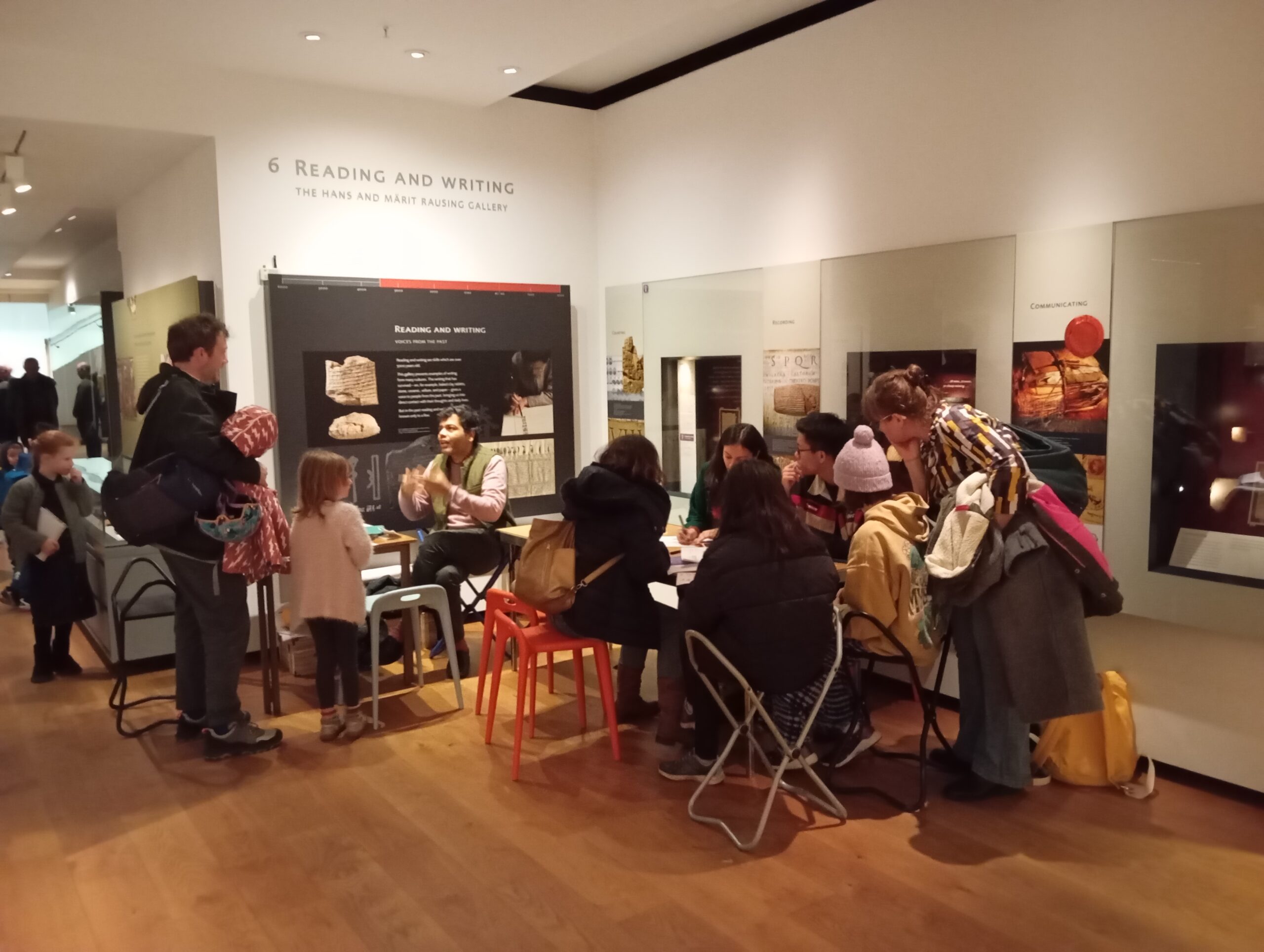
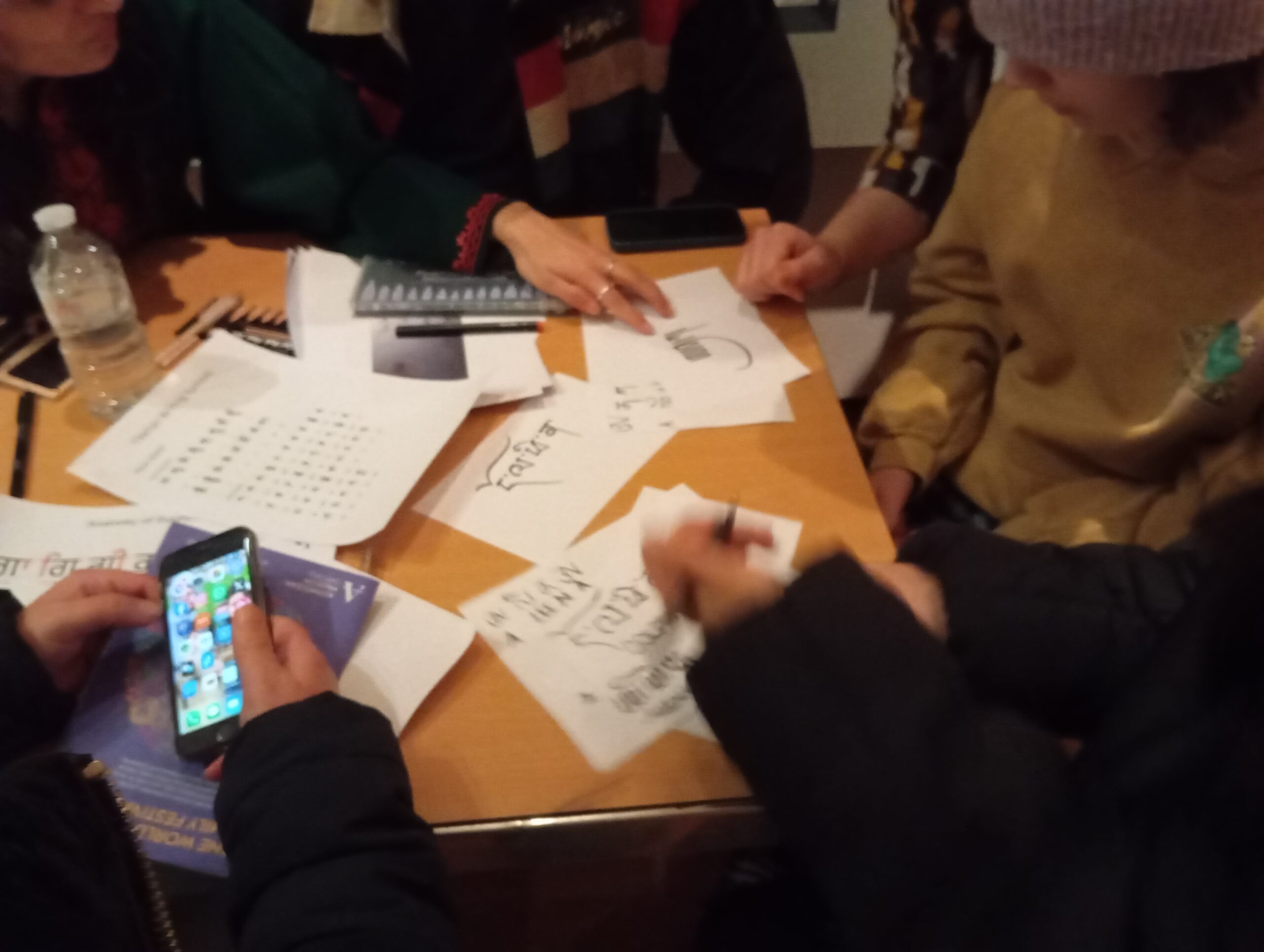

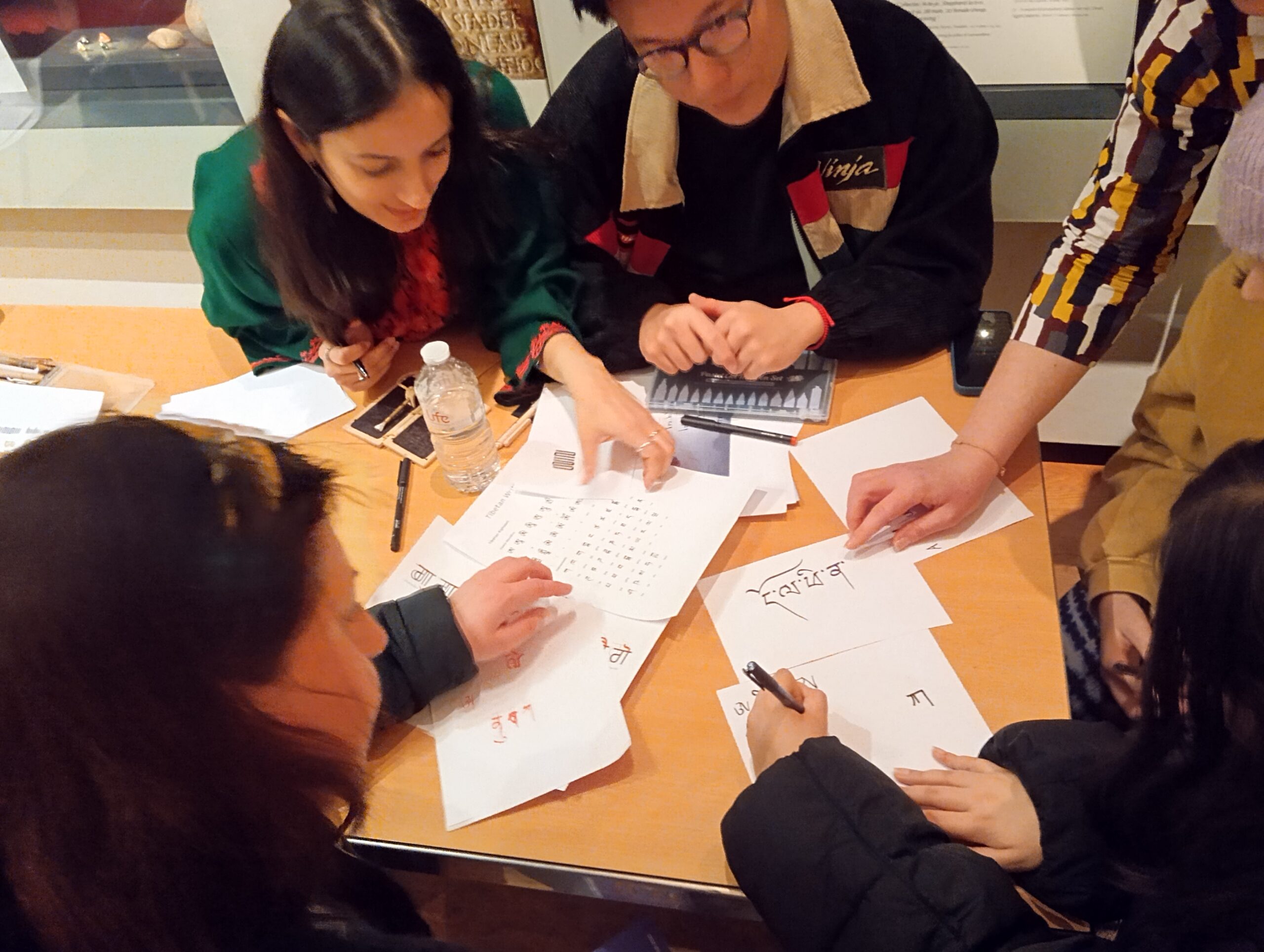
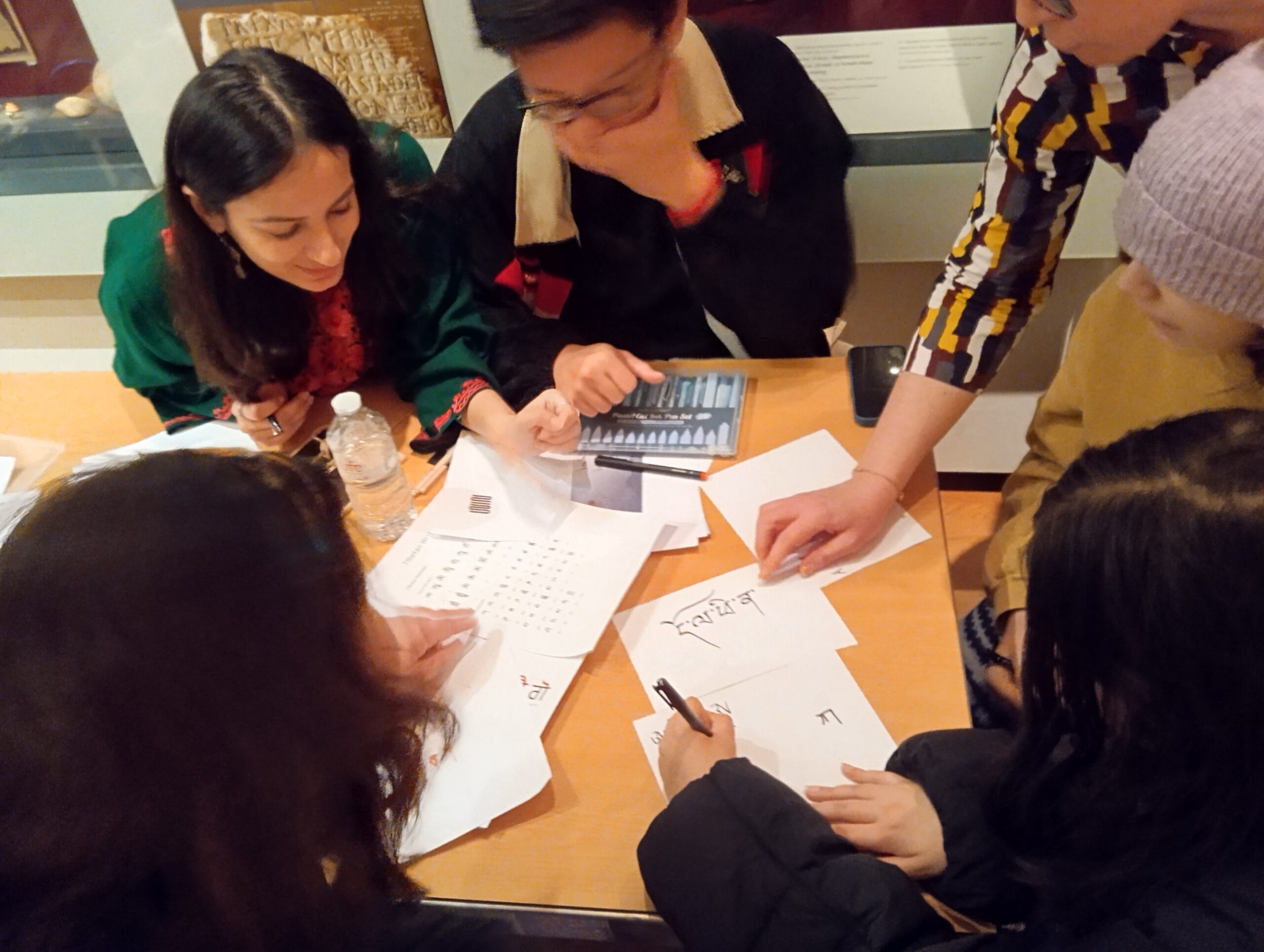
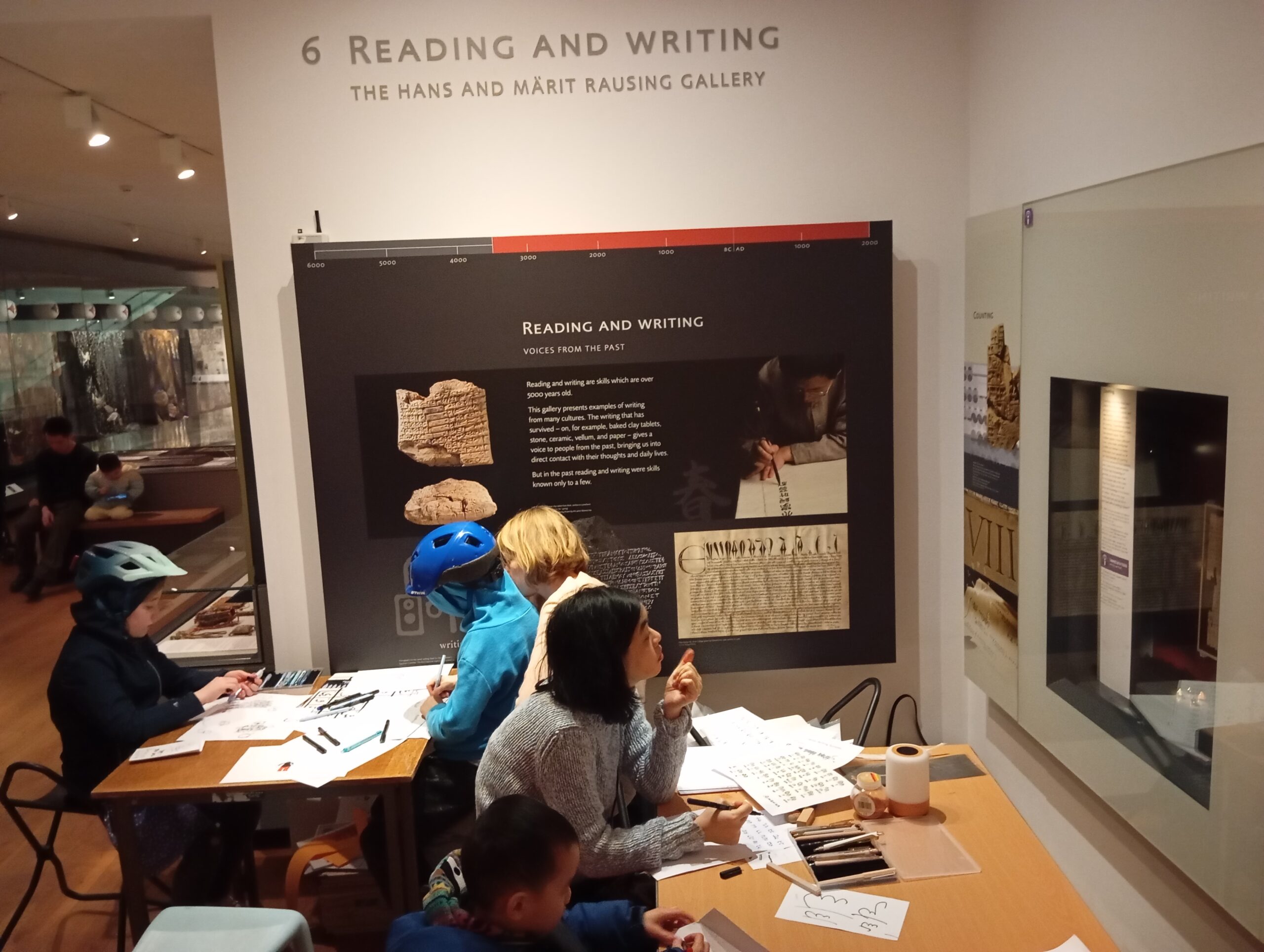
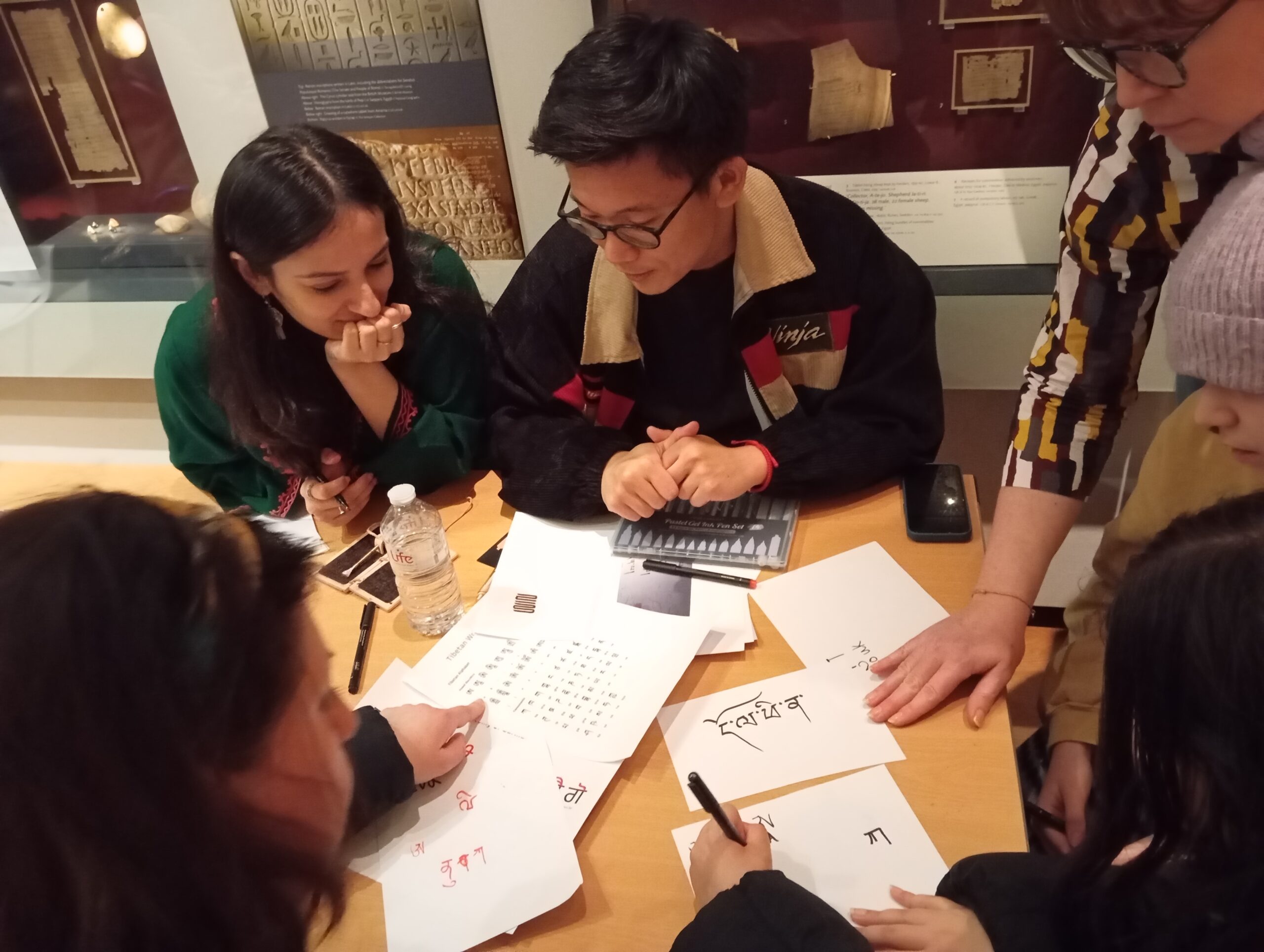
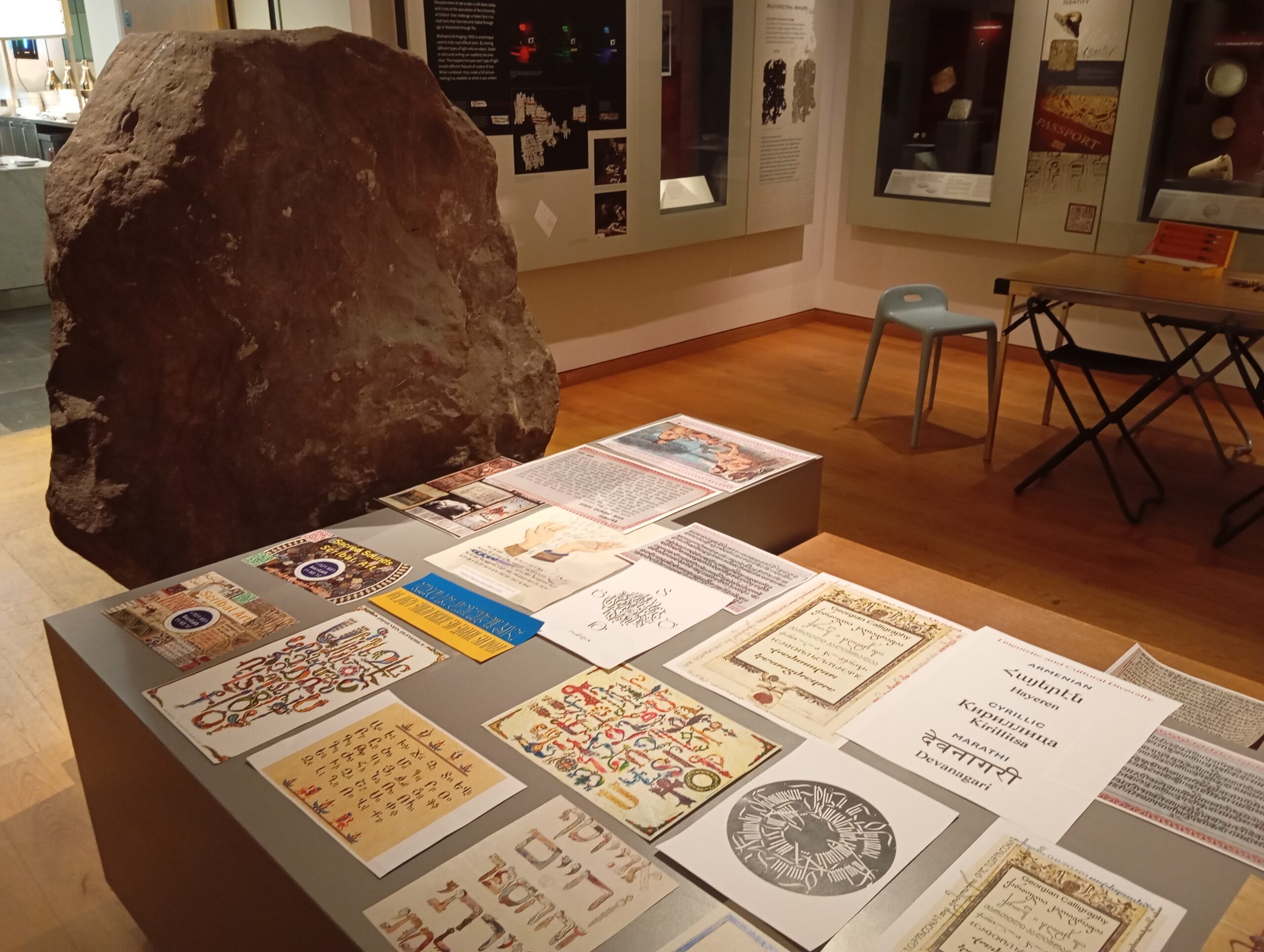
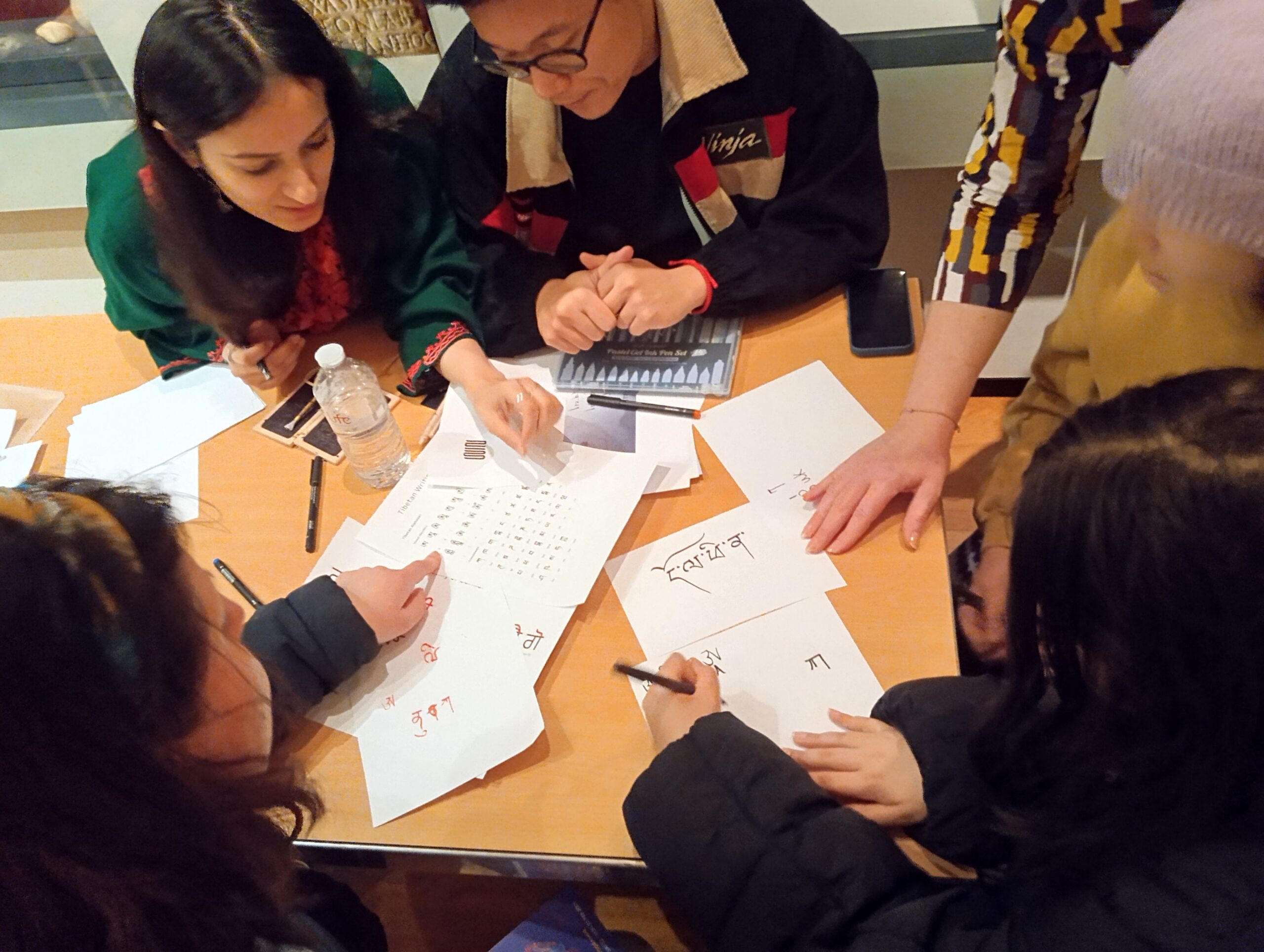
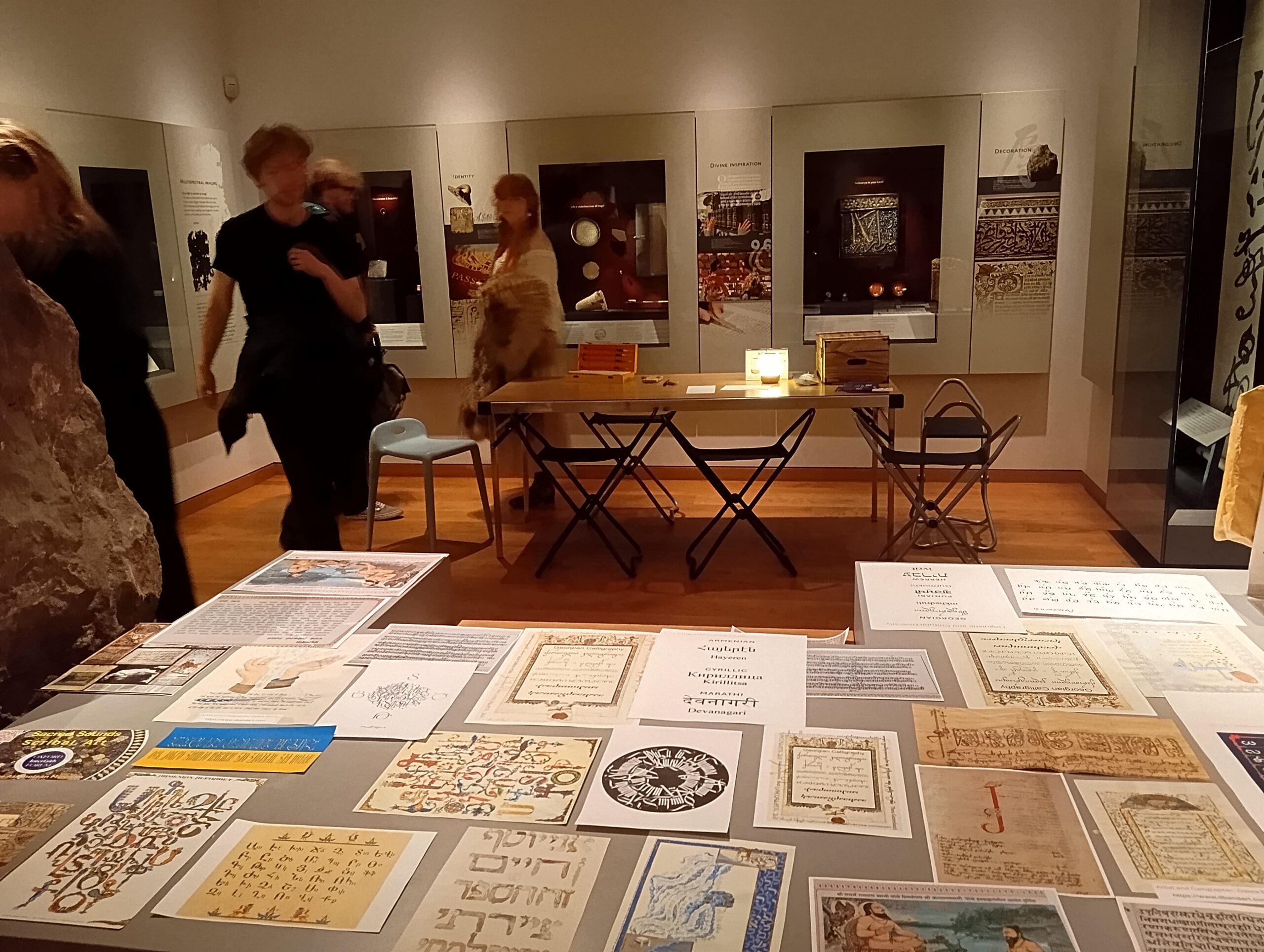
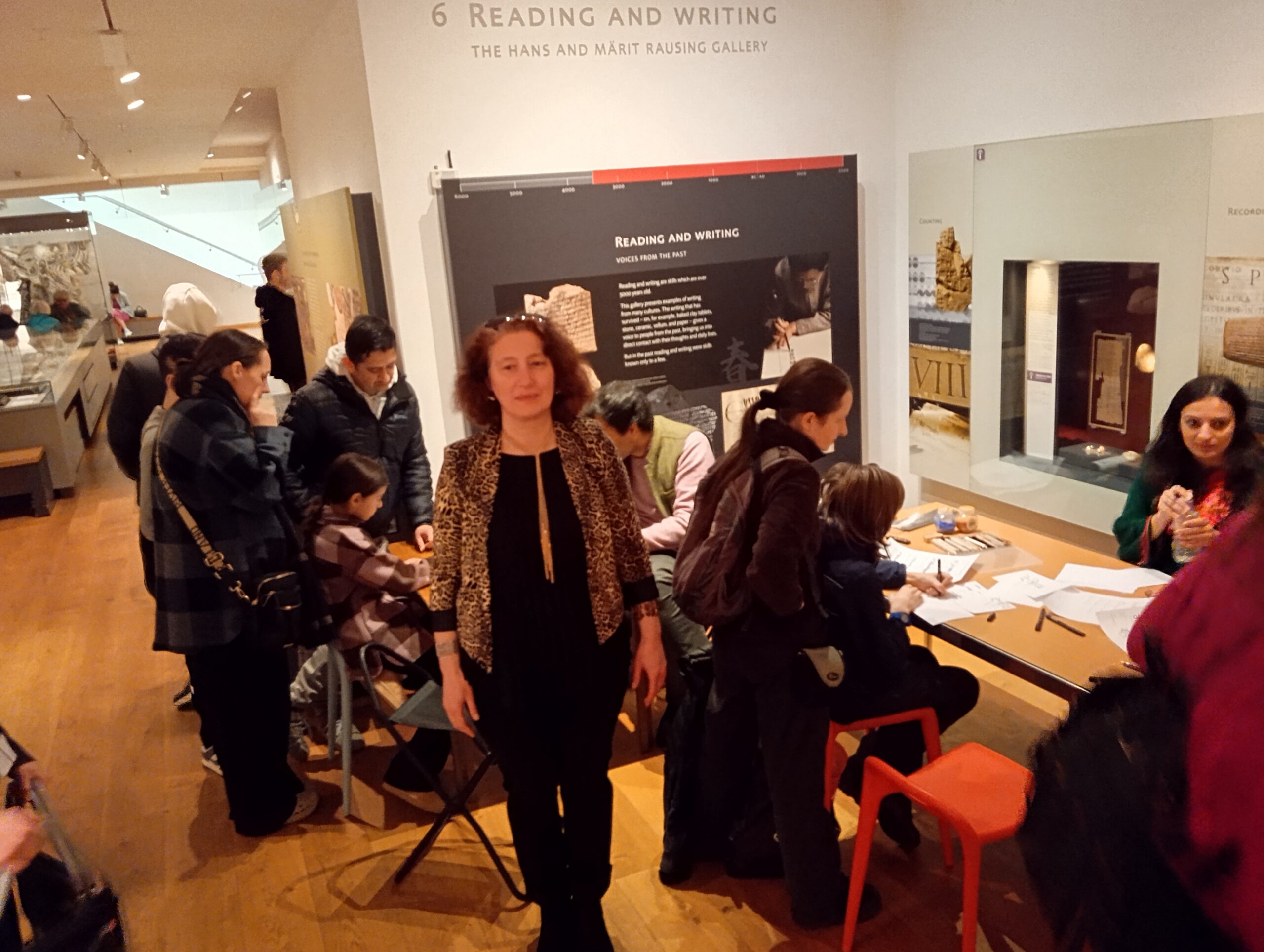
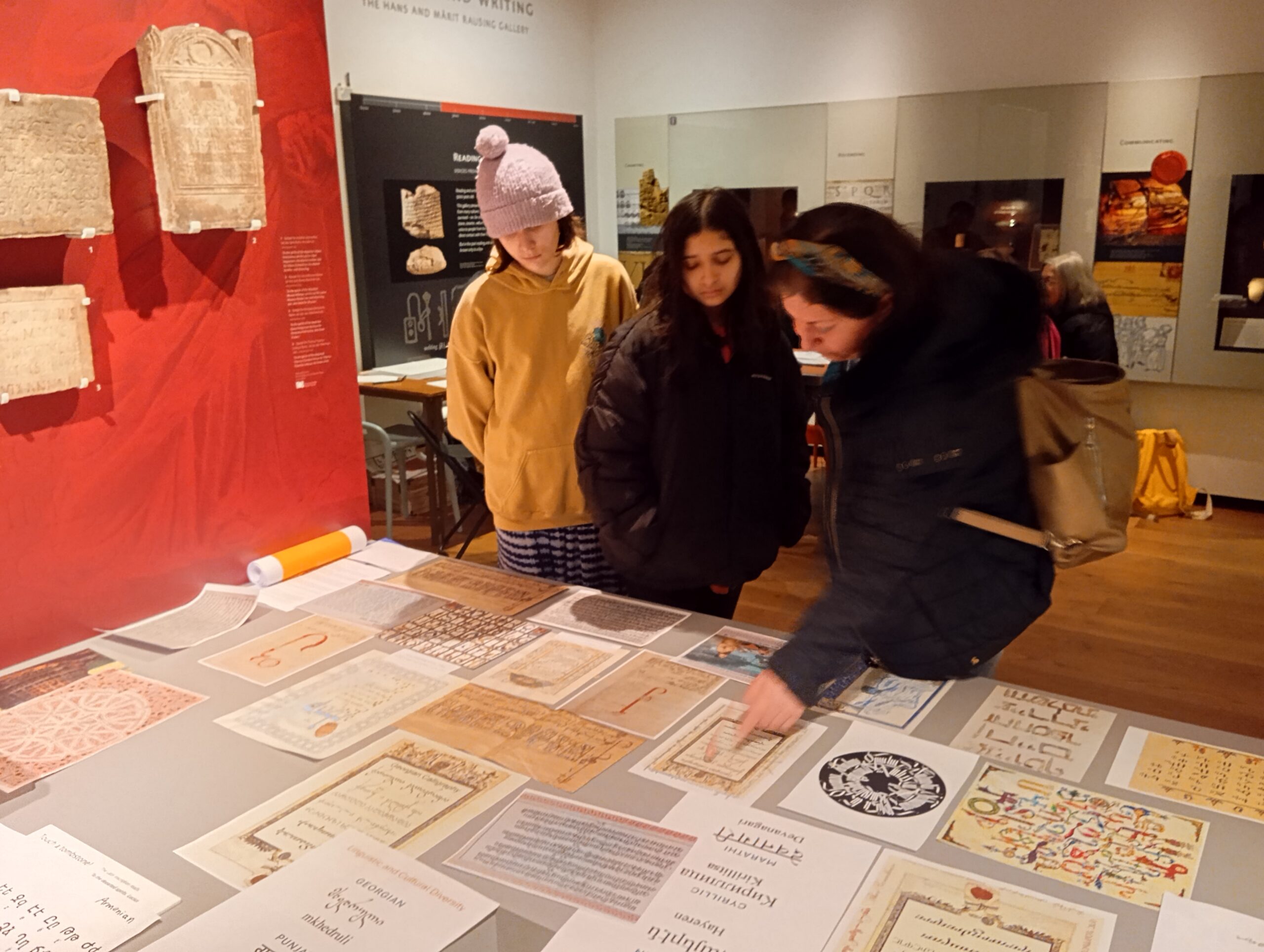
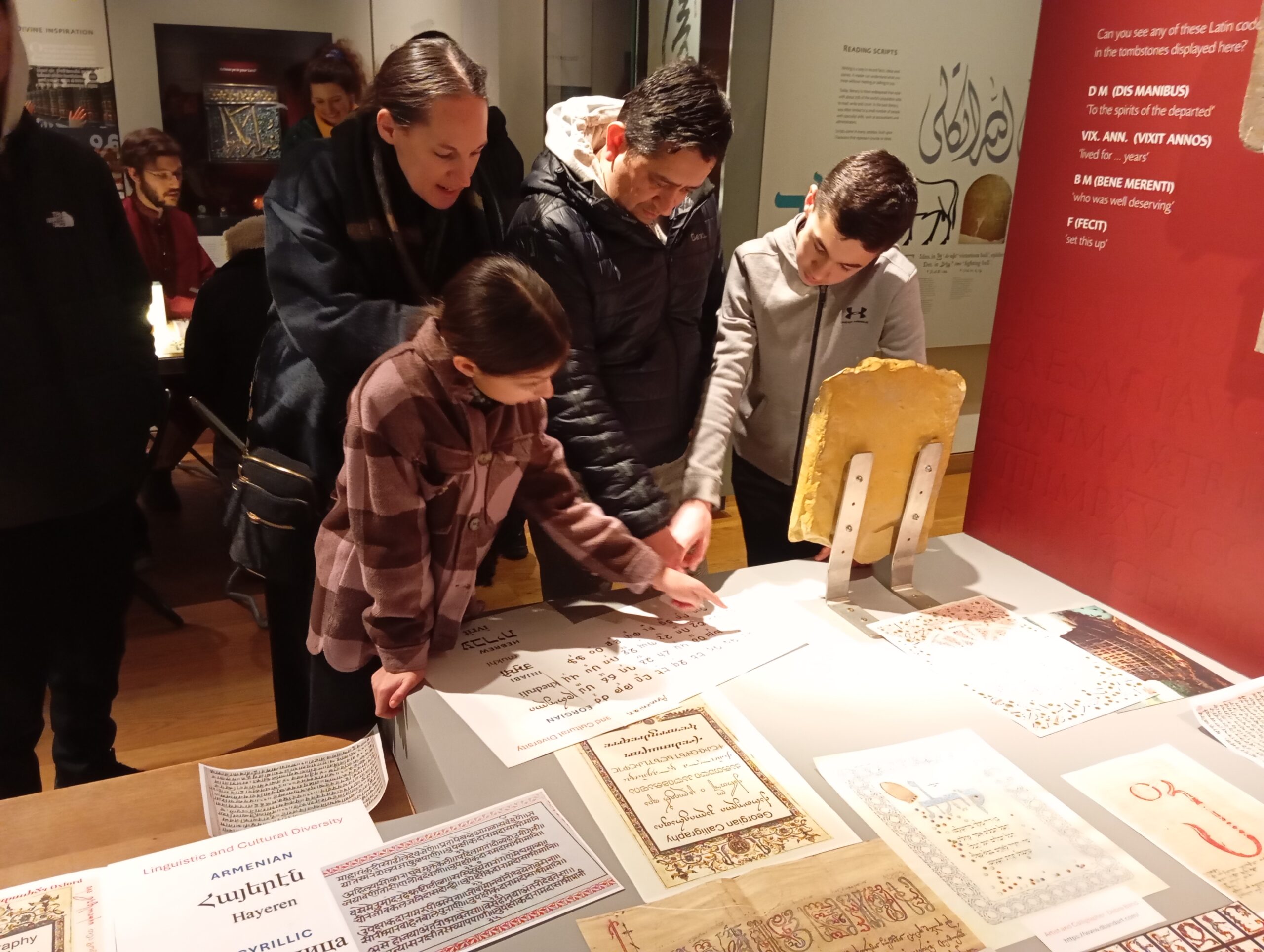
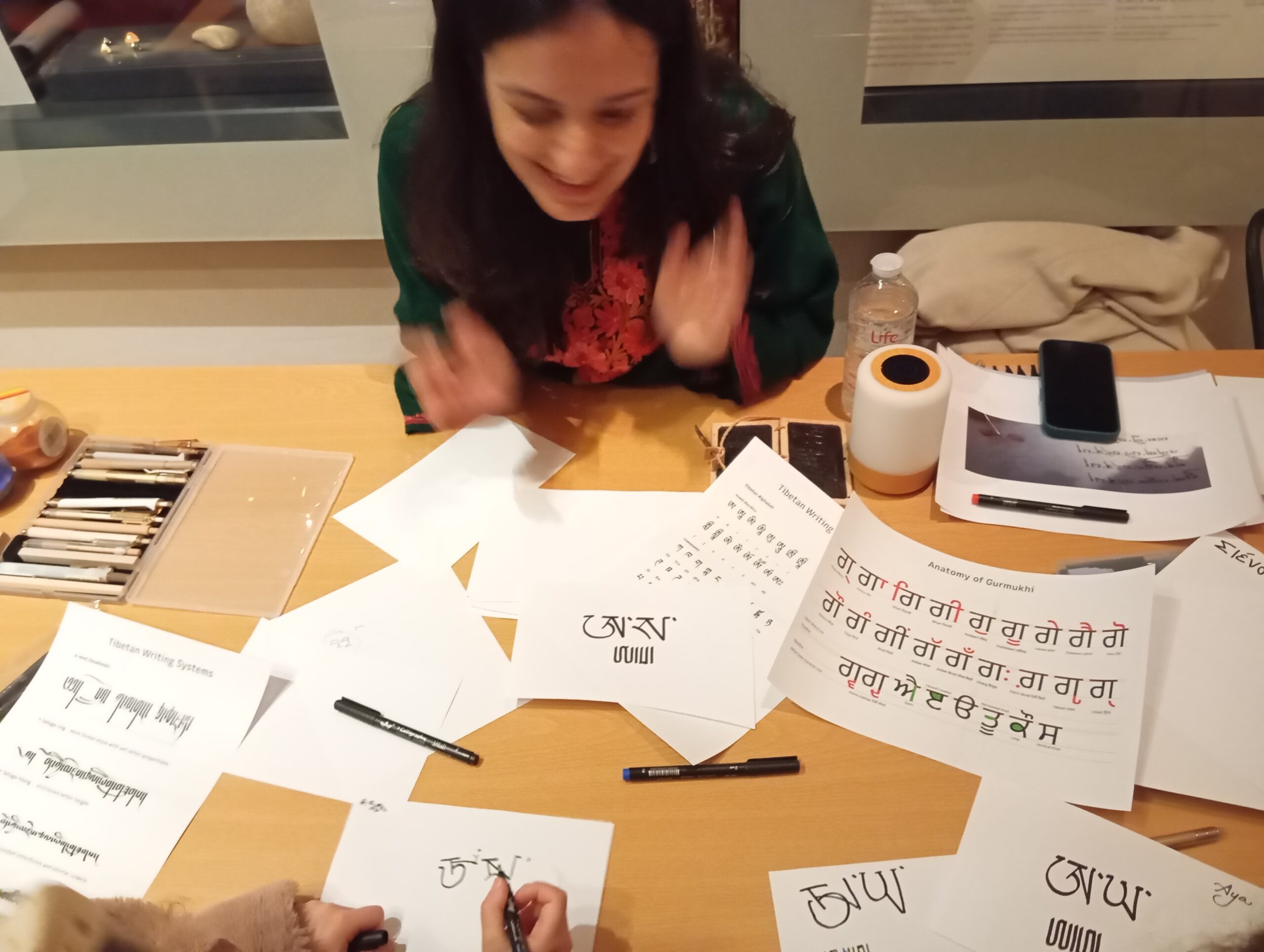
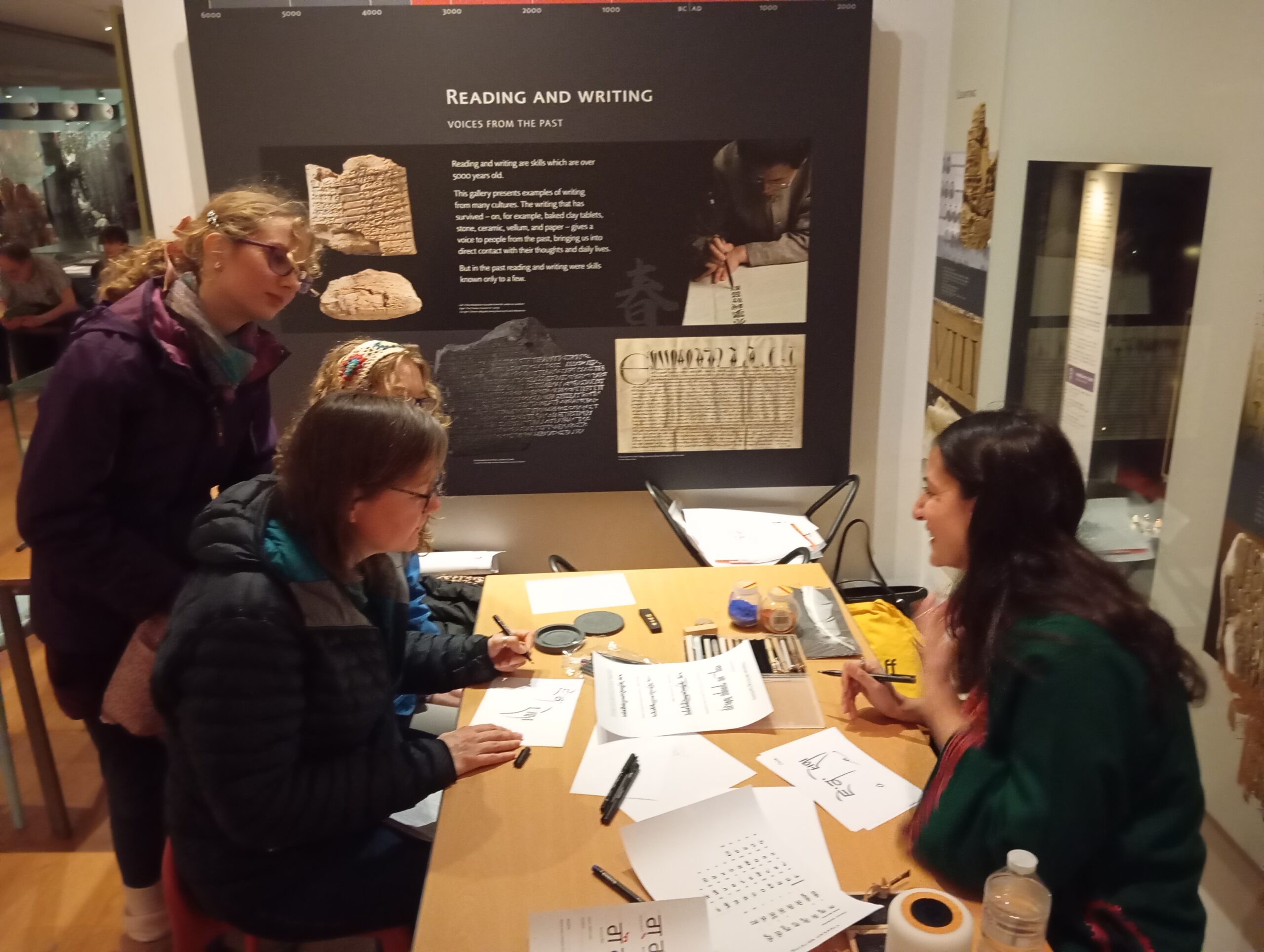
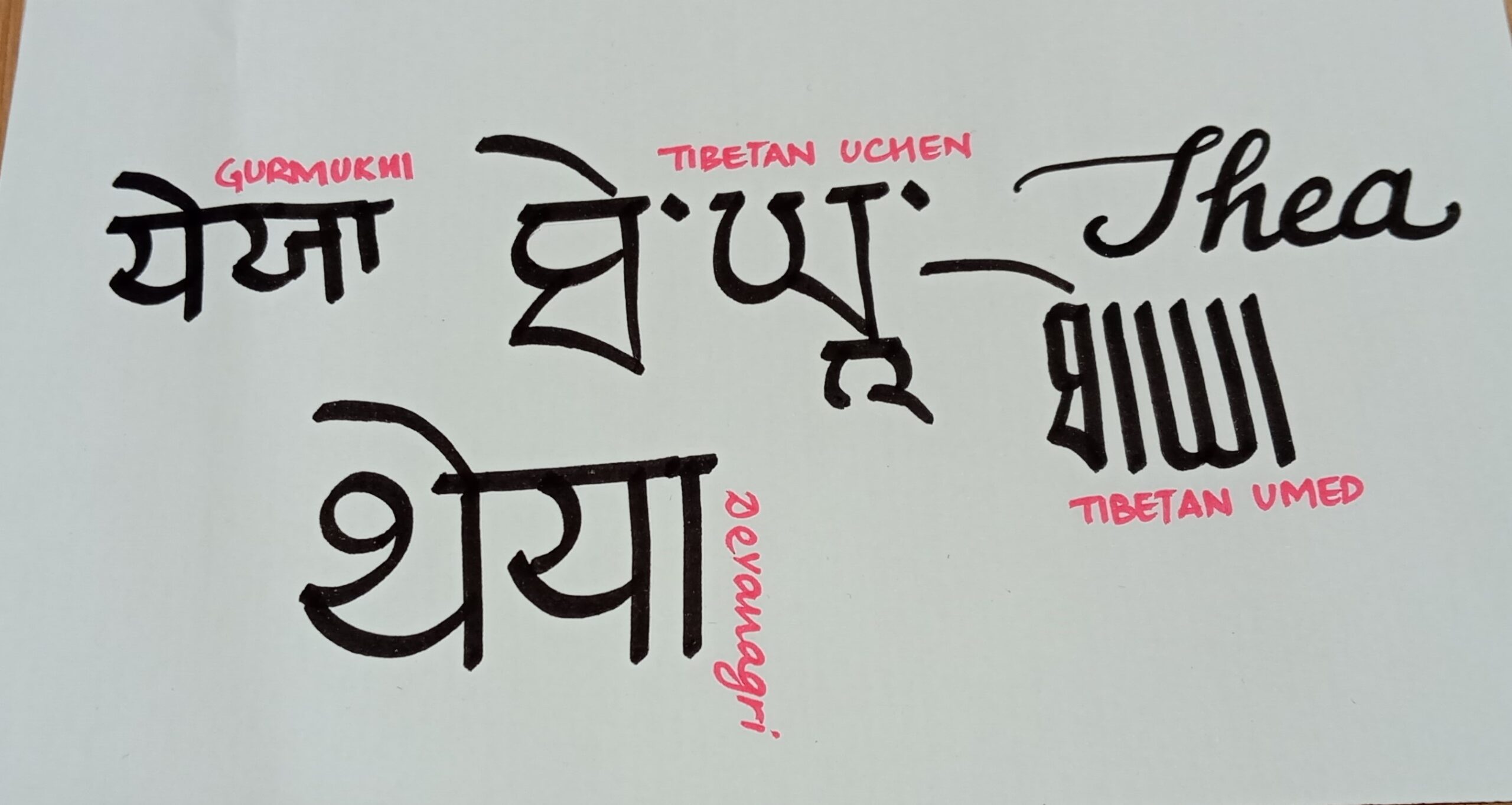
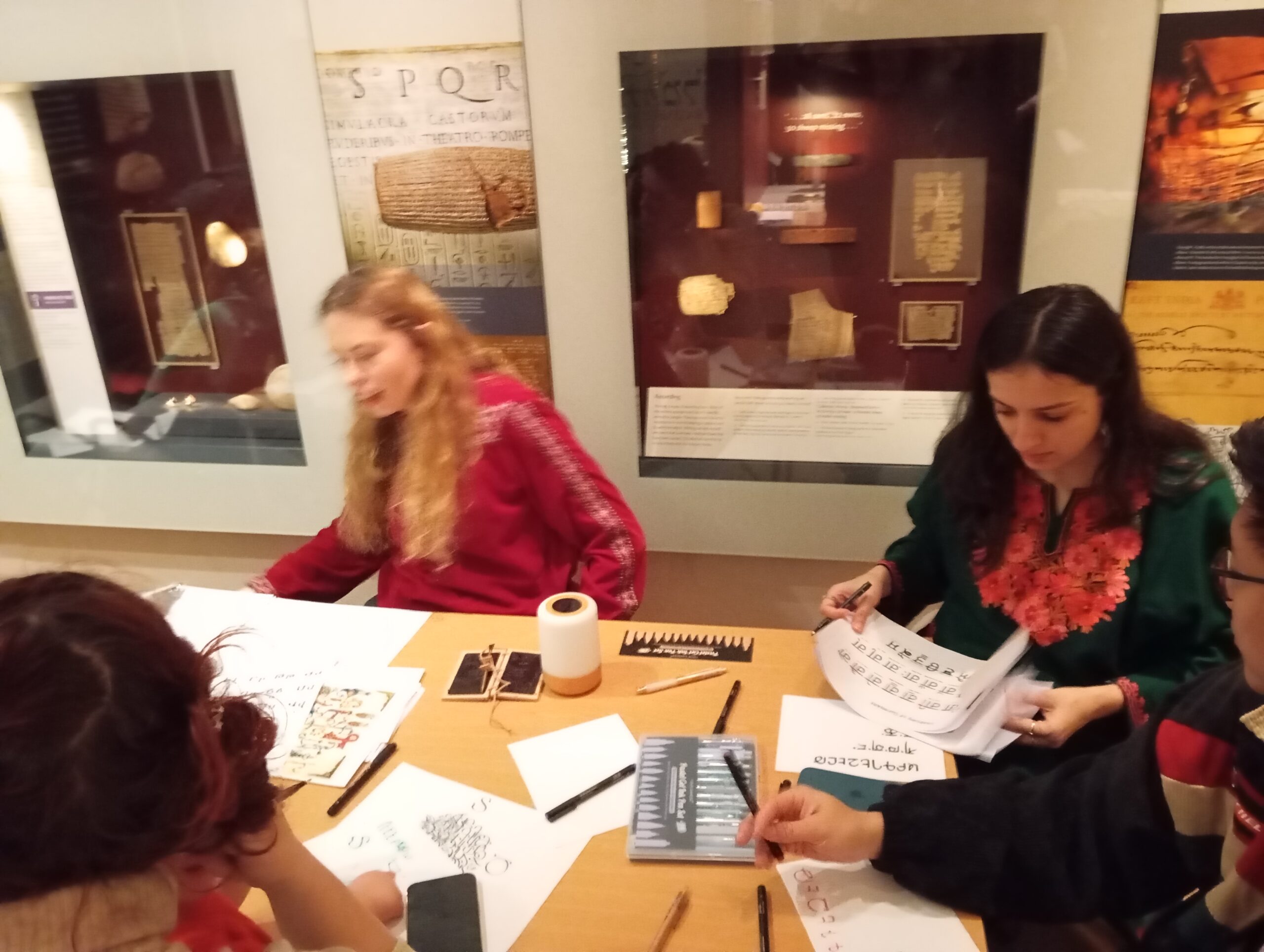
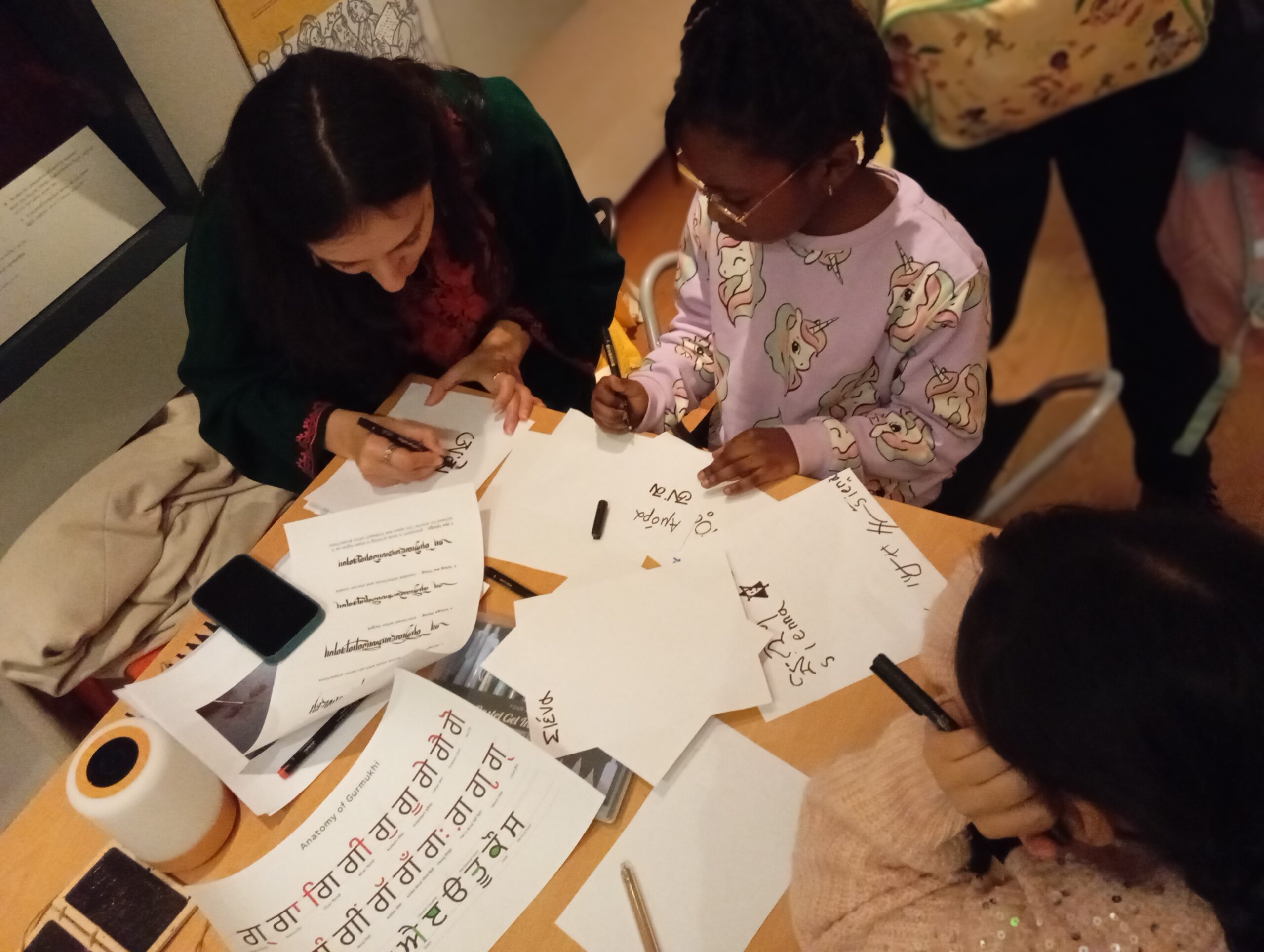
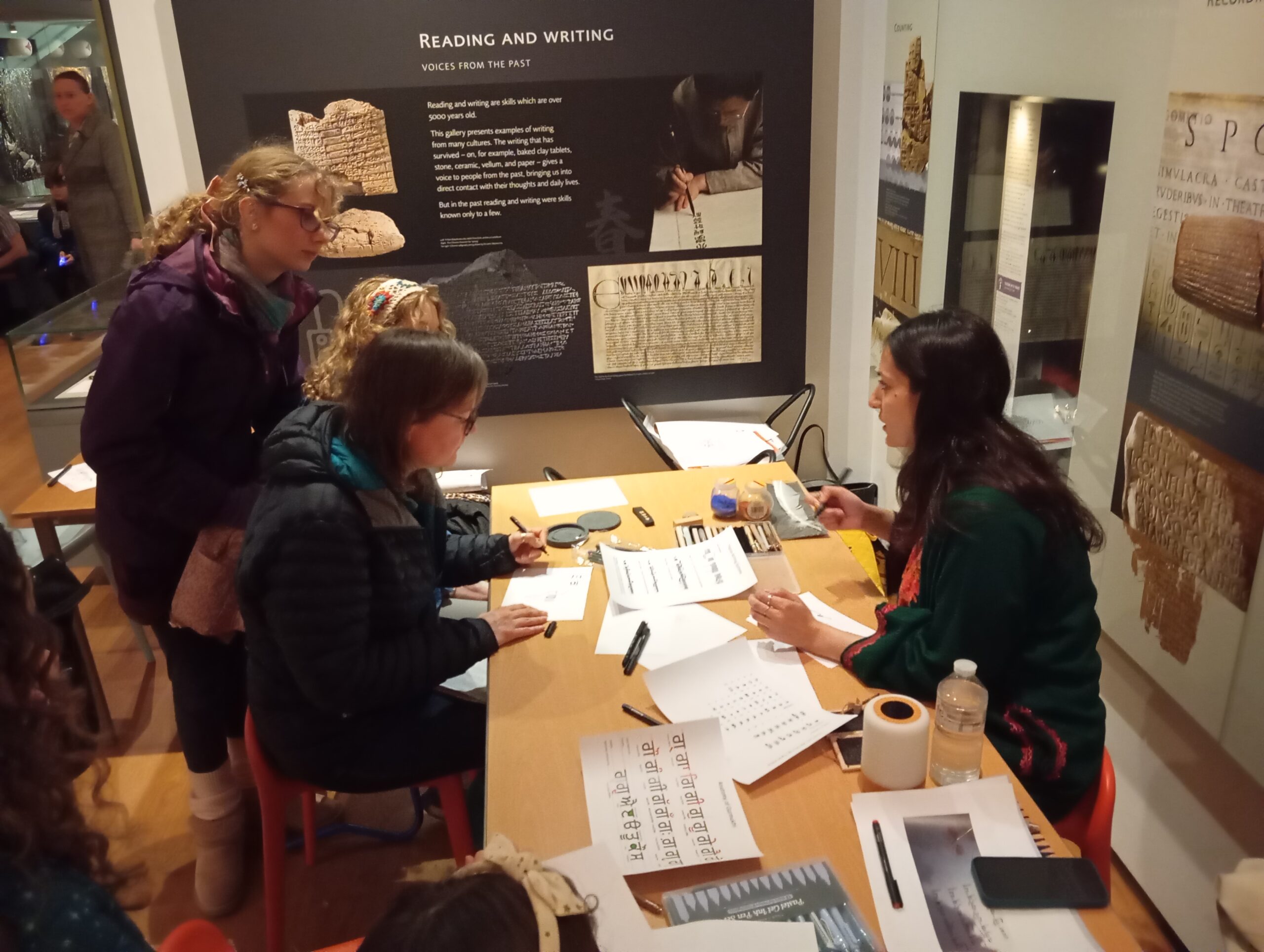
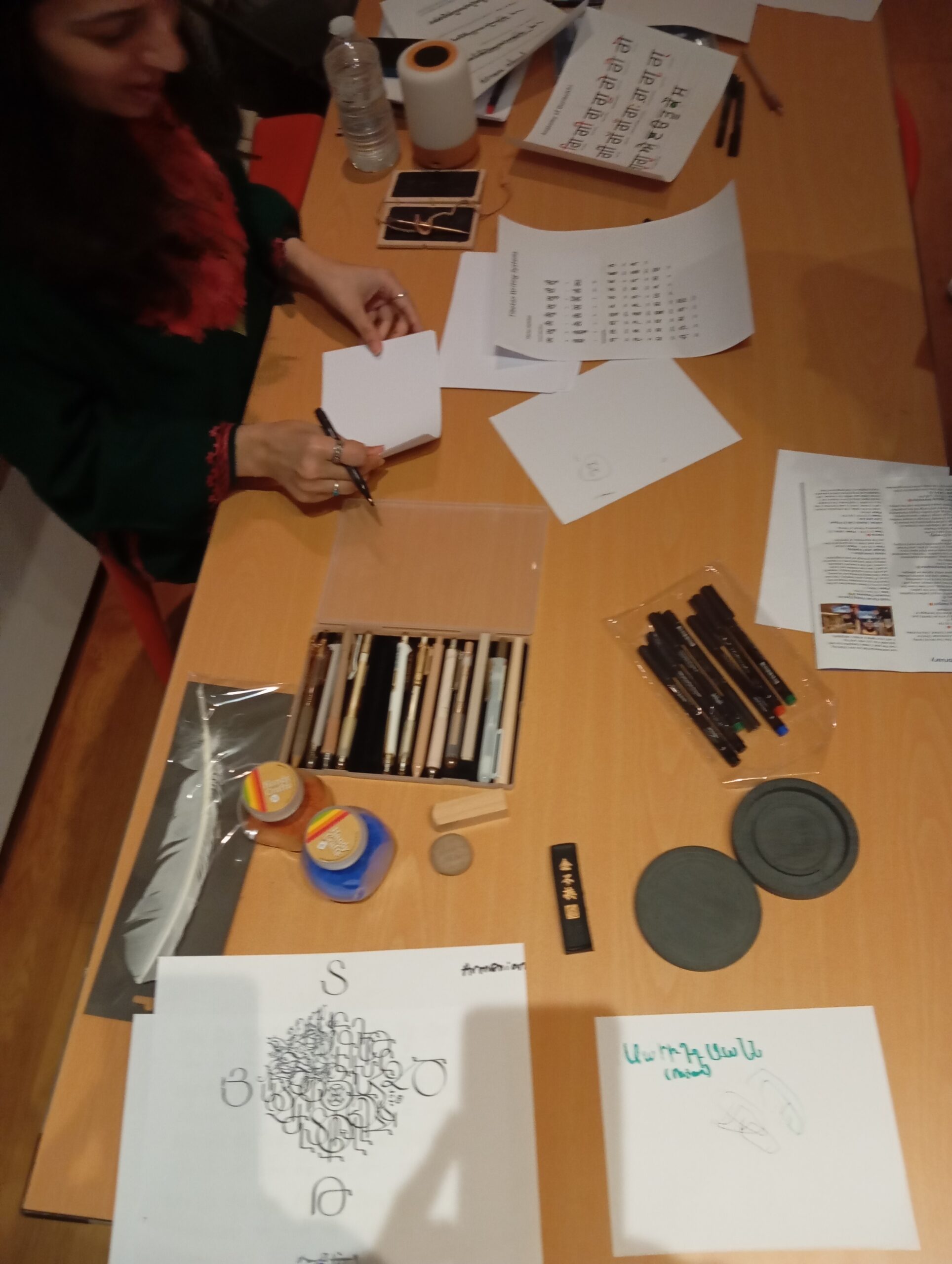
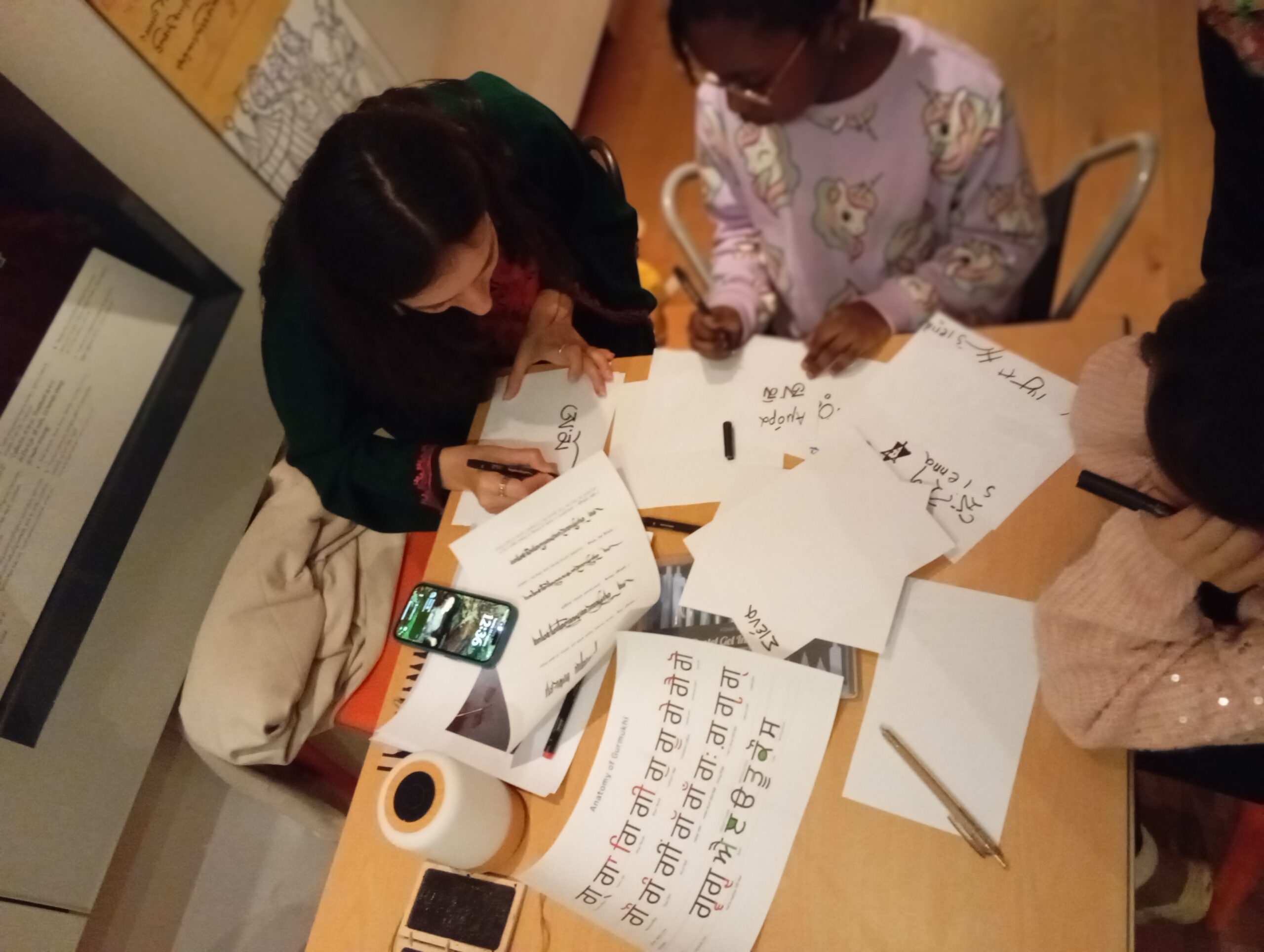
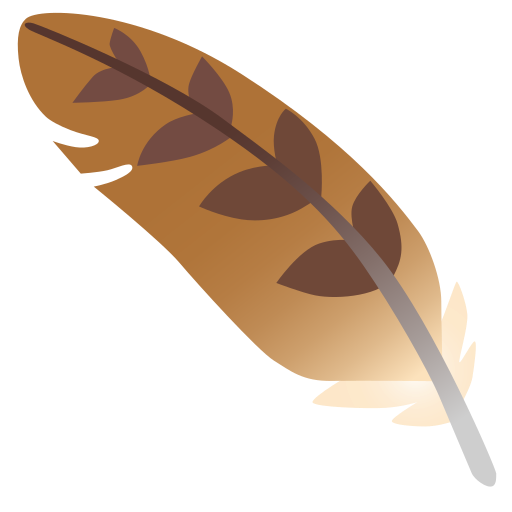
Professor Kate Crosby
and Her Students Presented the Pali Scripts
Burmese by Dr Pyi Kyaw
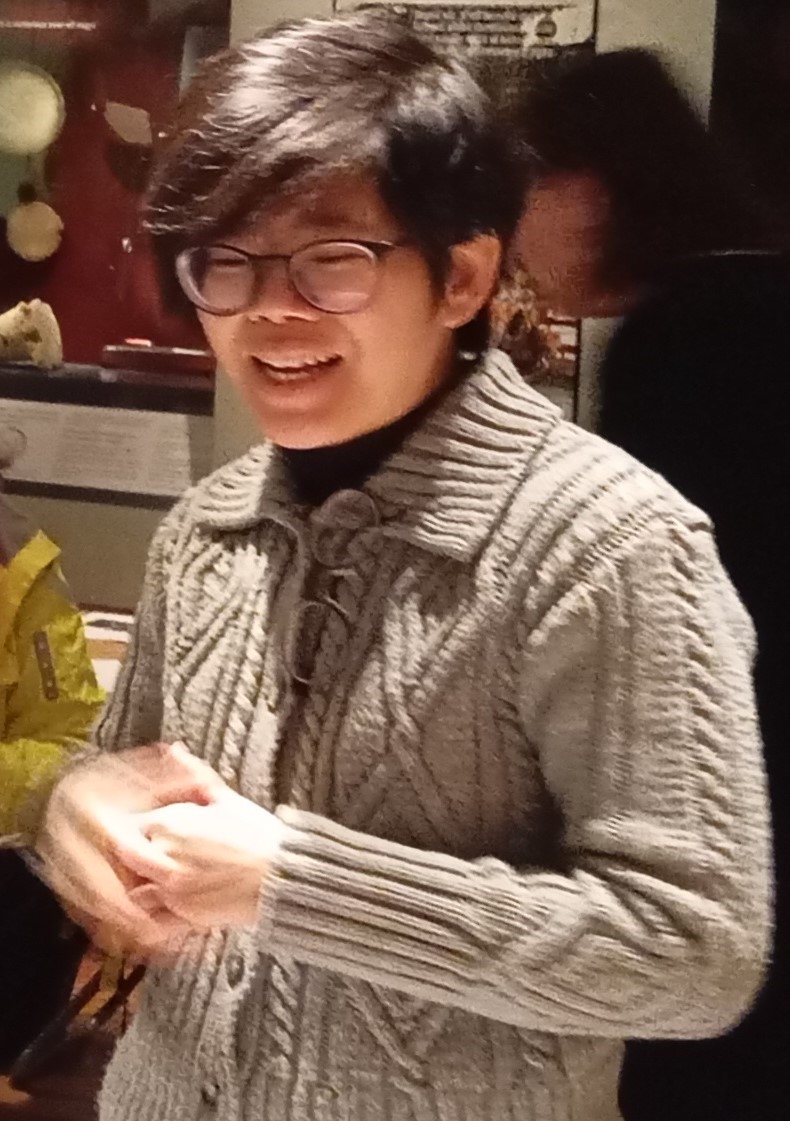

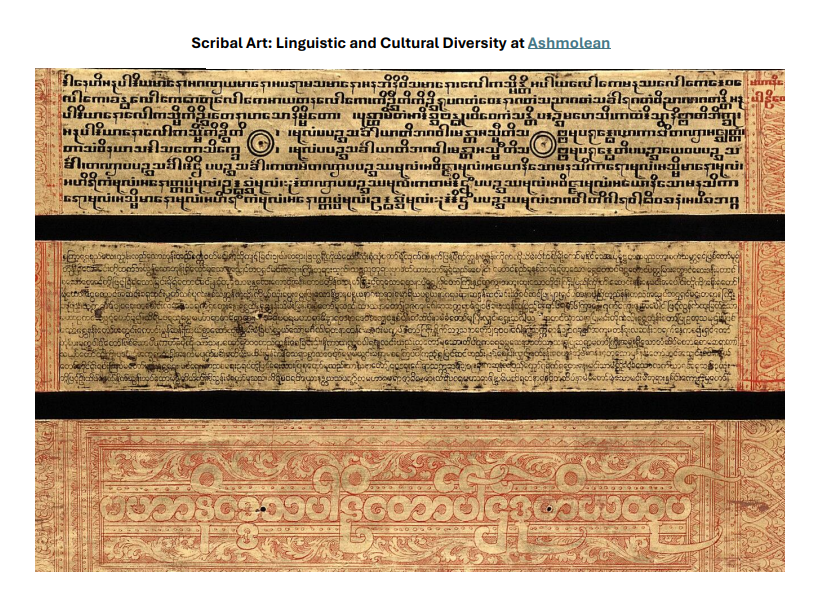
Asamiya by Bikash Bhattacharya
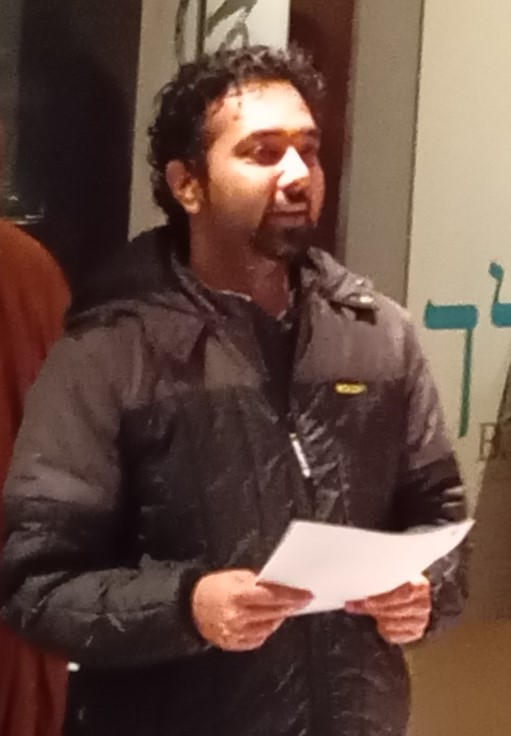
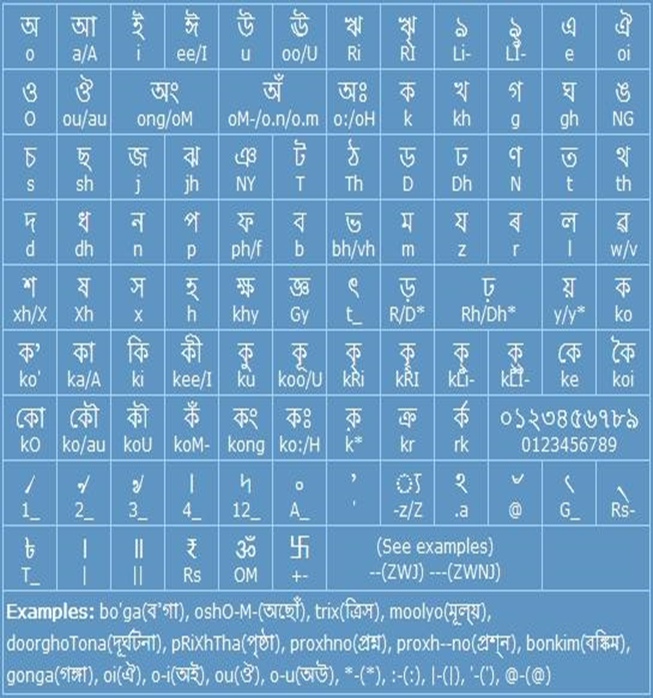
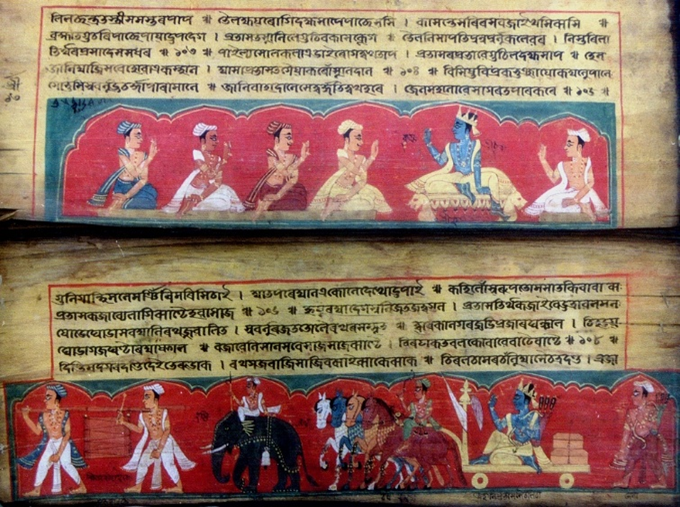
Lanna by Phramaha Sawansung
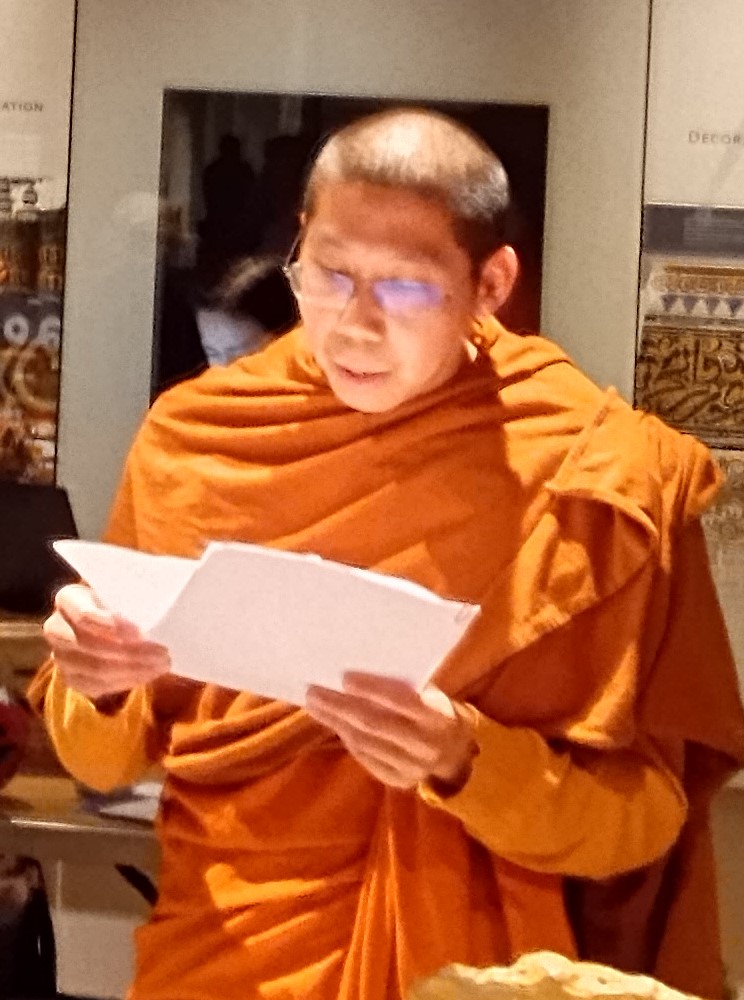
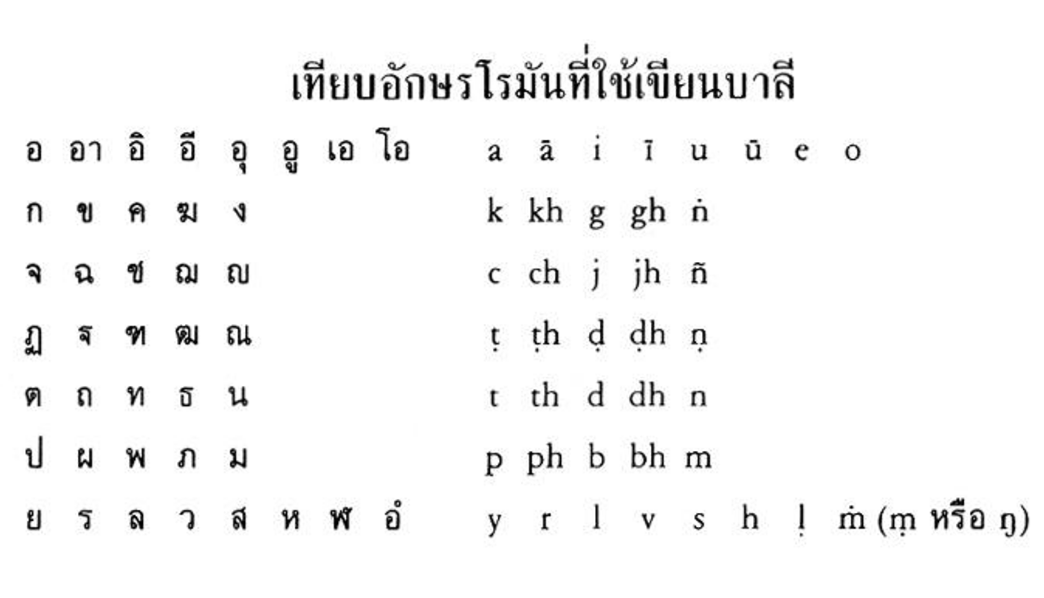

Sinhala by Revd Wadigala Samitharathana
Rev Wadigala Samitharathana, MPhil in Buddhist Studies, shared: I enjoyed taking part in the Scribal Art event organised by the Oxford Interfaith Forum. It was a splendid moment wherein the four corners of the Earth came together. Above all, I experienced the enormous beauty of cross-cultural diversity in linguistics, historical aspects, and aesthetic characteristics thereof. By all means, this workshop opened a window for learning new scripts in the spirit of peace and harmony with one another. I, in effect, learnt that scribal art is a vital phenomenon for developing a sense of togetherness and interconnectedness in society. I would therefore offer my sincere gratitude to Dr Thea Gomelauri and Prof Kate Crosby for organising and collaborating on such a wonderful event filled with intellectual rigour and societal peace.
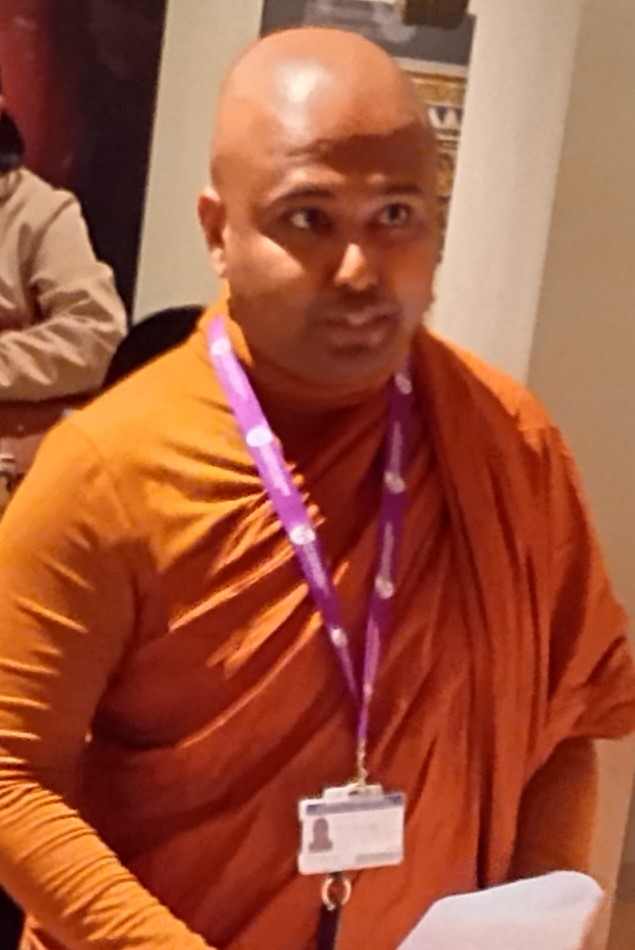
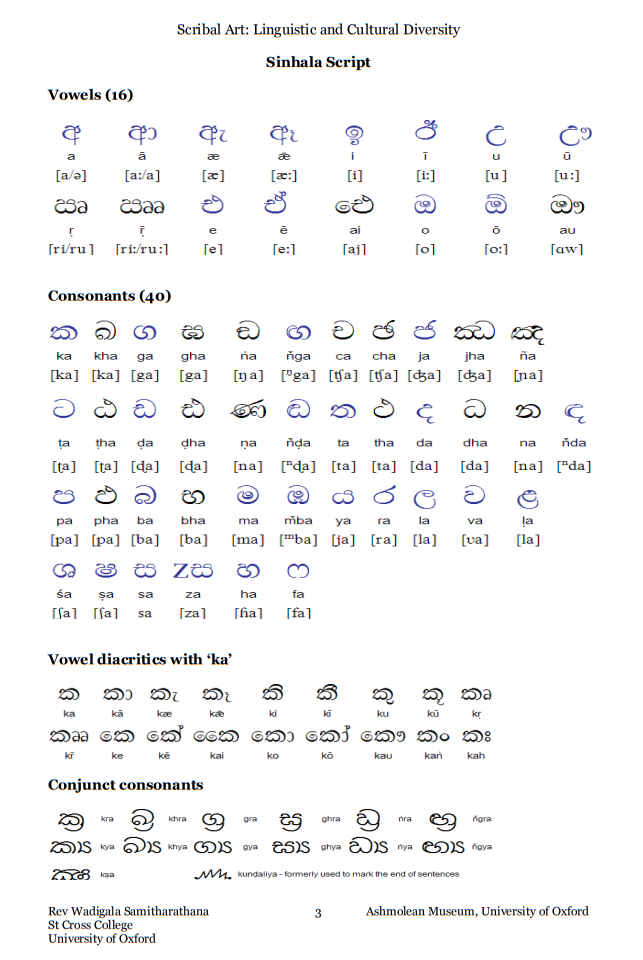

Dai/Shan by Ven Uttamasaralankara
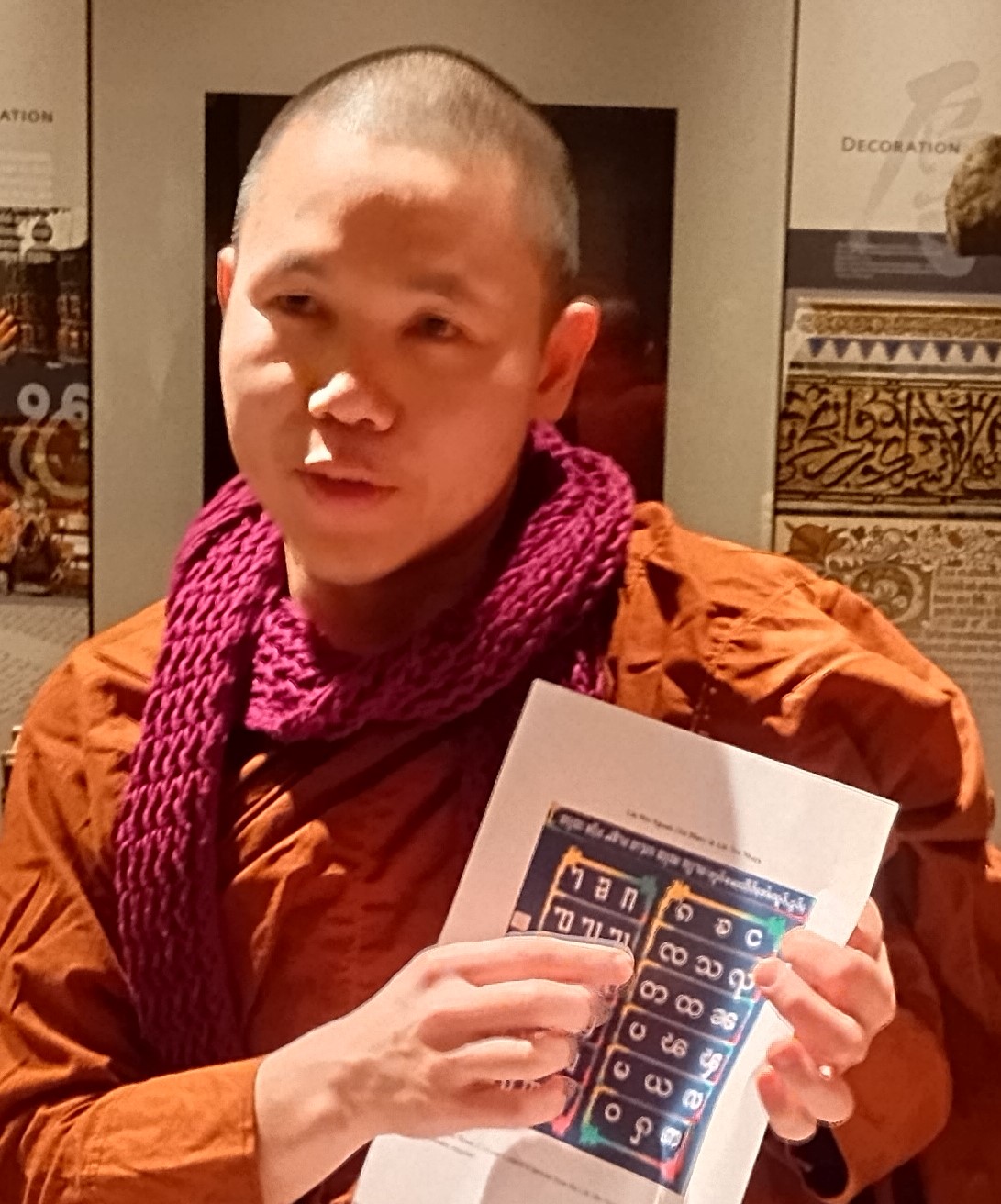
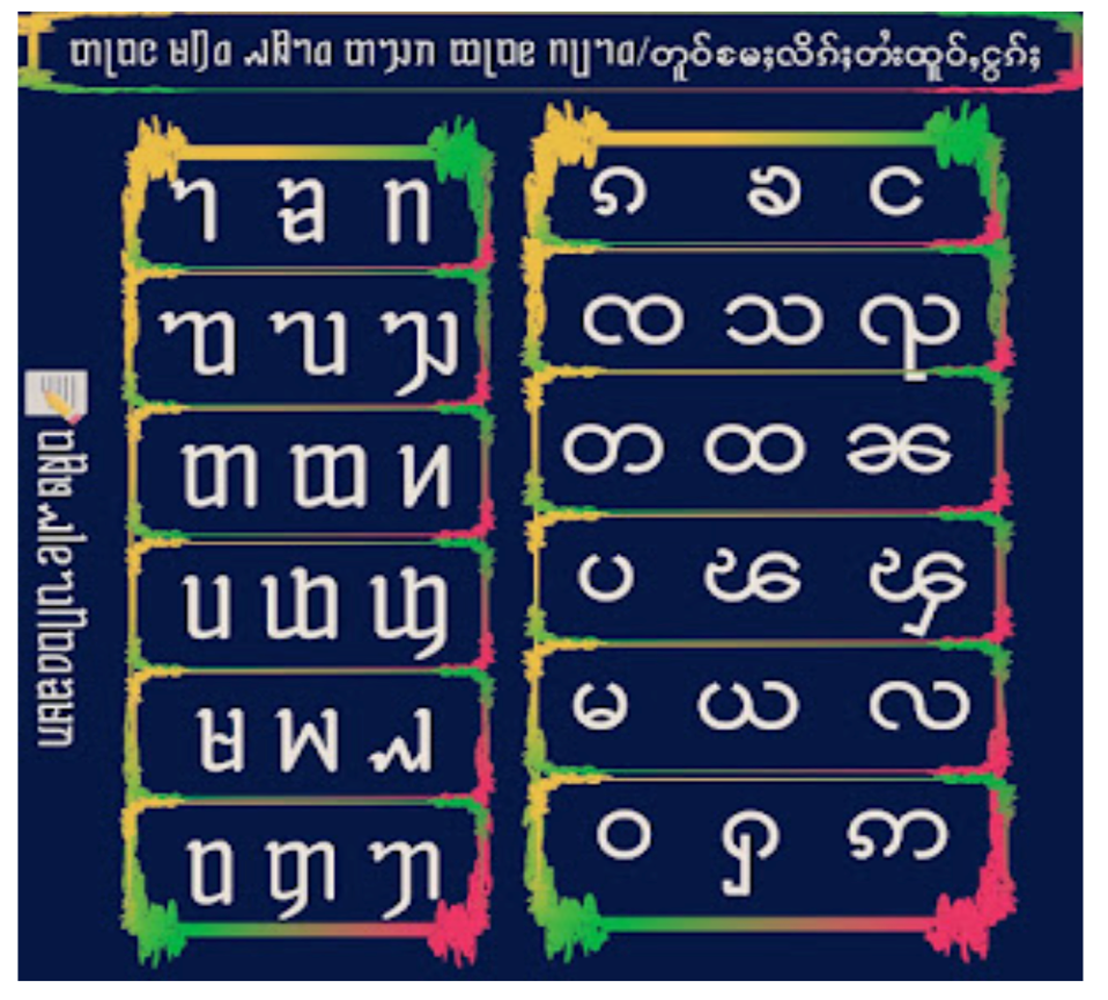
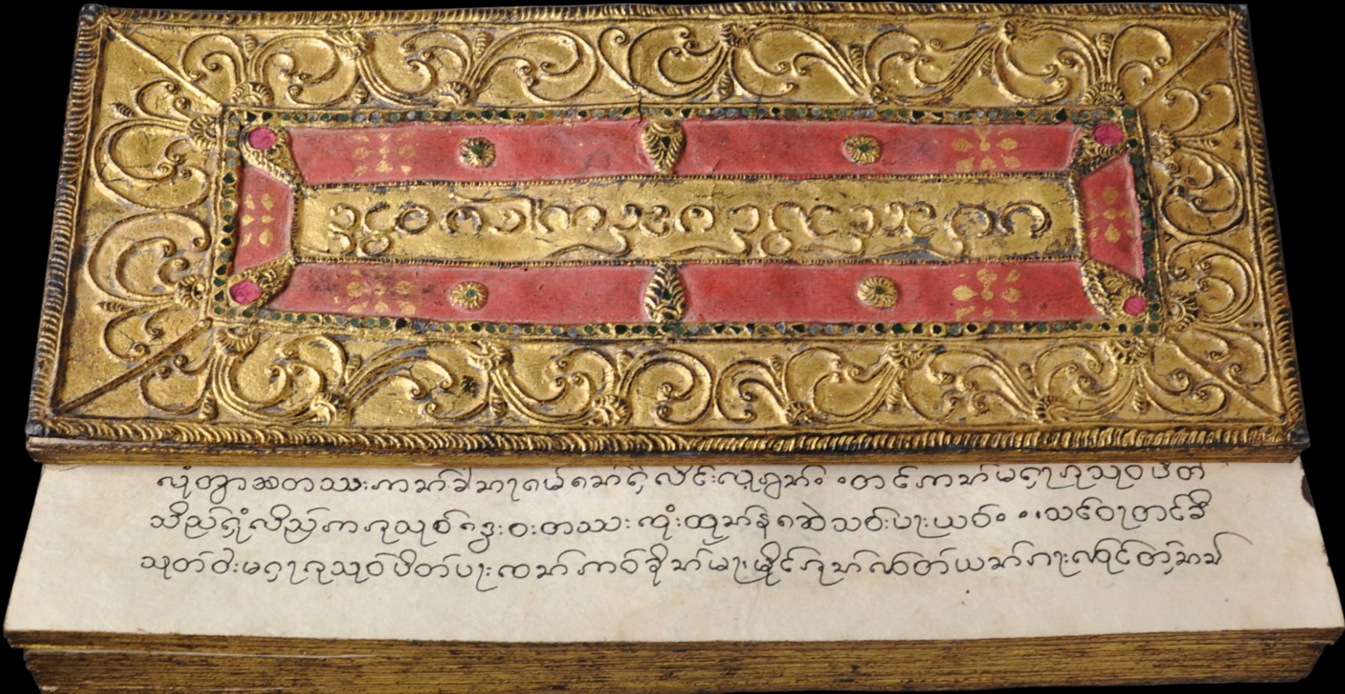
The Presentation of the Sinhala Manuscript
Revd Wadigala Samitharathana presented the Saddhammappakāsinī (The Illustrator of the Truth) manuscript (see below), which is a commentary on the Paṭisambhidāmagga (The Path of Analytical Discernment) in the Pāli canon. It is attributed to the great commentator, Mahānāma, who lived in Ceylon, aka Sri Lanka, during the reigns of King Moggallāna and his son Kumara Dhātusena (515-524 CE). The treatise has extensively cited in the encyclopedic commentary on Buddhist meditation in Theravāda Buddhism, the Visuddhimagga (The Path of Purification). The author is the foremost commentator of Southern Buddhism, Bhadantācariya Buddhaghosa, who lived in Ceylon during the sixth century CE. The manuscript is vitally important in classical textual scholarship across all schools of Buddhism. Concerning the manuscript’s content, the commentary scrutinises the higher doctrinal topics (ābhidhammika-mātikas) such as knowledge, views, faculties, liberation, destinations, paths, etc. The exegesis hence sheds light on other vivid analyses on the fundamental nature of reality, as expounded in the Pāli canonical literature. This manuscript has not been translated into English, and has not been studied rigorously in contemporary scholarship yet. I intend to work on this exegetical work for my MPhil thesis. I am working on an annotated translation with critical notes, as a customary classical Western approach to early commentarial literature in Sri Lanka. I demonstrated that the Pāli script has been written in Sinhala over the past centuries; therein lies a close-knit linguistic bond between Pāli and Sinhala. Whilst it flourishes amongst the Modern Indo-Aryan languages, Sinhala has inherited a prolonged written history of over two thousand years, along with the Pāli language and its vast canonical literature, affiliated to Theravāda Buddhism. Thus, the Sinhala scribal art played a crucial role in the preservation of classical Pāli scholarship in Sri Lanka.
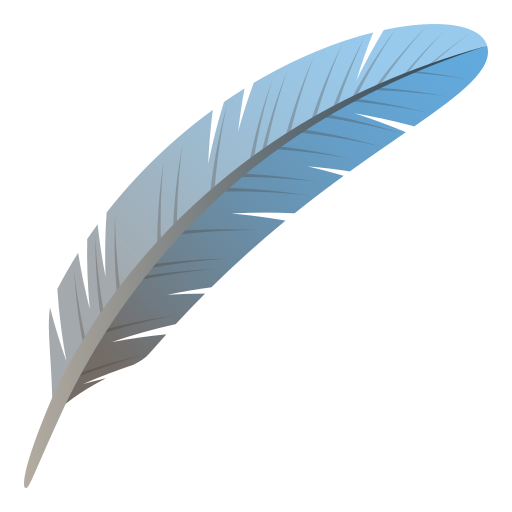
Dr Thea Gomelauri Presented Georgian Scripts (Asomtavruli, Nuskhuri, Mkhedruli), Slavonic Kirilitsa, and Hebrew Micrography Artwork by Debra Band
Dr Gomelauri shared: The Scribal Art was amazingly popular for visitors of all ages. I was surprised to see a queue after all the seats were taken! Watching parents engaged in scribal activities with their children was a rewarding experience. Our colleagues, alongside their students, offered bite-sized tasters of sixteen scripts and alphabets promoting a creative multilingualism. We will be back. Watch the space – Writing and Reading Gallery – in the next year.
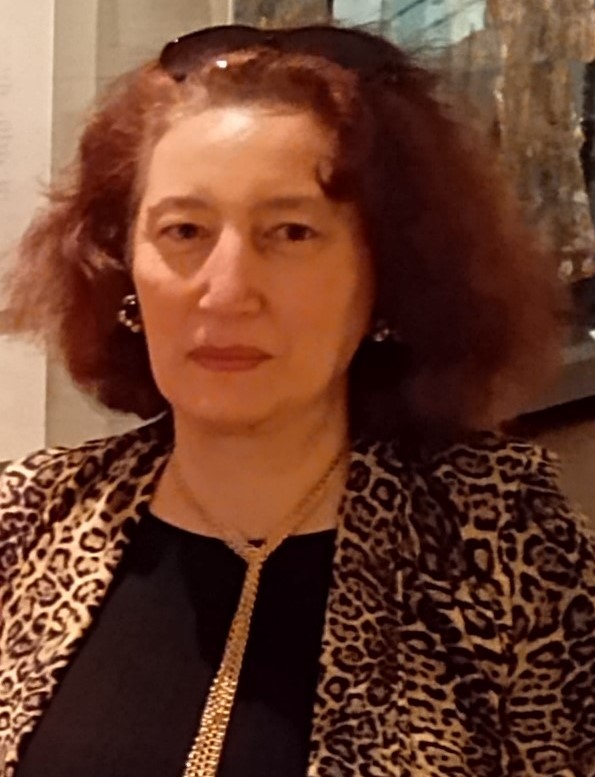
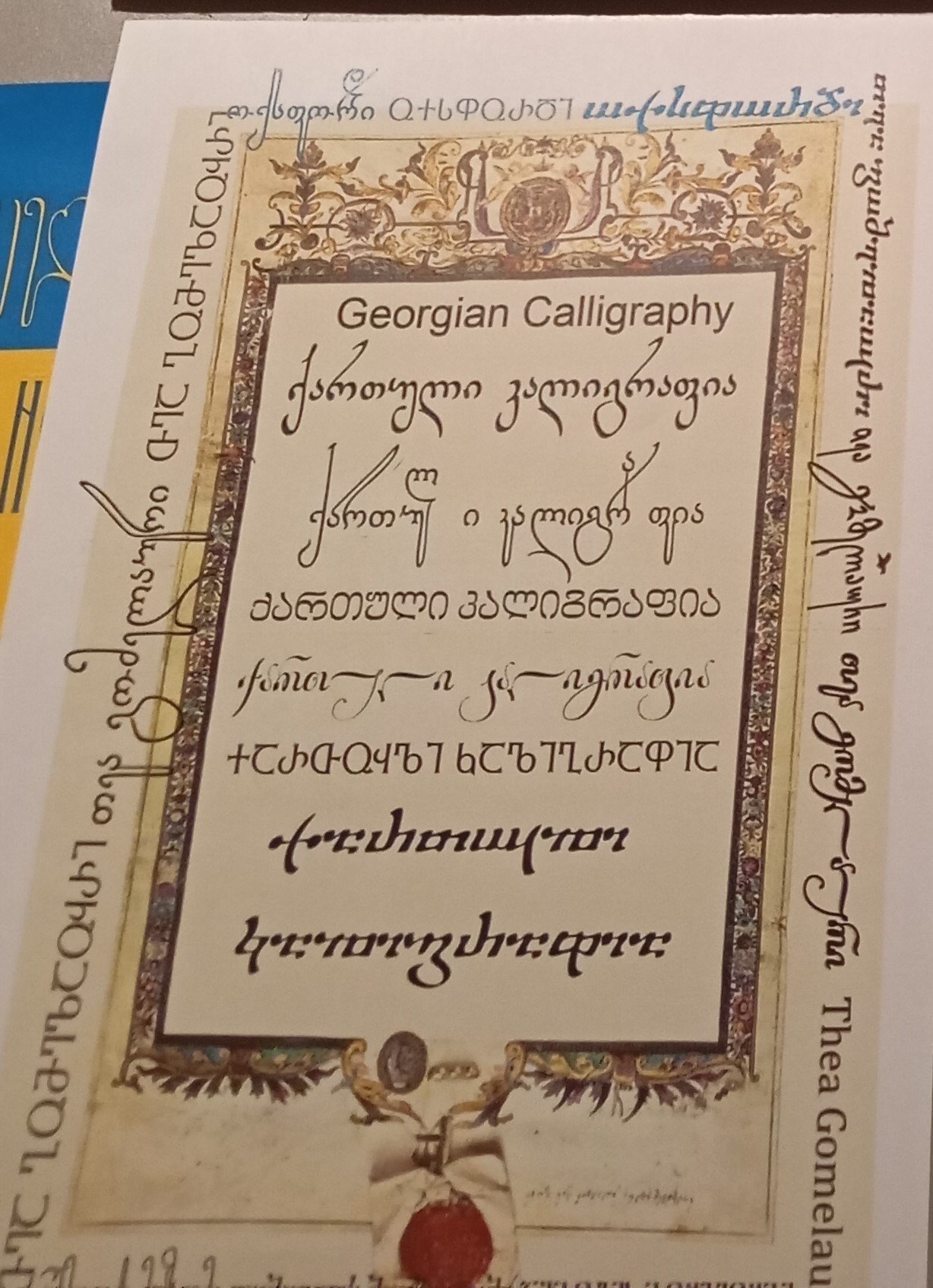
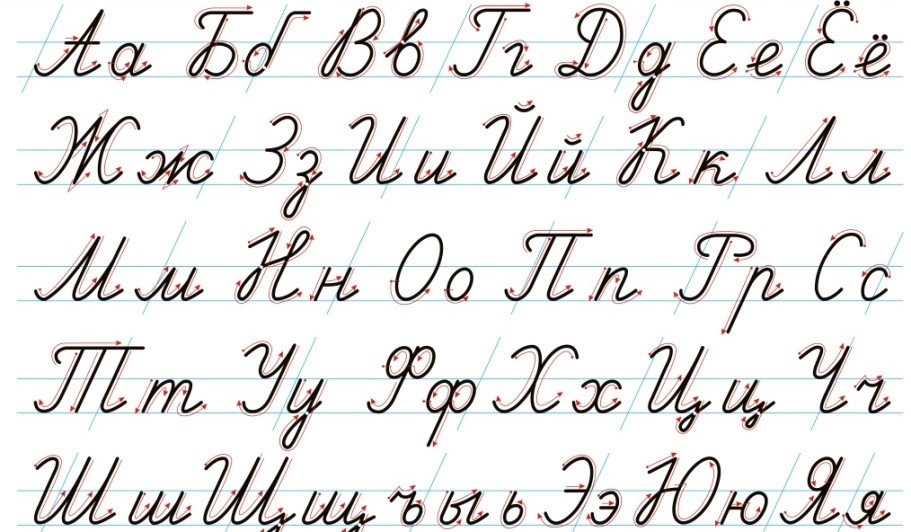
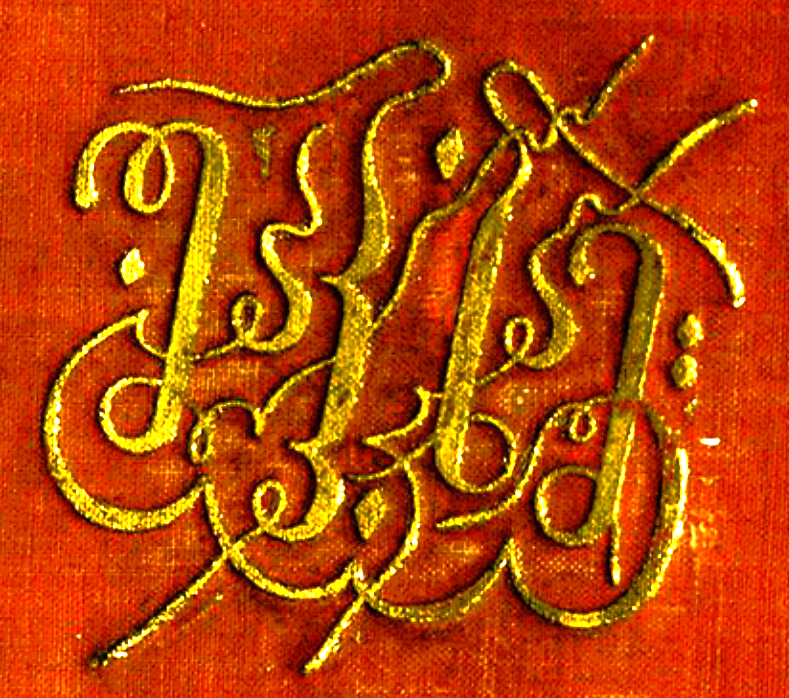
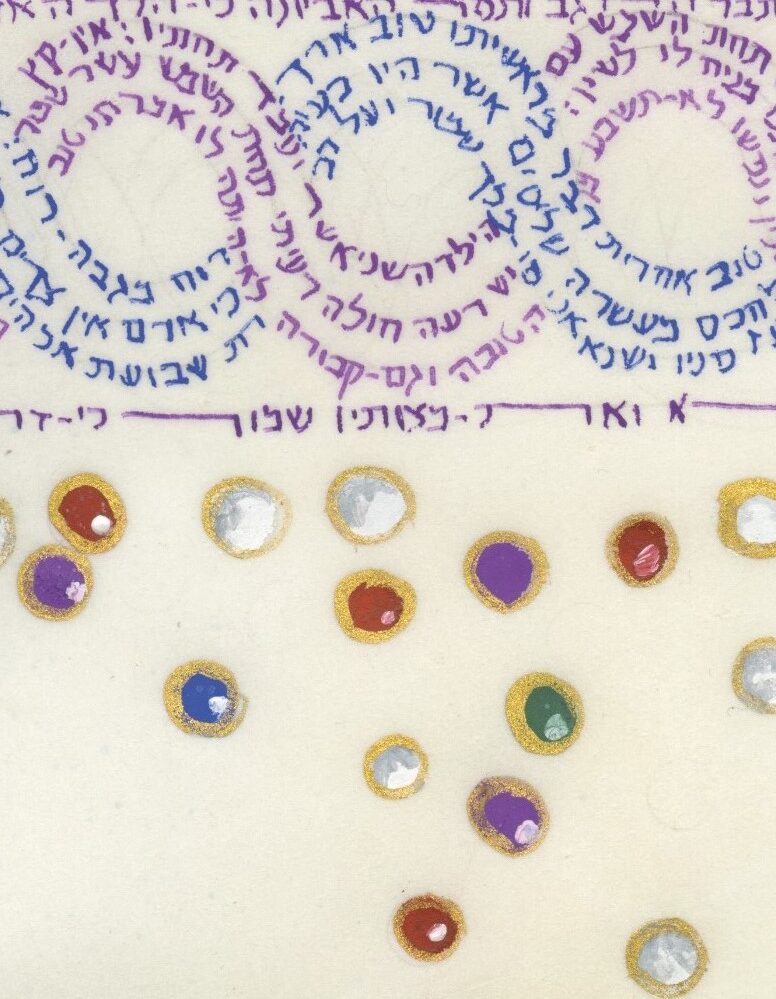



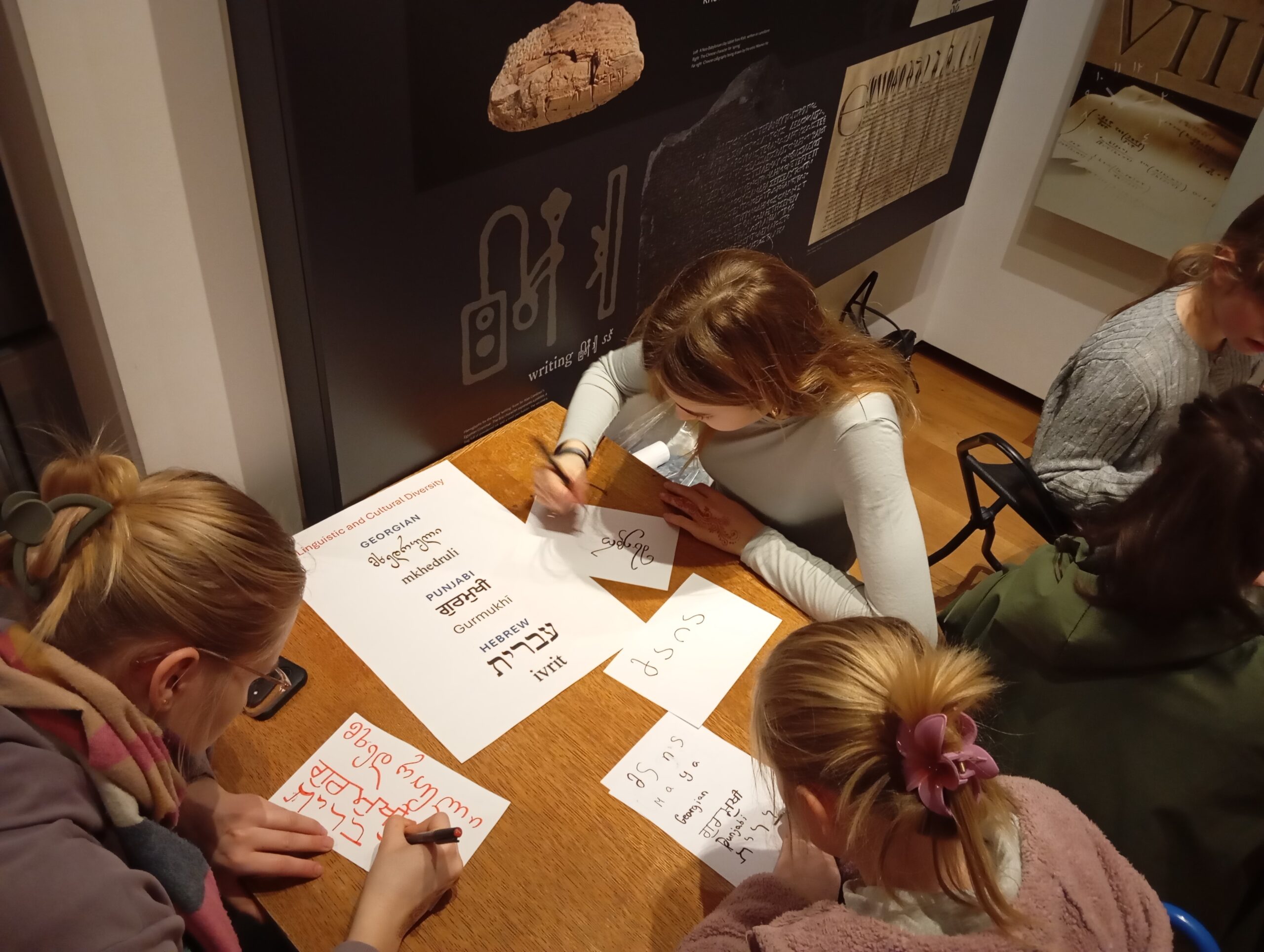
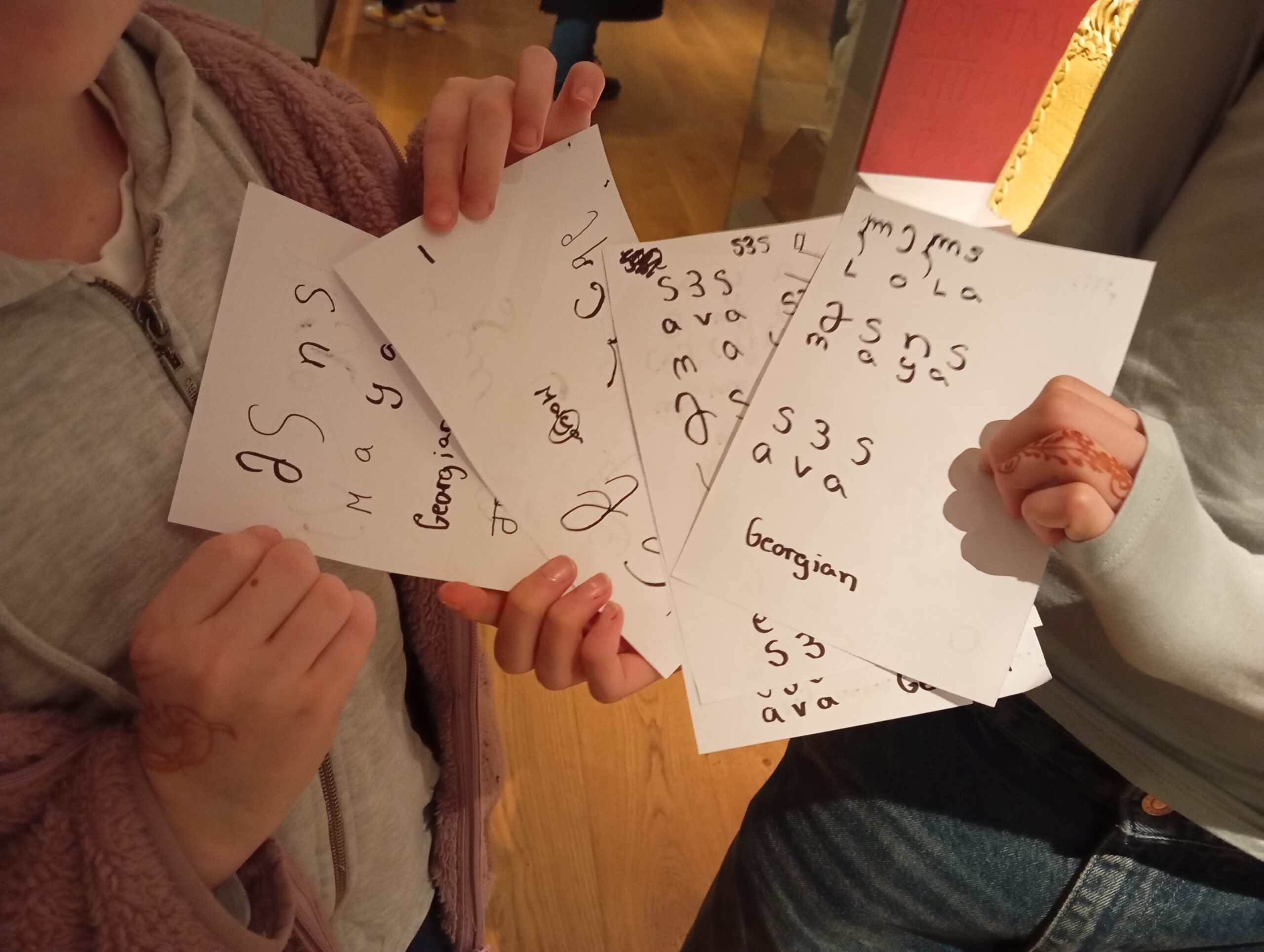
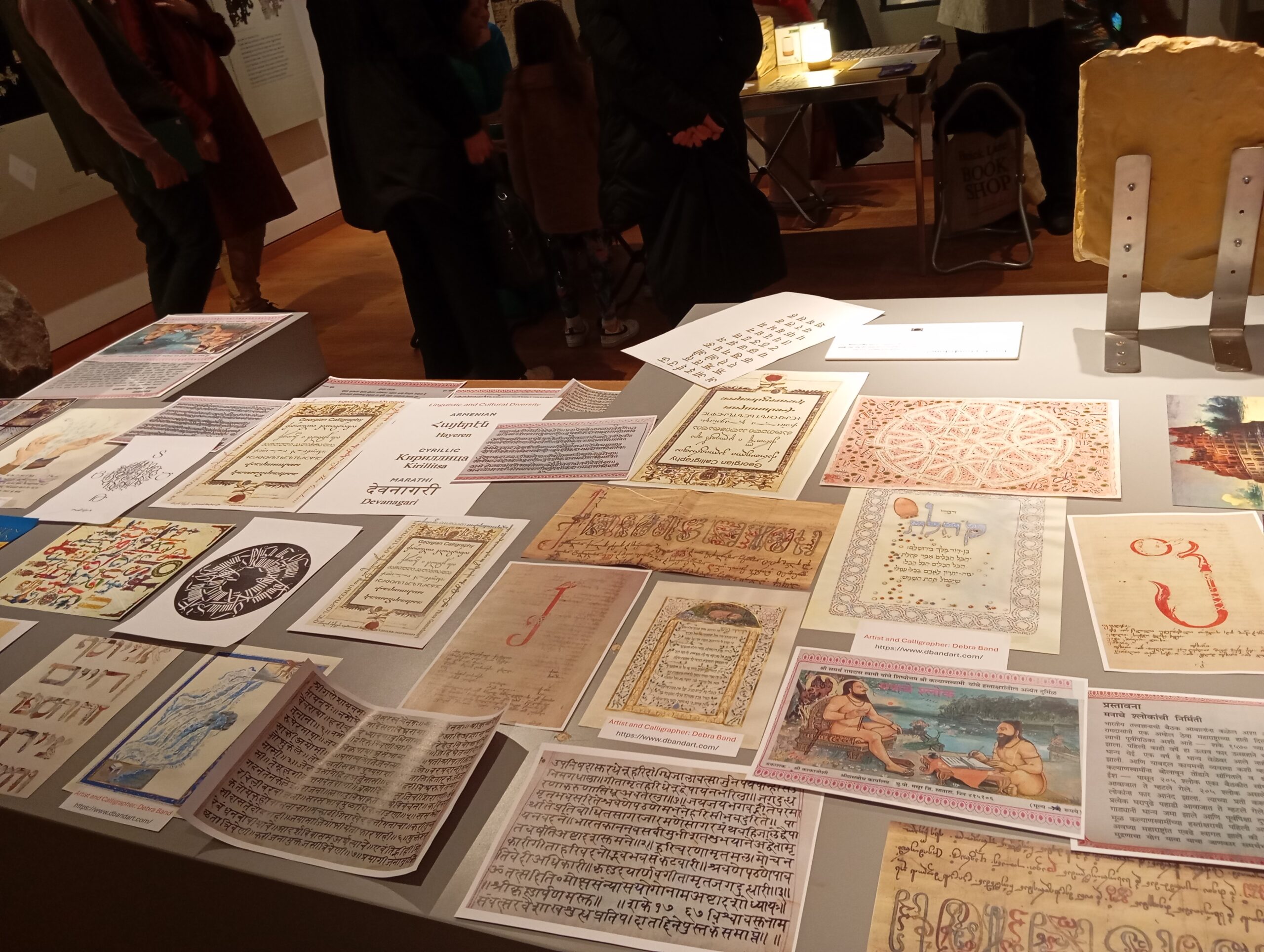
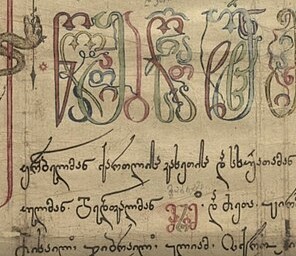
The Scribal Art Photo Gallery
